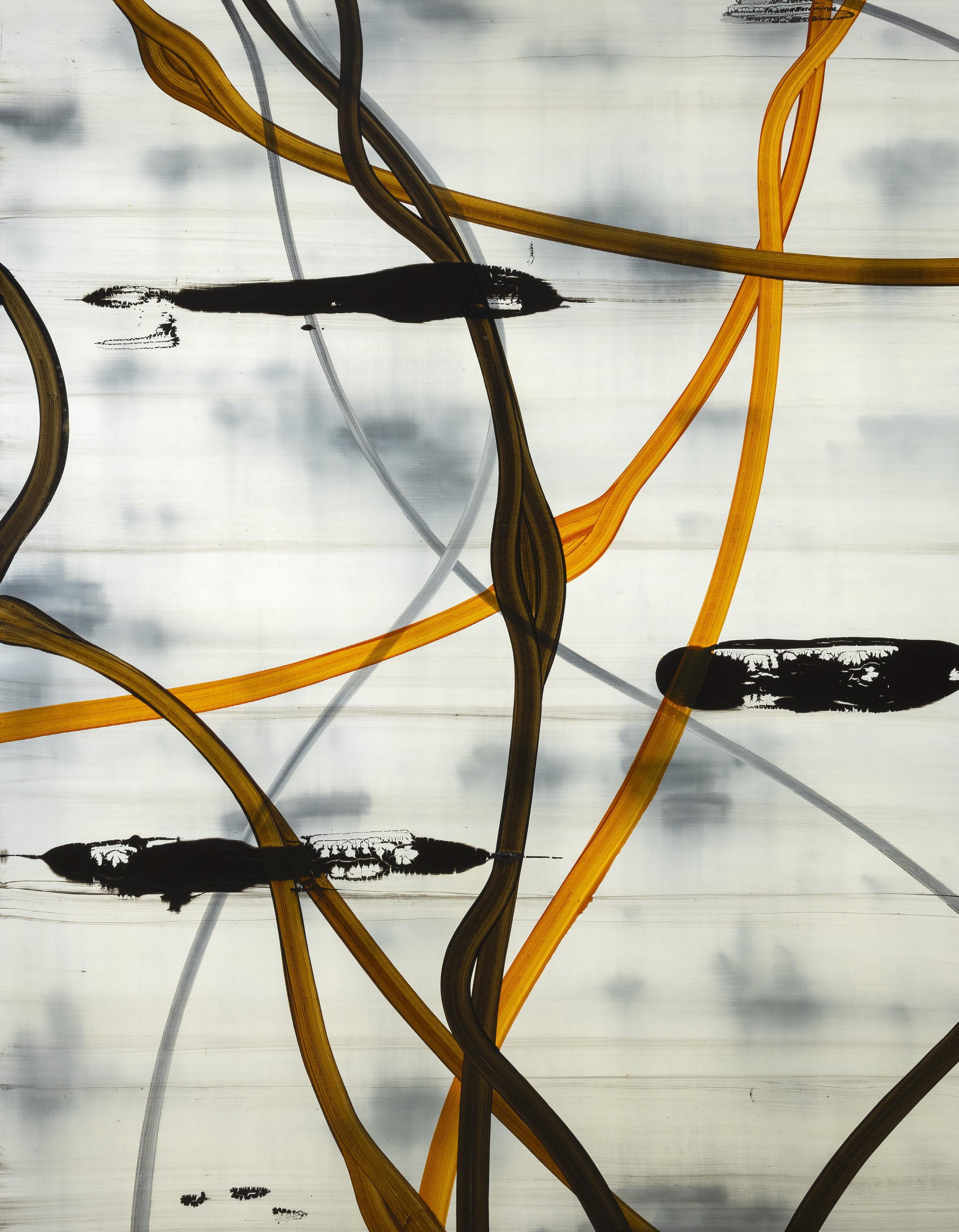
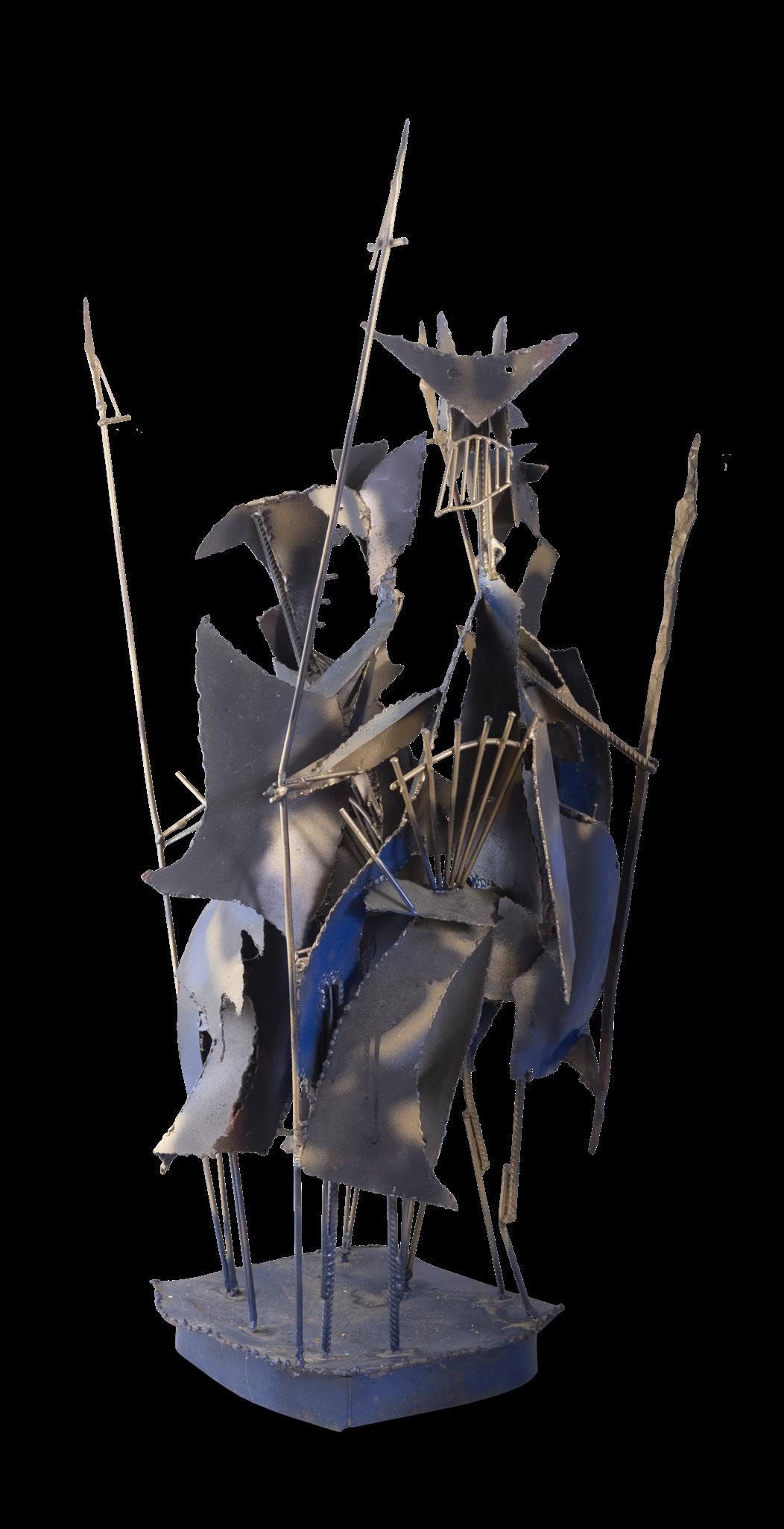
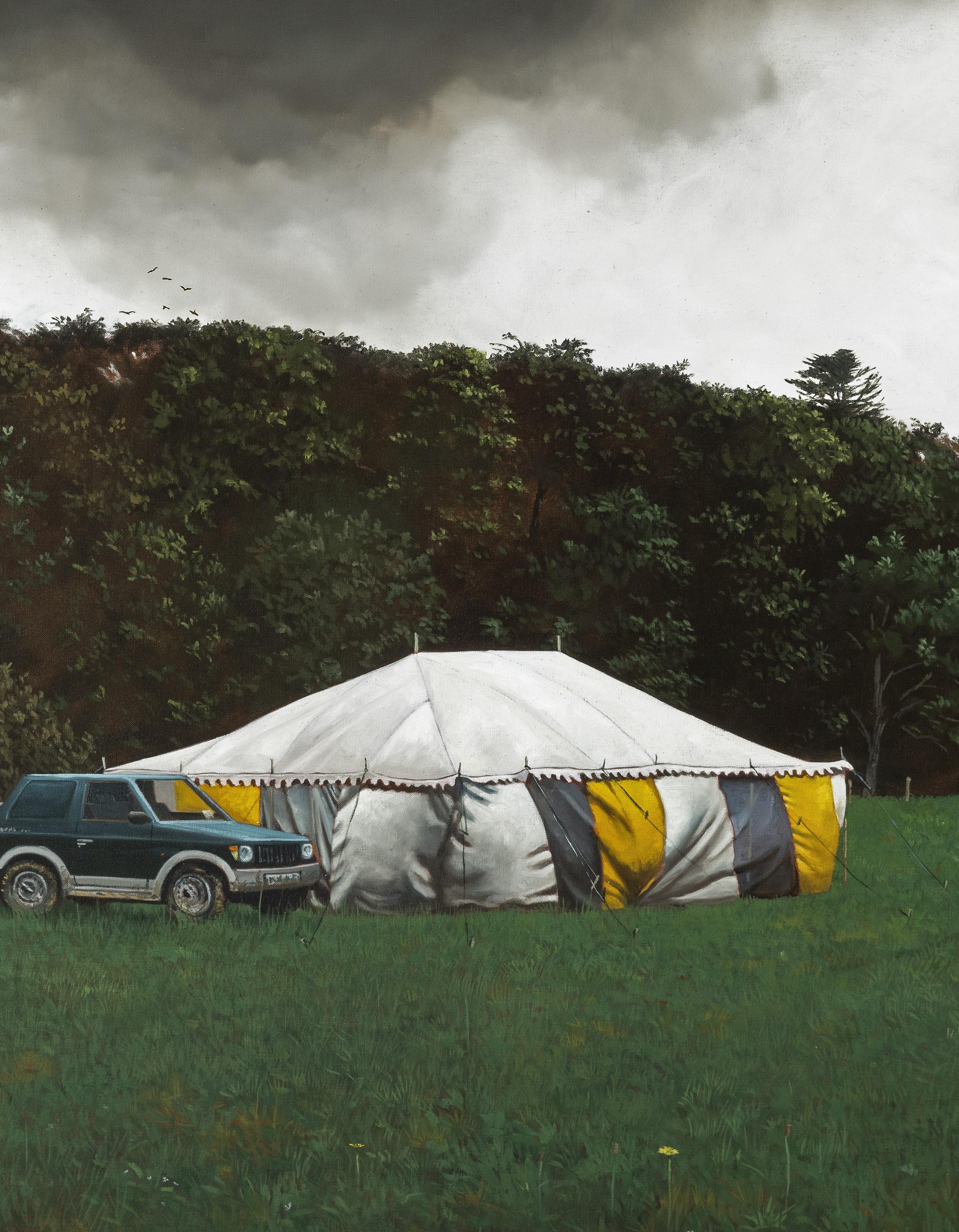
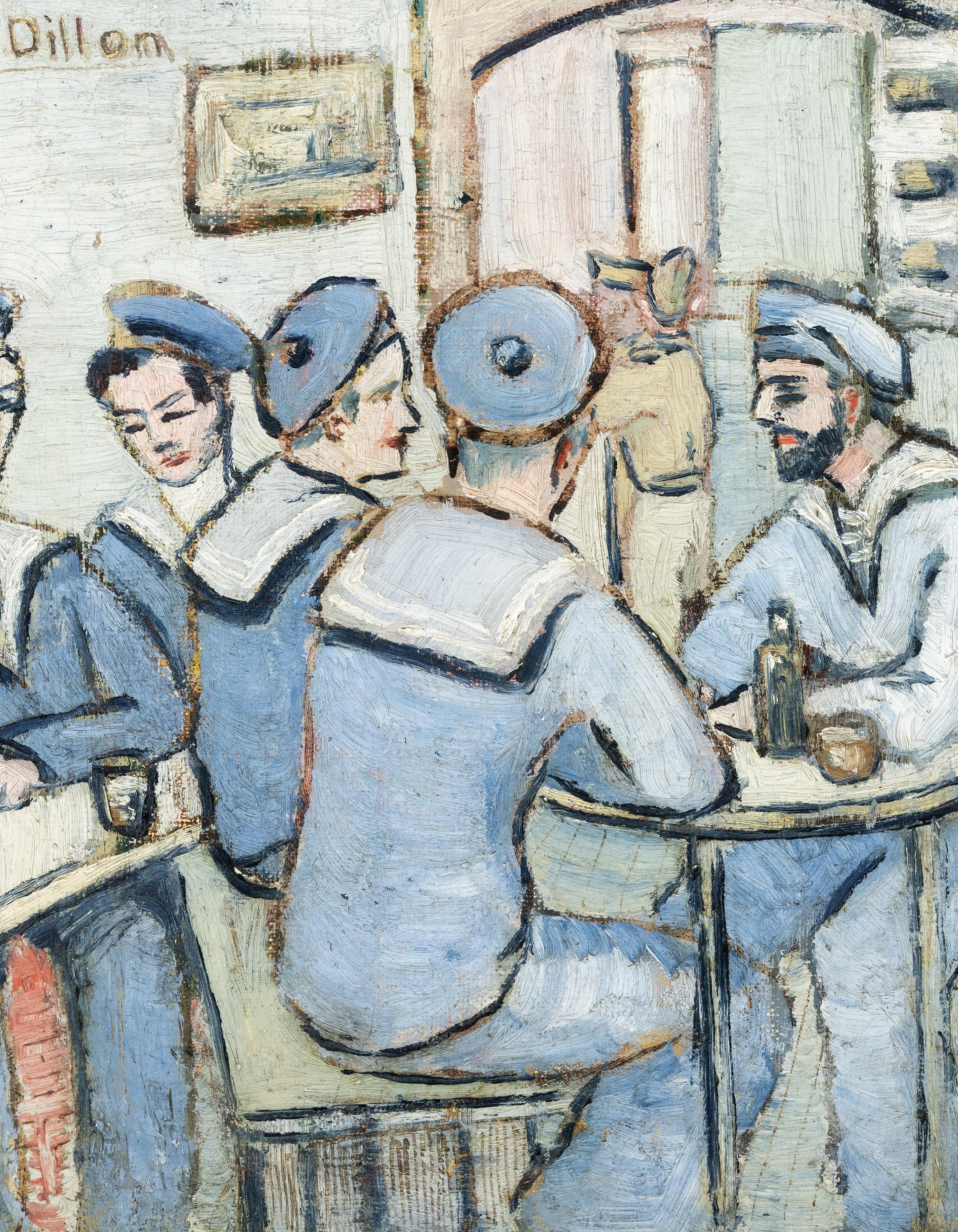






James O’Halloran BA FSCSI FRICS DIRECTOR j.ohalloran@adams.ie

Stuart Cole MSCSI MRICS MANAGING DIRECTOR s.cole@adams.ie

Nicholas Gore Grimes DIRECTOR nicholas@adams.ie

Amy McNamara BA MA ASSOCIATE DIRECTOR amymcnamara@adams.ie
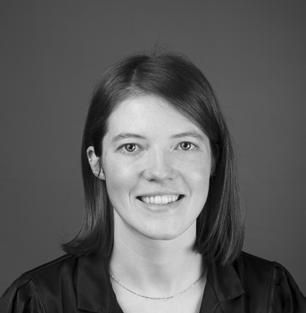
Niamh Corcoran BA FINE ART DEPARTMENT niamh@adams.ie

Adam Pearson BA SALEROOM CURATOR a.pearson@adams.ie

Ronan Flanagan HDip WAREHOUSE MANAGER r.flanagan@adams.ie

Eamon O’Connor BA FINANCIAL DIRECTOR e.oconnor@adams.ie

AUCTION
Wednesday 28th May 2025 at 6.00pm
26 St. Stephen’s Green, Dublin 2. Ireland , D02 X665 +353 (01)6760261 adams.ie FOLLOW US @Adams1887 #Adams.Auctioneers
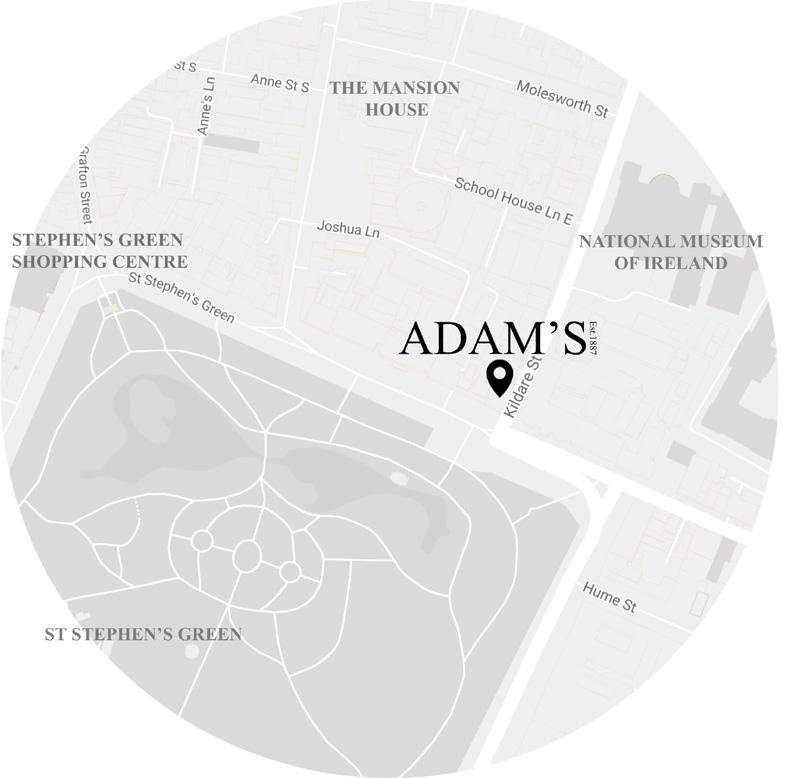
ALL AUCTION VIEWINGS ARE FREE AND OPEN TO THE PUBLIC
Friday 23rd May 10.00am–5:00pm
Saturday 24th May 2.00pm– 5.00pm
Sunday 25th May 2.00pm – 5.00pm
Monday 26th May 10.00am–5:00pm
Tuesday 27th May 10.00am–5:00pm
Wednesday 28th May 10.00am–4:00pm
Please refer to the Buying At Auction section in this catalogue, or adams.ie for further details on bidding in this auction, including absentee bidding.

26 St. Stephen’s Green, Dublin 2. Ireland +353 1 676 0261 info@adams.ie | www.adams.ie
Go to www.adams.ie. Choose the auction you wish to view from the Auctions/Forthcoming auctions menu, and you will be offered a range of ways to view. You may choose to view a digital version of the printed catalogue in the view e catalogue option or explore the virtual 3D option which allows you explore the saleroom with easy to navigate options or view the list view which opens automatically. This last option provides additional information and photographs of each lot as you choose the View Details button. Lastly, and only during office hours, there is a live chat button onscreen. If at any time you have a question whilst you are online, you can open a live chat and one our staff can help you.
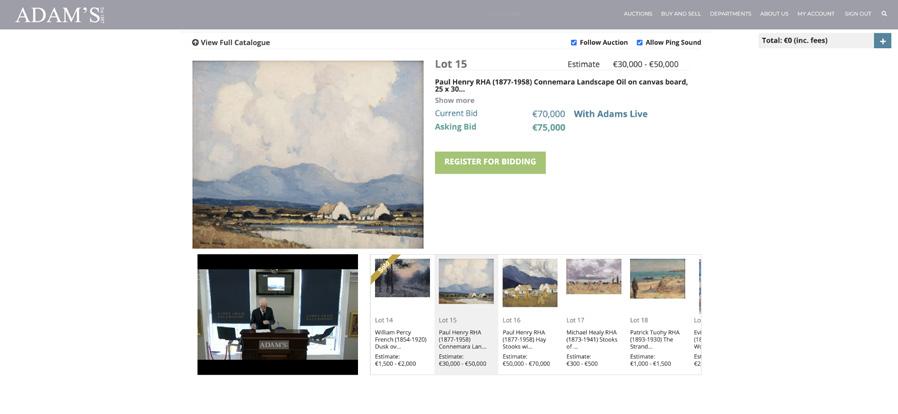
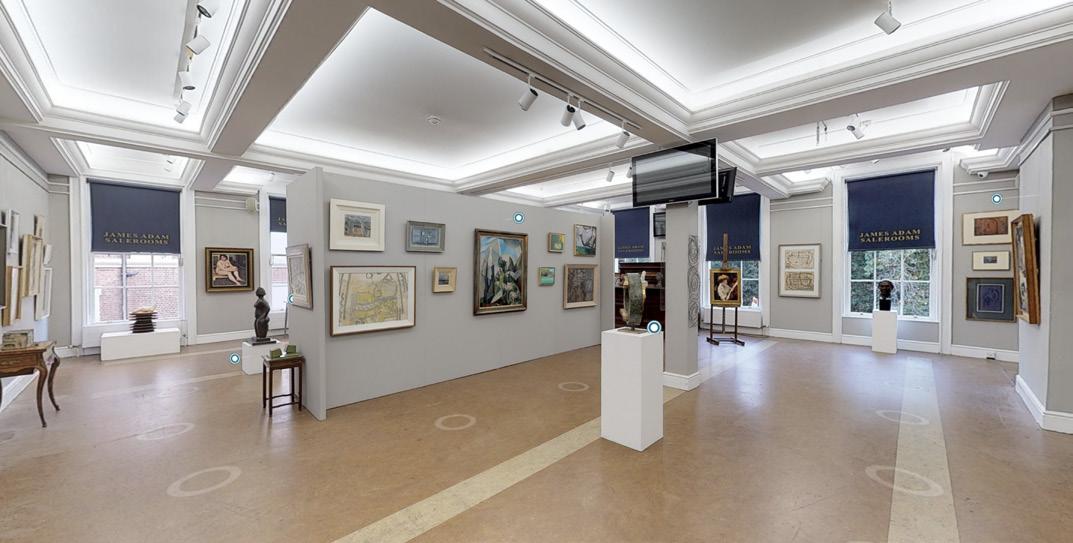
Log on to our web site www.adams.ie and create an account by signing up and registering your particulars online. The process involves supplying valid credit card information. This is a once off request for security purposes, and once the account is activated you will not be asked for this information again. The card information supplied is securely stored by Sage Pay. You can leave absentee bids online, and add, edit or amend bids accordingly as well as bidding over the internet in real time through ‘Adam’s Live’. You can also view your invoices, bid history, wish lists & other useful functions including paying your invoice and creating you very own personalised catalogue with search tags that will notify you once a catalogue is uploaded for your key word search.
We are delighted to advise that our own on-line bidding platform, Adam’s Live, is now fully operational for those who wish to bid online and watch the auction as it happens.
On the Live platform you can arrange to bid as the auction is taking place or at any time leave comission bids and the Adam’s Live platform will bid on your behalf.
Bidding through this portal will attract no additional internet surcharge for lots purchased so in effect those bidders will pay the same as a room bidder. Online bidding through the-saleroom.com and invaluable.com remains unaffected.
Sign up today for your own My Adam’s account and start saving on your on-line purchases.
These are shown below each lot in this sale. All amounts shown are in Euro. The figures shown are provided merely as a guide to prospective purchasers. They are approximate prices which are expected, are not definitive and are subject to revision. Reserves, if any, will not be any higher than the lower estimate.
All purchases must be paid for no later than Friday 30th May 2025. Please contact a member of staff to arrange collection/delivery of your purchases. Auctioneers commission on purchases is charged at the rate of 25% (inclusive of VAT). Terms: Bank Transfer, Debit or Credit Card via our payments processor STRIPE. Non EU card types will be subject to an additional 2% of the invoice total. We accept cash to a maximum of €10,000 per person in any 3-month period. Bank transfer details are displayed in your invoice communications from Adam’s or are available on request. For payments by bank transfer please ensure all bank charges are paid in addition to the invoice total, in order to avoid delays in the release of purchases. Goods will only be released upon clearance through the bank of all monies due.
All lots are sold within the auctioneers VAT margin scheme. Revenue regulations require that the buyer’s premium must be invoiced at a rate which is inclusive of VAT. This is not recoverable by any VAT registered buyer.
Lots marked * are to be sold whilst subject to Temporary Admission (Import) regulations. For purchasers based in the Republic of Ireland - the hammer price will be subject to import VAT at the reduced rate, currently 13.5%, and the Buyer’s Premium will be subject to VAT at the standard rate, currently 23%. For purchasers outside of the Republic of Ireland, please contact our Accounts Department for further details.
It is up to the bidder to satisfy themselves prior to buying as to the condition of a lot. In relation to Condition Reports, whilst we make certain observations on the lot, which are intended to be as helpful as possible, references in the condition report to damage or restoration are for guidance. The absence of such a reference does not imply that an item is free from defects or restoration, nor does a reference to particular defects imply the absence of any others. The condition report is an expression of opinion only and must not be treated as a statement of fact. Please ensure that condition report requests are submitted before 12 noon on Tuesday 26th May 2025 as we cannot guarantee that they will be dealt with after this time.
We are happy to execute absentee or written bids for bidders who are unable to attend or bid online themselves and can also arrange for bidding to be conducted by telephone. However, these services are subject to special conditions (see conditions of sale in this catalogue). All arrangements for absentee and telephone bidding must be made before 5pm on the day prior to sale. Bidding by telephone may be booked on all lots. Early booking is advisable as availability of lines cannot be guaranteed.
We would like to acknowledge, with thanks, the assistance of Karen Reihill, Aidan Dunne, Dickon Hall, Jonathan Benington, Julian Campbell and Niamh Corcoran in the preparation of this catalogue.
7.
ALL LOTS ARE BEING SOLD UNDER THE CONDITIONS OF SALE AS PRINTED IN THIS CATALOGUE AND ON DISPLAY IN OUR SALEROOMS AND ON OUR WEBSITE.
Follow Us




adams.auctioneers
Adam’s Auctioneers
@Adams1887
Adams Auctioneers
FOR ONLINE REGISTRATION AND BIDDING GO TO WWW.ADAMS.IE

Sirmoine Steps
Oil on board, 20 x 18cm (8 x 7”)
Signed and dated 2004
Provenance: With The Frederick Gallery, Dublin, label verso
€ 1,000 - 1,500
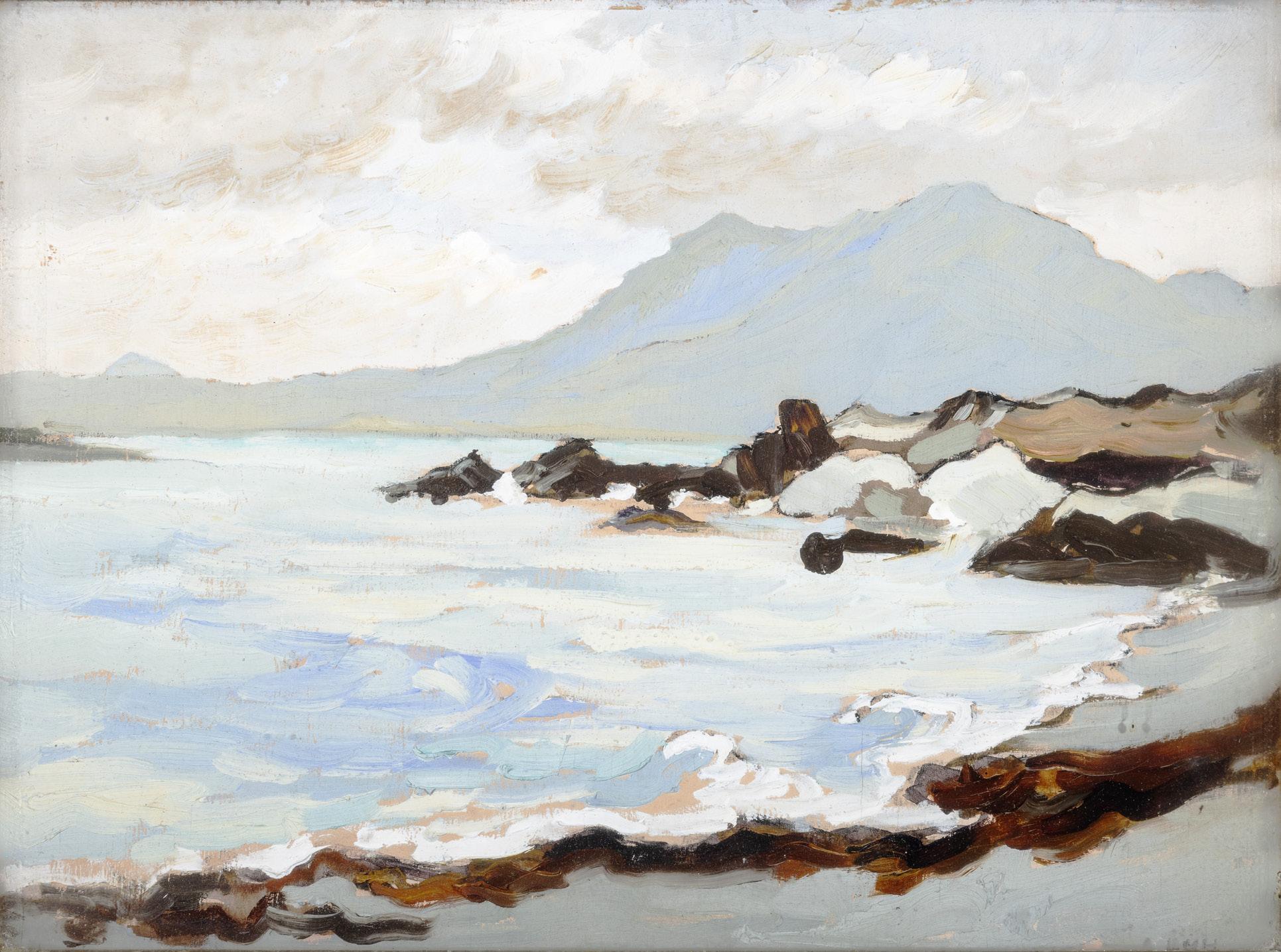
LETITIA MARION HAMILTON RHA (1878-1964)
Coastal Scene, West of Ireland
Oil on panel, 30.5 x 40.5cm (12 x 16’’)
Signed with initials, lower right
Provenance: The Artist’s Family, by descent
€ 4,000 - 6,000
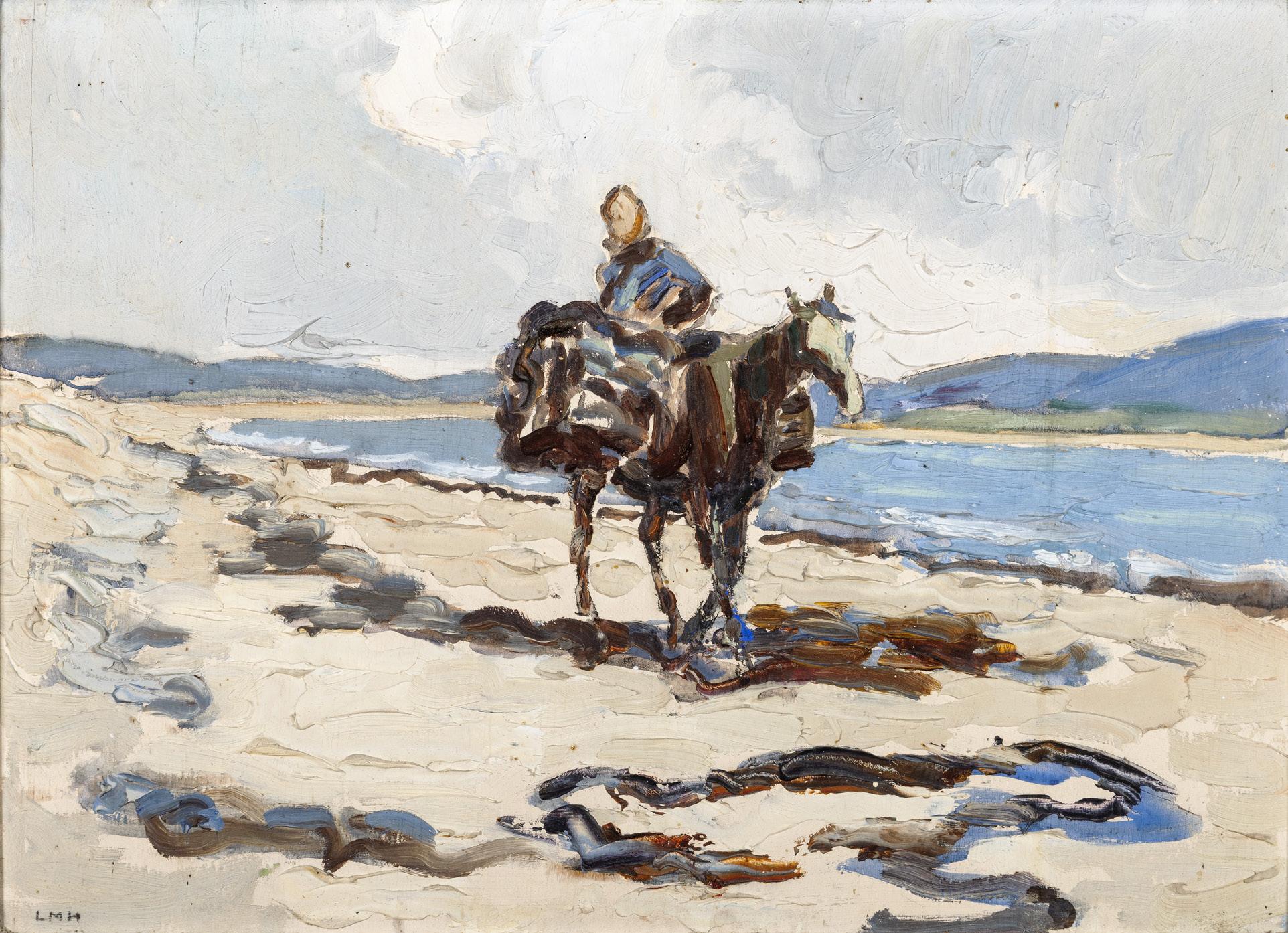
Oil on panel, 30.5 x 40.5cm (12 x 16’’)
Signed with initials; inscribed in the artist’s hand on paper label verso
Provenance: The Artist’s Family, by descent
€ 5,000 - 8,000
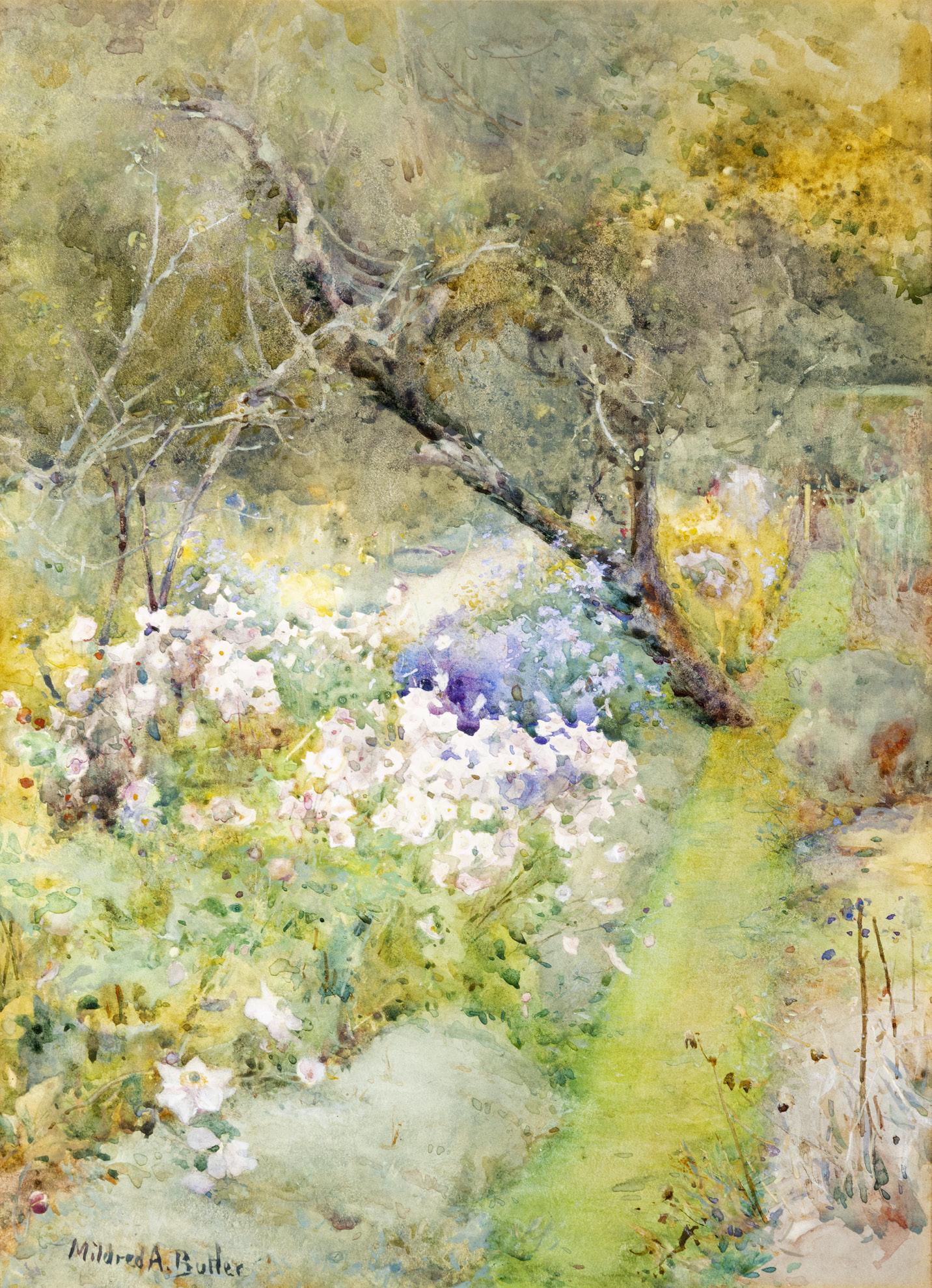
4
Herbaceous Border at Kilmurry
Watercolour, 36 x 10cm (14½ x 10½”)
Signed € 3,000 - 5,000
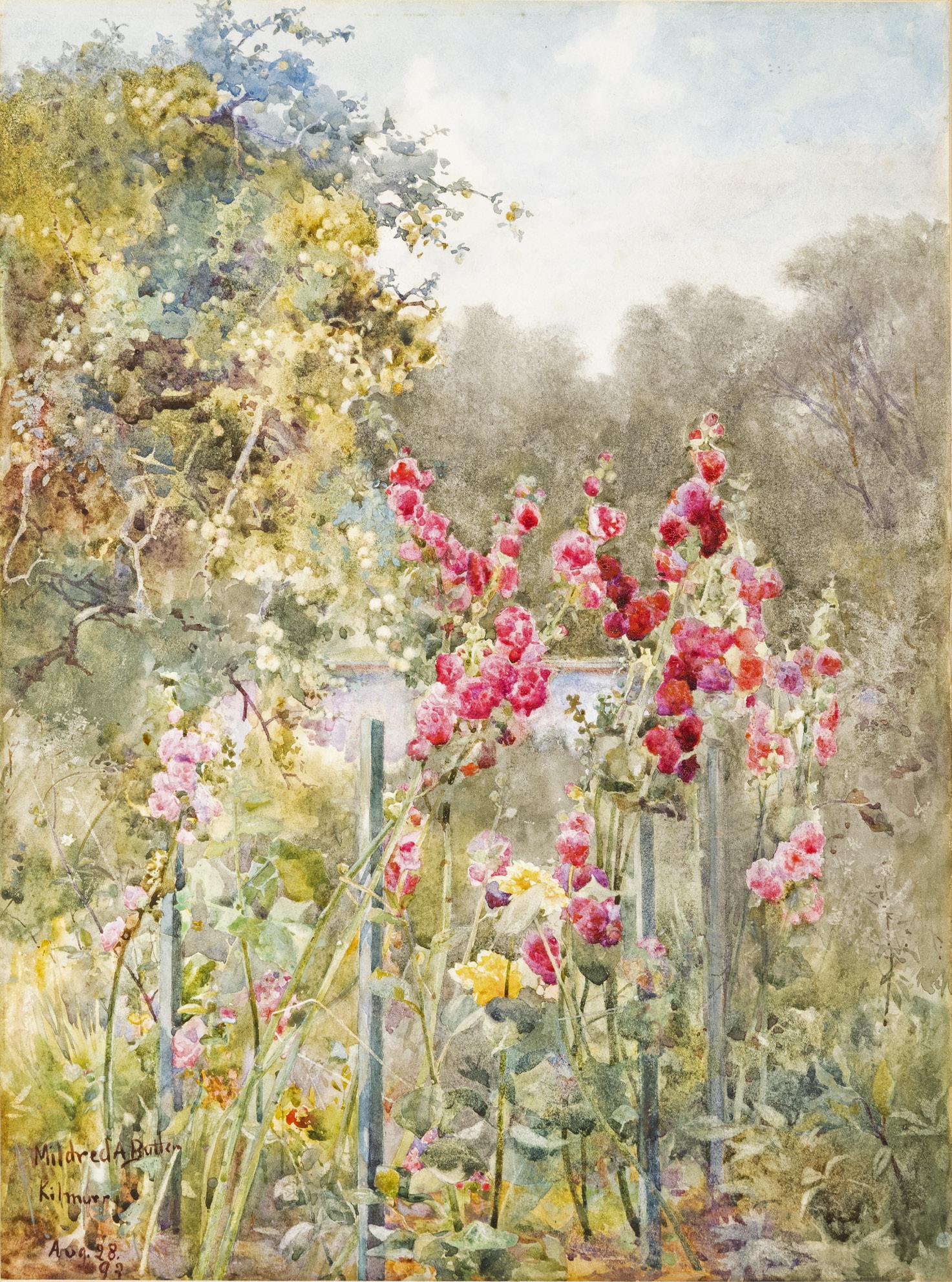
Watercolour, 37 x 26.5cm (14 x 10½”)
Signed, inscribed and dated “Aug 28 / ’93”
€ 3,000 - 5,000


6
EVIE HONE RHA (1894-1955)
At Marley
Gouache, 27.5 x 18.5cm (10¾ x 7¼’’)
Signed
€ 2,500 - 3,500
BARBARA WARREN RHA (1925-2017)
Winter Sun
Oil on Canvas, 50 x 76cm (19½ x 29¾’’)
Signed
€ 2,000 - 4,000
Sailors
Oil on board, 27 x 22cm (10½ x 8½’’)
Signed
Provenance: Gifted by a Greek student in Dublin, 1953; with The Bell Gallery, Belfast; Private collection, Northern Ireland, thence by descent.
Exhibited: Possibly, Gerard Dillon & Daniel O’Neill, Dublin, Contemporary Picture Galleries, December 3-18th, 1943, (Sailors, No. 34)
Sailors shows a group of men in their uniforms in jubilant mood, smoking, conversing and drinking stout around tables in the well-known gay bar, Du-Barry’s in the Belfast docklands. The proximity of the sailors and cramped seating suggests the men were at ease in Dillon’s company. The sailors and serviceman with a kit bag in the background suggests the venue was a popular rendezvous point. A recently discovered document indicates this painting was previously with the Belfast art dealer, Nelson Bell of the Bell Gallery. The undated typed document gives catalogue details of Sailors with a hand written note in ink together with a colour printout of the painting. Nelson Bell states, “Gerard Dillon, Soldiers and French Sailors in Du-Barry’s. Du-Barry’s was a dock area bar in Prince’s Street. Framed by Webb’s, Dublin, 1942-1944. Given to the present owner in 1953 by Greek student in Dublin. Inscribed in Greek on reverse, when student was leaving the country.”
The onset of the Second World War coincided with a changing cultural climate in Ireland after refugee painters arrived in Dublin during the Emergency. War conditions in Northern Ireland also offered an unusual liberal atmosphere after the authorities turned a blind eye to activities in the area around Belfast docks after hundreds of thousands of servicemen disembarked in Belfast in 1942. Although travel restrictions in the south irritated the general public, the restrictions stimulated an interest in the visual arts which had a beneficial spin off for Gerard Dillon’s painting career. He was able to hold his first solo exhibition in Dublin in 1942 and in possession of an identity card commuted easily by train between Dublin and Belfast. In 1943 Dillon was living in Belfast preparing for two exhibitions; a joint show with Daniel O’Neill at Dublin’s progressive Contemporary Picture Galleries in December, 1943 and a joint exhibition with George Campbell in John Lamb’s gallery, Portadown, Northern Ireland in June, 1944.
From January, 1942, steam ships carrying American troops arrived into Belfast docklands area creating a noisy, bustling atmosphere in the war-torn city. By 1943 there were more than
120,000 servicemen who had access to cigarettes, fresh fruit, chocolate, meat and white bread. These luxuries however, were out of reach to the native civilian population, who were subjected to controls and restrictions in relation to the consumption of coal, petrol, food, security, and living daily with unlighted streets, darkened windows and the rising cost of living. After long periods at sea, sailors with tanned skin and toned bodies in snug fitted uniforms contrasted visually with the native population. Their disposable income and interest in seeking entertainment likely created a smoke-filled exotic ambience in Du-Barry’s bar. Their willingness to pay artists for on-the-spot portrait commissions attracted Dillon and his friends. Some of his subjects at his joint exhibition with Daniel O’Neill in 1943 reflect his contact with American servicemen, American military engineers and sailors during this period.
Oral history interviews conducted by Northern Ireland’s War Memorial Museum indicate the outbreak of war encouraged physical intimacy and close personnel relationships with one’s fellow men or women. By the end of the war, around 300,000 American service personnel passed through Ulster. Du-Barry’s bar on Princes Street, located within a minute walk from Albert clock with access to the tram was a renowned venue for prostitutes, gay men, sailors and servicemen. Having lived discreetly as a gay man in London in the late 1930s, the cosmopolitan environment in Dublin and the unanticipated consequences of thousands of men disembarking in industrial Belfast were opportunities the painter likely embraced. Although the general public were living under strict controls and restrictions in Ireland, war-time conditions offered Dillon relative freedom and a unique opportunity to launch and promote his painting career in Dublin as well as exhibiting with friends in his native city of Belfast.
Karen Reihill, April 2025
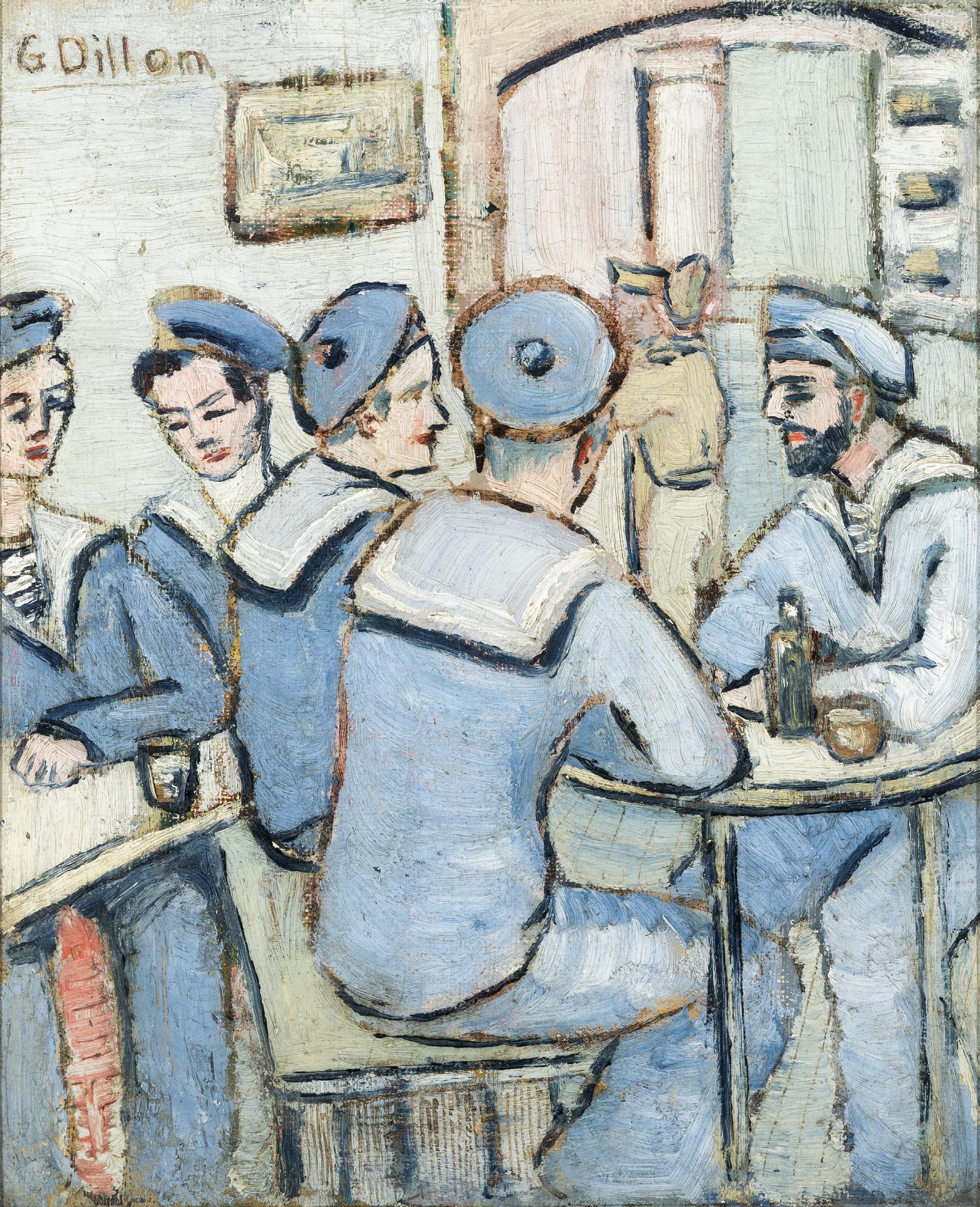

9
GERARD DILLON (1916-1971)
Evening Light
Etching, 16 x 17.5cm (6¼ x 6¾’’) Artists Proof, Signed and inscribed
€ 600 - 800
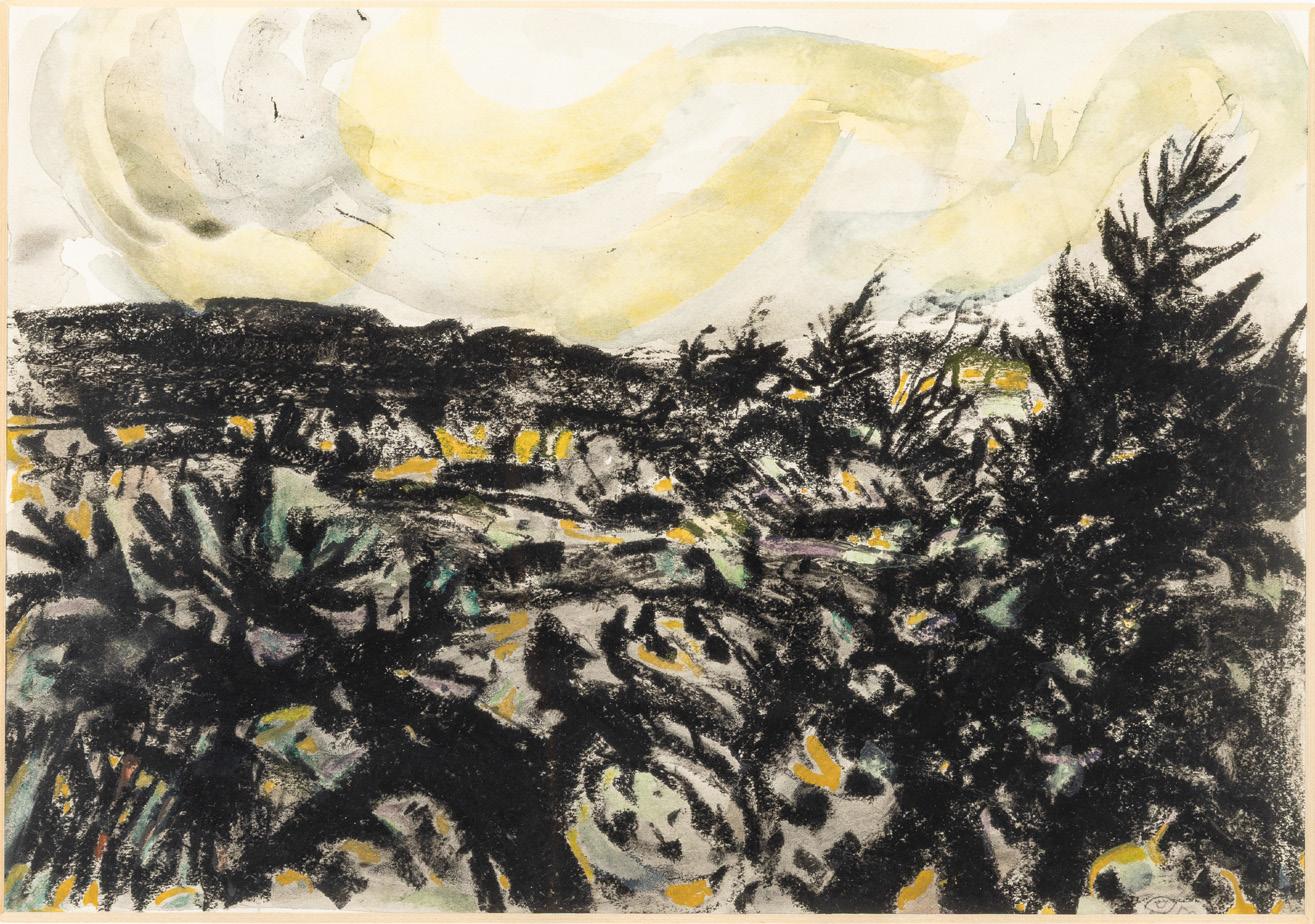
10
COLIN MIDDLETON MBE (1910-1983)
Glendowen
Mixed media on paper, 22 x 31cm (8¾ x 12¼”) Signed
€ 700 - 1,000
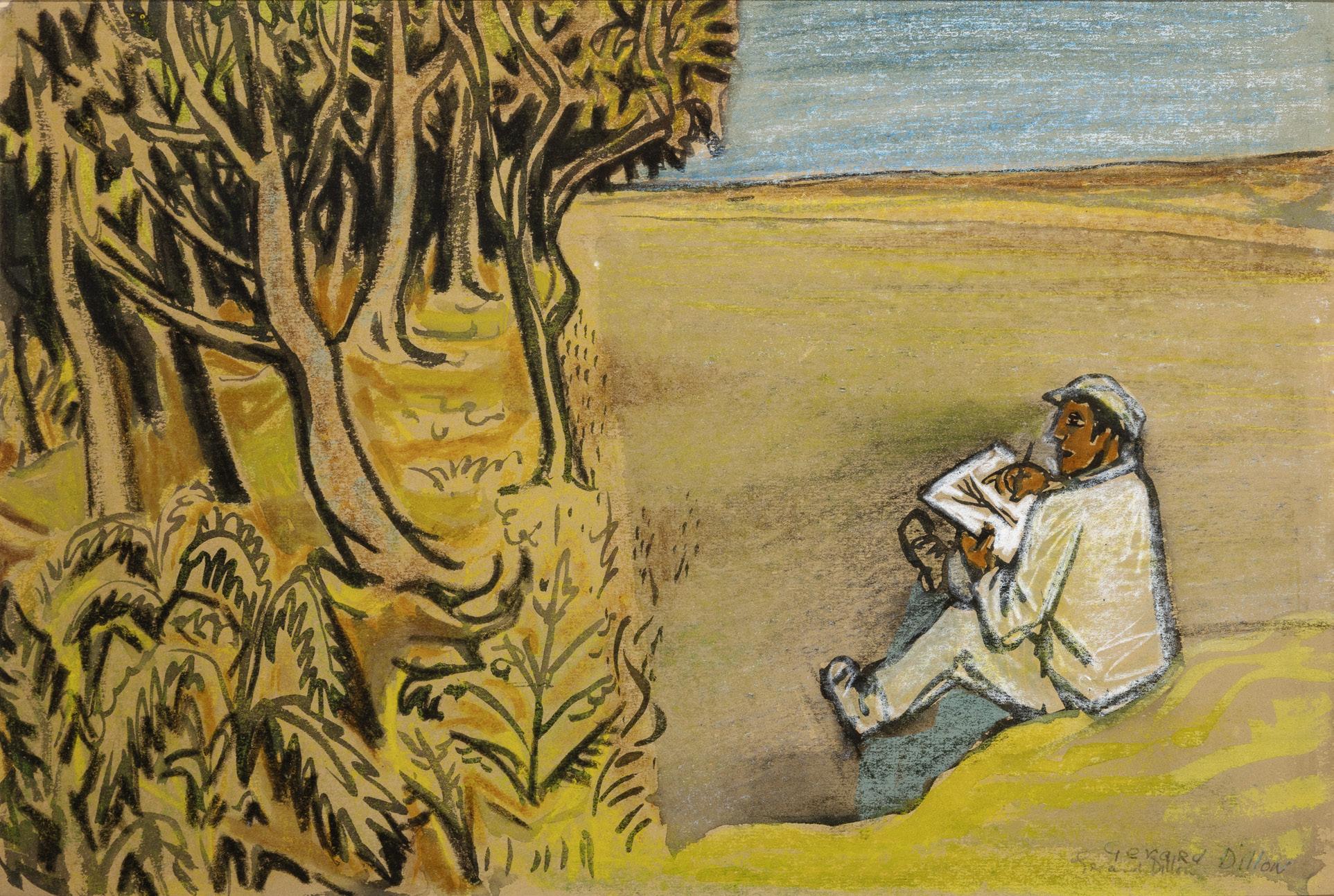
Artist in a Landscape
Mixed media, 36.5 x 54cm (14¼ x 21¼’’)
Signed
€ 4,000 - 6,000
1949)
Coming Storm (2003)
Oil on canvas 122 x 122cm (48 x 48”)
Signed; also signed and dated 2003 verso
Provenance: With Taylor Galleries, Dublin; Private Collection; Sale, Whytes Dublin, 26/4/2005, lot 88; Private Collection, Dublin
Exhibited: Dublin, Royal Hibernian Academy, Martin Gale: Paintings, 27/9 –24/10/2004 touring to Belfast, Ulster Museum, 2/12/2004 – 27/3/2005
Literature: Dennis O’Driscoll, ‘ View to Vision’, in Martin Gale: Paintings, RHA, Dublin 2004, p.45, illus p.87
€ 8,000 - 12,000
In Coming Storm, dark clouds hang overhead, ready to burst. Their gloomy shadows spread over the trees and tangled summer grass below, threatening to wipe out everything bright and cheerful in the scene.
At the centre of the field stands a striped marquee tent, its festive colours sharply contrasting with the approaching storm. It looks as out of place as someone dressed for summer just moments before a heavy rain shower. Any second now, the rain will start hammering on the tent’s roof. What was once set up with high hopes—perhaps as a tea tent for a country show—now clings to the ground, its fabric flapping, its ropes pulled tight, its brightness dulled.
The tent feels both touching and vulnerable. It speaks to something deeper: how quickly our dreams can come under threat, how fragile our hopes can be. But despite the tension in Coming Storm there’s also a sense of quiet strength. Like any crisis, this too will pass. The sky will clear, and soon, the tent will be pitched again, ready for another day.


Cultivation I
Oil and plaster on board, 110 x 153cm (43¼ x 60¼’’)
Signed, inscribed verso
€ 3,000 - 5,000

Black and White Scarecrows
Oil on canvas, laid on board, 35 x 45cm (13¾ x 17¾’’)
Signed; signed and inscribed verso
€ 5,000 - 8,000
Nude with White (1985)
Oil on canvas, 96.5 x 96.5cm (38 x 38”)
Signed, inscribed and dated (19)’85 verso
Provenance: with Hendriks Gallery, Dublin, label verso
€ 6,000 - 8,000
Partly on the basis of his exploration of the work of Paul Cézanne, the French philosopher Maurice Merleau-Ponty argued that seeing is essentially an embodied rather than a detached, analytical process, something that comes decisively into play in both making and looking at paintings. Barrie Cooke clearly needed no persuading on that score: his work is always imbued with the startling vitality and nervous intensity of seeing in that heightened, embodied sense. His immersive engagement with the subject is transmitted directly, almost electrically, in gesture and colour, line and tone, by-passing conventional ideas of representation. Although a conventionally gifted painter, he is pretty much indifferent to habitual pictorial conventions, aiming for a truer account of the experience of seeing - as indeed was Cézanne.
Cooke’s subject matter encompasses nature, landscape, the human figure - as here - and the portrait. Water or, more accurately, a sense of flowing water, is ubiquitous to everything he did. He built up his paintings with extremely fast, fluid glazes of oil colour, incorporating drips and visible brushstrokes, with occasional passages of thicker, more opaque pigment, here chiefly in the tremendously tactile, even luxuriant ground on which the
figure rests. He more or less eschews detail, once commenting that, in his method of painting, the brushstroke was the detail, but still brilliantly captures the physical reality of the body’s structure, its musculature, sinews and joints, its masses, and especially its energy.
Born in Cheshire before his family moved to the US, Cooke initially studied biological sciences before switching to art. On a post-university visit to the UK, his passion for fishing led him to Ireland, and before long he settled in Co Clare, then Co Kilkenny and latterly in Co Sligo. Always close to the natural world, he was alert to ominous environmental problems early on and much of his work reflects not only the beauty but also the problems of environmental degradation. Working trips to Borneo, in the mid-1970s and later on New Zealand were important for his artistic development. He exhibited regularly from the early 1960s at the Hendriks and later the Kerlin galleries, and there were many survey and retrospective exhibitions, including at the Douglas Hyde Gallery, IMMA, The Model, Sligo, the Butler Gallery, Kilkenny and the Haags Gemeentemuseum.
Aidan Dunne, April 2025
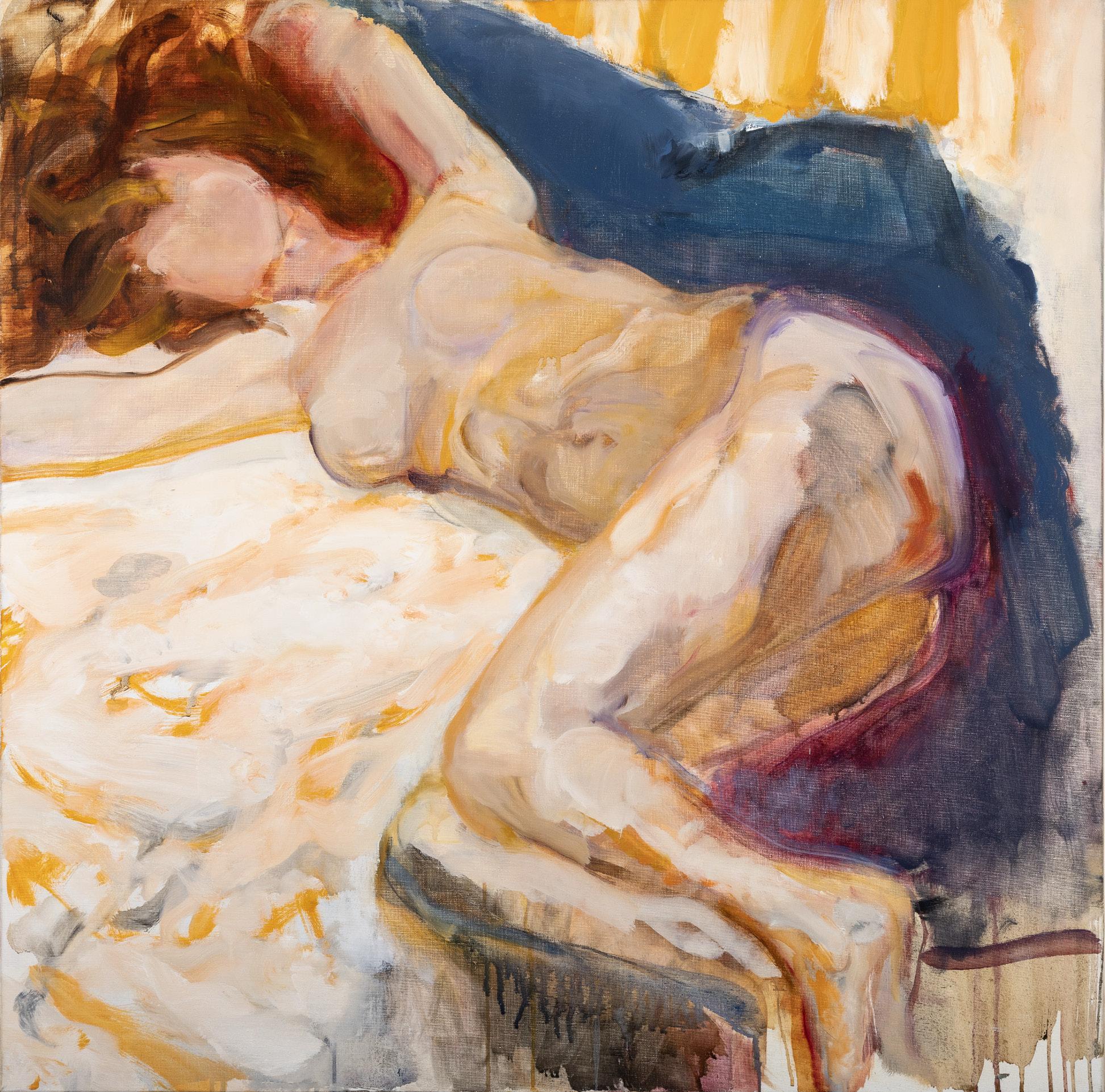
OISÍN KELLY RHA (1915-1981)
Horse and Rider
Bronze, 46cm (h) (18’’)
Provenance: Sale, Whyte’s, Dublin 26 November 2007, lot 11
Exhibited: Belfast; Ulster Museum 1978 touring to Dublin, Trinity College and Cork, Crawford Gallery; Dublin, RHA, Memorial Exhibition 1982, Cat, No. 271, Illus
Literature: Fergus O’Kelly ‘The Life and Work of Oisín Kelly’, Derreen Books 2015, Illus p.54
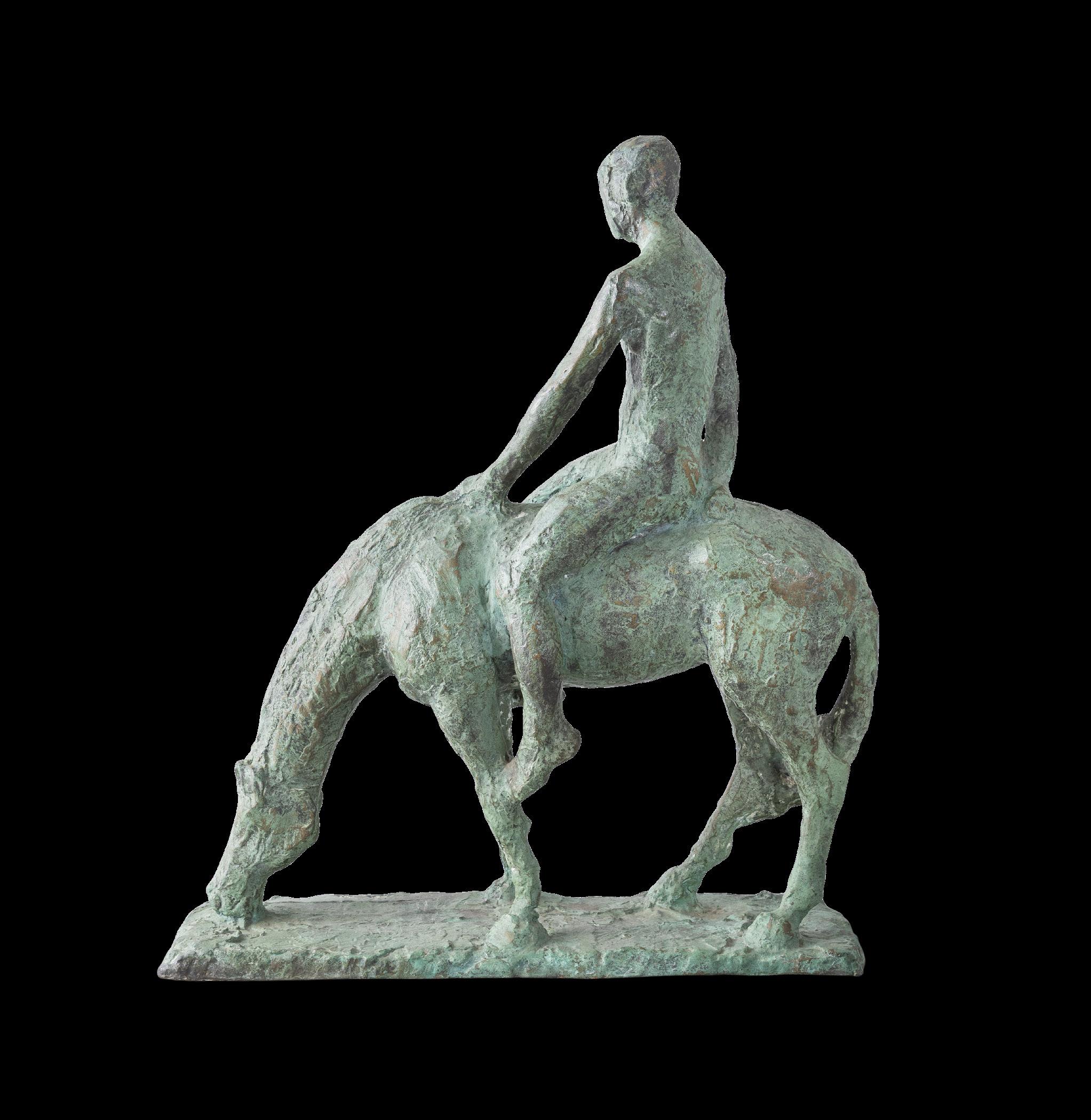
KELLY RHA (1915-1981)
The Turf Cutter (maquette for a Bórd na Móna commission which was not realised due to the death of the artist in 1981)
Bronze on a timber base, 37.5cm (h) (14¾’’)
Provenance: Sale, these rooms, Important Irish Art, 5 December 2005, lot 54
Literature: Fergus O’Kelly ‘ The Life and Work of Oisín Kelly’, Derreen Books 2015, Illus p.53
€ 5,000 - 8,000
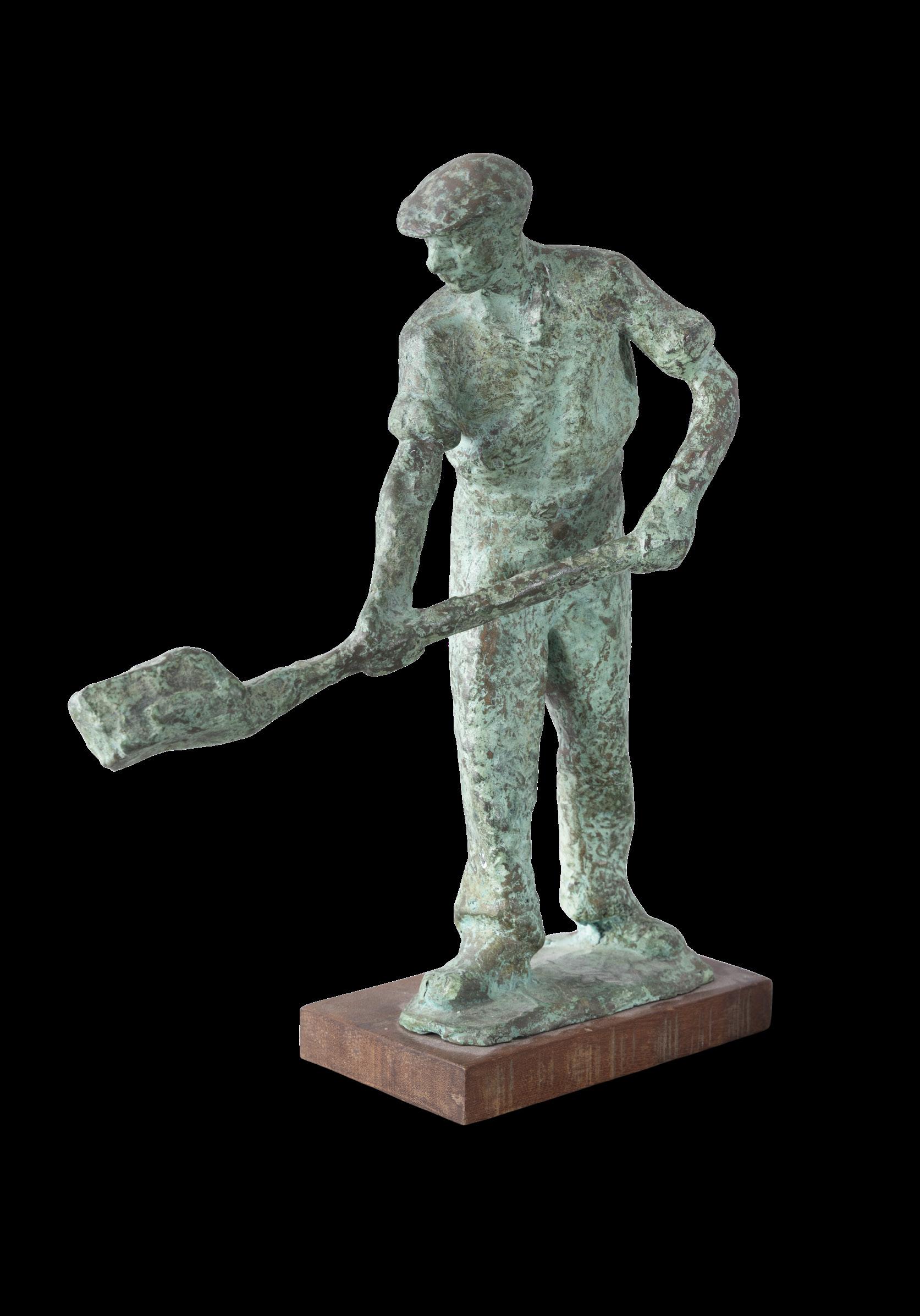
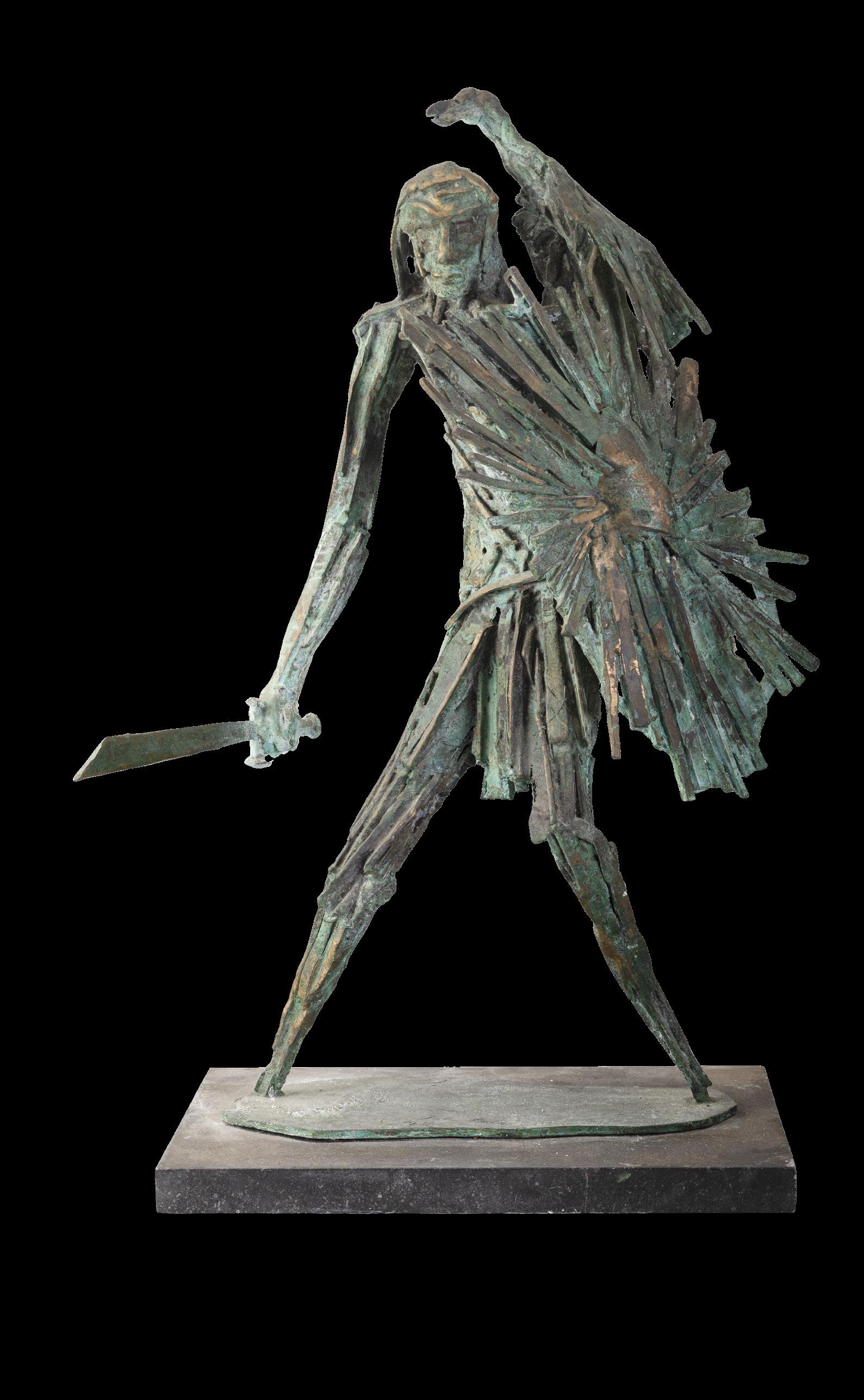
18
JOHN BEHAN RHA (B.1938)
Cú Chulainn (1980)
Bronze, 69cm (h) (27¼’’)
Signed and dated 1980
€ 7,000 - 10,000
Cú Chulainn is a legendary Irish warrior and demigod from the Ulster Cycle of mythology. The son of the god Lugh and the mortal Deichtine, he was originally named Sétanta. He earned the name Cú Chulainn (“Hound of Culann”) after killing a guard dog in self-defence and vowing to take its place.
Trained in martial arts by the warrior woman Scáthach, he wielded the deadly spear Gáe Bulg. Though destined for glory, it was foretold his life would be short. At seventeen, he single-handedly defended Ulster in the epic Táin Bó Cúailnge, famously entering a berserk rage known as ríastrad. He rode a chariot driven by his charioteer Láeg, pulled by the horses Liath Macha and Dub Sainglend.
Cú Chulainn’s wife was Emer, though he had other lovers, including Aífe, with whom he fathered Connla, whom he tragically killed in combat. Cú Chulainn himself died heroically, tied to a standing stone so he could die on his feet.
He remains a national symbol of heroism, notably commemorated in Oliver Sheppard’s bronze statue in Dublin’s GPO and in stained glass at St. Enda’s School. His story has been retold in literature, including Lady Gregory’s 1902 Cuchulain of Muirthemne, which popularized and softened the ancient tales.
Convict Woman
Bronze, 47cm (h) (18½’’)
Edition 1/9
Signed and dated 2015
€ 8,000 - 12,000
Based on one of the life size bronze figures unveiled in Hobart, Tazmania in 2017 and known as the Footsteps Towards Freedom statues, Convict Woman represents the 13,000 convict women and over 2,000 of their children who were transported to Van Diemen’s Land. Upon arrival, the women were confined in institutions like the Cascades Female Factory, while their children were separated from them and sent to the harsh Orphan Schools in New Town—nearly 6,000 children passed through these schools between 1828 and 1879. These women endured the trauma of forced exile, and many children faced institutional life from an early age, often before reaching the colony. Families were torn apart by systemic rules, death, and desertion, with many mothers and children never reunited. Rowan Gillespie has created bronze memorials to honour the suffering of these women, many of whom faced abuse, separation from children, and dehumanising treatment upon arrival. Drawing on colonial records and personal encounters with descendants, Gillespie connected deeply with their stories, using modern-day relatives as models to restore dignity to those once commodified. The project which culminated in an unveiling by President Michael D. Higgins in 2017, confronted this inhumane historical trauma and finally replaced the shame of convict ancestry with pride.
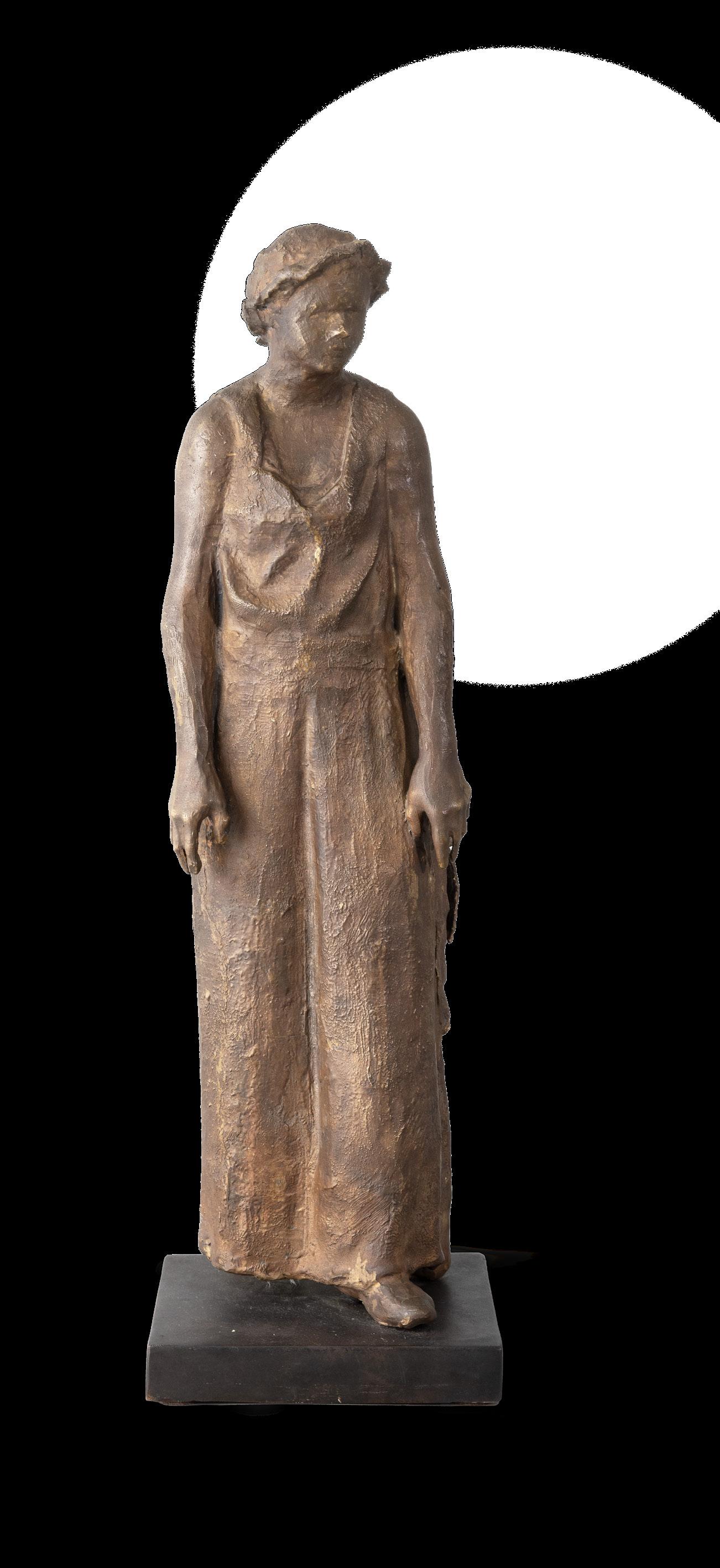
HUGHIE O’DONOGHUE RA (B.1953)
The Sea! The Sea! (2003)
Oil on board 111 x 176cm (44¾ x 66”)
Signed, inscribed and dated 2003 verso
Provenance: Sale, DeVere’s Dublin, 2017 (lot 77)
€ 15,000 - 20,000
The human figure immersed in water, or in the earth, is a key motif in Hughie O’Donoghue’s paintings over several decades. As early as 1984 one work, Liquid Earth, confirms that there is an equivalence between the two elements for him. He was inspired by the preserved, centuries-old bodies recovered from peat bogs, a source of fascination for many, including artists and poets. O’Donoghue has said that he sees the painter as a kind of emotional archaeologist, working the surface to unearth what is within it, a metaphorical concept linked to his concerns with memory, history and place. The painter recalls, recovers and marks experiences both personal and universal, normally invisible against a background of grand historical narratives. Both his parents were of Irish origin, and he has made significant bodies of work inspired by the layers and paths of family histories.
A couple of years prior to making this painting, he had been in Italy, retracing some of his father’s footsteps as the allies advanced through Italy during the Second World War. He was greatly struck by the Tomb of the Diver at Paestum, a painting in which a figure plunges from the Pillars of Hercules into the unknown. Some of his father’s photographs captured allied soldiers enjoying a few moments of peace on the beach and in the water at Cumae. There were also the striking examples of those caught in the eruption of Vesuvius, captured in plaster casts. All of these sources, and more, are bound up in the dreamlike images of the The Sea!, The Sea! materialising out of the depths, dazzling examples of the painter’s tonal brilliance and his mastery of contemporary depiction of the human image.
Aidan Dunne, May 2025
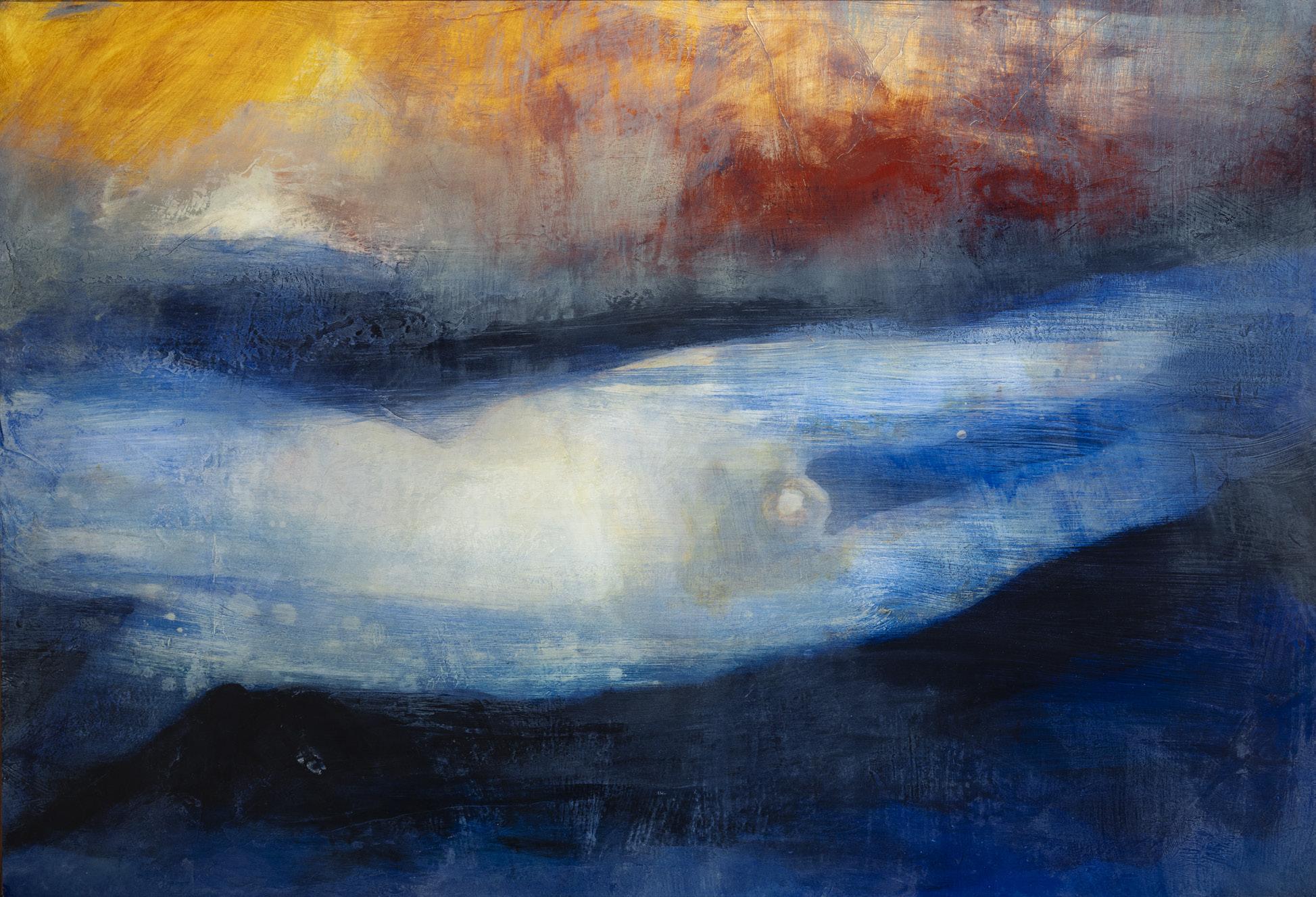
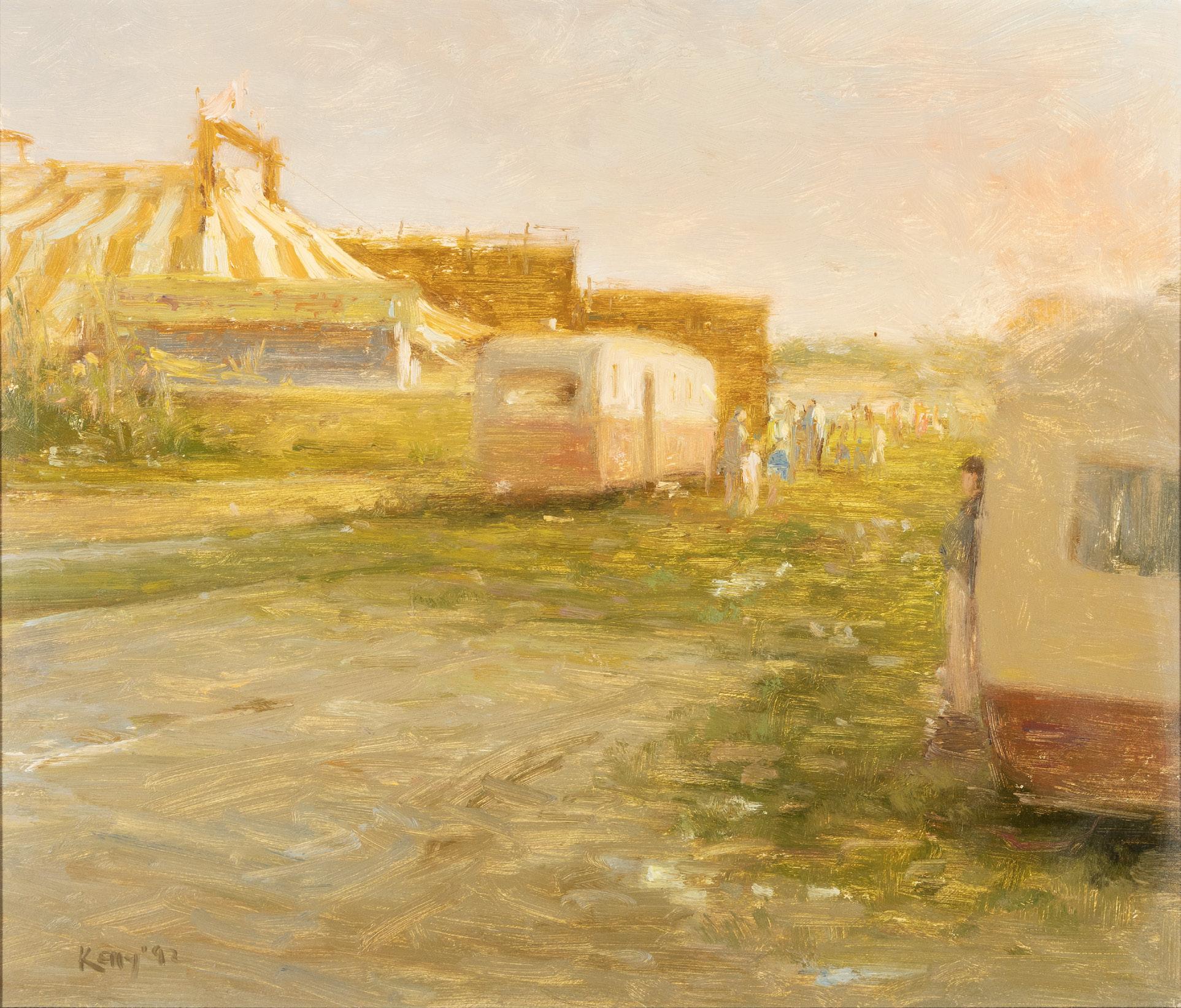
The Circus, Skerries (1992)
Oil on board, 29.5 x 34.5cm (11½ x 13½’’)
Signed and dated (19)’92; inscribed with title verso
€ 600 - 800
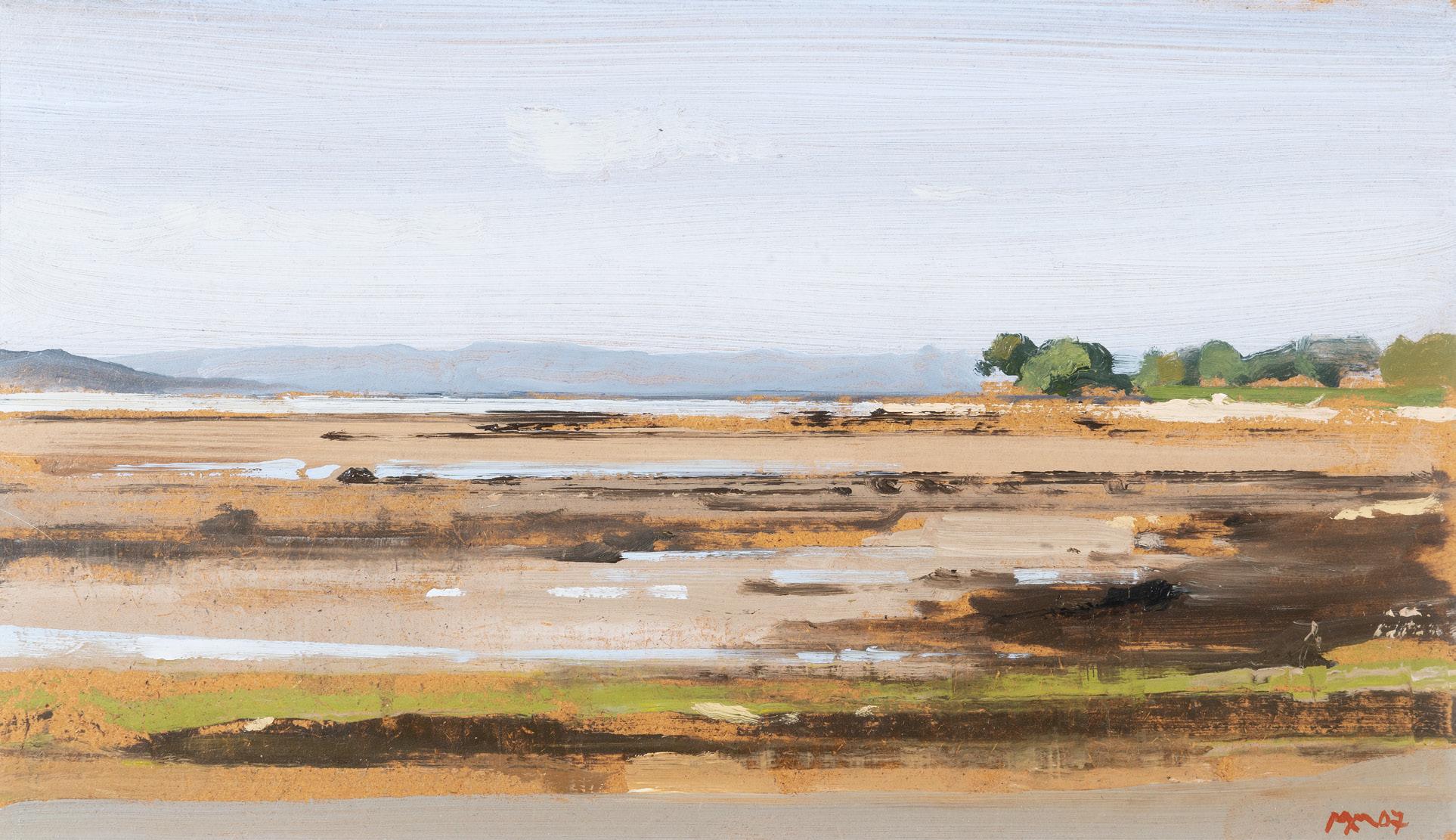
View from the Terrace, Lough Swilly (2007)
Oil on board, 17 x 29.5cm (6¾ x 11½’’)
Signed with initials and dated (20)’07
Provenance: These rooms, October 2007, catalogue no. 57
€ 1,000 - 1,500
Black Mountain, or Divis (1964)
Oil on canvas, 90.5 x 121cm (35¾ x 47¾’’)
Provenance: Collection of Patrick McCoy, Belfast, artist and friend of Blackshaw.
Exhibited: Belfast, Ormeau Baths, Basil Blackshaw Retrospective, 1995; travelling to Dublin, Royal Hibernian Academy; Cork, Crawford Municipal Gallery; Arts Council of Northern Ireland, labels verso
Literature: Brian Ferran, Basil Blackshaw, Belfast, Nicholson & Bass 1995, illus. p.24, pl.14 as ‘Divis’.
€ 10,000 - 15,000
In the early 1960s, Basil Blackshaw moved to a cottage outside Lisburn, and this change of location seems to have provided the impetus for a series of paintings based on a single motif, that was to occupy him for much of the next decade. The landscape looking across the valley towards Divis and the Black Mountain became a vehicle for technical experimentation at a crucial period in Blackshaw’s work, and the process of these works seems to have facilitated a greater move towards abstraction.
The formal reduction that is a feature of these paintings shows the continuing influence of Cézanne (Blackshaw had already used his paintings of the gardener, Vallier, as a starting-point for paintings in the mid- 1960s), whose obsessive return to the same landscape also mirrors Blackshaw’s way of working at this time. His suggestion of space through defining the receding planes, and the manner in which these were inter-connected to retain tension within the picture itself, in addition to establishing a relationship to the flat plane of the canvas, recalls Kenneth Jamison’s comment that this series of paintings, are ‘abstract in the
truest sense’, and ‘are perhaps the artist’s finest achievements to date.’
Blackshaw’s career contained a number of significant, self-contained groups of work, focussed on a specific subject, a way of working which reveals something of his nature as a painter, and his conviction that an artist could reveal an essential truth about some element of the world around us; his seriousness conveys something of the heroic impossibility of this task. The technical range across this Divis / Black Mountain series is intriguing to watch; in one canvas, almost every intervention of the painter on the canvas, with the exception of a handful of marks, has been over-painted in white, while in the present work, the palette is unusually varied, and the marks Blackshaw has made demonstrate how instinctive and detailed his approach to this particular motif remained, even after years of examining it.
Dickon Hall, April 2025
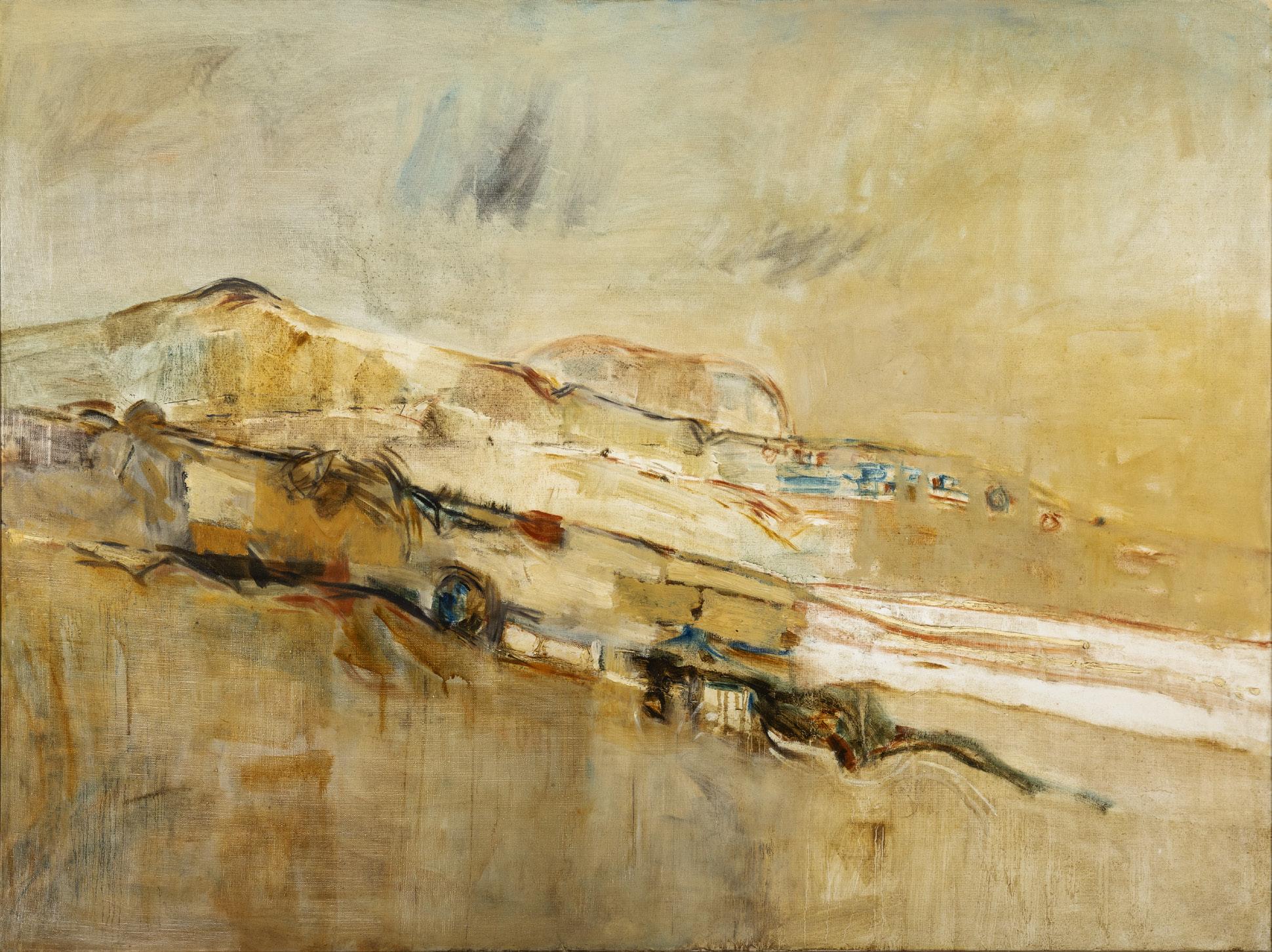
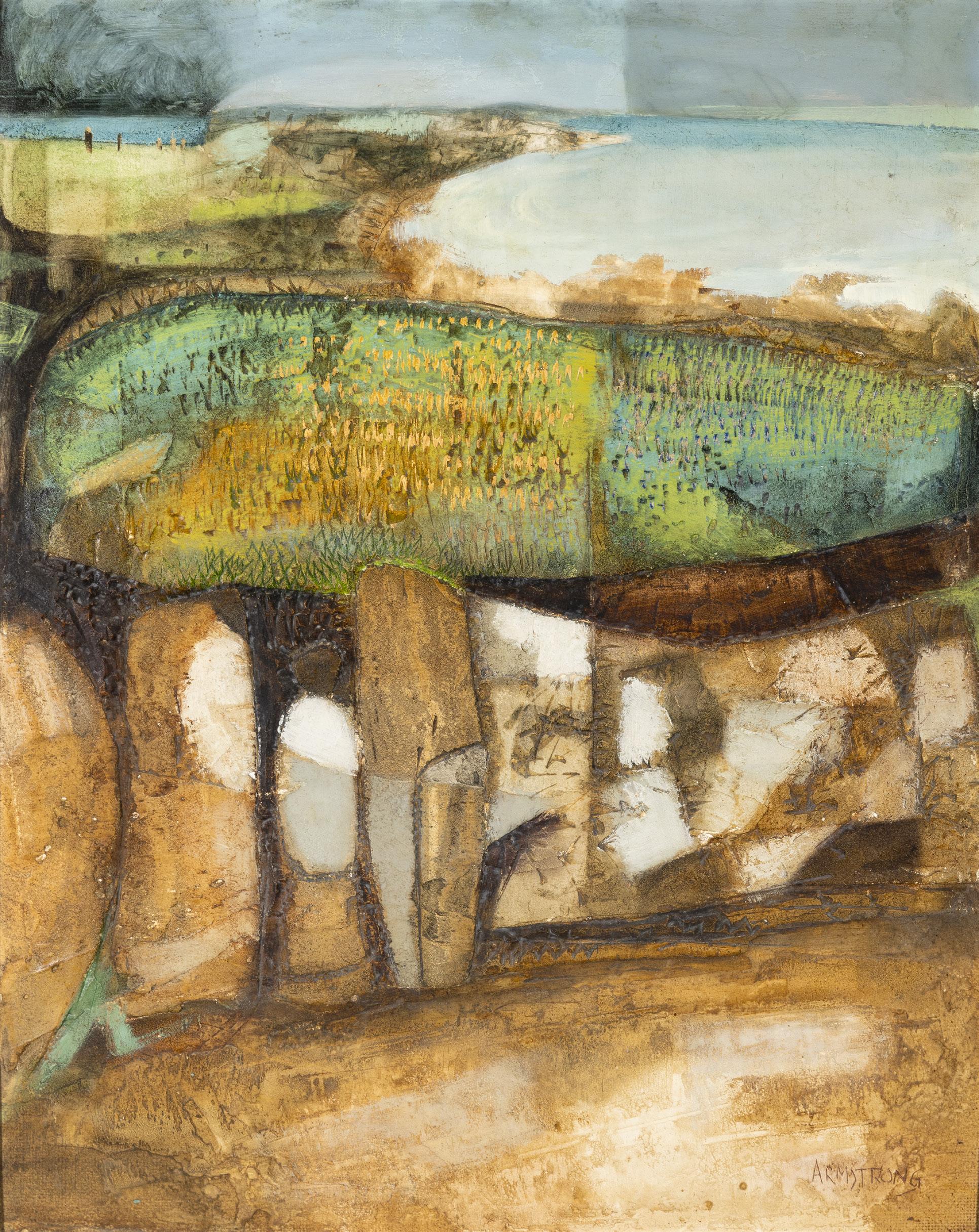
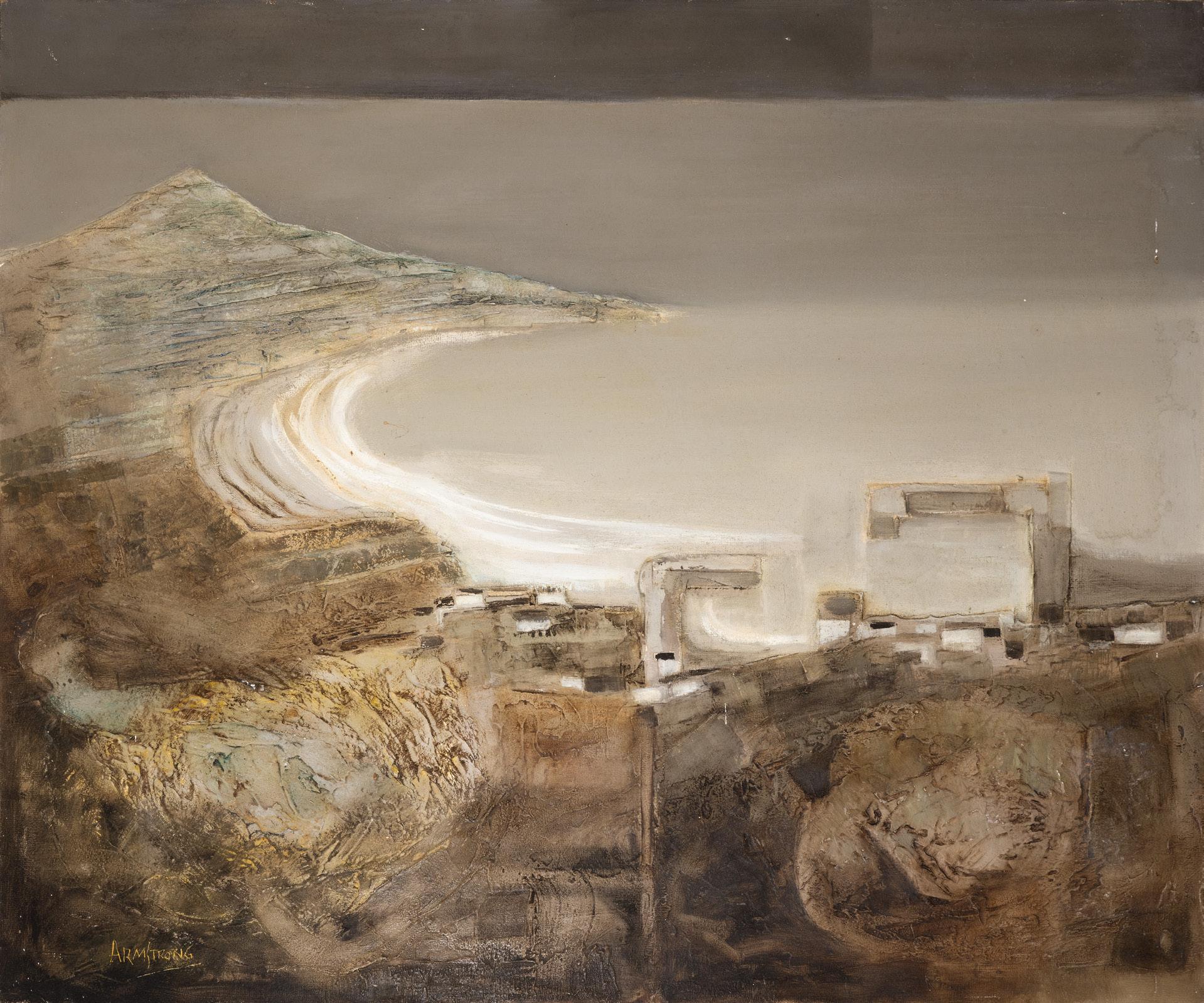
24
ARTHUR ARMSTRONG RHA RUA (1924-1996)
Rocky Shore
Oil and mixed media on board, 56.5 x 45cm (22¼ x 17¾’’)
Signed
€ 2,000 - 3,000
25
ARTHUR ARMSTRONG RHA RUA (1924-1996)
Small Harbour, Connemara (1968)
Oil on board, 76 x 91.5cm (29¾ x 36’’)
Signed
Provenance: With Ritchie Hendriks Gallery, Dublin, label verso
€ 4,000 - 6,000
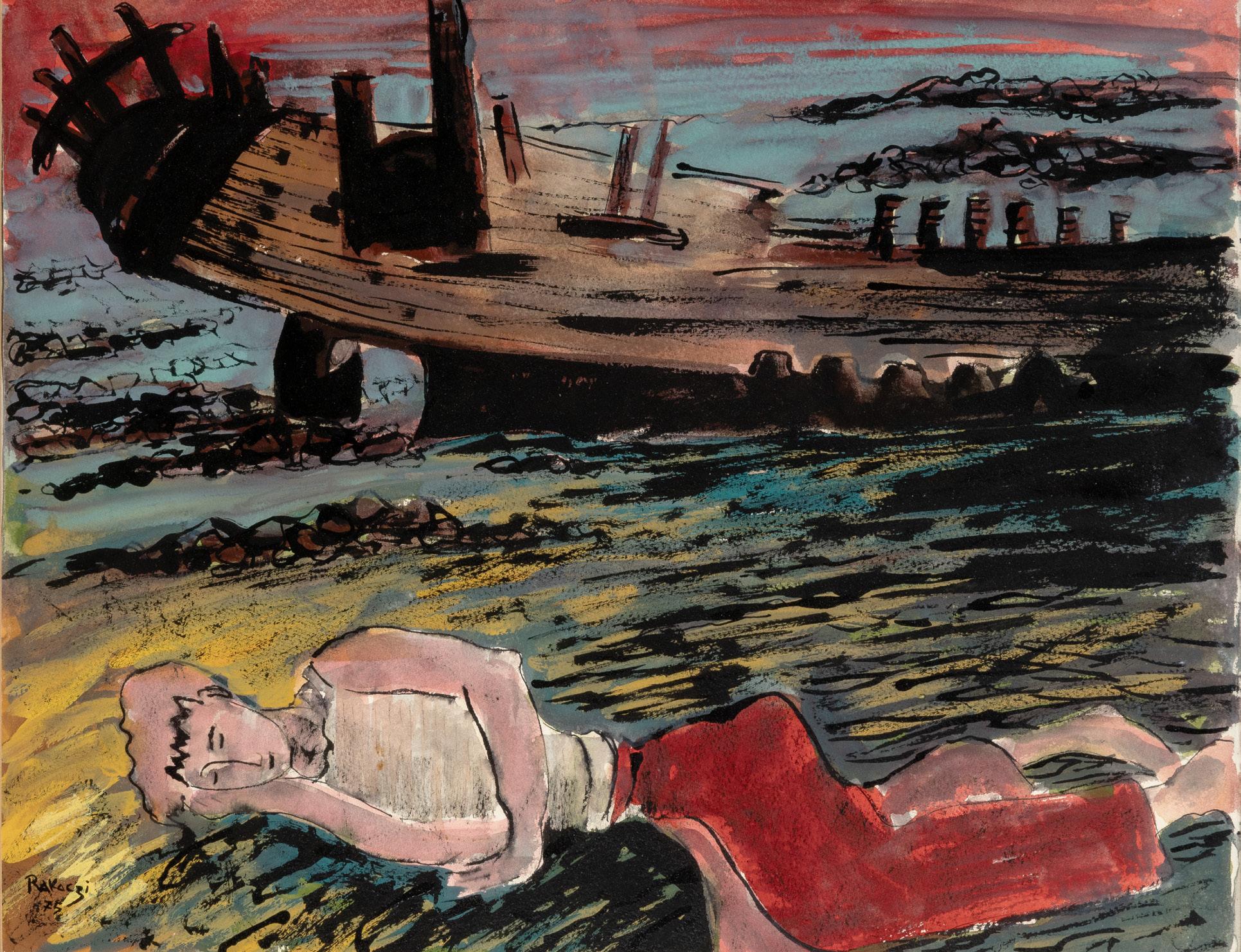
26
BASIL IVAN RÁKÓCZI (1908-1979)
Resting by the Shore (1975)
Ink and watercolour on paper, 35 x 44cm (13¾ x 17¼’’)
Signed and dated (19)’75
Exhibited: Cork, Crawford Art Gallery, Language of Dreams, 02/10/2015 - 13/02/2016
€ 1,500 - 2,000
FFRENCH SALKELD HRHA (1904-1969)
Mother and Child
Oil on canvas board, 44 x 35cm (17¼ x 13¾’’)
Signed
Provenance: Collection of Lady Nelson; Collection of Cyril McKeown, Private Collection
Exhibited: Cork, Crawford Art Gallery, Language of Dreams, 02/10/2015 - 13/02/2016
€ 3,000 - 5,000

Figures Asleep
Oil on canvas, 50.5 x 61cm (20 x 24’’)
Signed
Provenance: Sale, these rooms, 14/9/1978, lot 16, where purchased by the current owner
€ 10,000 - 15,000
In this composition, Swanzy presents a close-up view of group of people, lying on the ground, huddled close to one another, fast asleep. With the background hidden from view we are not able to locate the group in a particular space. It is unclear if they are inside or outside, and we assume it is nighttime given the collective slumber represented.
The makeshift arrangement of the figures, some using coats, shoulders or their neighbours as pillows would suggest that they are in a temporary shelter of some description. We know that this work was painted during the 1940s, and that Swanzy produced a number of paintings around this time which responded to the war. It is possible that it depicts neighbours and communities sheltering during the air raids of the Second World War which afflicted many European cities.
However, as is common of paintings of this period, Swanzy favours a compressed composition, focusing in on details rather than presenting a larger scene. Equally her work of
this period is not prosaic and does not follow traditional representational forms, instead producing works that were strongly allegorical and even fantastical in character. Swanzy’s figures from this period, even her female subjects, are strong and muscular in appearance, monumental even, reflecting the influence of cubism on her work.
She has singled out one figure in the work to hold our attention at the centre of the composition. The older woman is the only person that seems to have been afforded room to stretch out fully, with her feet, covered in bright red slippers, resting on the knees of another woman beside her. She appears to be wearing a dressing down and cap and is covered in a brightly patterned yellow blanket. Swanzy uses white pigments to highlight her face, with her eyes gently closed and hand raised to her cheek in a peaceful gesture. Despite the potential chaos of the world beyond this scene, a sense of silence pervades, the possibility of rest even in extraordinary circumstances.
Niamh Corcoran, April 2025
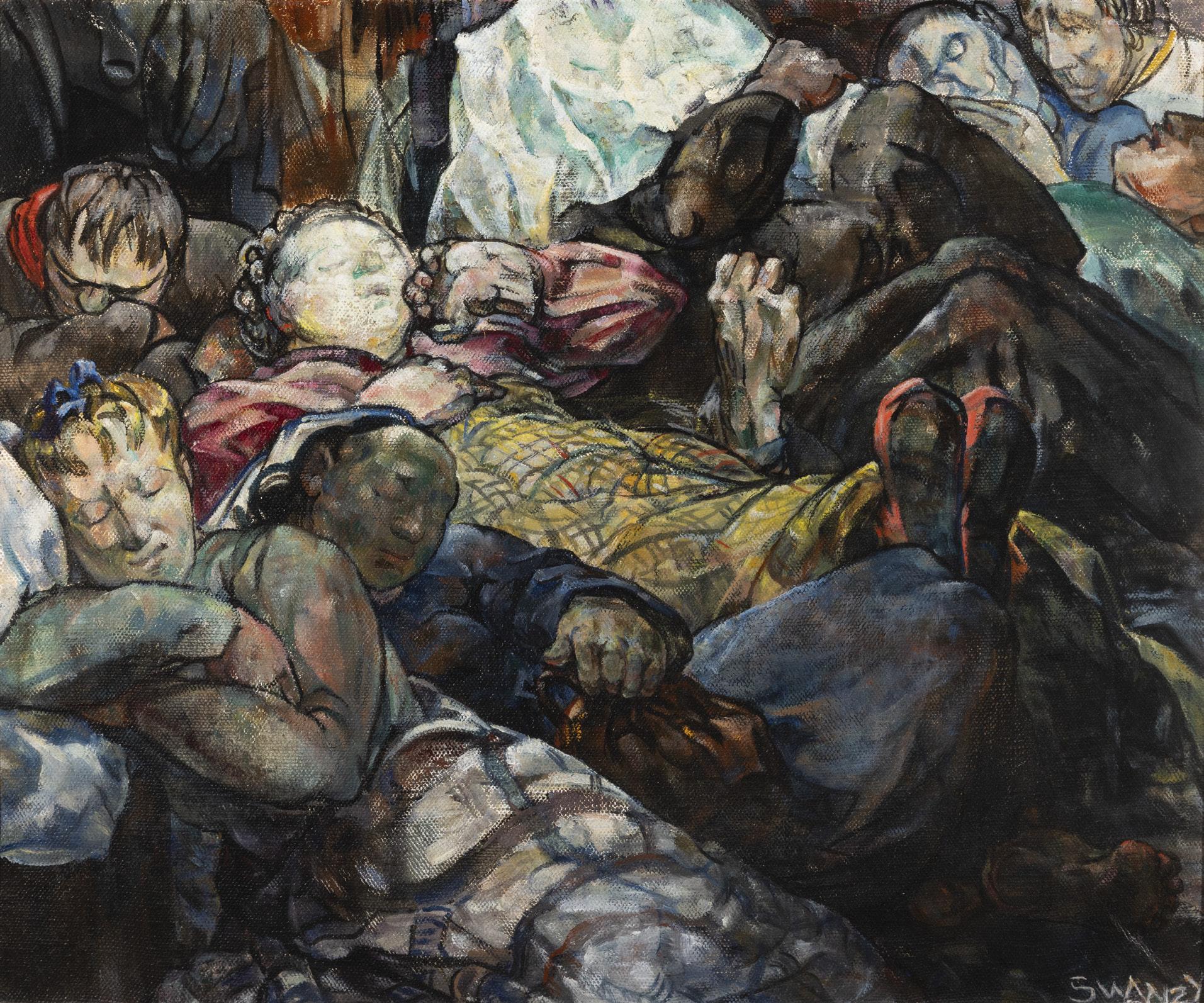
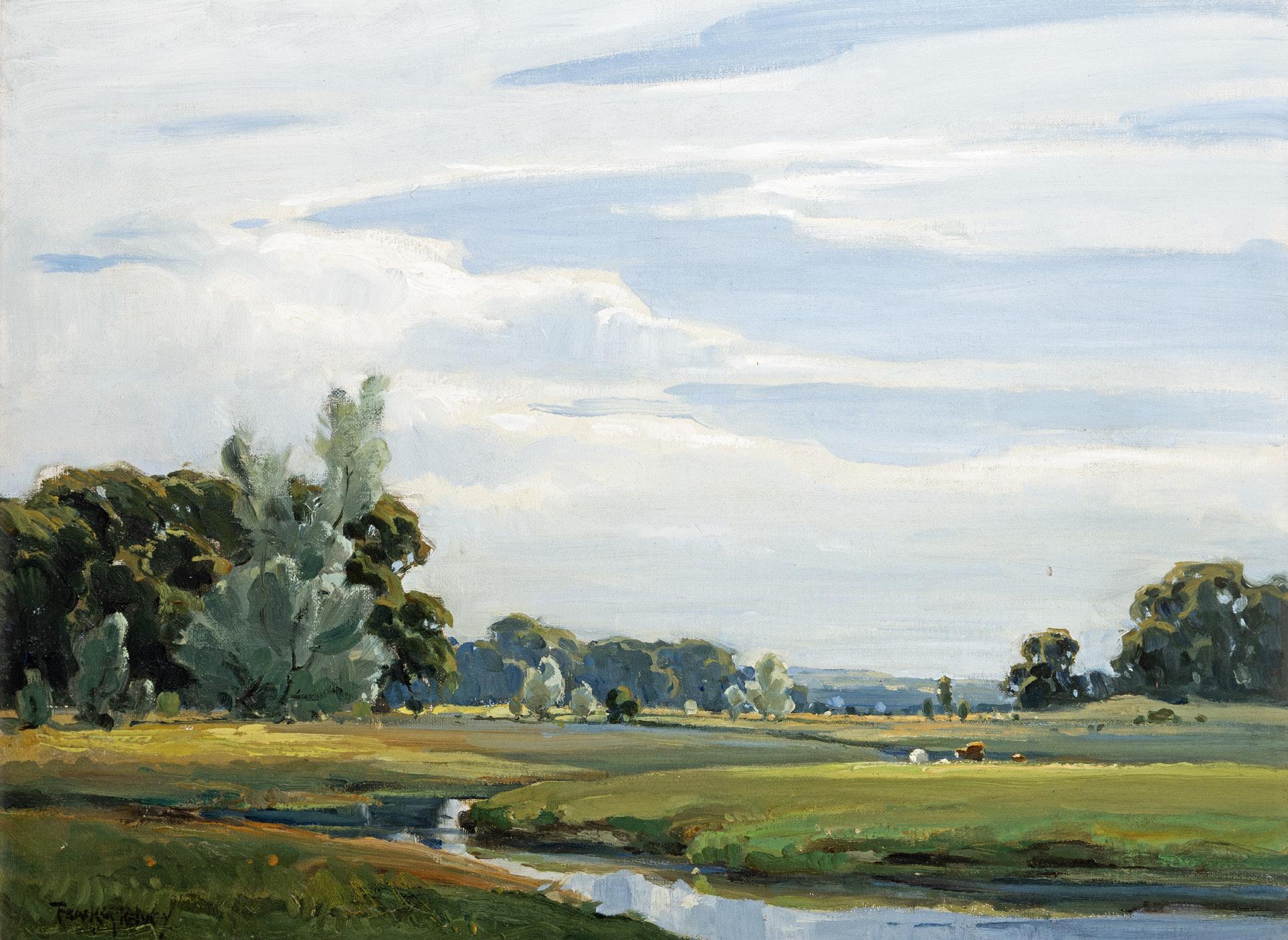
River Landscape with Cattle Grazing
Oil on canvas, 37 x 50cm (14½ x 19¾’’)
Signed € 4,000 - 6,000
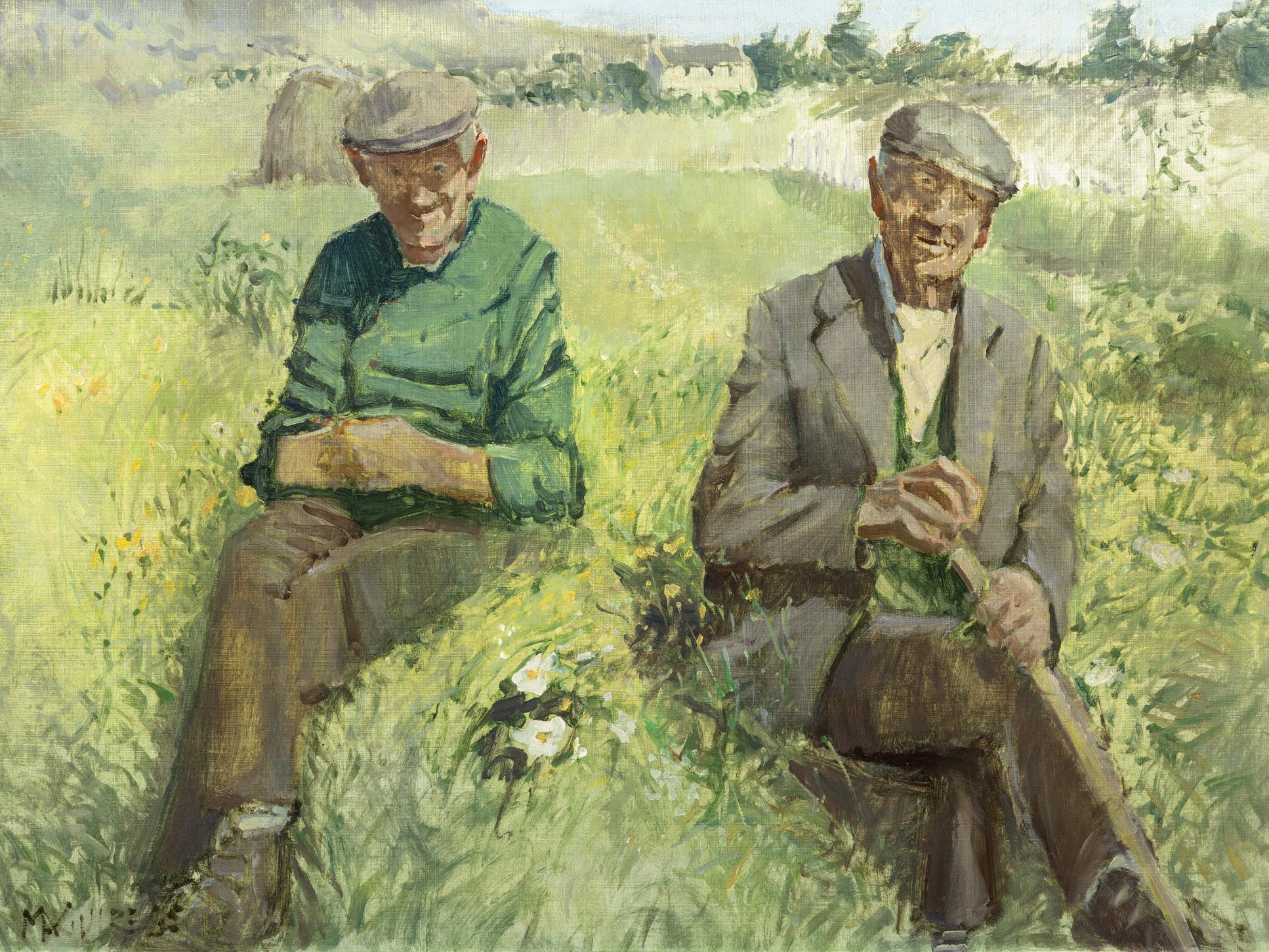
CECIL MAGUIRE RHA RUA (1930-2020)
James and Stephen Connely, Roundstone (1985)
Oil on board, 40 x 60.5cm (15¾ x 23¾’’)
Signed and dated ‘85; inscribed and dated (19)’85 verso
€ 4,000 - 6,000
RODERIC O’CONOR (1860-1940)
Boat in a Storm/ Christ on the Sea of Galilee, (c.1898-1900)
Oil on canvas, 71.8 x 90.6cm (28¼ x 35¾’’)
Stamped with the studio stamp ‘atelier O’CONOR’ verso
Provenance: Paris, Hotel Drouot, Vente O’Conor, 7/2/1956; with John Dorsay Baltimore, March 1983; Sale, Christie’s, London, 10/5/2007, cat. no. 67; Collection of the Hon. Francis D. Murnaghan Jr., thence by descent
Literature: J.Benington, Roderic O’Conor, a Biography with a Catalogue of his Work, Dublin, 1992 ‘ Cat. No.82, p. 199
€ 15,000 - 25,000
This remarkable work belongs to a rare and evocative series of twilight and nocturnal scenes produced by Roderic O’Conor in the late 1890s. These pieces, deeply influenced by O’Conor’s engagement with the Symbolist circle—including figures like Paul Gauguin, Alfred Jarry, and Charles Morice—represent a period of introspective exploration within his Breton sojourn. Pieces such as Boat in a Storm, The Bull and The Moon, and Seascape by Moonlight stand as testaments to this Symbolist interlude, marking a stark departure from his typically observed subjects. Imbued with mystery and enigma, both in execution and interpretation, they are among the most imaginative and original works of his career. The ethereal quality of these paintings aligns them closely with the moonlit seascapes of his American contemporary, Albert Pinkham Ryder. In crafting these evocative scenes, O’Conor pays homage to Gauguin’s teachings, delving into realms of inner thought and feeling rather than mere external observation.
O’Conor’s engagement with Symbolism was so avant-garde that he worked on these paintings privately, developing them at a slower pace while concurrently producing his more immediate series of Breton seascapes. The seascapes, completed in one or two sittings with thinner layers of paint, capture the rugged and powerful landscapes of Brittany’s coastline. This experience, marked by dramatic locations and atmospheric effects, must have emboldened O’Conor to create Boat in a Storm. Here, under turbulent skies delineated by strong cloisonné contours, a two-masted boat tips precariously, its sails battered by fierce winds as it rises from a wave’s trough, poised to confront the full force of the approaching swell.
In this composition, every element serves to communicate the raw power of nature. The foreground’s serpentine brushstrokes animate the surging waves, echoing the tumultuous energy of the sky. The boat itself is positioned at the heart of a dynamic, vortex-like structure formed by intersecting diagonals—one created by the masts, the other by a bold ribbon of white paint that nearly touches the canvas’s lower edge. Through striking tonal contrasts, O’Conor amplifies the drama of the scene, framing a bright strip of sky within bands of near-black, intensifying the impending peril.
Stories of shipwrecks and loss were common within the Breton fishing communities of the 19th century, an era when O’Conor worked among Concarneau’s seafarers, including an old fisherman who served as one of his early models. O’Conor would have been familiar with Pêcheur d’Islande, Pierre Loti’s renowned 1886 novel chronicling a tragic romance set amid the Icelandic seas. It is within this secular, often harsh reality of Breton life that Boat in a Storm finds its most resonant interpretation, far removed from religious symbolism. Indeed, despite an alternative title, Christ Walking on the Sea of Galilee, the painting is better viewed as a powerful tribute to the elemental challenges faced by those who brave the sea.
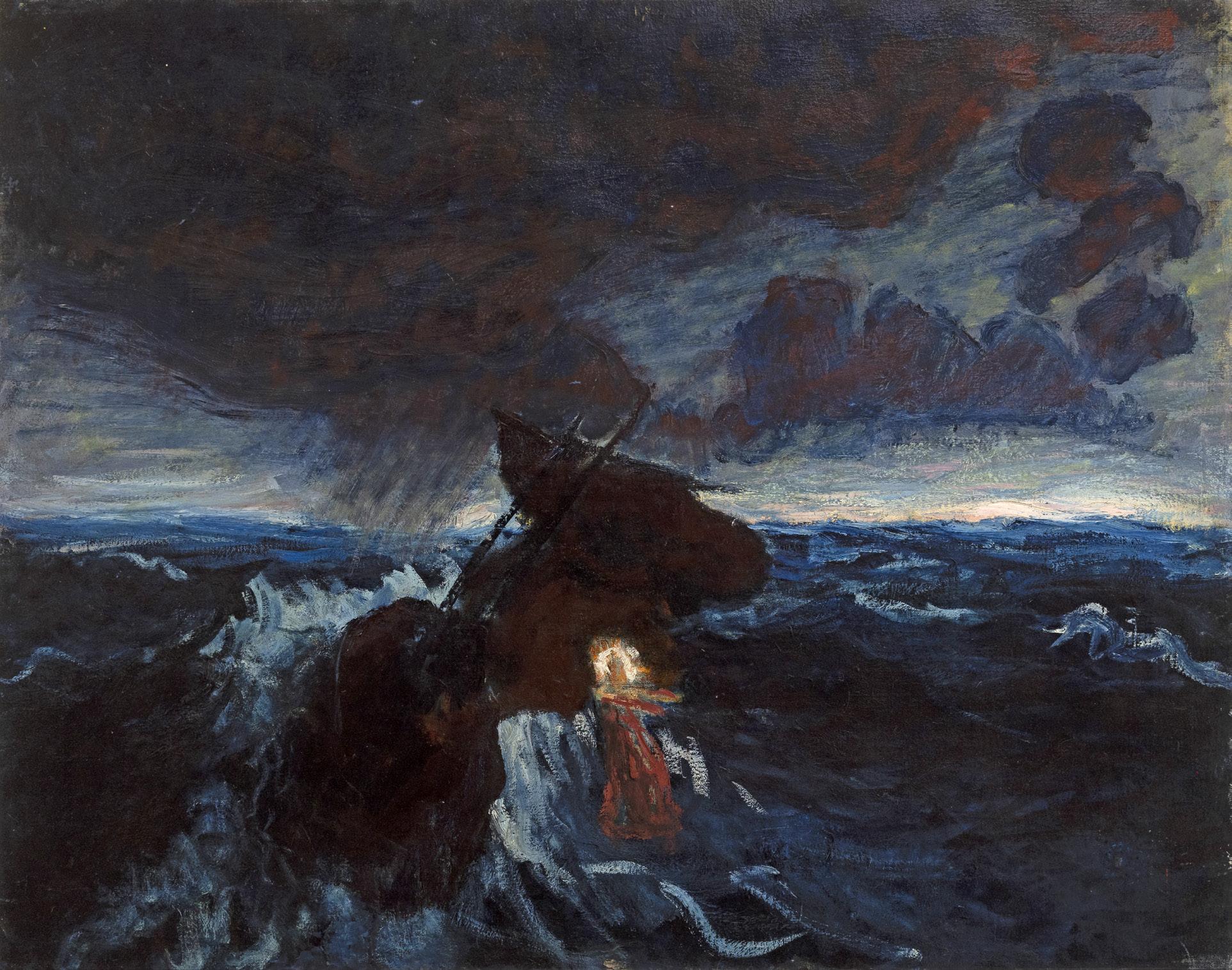
Clouds Over the Hill
Oil on canvas 41cm x 56cm (16.1 x 22”)
Provenance: Cyril de Putron, and thence by descent
€ 6,000 - 8,000
Russell was an Irish writer, editor, critic, poet, painter, Irish nationalist and a pacifist. He was also a mystic and a theosophist. His chosen pseudonym of Æ or AE represents ‘Æon’, a word used by the Gnostics, whose teachings he followed, describing an ‘emanation’ of mind and spirit. ‘He was a tolerant artist-philosopher, friendly towards all mankind, and his big enthusiasms were never mixed with venom ... He dabbled in Eastern mysticism a good deal, but his Irish humour peeped through, and his wit and wisdom, as well as his great reputation, drew constant visitors to his Dublin home. Perhaps he is best described as an Irish Tolstoy, with a tinge of Brahmin in his intellectual background’ (Exeter and Plymouth Gazette, 26 July 1935, p 11). Here is a flavour of his poetry, taken from Dusk (1906):‘Only in clouds and dreams I felt those souls in the abyss, each fire hid in its clod, from which in clouds and dreams the spirit rolls into the vast of God.’
De Putron, who owned this picture, was a Captain in the Lancashire Fusiliers stationed in Dublin during World War One, living at Bushy Park, near to Russell. His daughter Mary was a renowned stained glass artist and archaeologist.
*Subject to Import VAT - see p.9, note no.3
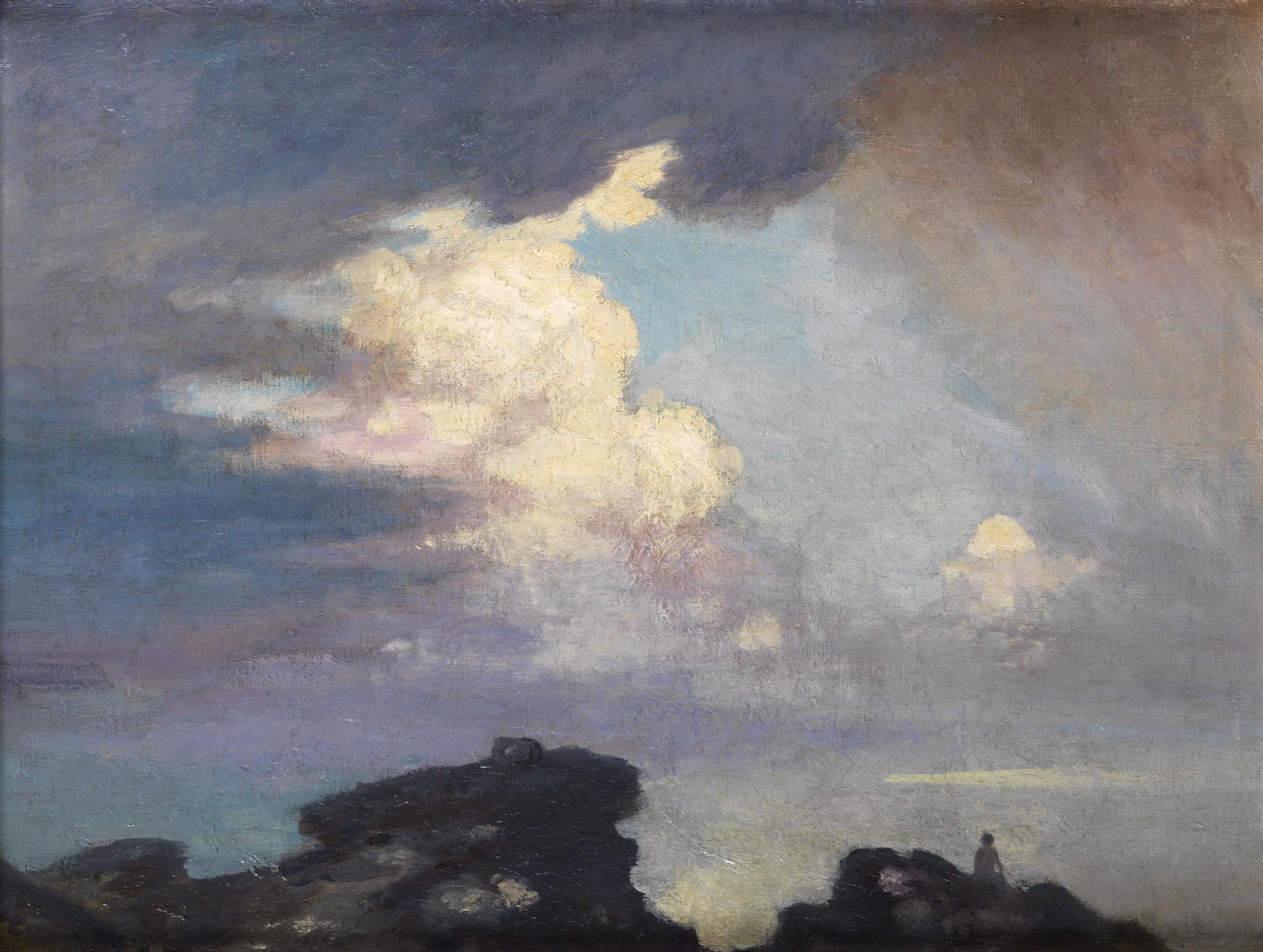
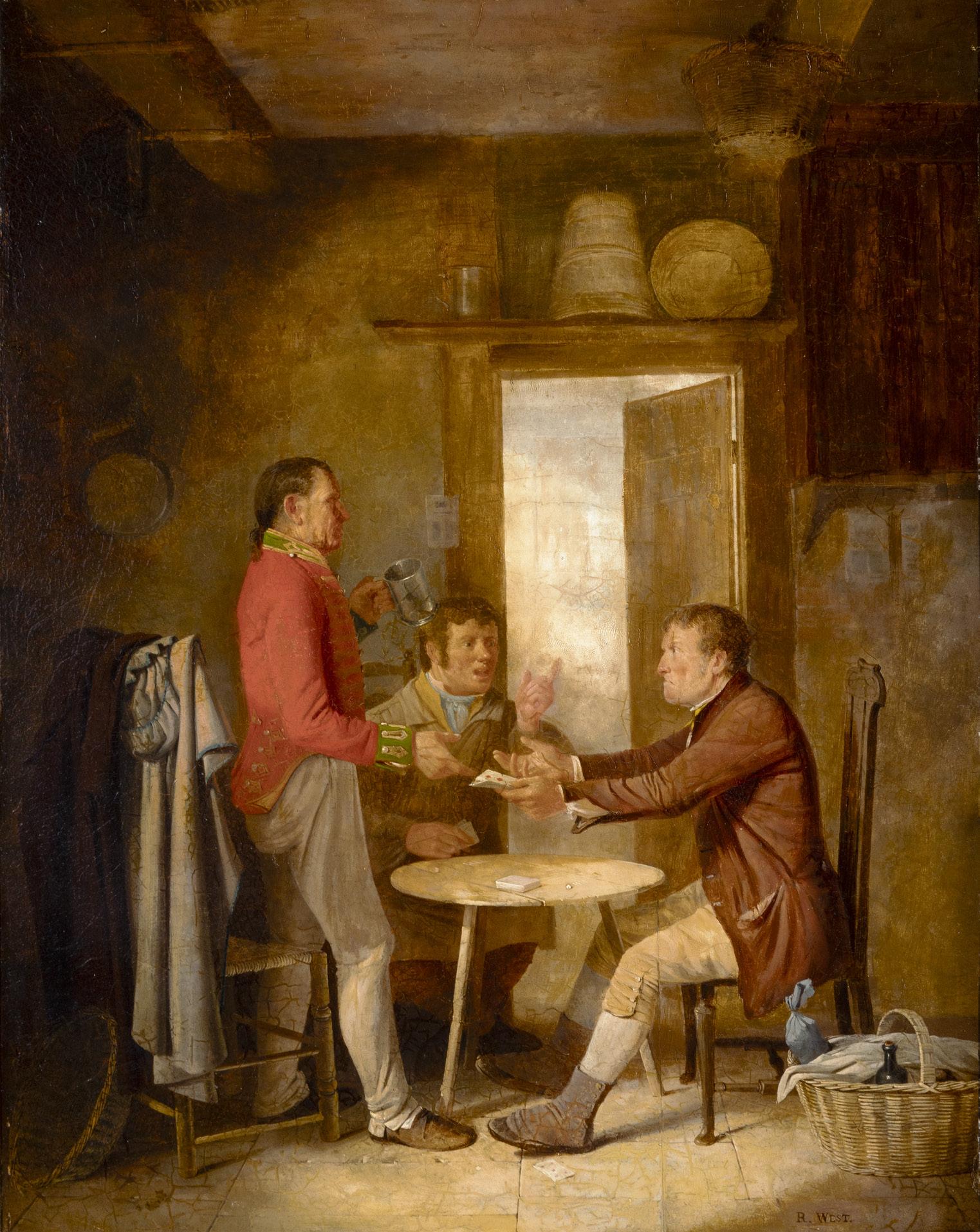
A Dispute Over Cards
Oil on panel 53 x 41cm (21 x 16”)
Signed
Provenance: Possibly Agnews, London, remains of their trade label is attached to the picture frame.
Sale Whytes, Dublin 9/10/2001, lot 90
€3,000/5,000
Robert Lucius West (c.1774–1850), Dublin-born portraitist, was the son and grandson of artists who both served as masters of the Dublin Society figure school, a position he eventually inherited. Trained under his father, he won early accolades and began exhibiting in 1800. A prize-winning portrait in 1807 funded his further study in London. Though initially overlooked for the mastership of the figure school in favour of George Grattan, West secured the role through a membership vote. He became known for military portraiture, genre subjects and religious works, contributing regularly to the Royal Hibernian Academy from 1826 to 1853, which he helped found. However, his later career was marred by criticism of his teaching and declining artistic output. He retired in 1845 and died in 1850.
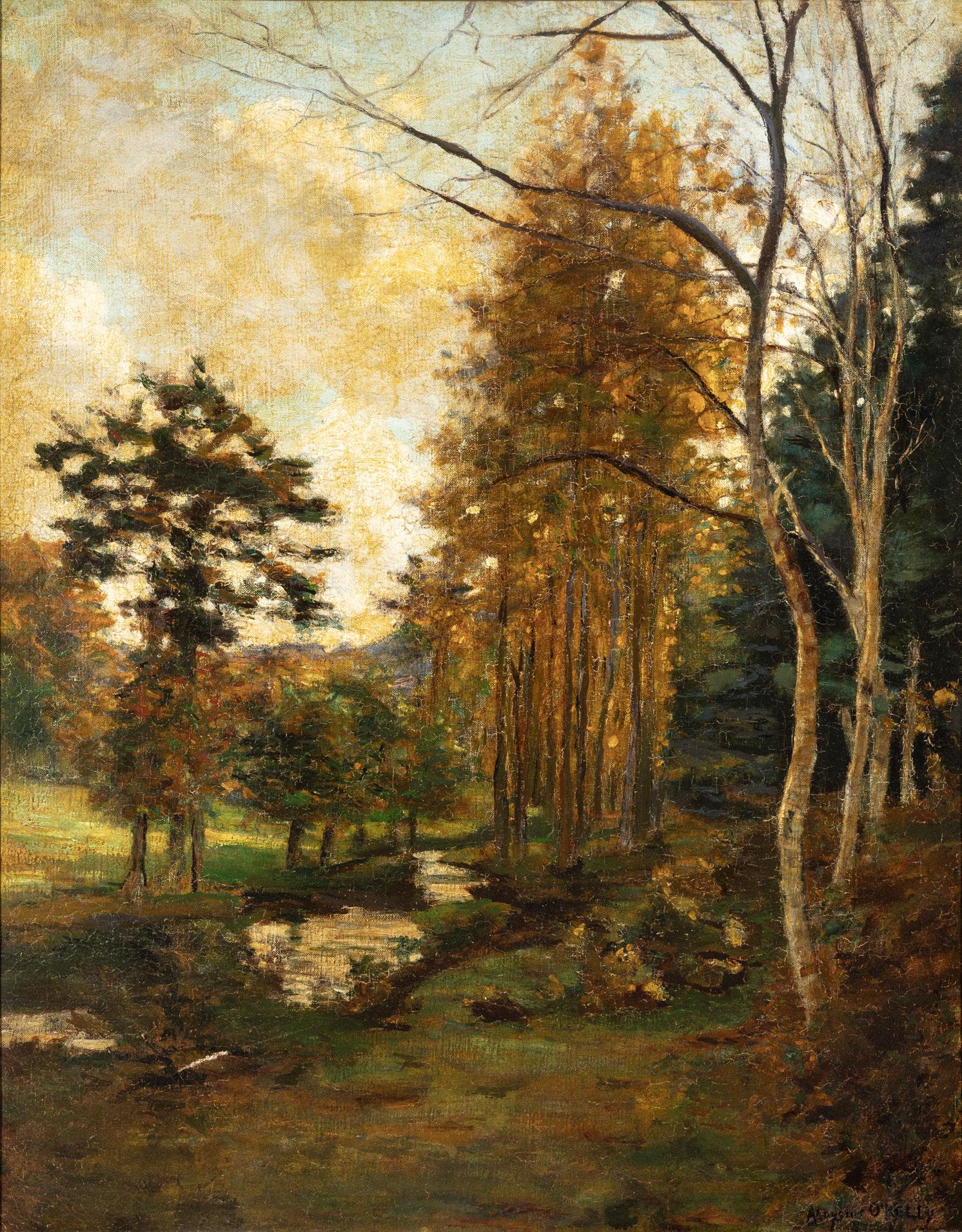
Oil on canvas, 70.5 x 55.5cm (27¾ x 21¾”)
Signed
This work is most likely a view in Maine, New England. O’Kelly, having lived in Concarneau and Connemara eventually emigrated to New York in 1895 where he painted both upstate rural and New York city scenes.
€ 3,000 - 4,000
NATHANIEL HONE RHA (1831 - 1917)
Mediterranean Coastal Scene
Oil on canvas, 85 x 127cm (33½ x 50’’)
Provenance: Collection of the Hon. Francis D. Murnaghan Jr., thence by descent
€ 7,000 - 10,000
Mediterranean Coastal Scene is a fine example of Nathaniel Hone’s South of France subjects painted on a very large canvas, - larger than the majority of his paintings. Hone made several visits to the Mediterranean in the 1870s and 1880s, painting at various locations along the coast, for instance at Cannes, Antibes, Nice and Villefranche, at Cap St. Martin, St. Jean-Cap Ferrat, Beaulieu, Ezé and Menton, and across the border to Bordighera in Italy. Having spent many years studying in Paris, painting in the Forest of Fountainebleu, then returning to Ireland, the sunshine and blue skies, the quality of light, the vegetation and the azure sea of the Riviera were a revelation to him. He was inspired to paint a series of colourful, light-filled watercolours and oils. These form a unique body of work in Hone’s oeuvre. Hone’s Mediterranean pictures were the first paintings which he exhibited at the Royal Hibernian Academy in Dublin in the 1870s.
During this period many French artists were drawn to the South of France, including Harpignes and Ziem, who Hone had known at Barbizon, and Impressionists such as Renoir, Berthe Morisot and Monet.[1] The Riviera was also becoming increasingly popular as a destination for tourists seeking winter sunshine. Hone painted along the coast, and was drawn to the fishing village of Beaulieu with it’s nearby beach and stretch of cliffs, known as ‘Petite Afrique’ (Little Africa) for its sunny, temperate climate. Hone painted a series of watercolours and oils of this coastline. These include the superb canvases Mediterranean Coastal Scene, Beaulieu near Nice (featured in an exhibition at The Gorry Gallery in 2023),[2] and the present painting Mediterranean Coastal Scene. The two pictures seem to have been painted at the same location but from different viewpoints, featuring headlands, palm trees, aloes, distant cliffs and blue sea.
But in the present picture Hone takes an unusual approach to composition: rather than following a classical model of placing trees at one side or both sides of the foreground to frame the landscape, he places the palm trees, rocky bluff and aloes in centre left, allowing expanses of sky to be visible behind. There is another smaller painting of a Mediterranean Coastal Scene, in the National Gallery of Ireland (cat.no.1458), which features palm trees, aloes, blue sea and distant headland, but with a villa visible behind the trees.
Hone was fascinated by aloe plants, with their sinuous, spiky leaves and striking blue-green, viridian colour. They form a focal point in several Mediterranean paintings, and are painted in broad, defined brushstrokes, casting dark shadows beneath them. The fronds of the palm trees are highlighted with more slender, golden strokes. The foreground is freely painted in the manner that Hone used in later landscapes. The straight horizon line of the sea halfway up the picture, with pinkish-gold cliffs in the distance, anchors the composition. Hone adopts a delicate, scuffed technique in the sky – fading from blue to pale blue to a pale pink-ochre above the horizon.
Accustomed to the earthly and verdant tones and changeable skies of the Irish landscape, the sunshine, colours, pinks, blues and golds, and radiant light of the Mediterranean allowed Hone to experience nature in a new, freer way. His coastal South of France landscapes anticipate the colourful, sunny watercolours and oils that he was later to paint in Greece and Egypt.[3]
Mediterranean Coastal Scene is not signed or initialled, (Hone rarely signed his canvases), so it is not known if it was exhibited at the RHA in Dublin during his lifetime.
Julian Campbell
Notes
[1] See Jean-Paul Potron et Sylvie Amic, Paysage de Nice, Villefranche – Beaulieu du XVII ou XX siecles, Nice, 2000; and Patrick J. Murphy, An Art Lover’s Guide to the French Riviera, Letterfrack, 2016.
[2] See J. Campbell, ‘Nathaniel Hone, ‘Mediterranean Coastal Scene, Beaulieu, near Nice’ in Exhibition of 18TH– 20TH Century Irish Paintings, Gorry Gallery, 2023, p.16, cat.no.17.
[3] For a detailed study of Hone’s Greek paintings, see Anna Stathaki, An Irish Artist in Greece. A Study of Nathaniel Hone the Younger’s artworks in Greece between 1891 and 1892, MA dissertation, UCD, 2024.
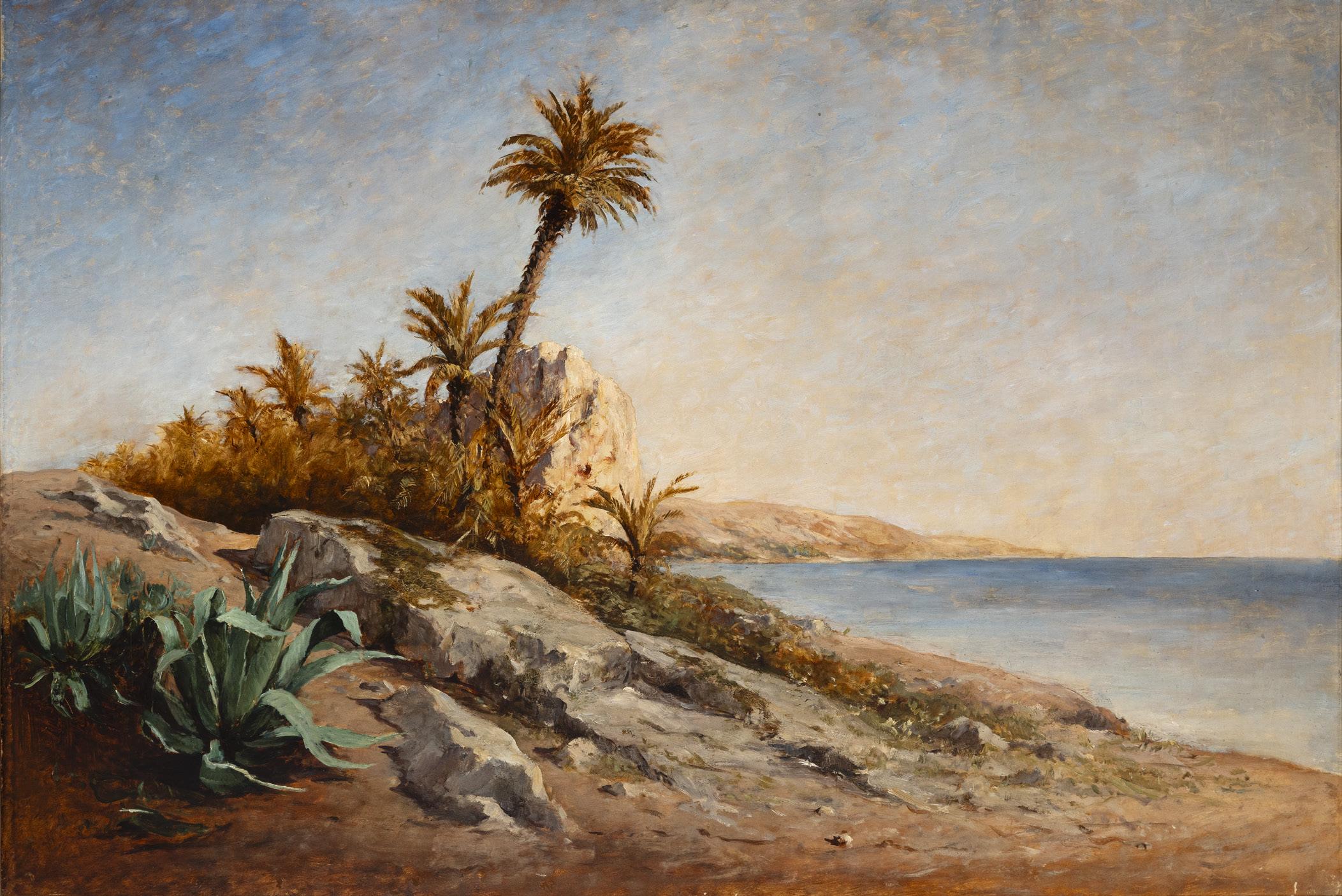

SIR GERALD FESTUS KELLY PRA, RHA, HRSA (1879 - 1972)
Portrait of Sir Kenneth Lee, Seated, 3/4 Length in a Grey Suit, Oil on canvas, 100 x 75.6cm (39½ x 29¾’’)
Provenance: Christies, South Kensington, 21 November, 1983; Sale, Christies, London, 10 May, 2007, lot 71; Collection of the Hon. Francis D. Murnaghan Jr., thence by descent.
Exhibited: London, Royal Academy 1955, no. 99
€ 800 - 1,200
Sir Kenneth Lee, 1st Baronet (1879 – 1967), was an English businessman and civil servant known for his role in the cotton industry and public service. Born into a family connected to the textile firm Tootal Broadhurst Lee, he became chairman and president of the company, pioneering scientific research and developing crease-resistant fabric processes. During WWI, Lee served on advisory committees for trade and industry, and in WWII, he was Director-General of the Ministry of Information, a trade envoy, and a Board of Trade representative in the US.
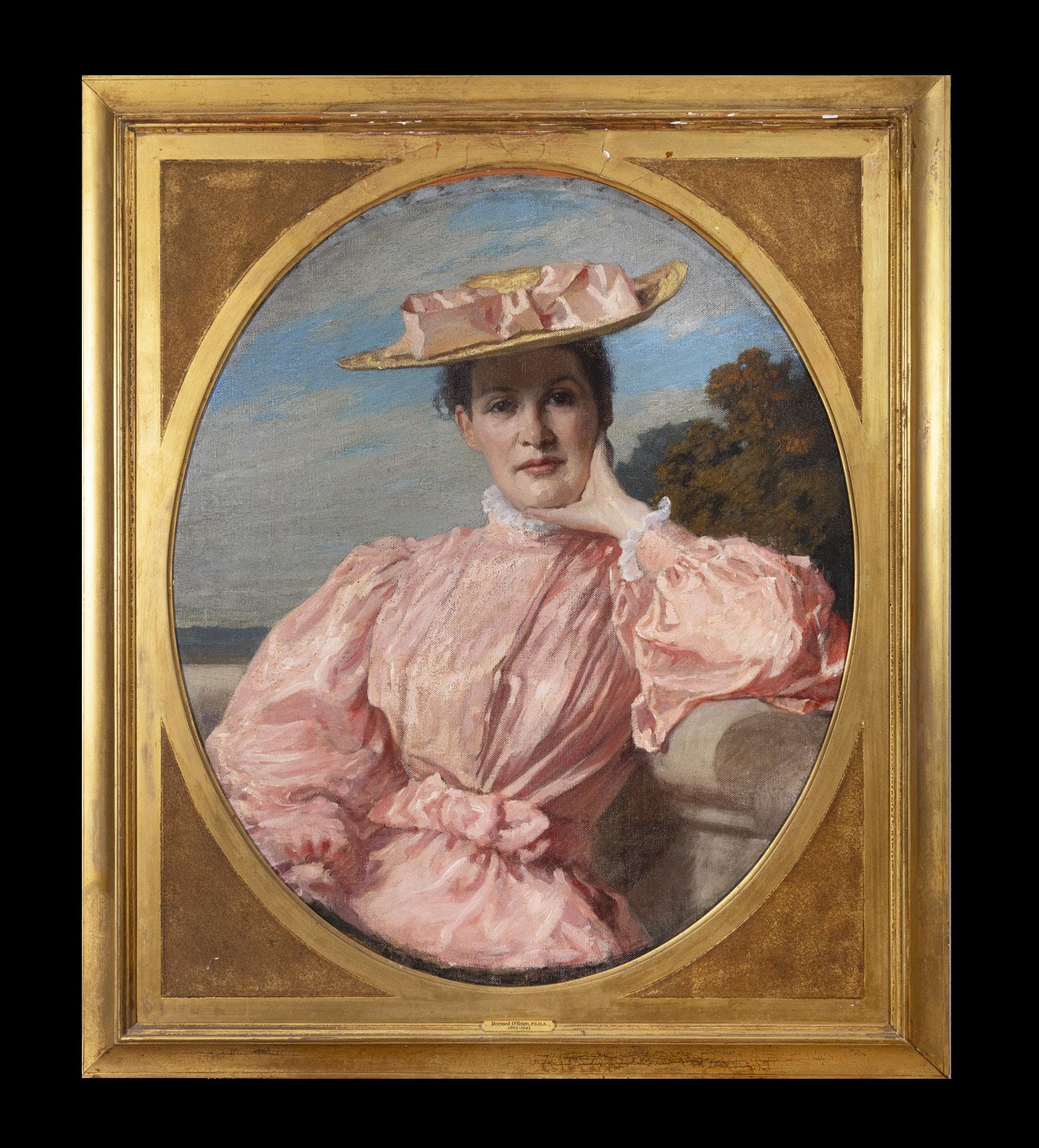
DERMOD O’BRIEN PPRHA (1865-1945)
Portrait of a Lady believed to be Lady Eva Farrer at Cahirmoyle
Oil on canvas, oval, 75 x 62cm (29½ x 24½”)
With studio stamp on stretcher verso, twice
Provenance: with Cynthia O’Connor Gallery, March 1983, Cat. no. 3; Collection of the Hon. Francis D. Murnaghan Jr., thence by descent.
Lady Evangeline (Eva) Farrer, second wife of Thomas Cecil, 2nd Baron Farrer, MP (1859-1940) of Abinger, Surrey was an active Liberal and suffragist. She died in 1968.
€ 4,000 - 6,000

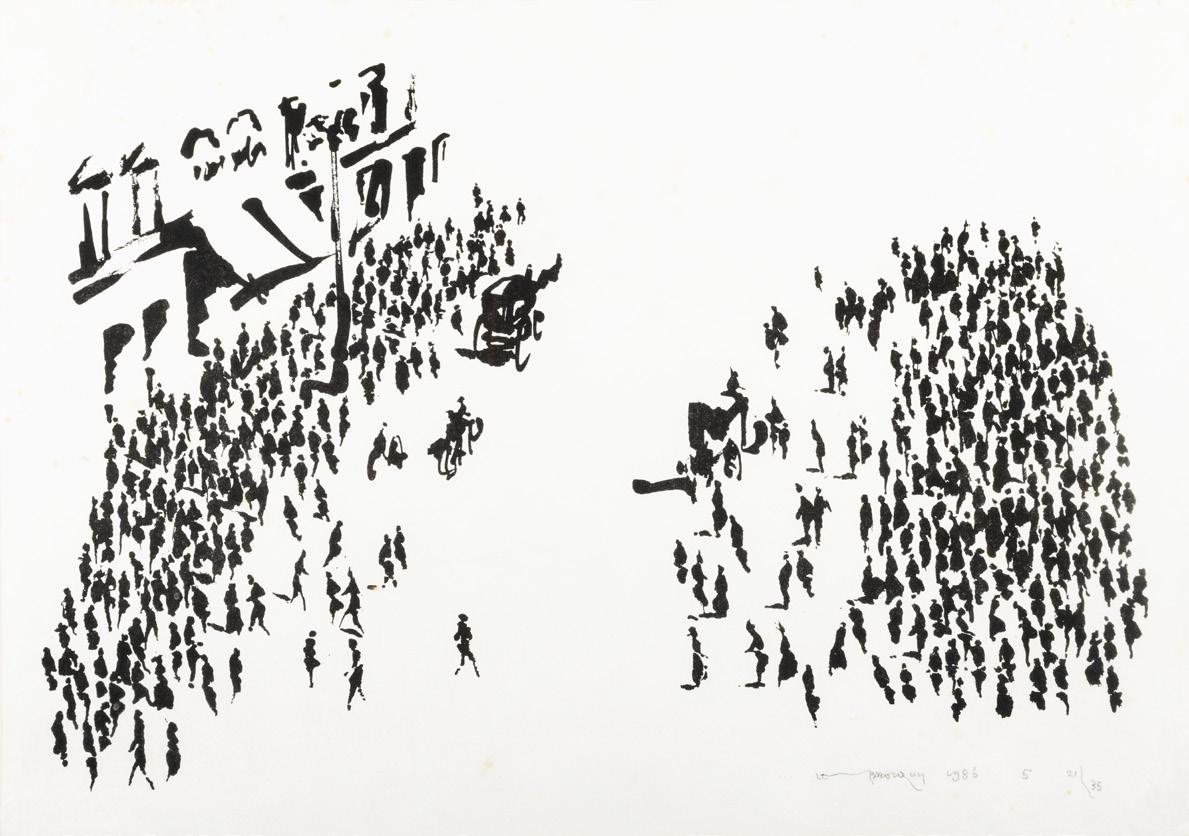
38
LOUIS LE BROCQUY HRHA (1916-2012)
Men and Horses (1969)
Lithograph, 53.5 x 37.7cm (21 x 18¾’’)
Signed and dated 1969 Edition no. 28/70
Provenance: With Taylor Galleries, Dublin, label verso
€ 1,000 - 1,500
39
LOUIS LE BROCQUY HRHA (1916-2012)
Sackville Street (1986)
Lithograph, 32 x 45cm (12½ x 17¾’’)
Signed and dated 1986
Edition no. 21/35
Provenance: With Taylor Galleries, Dublin, label verso
€ 1,000 - 1,500
40
LOUIS LE BROCQUY HRHA (1916-2012)
Head of James Joyce (1981)
Lithograph, 55.5 x 43.5cm (21¾ x 17’’)
Signed and dated 1981 Edition no.14/75
€ 1,500 - 2,000
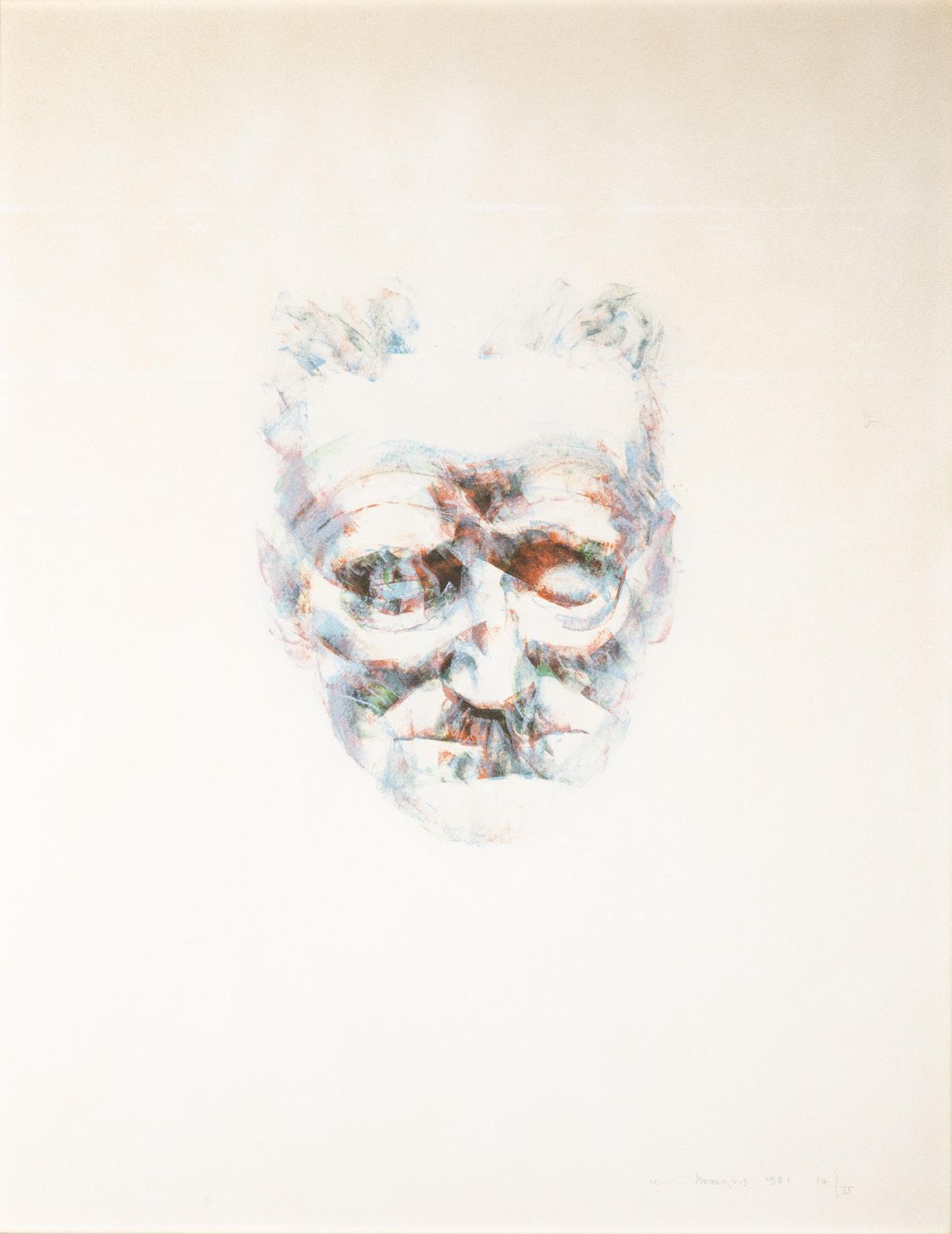
41
LOUIS LE BROCQUY HRHA (1916-2012)
Procession with Lillies (1986)
Lithograph, 29.5 x 48cm (11½ x 18½’’)
Signed and dated 1986, Edition no. 28/50
Provenance: With Taylor Galleries, Dublin, label verso
€ 1,000 - 1,500
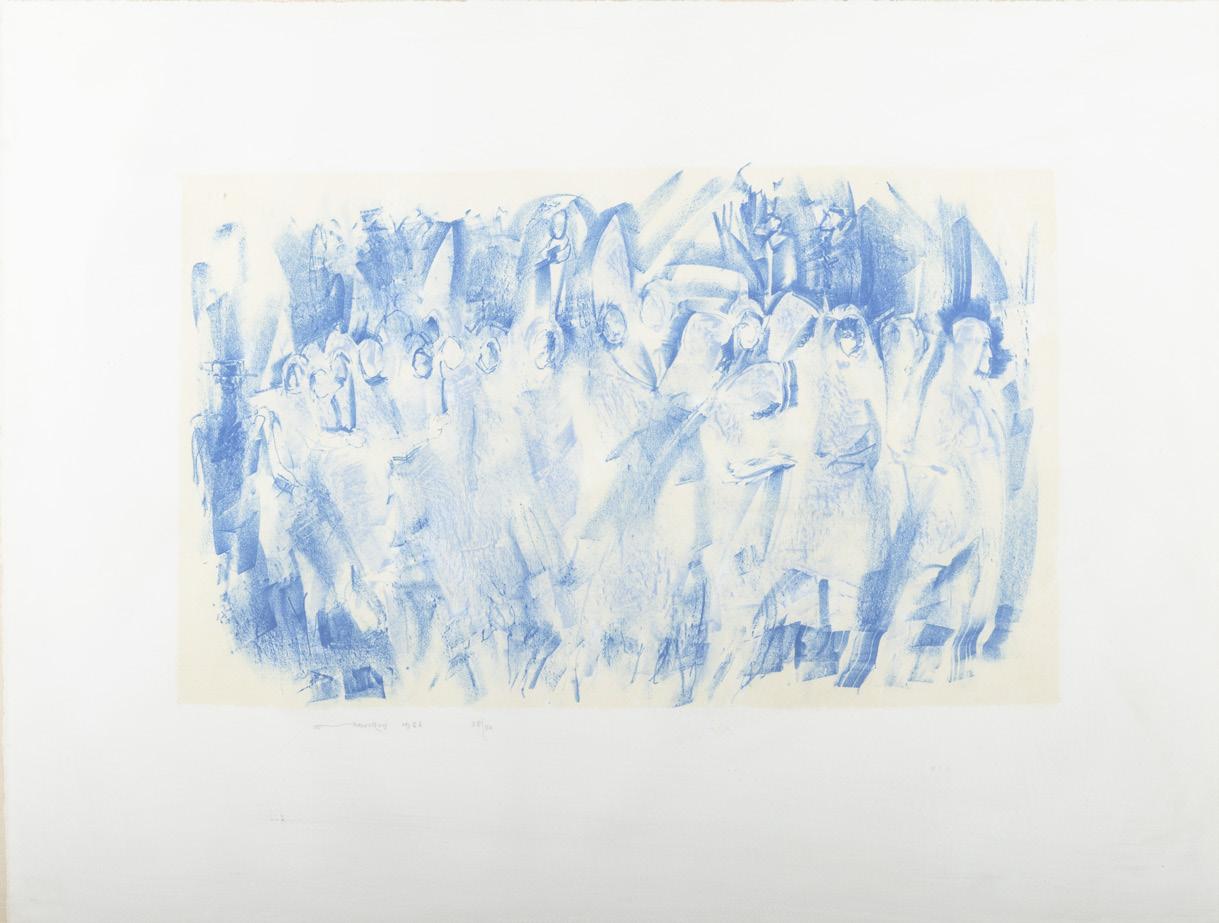
Cilia
Oil and acrylic on canvas, 153 x 122cm (60¼ x 48¼’’)
Signed, inscribed and dated 2002 verso
Provenance: With Kerlin Gallery, Dublin, label verso
€ 12,000 - 16,000
Mark Francis’ early interest in mycology and other aspects of botany indicated his fascination with the implicit, often invisible workings of the natural world, including human beings. From the early 1990s, this fascination led his painting into realms beyond the bounds of conventional human vision. Rather than simply illustrating the hidden worlds revealed by, notably, microscopes and telescopes of various kinds and capabilities, his paintings reach for a metaphorical grasp of what these expanded fields of perception tell us about the world of which we are a part, and about the nature of reality itself.
Here the title, Cilia, refers to the hair-like protrusions evident in most cells. While it was long appreciated that there were several kinds of cilia, it was only rather late in the day (towards the end of the 1990s) that the significance of the so-called primary cilia was realised across a range of vital cellular functions, so the painting has a certain timely currency. The strange, hallucinatory cellular domain became dramatically visible during the 20th century with the development of the scanning electron microscope. Francis’ painting plunges us into this otherworldly, sci-fi, micrographic territory. With vertical and horizontal sweeps, he builds a layered network of complex interconnectivity, evoking constantly dynamic processes. The sharp focus of the foreground elements suggests a diagrammatic clarity, but yet never dispels a feeling of underlying, ominous mystery.
Born in Newtownards, Francis studied at St Martin’s and Chelsea in London, and has been based in London since. His work was included in the Royal Academy’s exhibition of work from the Saatchi Collection, Sensation, in 1997, and he has exhibited consistently and extensively nationally and internationally, including regularly at the Kerlin Gallery, Dublin.
Aidan Dunne, April 2025
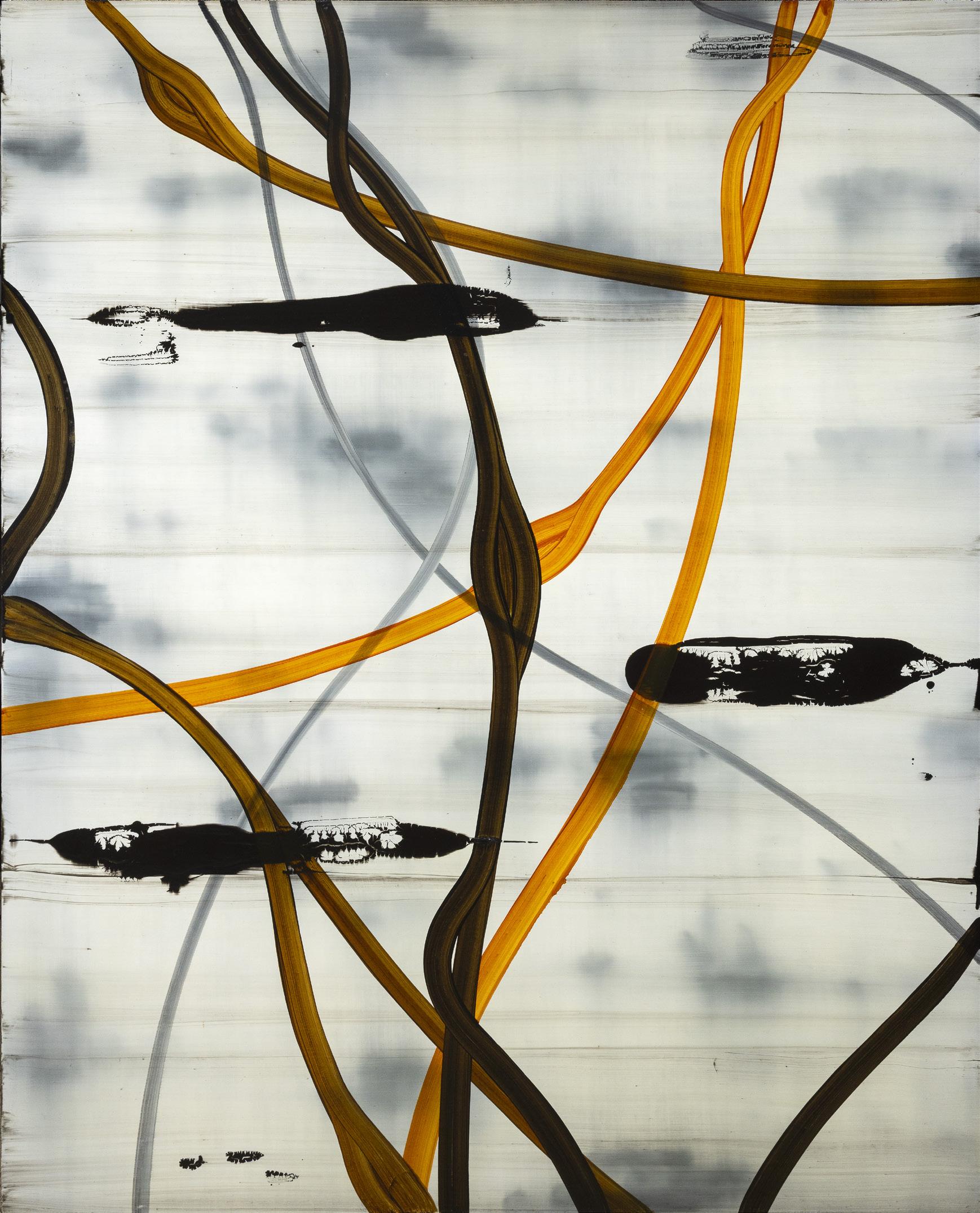
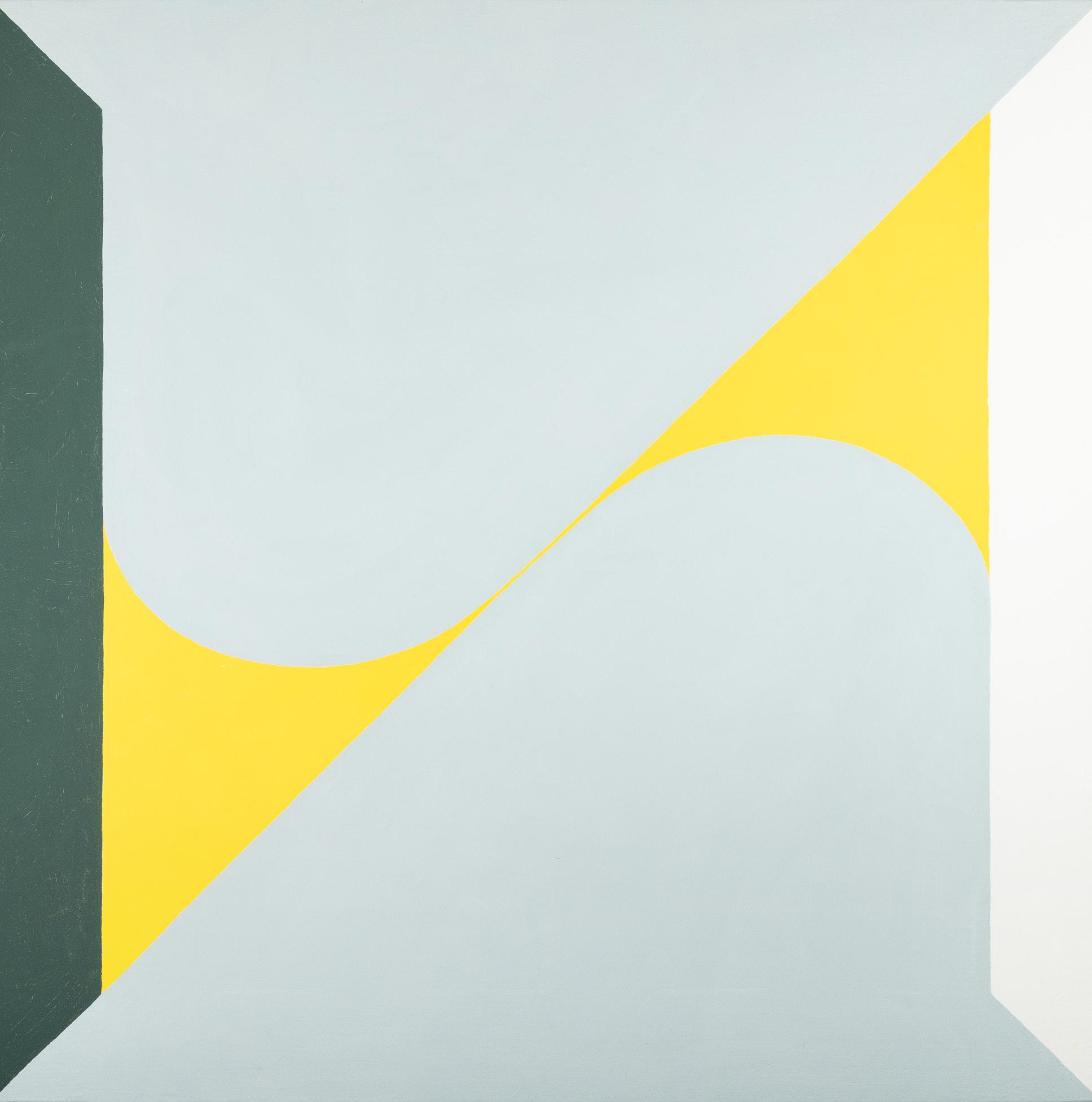
Oil on linen, 80 x 80cm (31½ x 31½’’)
Signed and dated 2002 verso
Provenance: With Kerlin Gallery, Dublin, label verso
€ 3,000 - 5,000
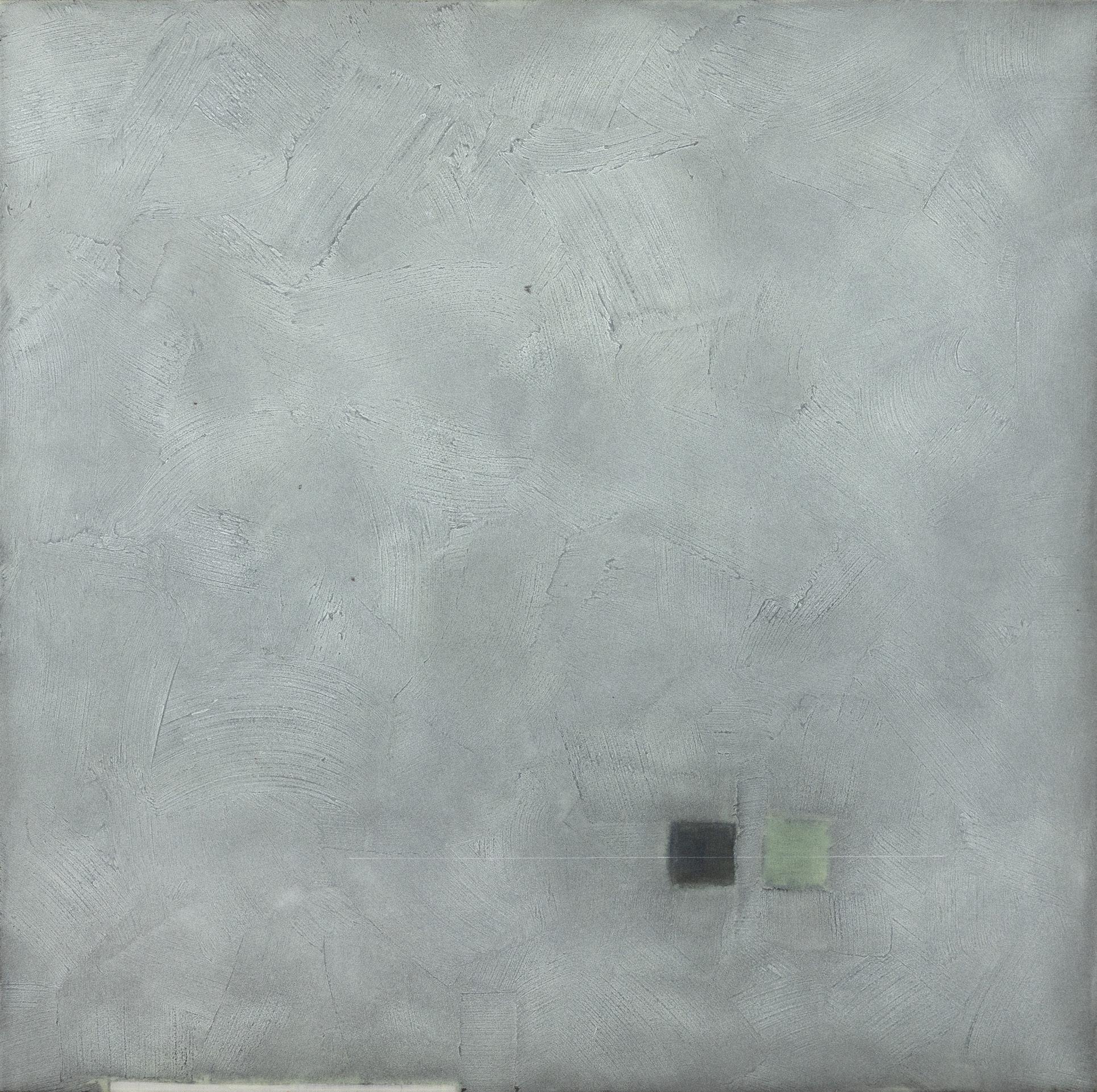
Mixed media on canvas, 120 x 120cm (47¼ x 47¼’’)
Provenance: Artist’s label verso
€ 4,000 - 6,000
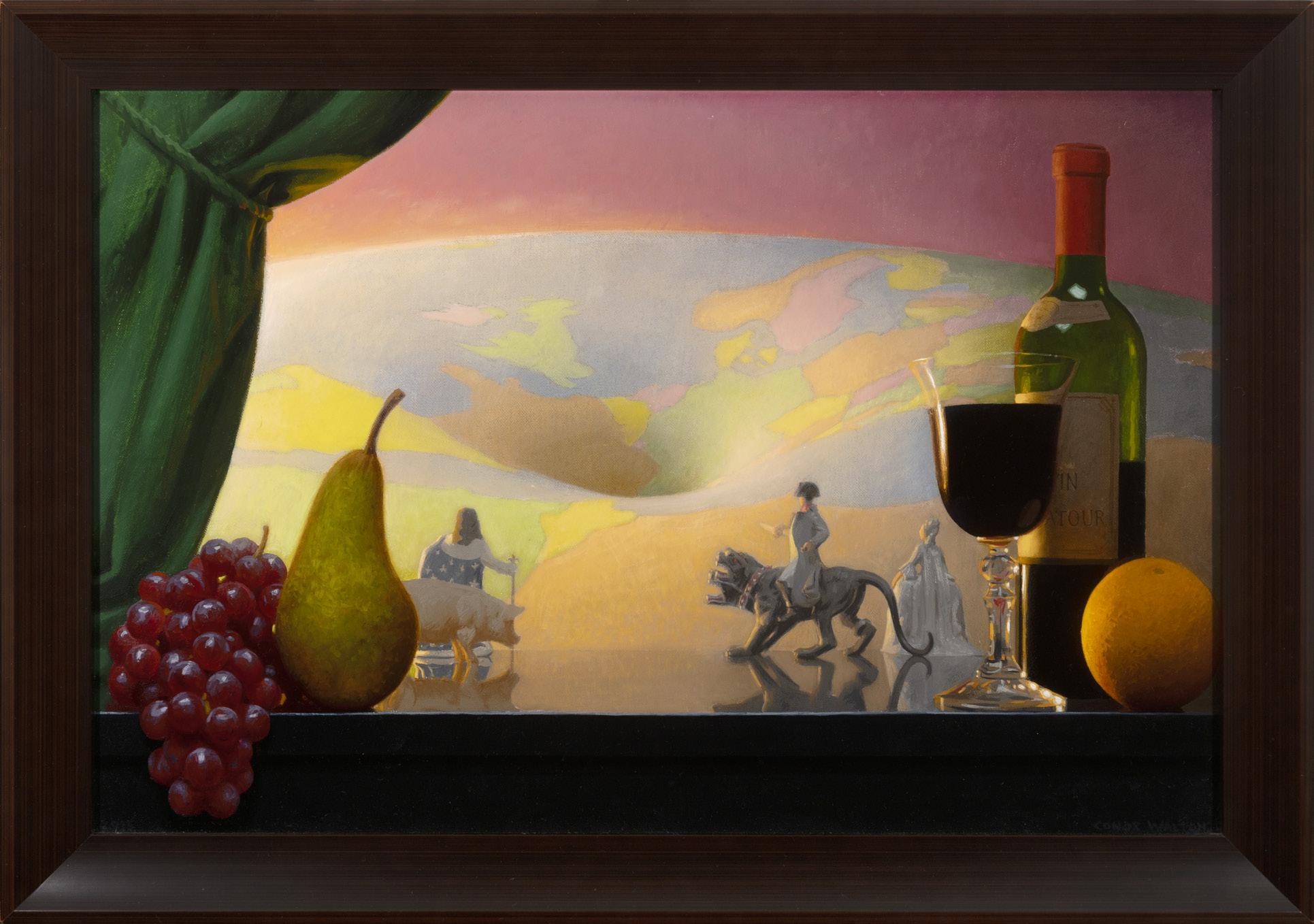
45
CONOR WALTON (B.1970)
Black Hole (2013)
Oil on canvas, 44.5 x 67.5cm (17½ x 26½’’)
Signed and dated 2013
€ 3,000 - 5,000
46
JOHN BOYD (B.1957)
Eidolon for a Navigator (1993-1994)
Oil on board, 60 x 49.5cm (23½ x 19½”)
Signed and inscribed artist label verso
Provenance: with Christopher Hull Gallery, label verso
€ 5,000 - 8,000
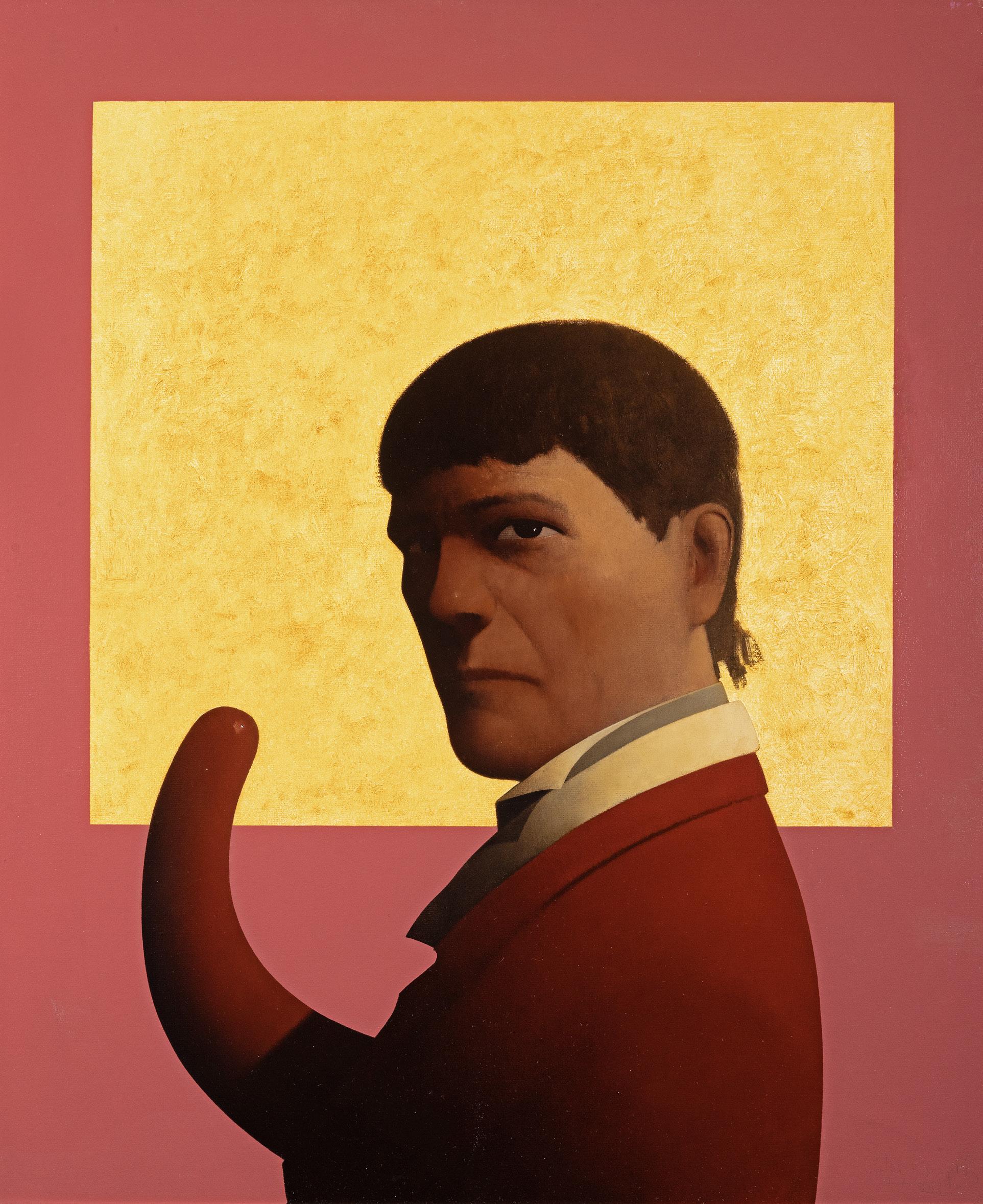

Cream (1994)
Oil on board, 37 x 42cm (14½ x 16½”)
Signed and dated 1994
€ 2,000 - 3,000
48
Urn and Lemons (2006)
Oil on board, 38.5 x 28.5cm (15¼ x 11¼”)
Signed and dated 2006
€ 2,000 - 3,000

The Path of the Lamb (1966)
Oil on canvas (pentaptych)
Panel 1: 102 x 70cm / Panel 2: 102 x 107cm / Panel 3: 102 x 43cm / Panel 4: 102 x 112cm / Panel 5: 102 x 61cm
Overall: 102 x 393cm (40¼ x 154¾”)
Signed and dated 1966; signed and inscribed verso
Provenance: Hendriks Gallery, Dublin; Private Collection
€ 10,000 - 15,000
This pentaptych is reminiscent of early Christian and Renaissance altarpieces that were often an inspiration for Patrick Pye’s work of religious subjects. Pye won the Mainie Jellett Scholarship, a stipend that allowed him to travel Europe and, in particular, to visit the National Museum of Barcelona where he was further inspired by its collection of Romanesque Catalan art. From here, much of Pye’s artistic output was dictated by Christian iconography and many of his pieces now hang in religious institutions.
This present work was commissioned by the Dominican Order as the altar piece for Saint Saviour’s Church on Dominick Street in Dublin in the 1960s. Since the Renaissance, polyptych panel compositions were often used by artists, allowing multiple narratives to unfold across the panels. This was particularly pertinent in the Middle Ages and Renaissance period, when altar pieces and paintings in churches functioned as visual guides, for often quite complex theological ideas, for a mostly illiterate congregation.
The life of Christ was seen as an essential embodiment of Christian teachings. Over the five sections the Passion of Christ unfolds from the first panel depicting Jesus praying in the Garden of Gethsemane to the betrayal by Judas, the cloth of Saint Veronica, the crucifixion scene and finally the resurrection. The title of the work reflects the proclamation made by the disciple John, following Christs’ appearance to him, ‘Behold the Lamb of God, who takes away the sin of the world.’ (John 1:29).
Pye’s work as a stained glass artist is also evident here, in the use of multi-panel composition and the strong primary colours used within the work, to identify key figures within the narrative. The brushstrokes are applied in short, varied strokes, enlivening the surface of the composition. He alternates the sizes of the panels depending on the importance of events within the narrative. In the second panel, he has combined three scenes, the betrayal by Judas who approaches Christ in the centre, followed by the officers carrying spears to make his arrest and then in the lower left-hand corner, what appears to be the subsequent trial of Jesus before the Sanhedrin.
The final panel, possibly the most dramatic in terms of compositional arrangement, depicts Jesus’ resurrection from an open coffin, holding the Triumphal cross. He rises above a figure, presumably Mary Magdalene, who falls backward onto the ground in shock and terror. Pye has employed strong foreshortening techniques within this panel, placing the figure at the edge of the picture plane as if their extended arm is about to reach out beyond the frame.
An interesting inclusion in the narrative is the third panel depicting the cloth of Saint Veronica. It was an apocryphal event within the larger episode of the Stations of the Cross in which local a woman Veronica, so moved by the suffering of Jesus offers her veil to wipe his face. On returning the veil, his face was miraculously transposed onto it. She holds this up before another figure, who raises their arms in exaltation.
Niamh
Corcoran, April 2025
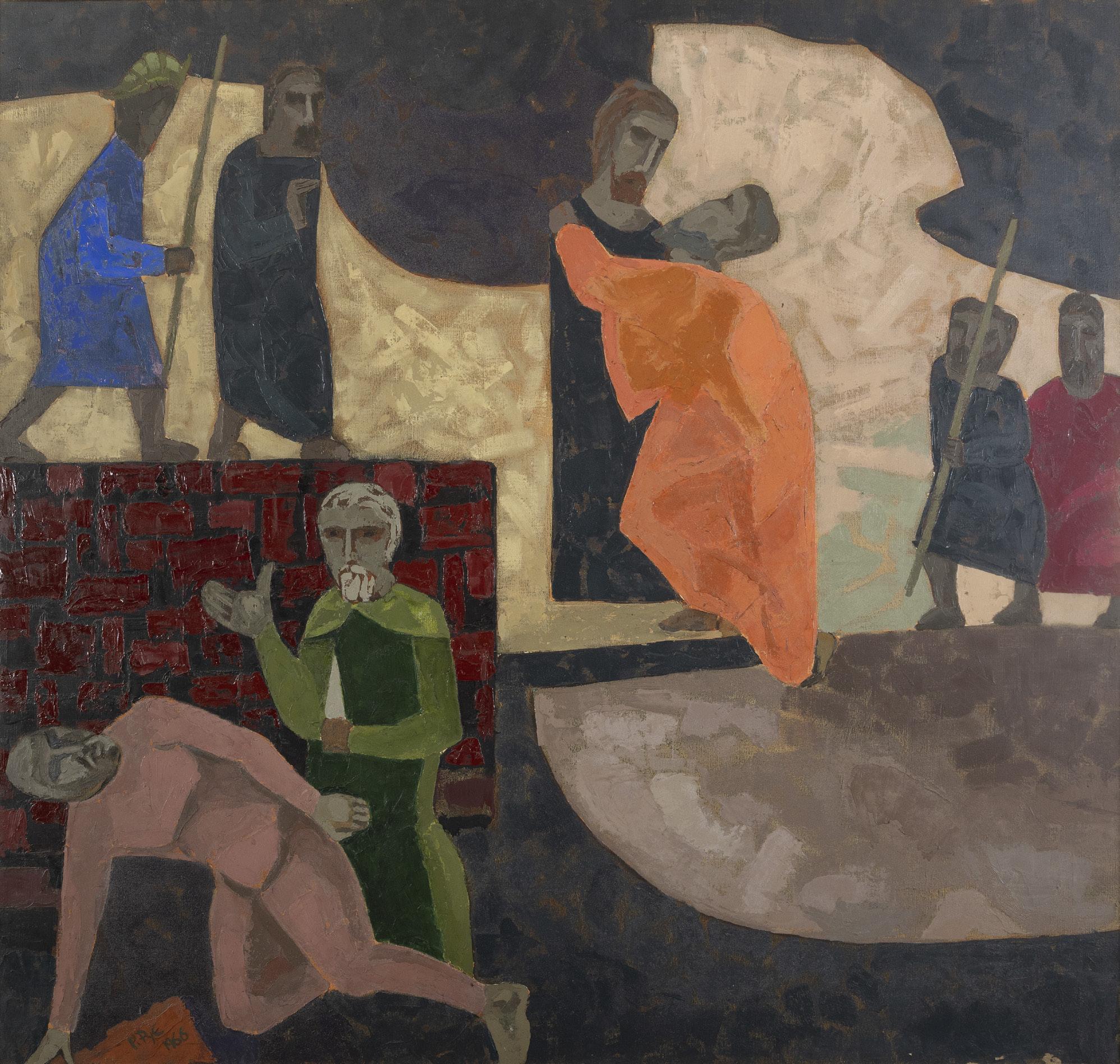
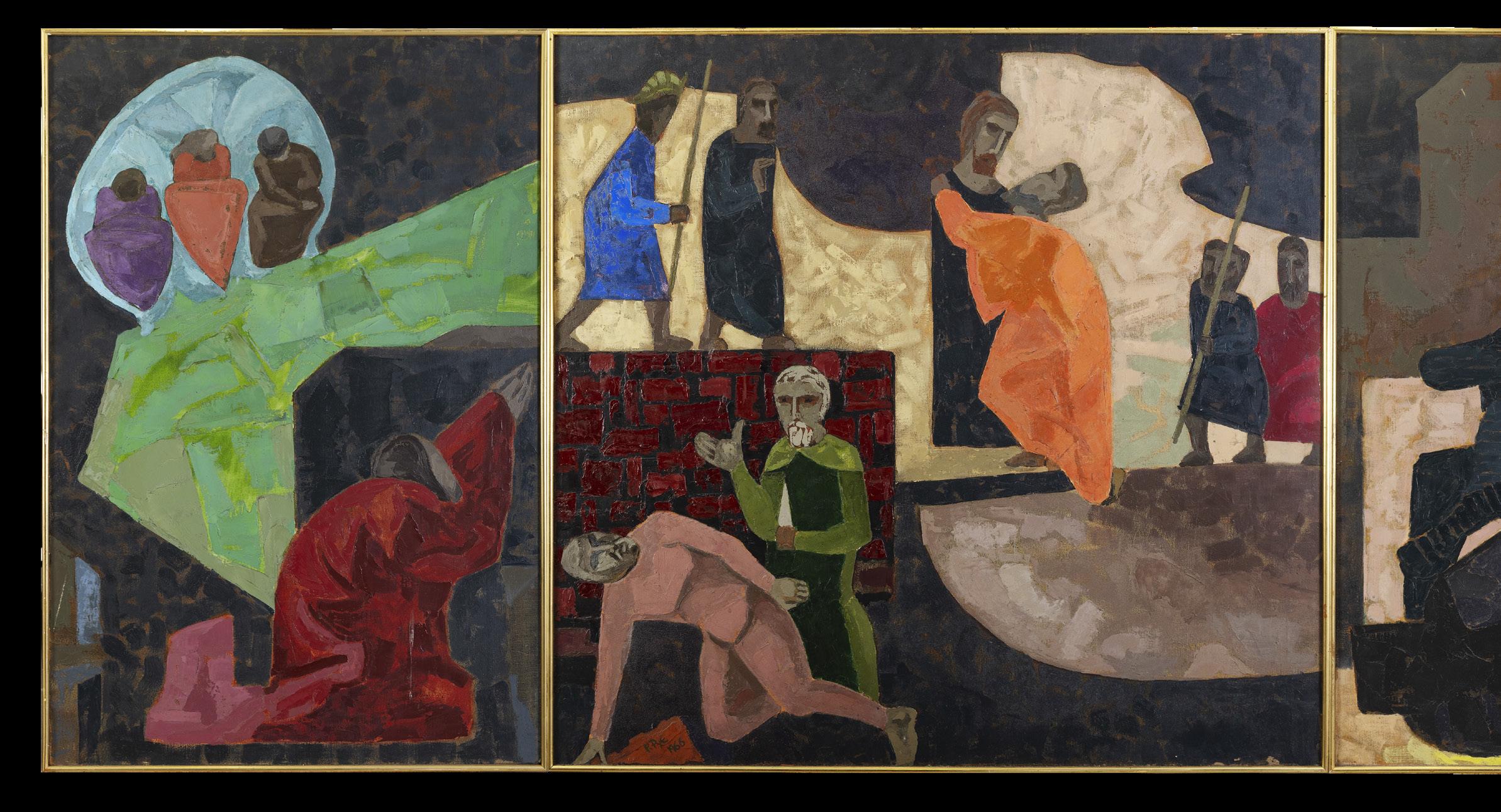
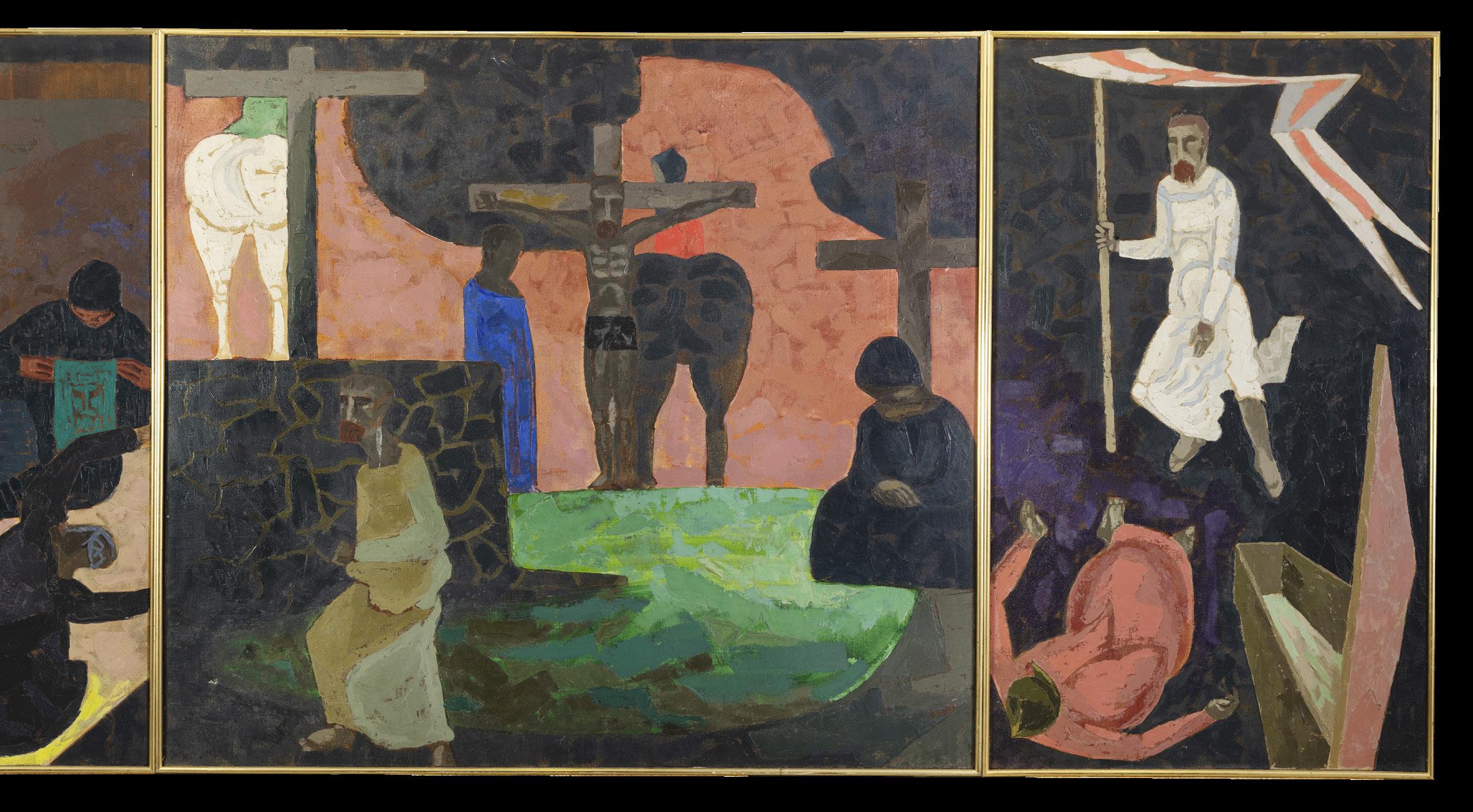
BASIL BLACKSHAW HRUA HRHA (1932-2016)
Green Landscape II (1973)
Oil on canvas, 45 x 45cm (17¾ x 17¾’’)
Signed; inscribed ‘Landscape - towards Co. Down from Springfield House, Magheragall’ verso
Provenance: With Tom Caldwell Gallery, Belfast, label verso
€ 8,000 - 12,000
Basil Blackshaw’s friend, Hugh McIlveen, recalled that, at a time when the painter was experiencing some personal difficulties, Tom Caldwell ‘made a small flat available to [him] at ‘Springfield’, the large Victorian house in Magheragall, which he had purchased in the early sixties.’ An inscription on the stretcher of Green Landscape II (although different from the title) locates the present work at Springfield, and demonstrates the artist’s move towards a slightly lusher and less austere style of working in the early 1970s, which was perhaps more concerned with mood than structure.
Like most Blackshaw landscapes of the 1960s and 1970s, the artist engages with a large and expansive space, but while the earlier paintings of Divis and Black Mountain are preoccupied with the distant hills and the space across the valley, in the present painting, the view is more enclosed and there is a very human scale in the manner in which Blackshaw leads the viewer through a succession of fields, rising up towards the horizon, with the detail and energy in the foreground a reminder of the artist’s presence.
Blackshaw’s palette in this period is generally more naturalistic, and demonstrates the powerful, and perhaps restorative, effect that particular landscapes still retained on him, even at a point in his career when his paintings of racehorses, dogs and cockerels had begun to define his work for many collectors.
Dickon Hall, April 2025
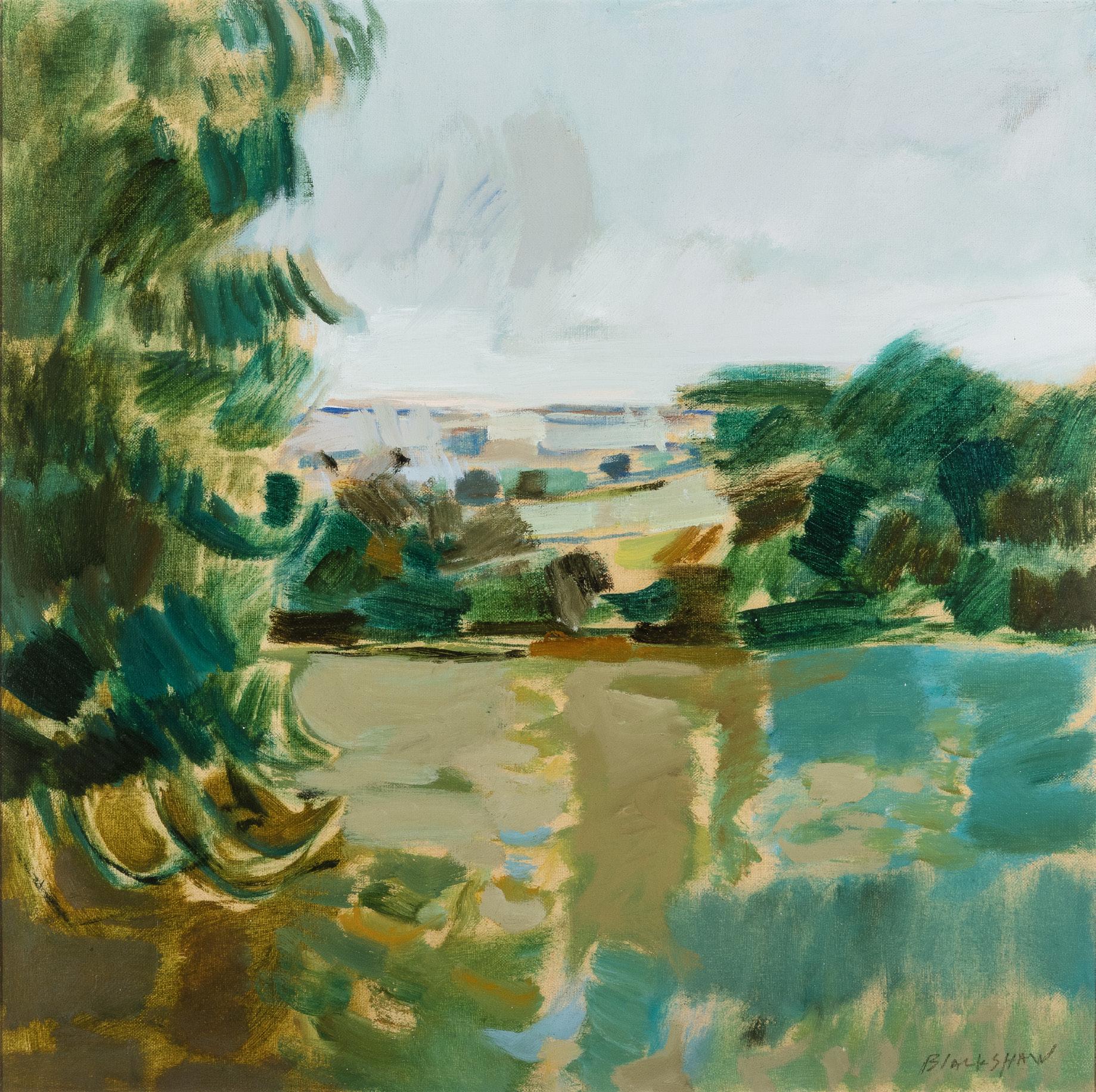
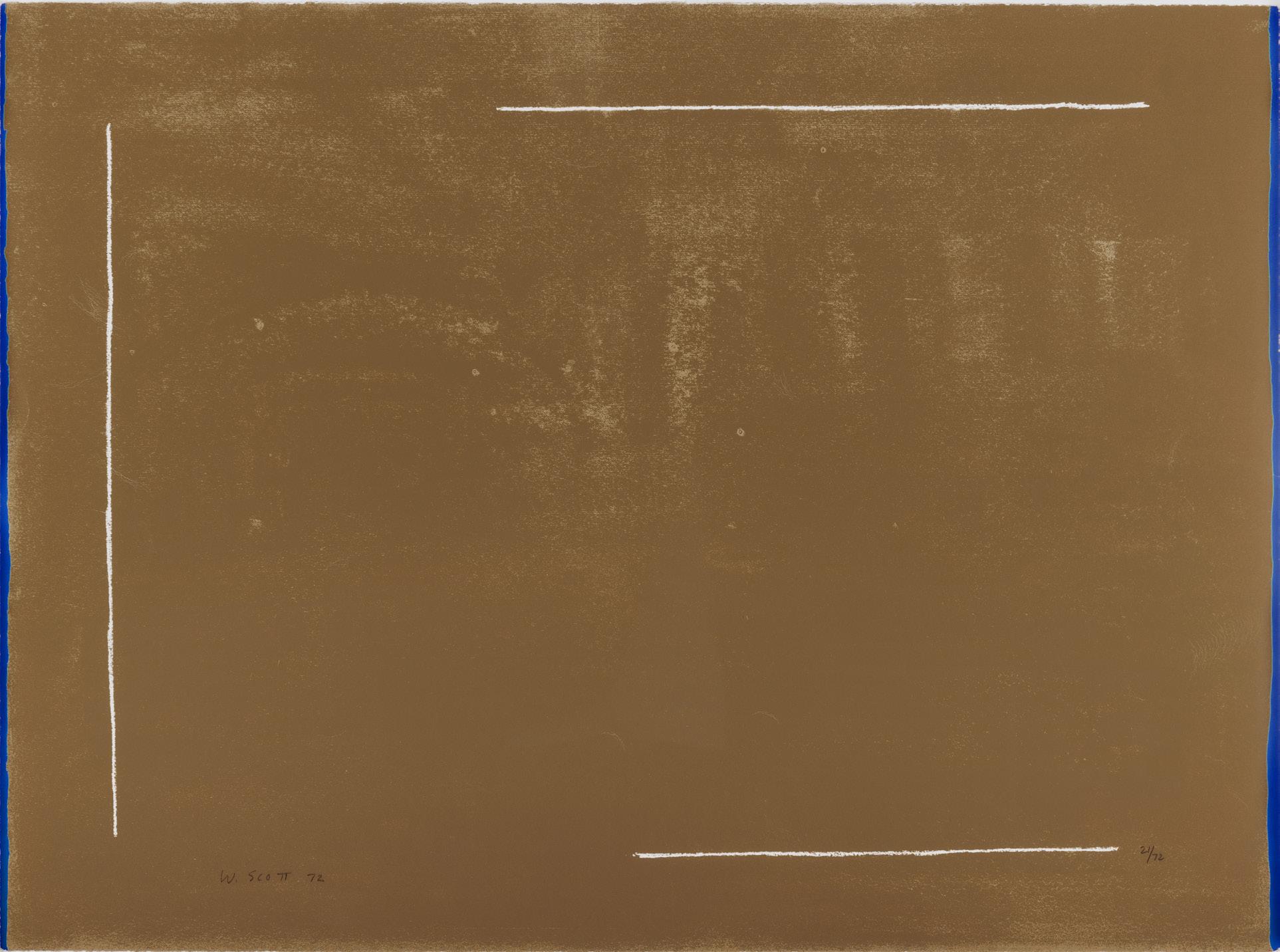
51
WILLIAM SCOTT CBE RA (1913-1989)
Brown Field Defined (1972)
Screenprint, 58 x 78.5cm (22¾ x 30¾’’)
Signed and dated (19)’72
Edition no. 21/72
€ 2,000 - 3,000
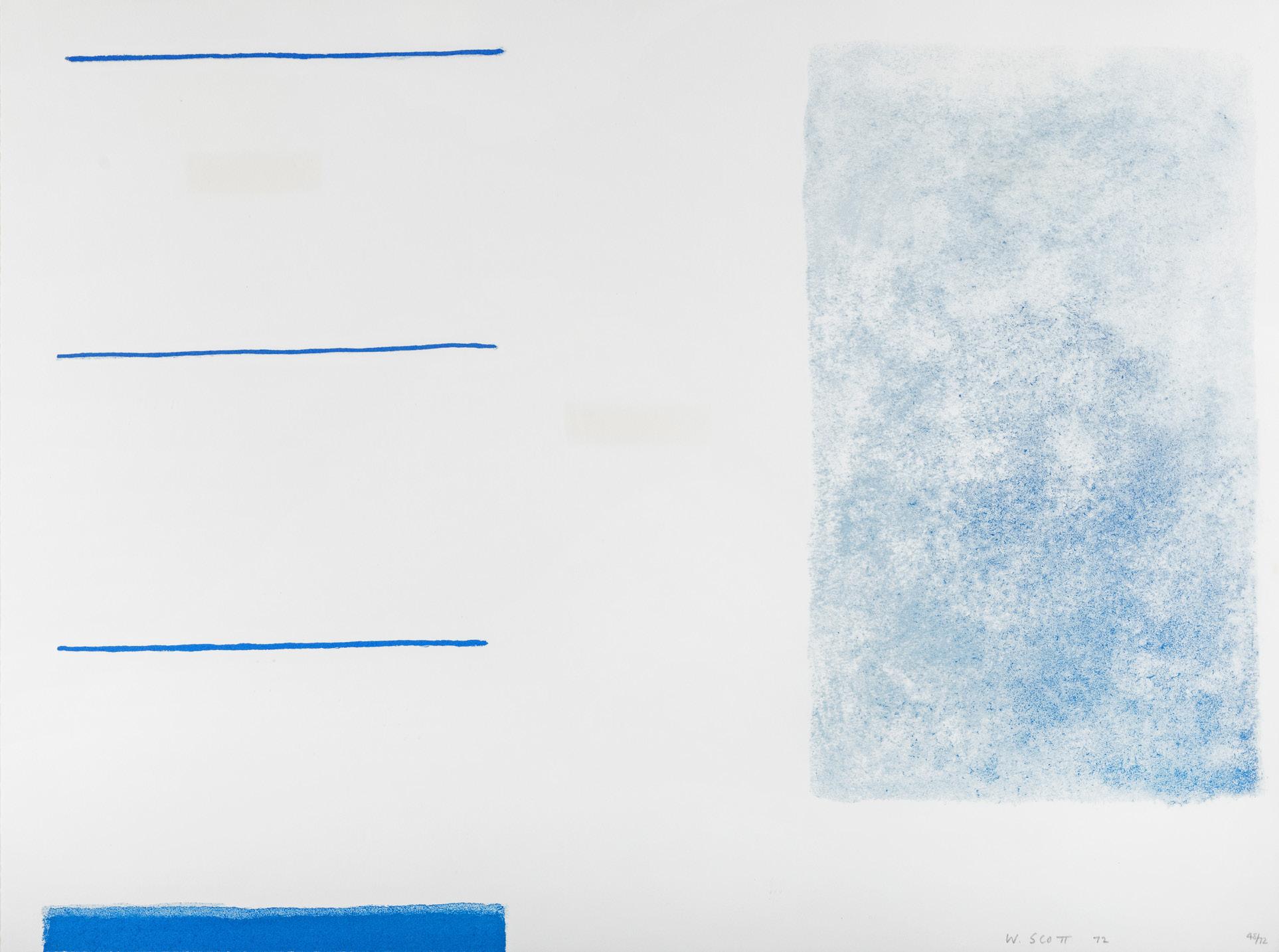
52
WILLIAM SCOTT CBE RA (1913-1989)
White Predominates (1972)
Screenprint, 59 x 78cm (23¼ x 30¾’’)
Signed and dated (19)’72
Edition no. 48/72
€ 2,000 - 3,000

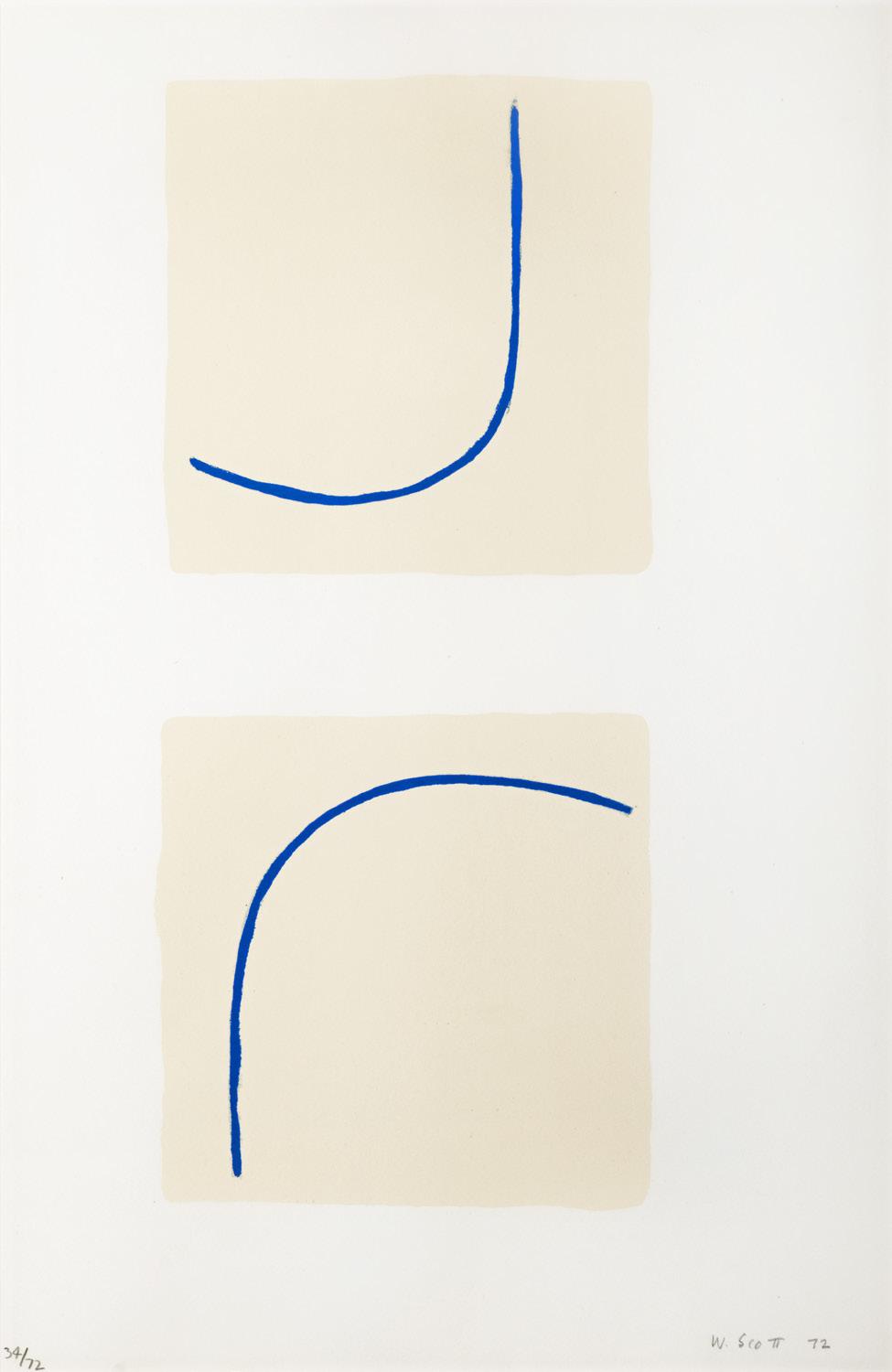
53
WILLIAM SCOTT CBE RA (1913-1989)
Lines with Breadth Superceded (1972)
Screenprint, 58 x 40cm (22¾ x 15¾’’)
Signed and dated (19)’72
Edition no. 43/72
€ 1,000 - 1,500
54
WILLIAM SCOTT CBE RA (1913-1989)
Forms Encaged (1972)
Screenprint, 56 x 36cm (22 x 14¼’’)
Signed and dated (19)’72
Edition no. 34/72
€ 800 - 1,200
55
SEÁN SCULLY (B.1945)
Heart of Darkness (1992)
Etching, aquatint, sugarlift & spitbite, 31 x 26cm - plate size (12¼ x 10¼’’)
Signed and dated 1992
Edition no. 13/20
€ 2,000 - 3,000
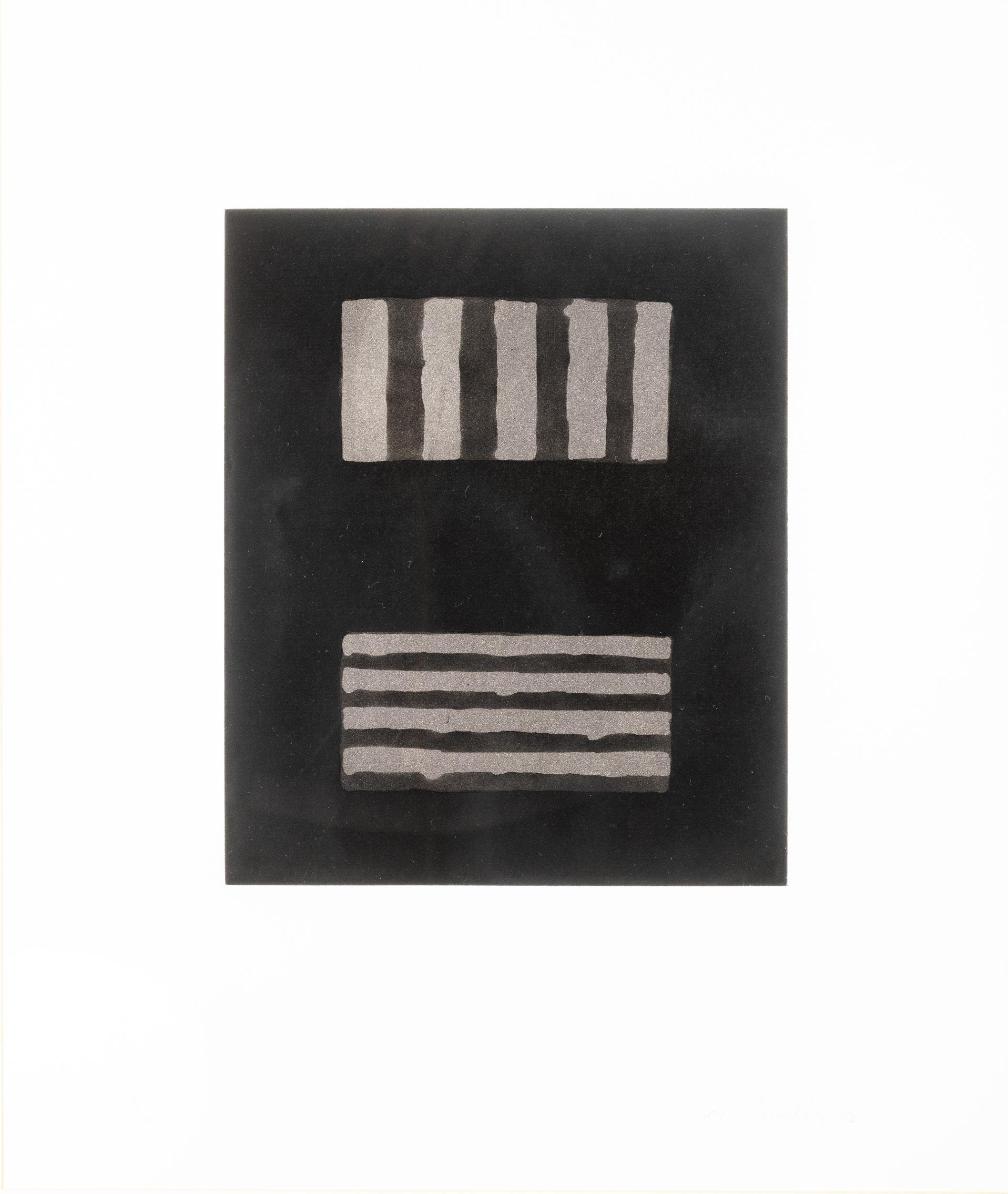
Silent Garden (1985)
Oil on board, 91 x 60cm (35¾ x 23½’’)
Signed with initials; also signed, inscribed, dated ‘Nov 1985’ and with artist’s oeuvre number 2678 verso
€ 12,000 - 15,000
Realising his artistic inclination relatively late in life, O’Malley turned to painting as a way to pass his convalescence when he contracted pleurisy and pneumonia in 1940. Perhaps because his illness kept him confined, O’Malley was drawn to the natural world.
Working as a banker, O’Malley was stationed in Arklow in the 1950s. Buying his first car, he spent his weekends driving through Wicklow and Kilkenny, sketching the world that he saw. Encouraged by what he was accomplishing, O’Malley travelled to St. Ives in 1955 and partook in a three-week painting course. Here, he encountered the peace and acceptance that his life in Ireland was lacking. A self-taught artist, his work did not fit into the ideals of rural Ireland, nor did it lend itself to the Dublin School of teaching. O’Malley was an outcast in his country but, in St. Ives, he found a community of kindred spirits.
In 1960, O’Malley left the narrow mindedness of Ireland behind and moved to St. Ives. He gave full reign to his artistic expression, adopting a philosophy greatly influenced by the Japanese idea of ‘shibui’. In this, beauty was to be perceived in the unfinished and the imperfect. O’Malley allowed his pieces to be impressions of the emotions evoked by his subjects. He rejected the term ‘abstract’ and instead described his oeuvre as ‘non-objective’ and ‘non-figurative’.
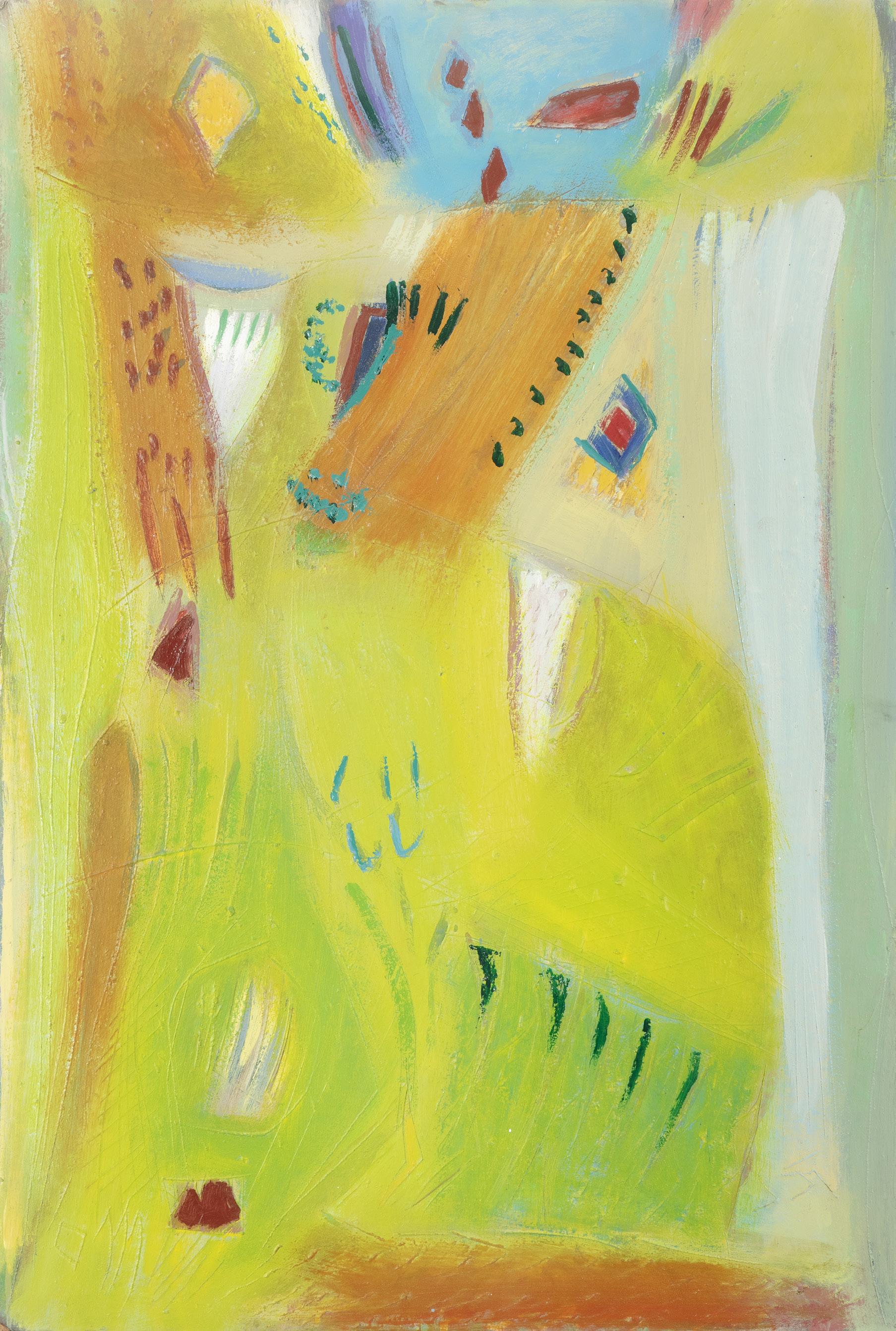
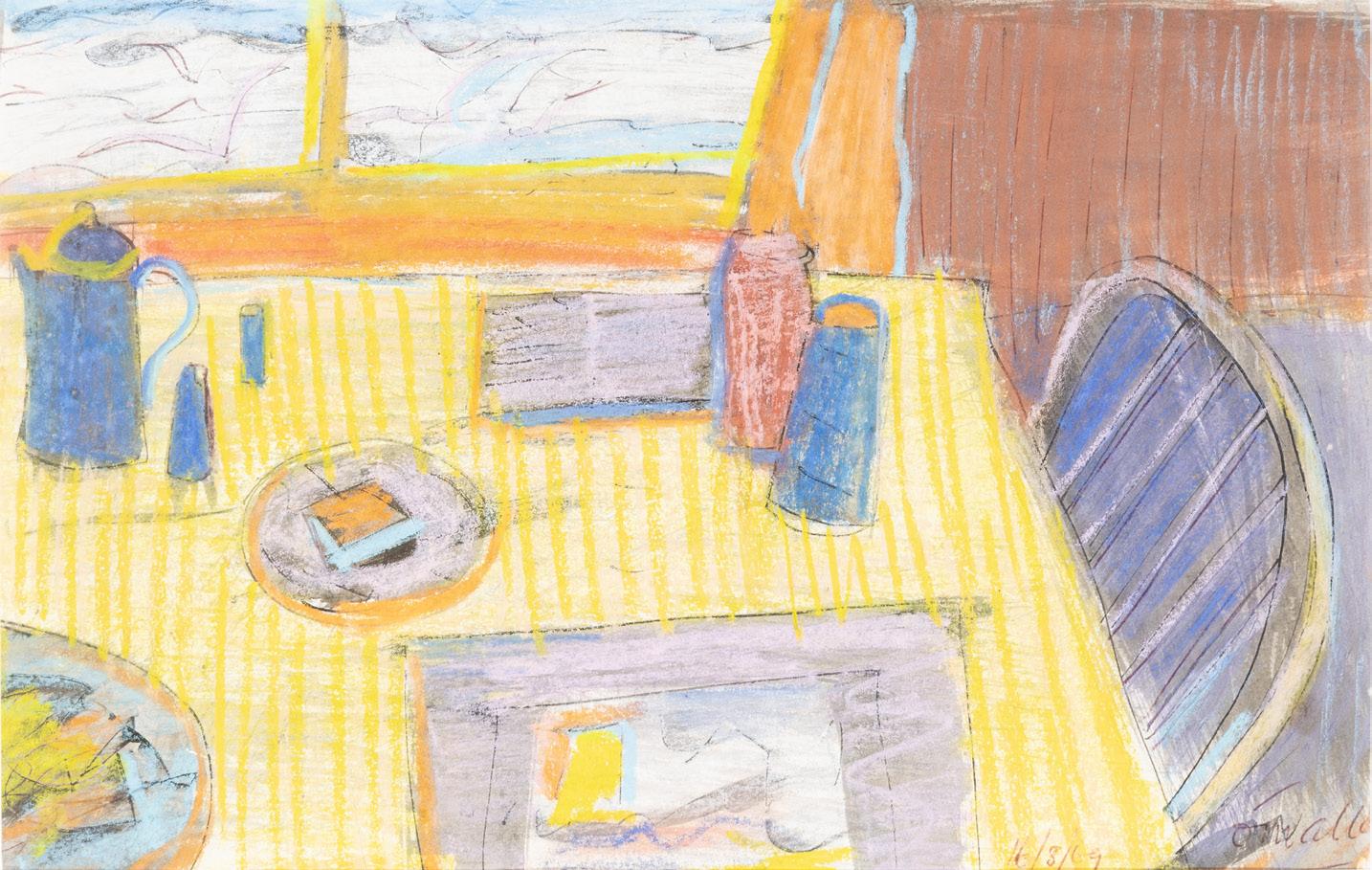
57
TONY O’MALLEY HRHA (1913-2003)
Interior, Trevayler (1969)
Mixed media, 21 x 31cm (8¼ x 12¼’’)
Signed and dated (19)’69
€ 800 - 1,200
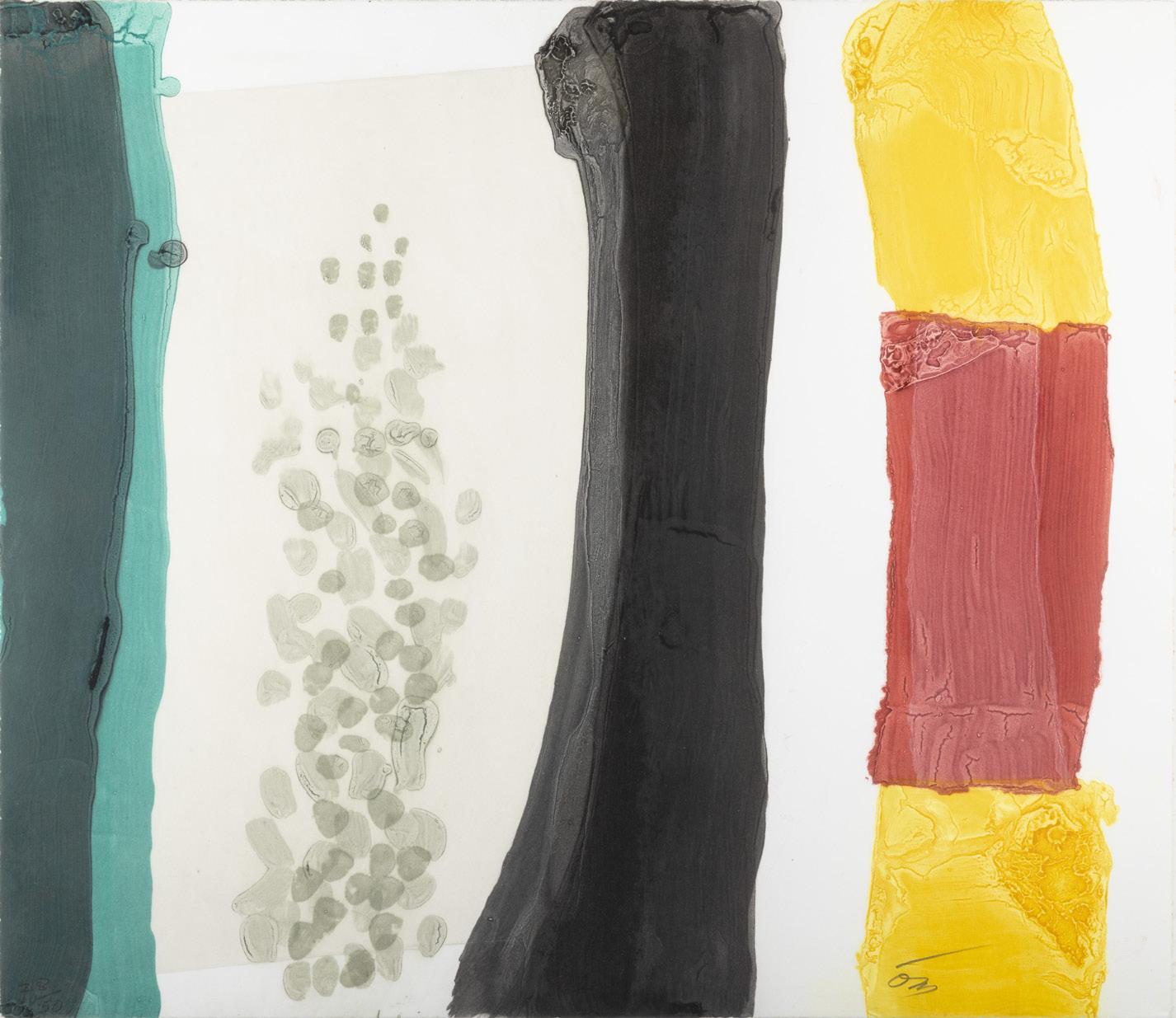
58
TONY O’MALLEY HRHA (1913-2003)
Untitled Abstract
Carborundum print , 53.5cm x 62cm (21 x 24½’’)
Signed with initials and numbered 28/50
€ 800 - 1,200
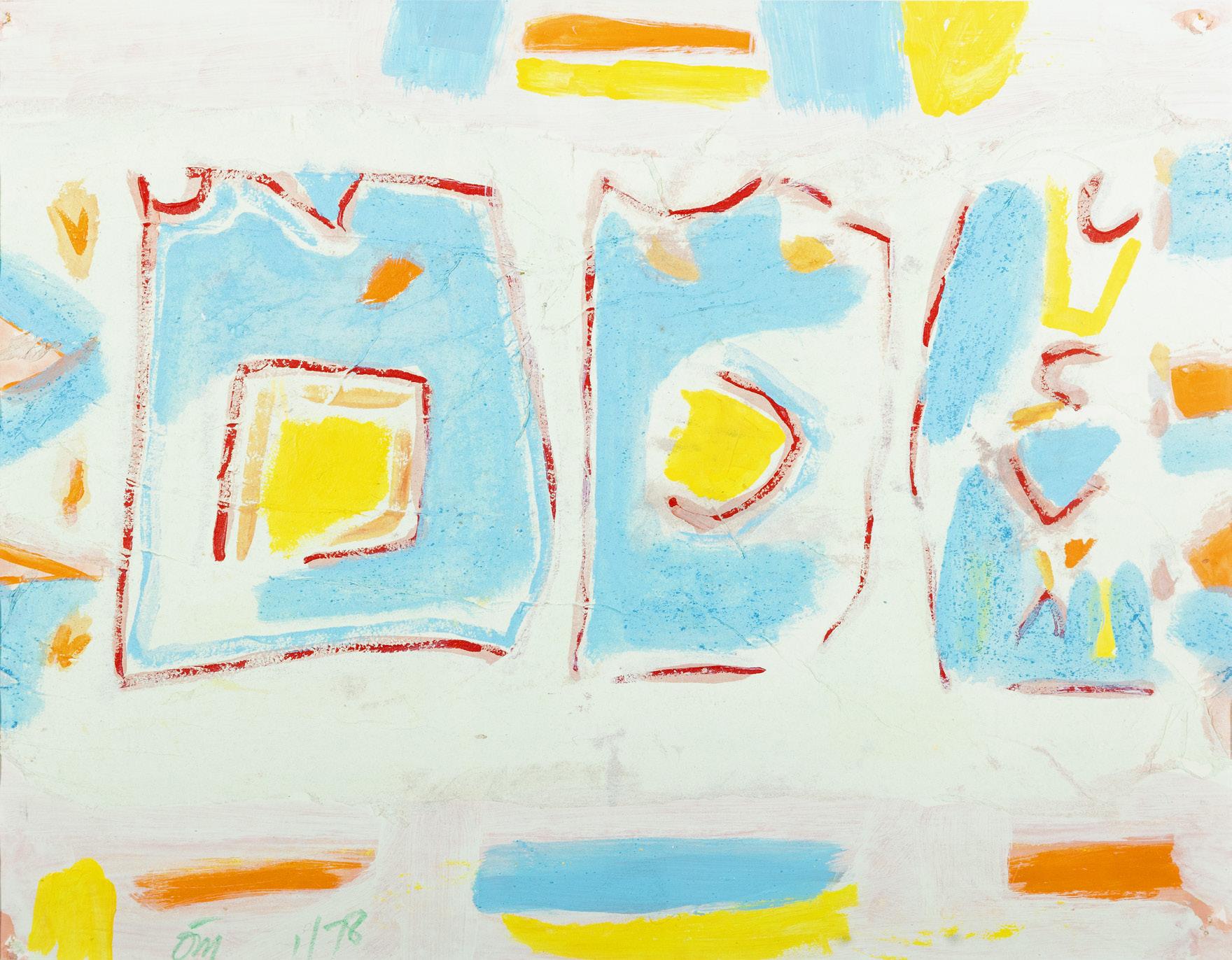
Bahamas (1978)
Mixed media, 27 x 35cm (10½ x 13¾’’)
Signed with initials and dated (19)’78
€ 1,500 - 2,000
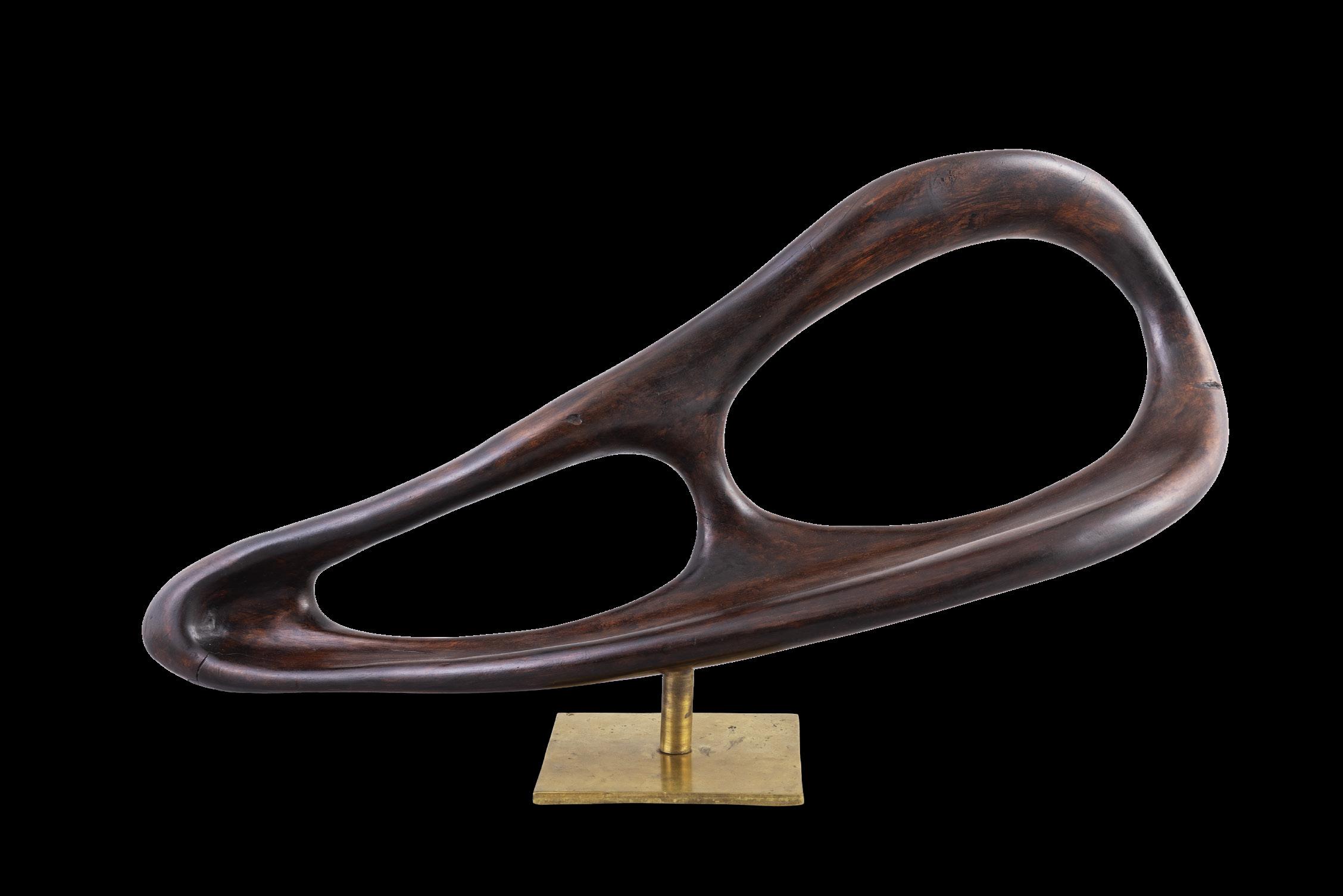
Amorphous Form
Wood, 67cm long x 20cm x 37cm on a brass pedestal base (26¼ x 7¾ x 14½’’)
Signed and dated 1981
Provenance: Sale, these rooms, 7/11/23, lot 193
€ 600 - 1,000
61
IMOGEN STUART RHA (1927-2024)
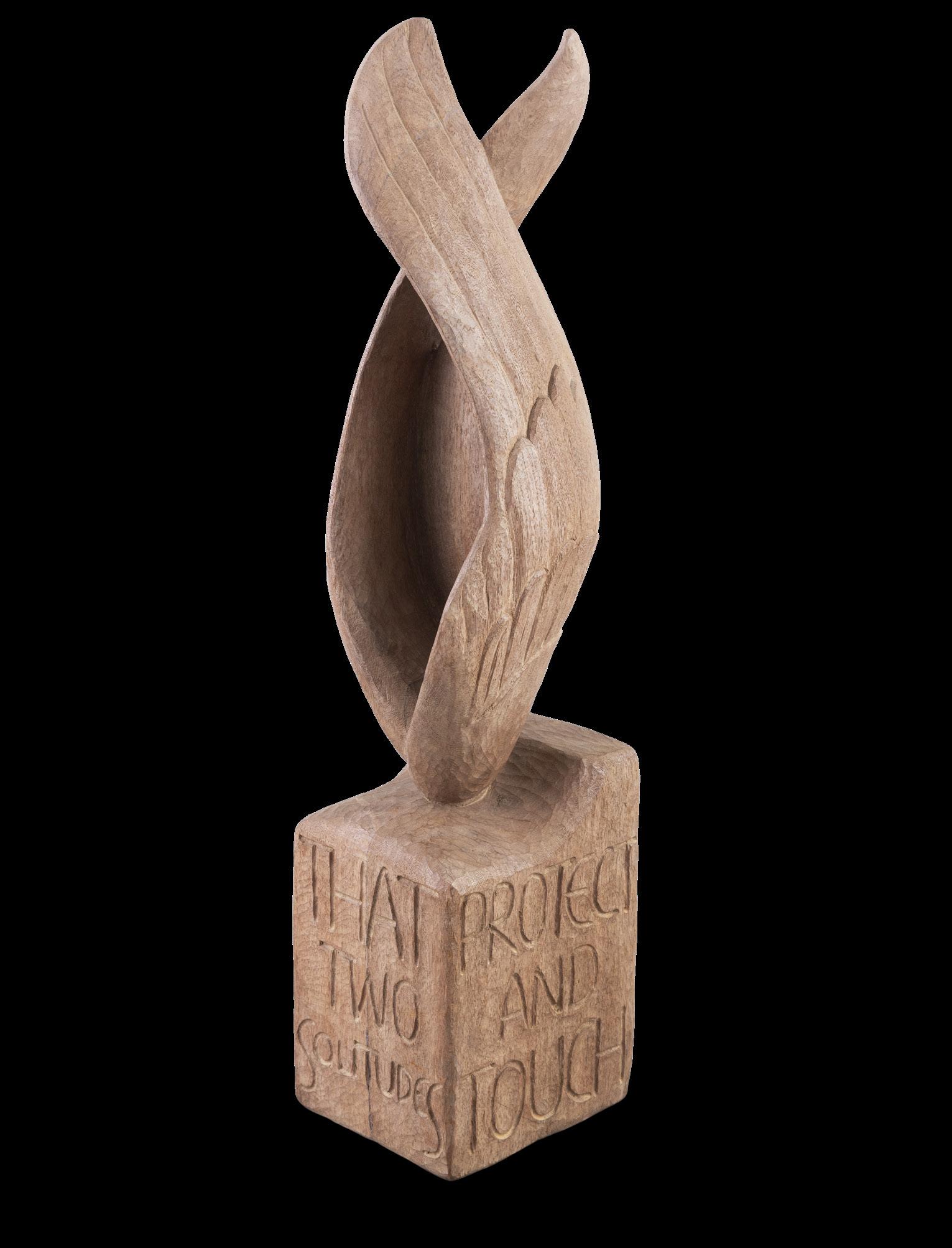
Monument to Love (1997) (a maquette for a large scale version commissioned for the Centre of Irish Studies in Paris in 2006.)
Teak, 60.5cm (h) (23¾’’)
Signed and dated 1997
Literature: Brian Fallon, Imogen Stuart, Sculptor, Dublin 2002, illustrated p.108
Exhibited: Dublin, Royal Hibernian Academy, Annual Exhibition 1997, cat. no. 428
€ 3,000 - 5,000
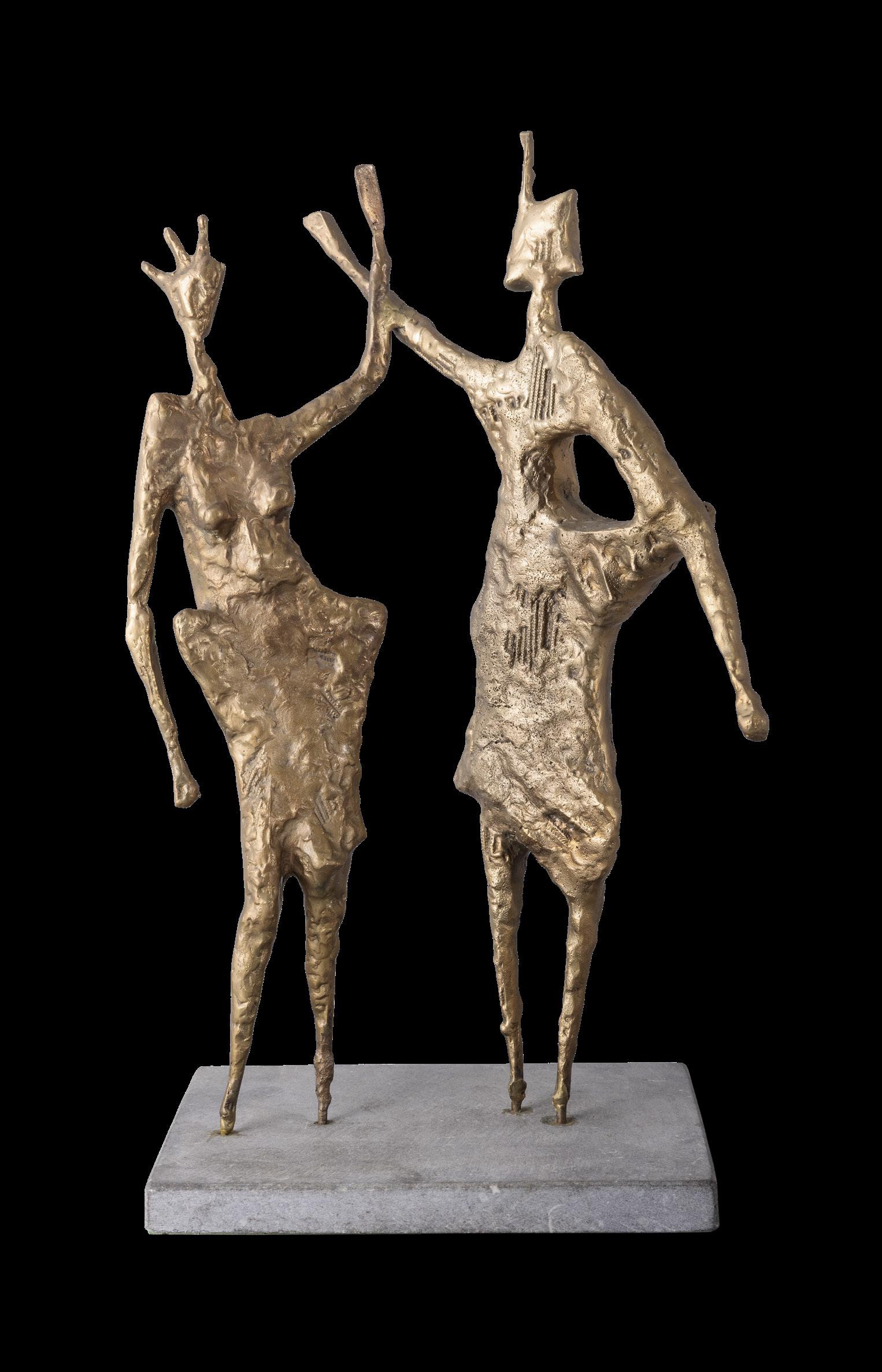
Bronze with gold patination, 51cm (h) (20’’)
€ 5,000 - 6,000
Signed and numbered indistinctly
€ 5,000 - 6,000
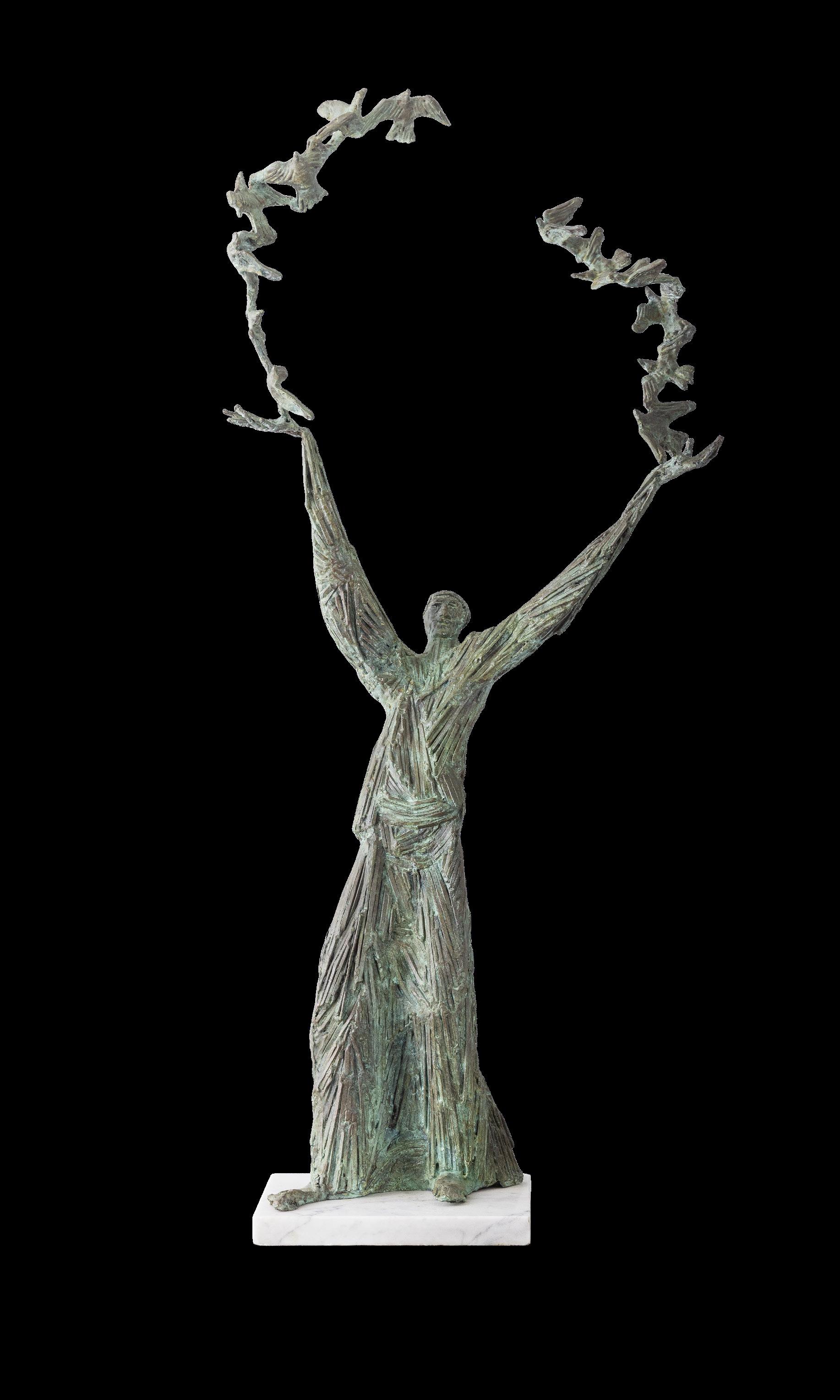
Reclining Nude (1921)
Oil on canvas, 72.4 x 91.5cm (28½ x 36”)
Signed ‘O’Conor 1921’ (top right)
Provenance: Sale, Sotheby’s, London 26/4/1972, lot 107; with Sean O’Criadain, Dublin; Sale, Christie’s, London, 10/5/2007, lot 66; Collection of the Hon. Francis D. Murnaghan Jr., thence by descent
Exhibited: London, Barbican Art Gallery, ‘Roderic O’Conor 1860- 1940 ’, 1985, cat.no.78 and toured to Belfast, Ulster Museum; Dublin National Gallery of Ireland; Manchester, Whitworth Art Gallery. On loan to Dublin, Hugh Lane Municipal Gallery of Modern Art, 1995-2000.
Literature: J. Benington, ‘Roderic O’Conor, a Biography with a Catalogue of his Work ’, Dublin, 1992 Cat. No. 229, p. 217
€ 40,000 - 60,000
In the aftermath of the First World War, progressive artists such as Picasso and Matisse relinquished some of the innovatory zeal that had previously coloured their work. The pre-war headlong rush to break new ground thus experienced a slow-down, and there was a brief return to more straightforward figurative idioms such as classicism and Impressionism. O’Conor, as can be seen in this rare dated nude from the beginning of the new decade, was not immune to this trend. His inspiration seems to have come from the bathers pictures of Renoir and the classical nymphs of Rubens.
Reclining Nude is an accomplished and arresting tribute to female beauty. The model sleeps lying on her side, her legs pulled up for modesty’s sake whilst her head and shoulder rest on a cushion. A second bolster has been positioned behind the model, bringing her upper body closer to the viewer’s gaze. The cropping of the model’s ankles and feet by the lower edge of the canvas reinforces the feeling of proximity, as does the very direct and even fall of light. The artist, in other words, does everything in his power to focus attention on the shape, colour, texture and mass of the forms he is describing, and beyond that, to render palpable the “gleam of light and warmth and life” which Sickert described as the chief source of pleasure in a nude.
In the 1920s, O’Conor chose models who were young, pretty, of slender build and furnished with up-to-the-minute bobbed hairstyles. That these pictures were admired by his peers is confirmed by the fact that the noted art critic, Roger Fry bought an example directly from O’Conor, on behalf of the Contemporary Art Society (now in Derby Art Gallery). Reclining Nude could have been one of the pictures Fry saw in O’Conor’s studio on the occasion of his purchasing visit in 1924. Fry would have been the first to notice that, however much the picture might owe to Renoir, it was still very much a product of its time. The subject is a modern, fashionable young woman. It is to O’Conor’s credit that, despite being in his sixties, he was not locked in the mindset of an earlier generation struggling to keep pace with the times. The 1920s was the era of jazz and jive, flapper dresses and the movies, and aside from his models, we can be sure that the artist’s young mistress, Renée Honta, helped to keep him informed about current trends.
We are very grateful to Jonathan Benington for providing the catalogue entry for this lot.
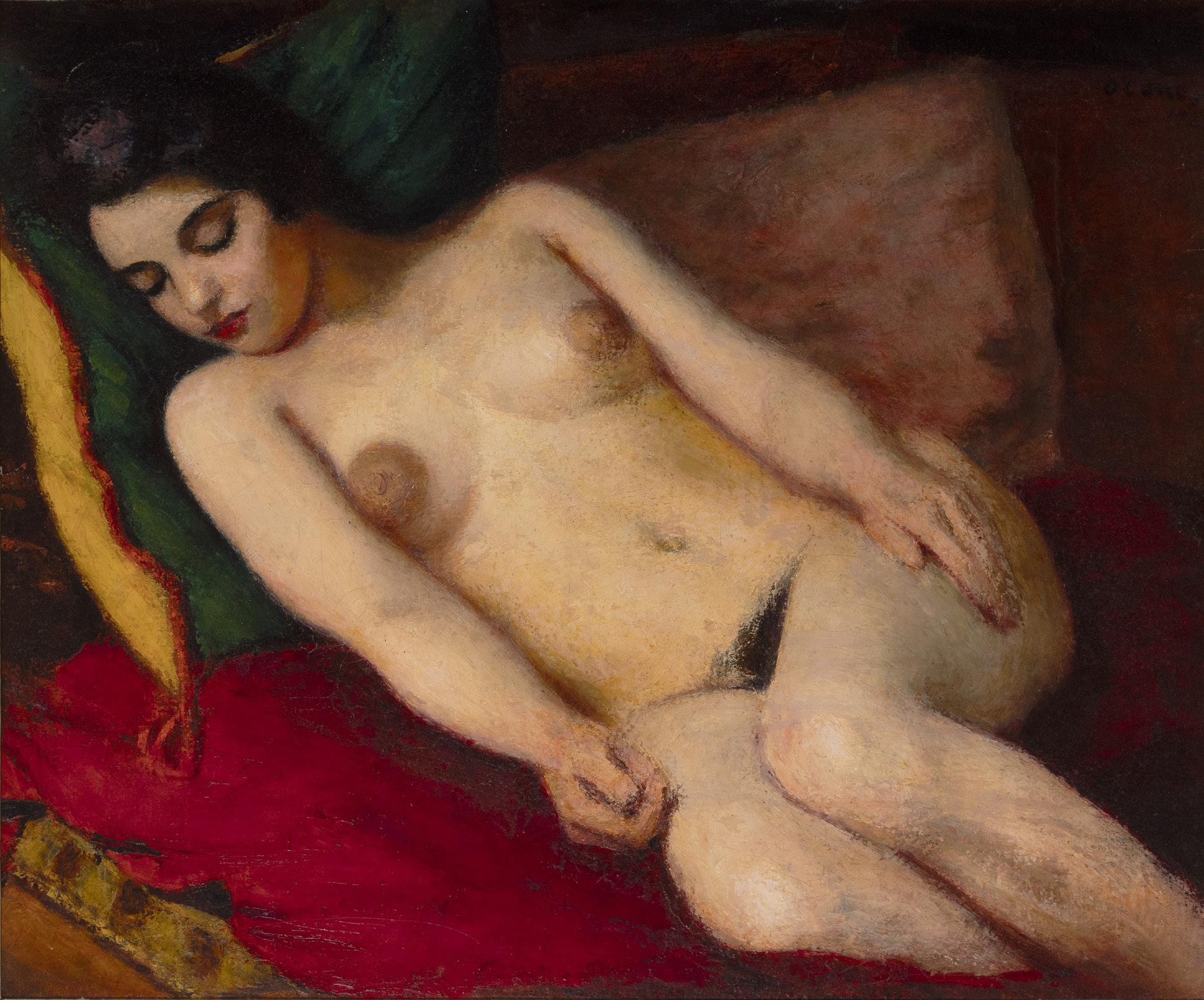
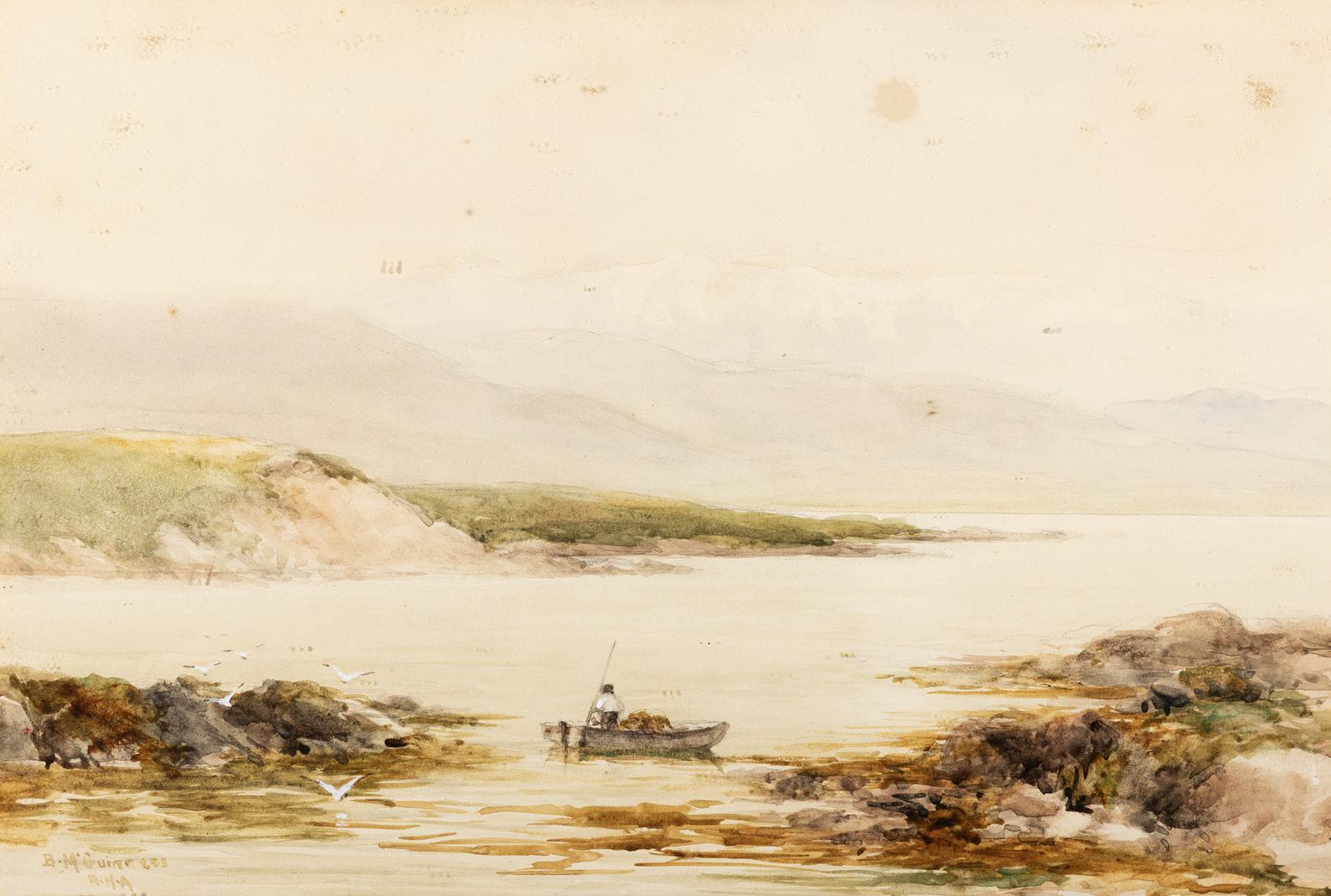
65
BINGHAM MCGUINNESS
RHA (1849-1928)
Fisherman in a Quiet Lough
Watercolour 25 x 37cm (10 x 14½’’)
Signed
Provenance: With Seán Thomas, Donegal Town
€ 300 - 400

66
BEA ORPEN HRHA (1913 - 1980)
The Rock of Cashel
Gouache, 30.5 x 50.5cm (12 x 20”)
Signed
Provenance: Collection of the Hon. Francis D. Murnaghan Jr. thence by descent.
€ 300 - 500
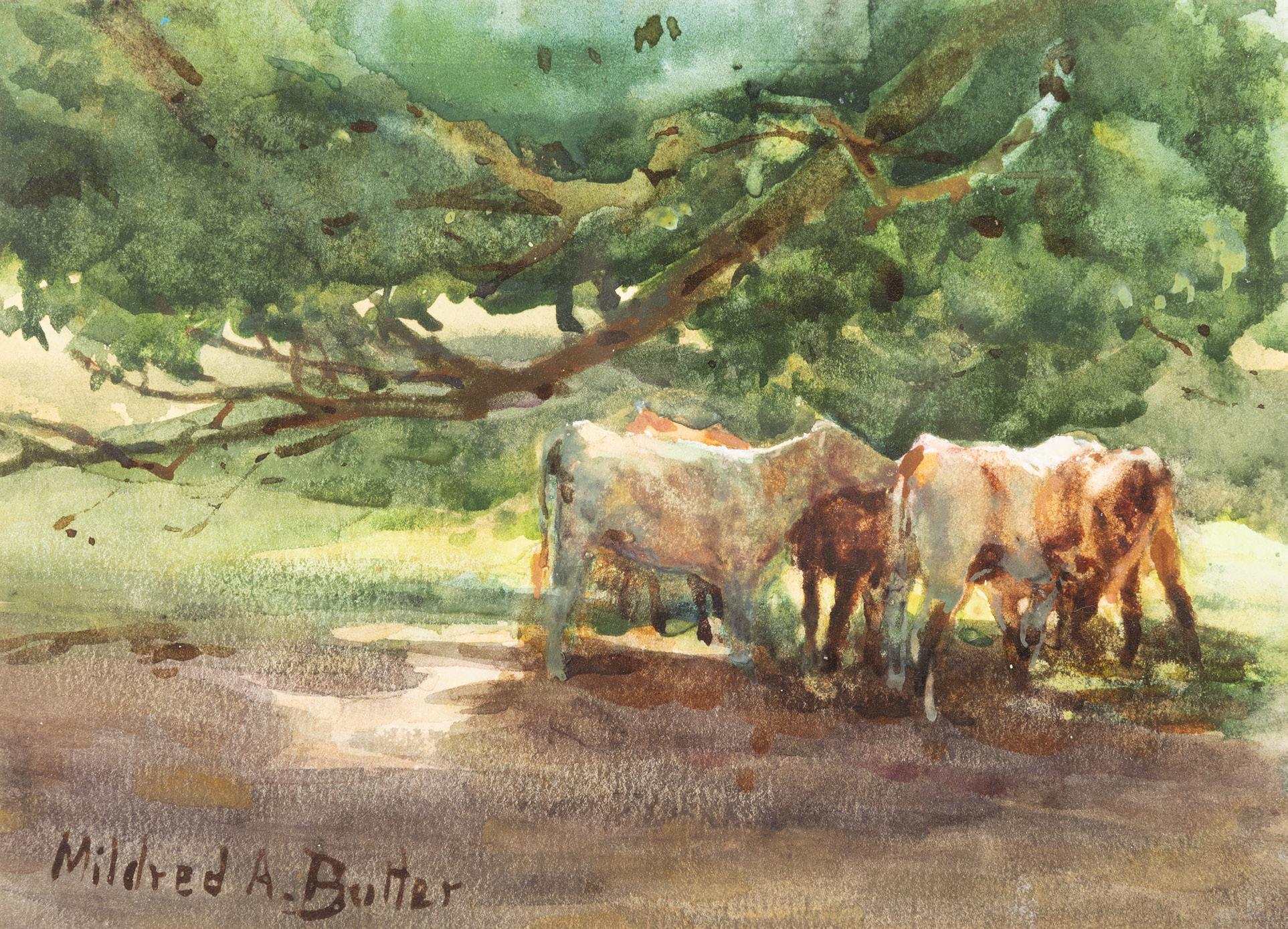
Watercolour, 12 x 16.5cm (4¾ x 6½’’)
Signed € 1,500 - 2,000
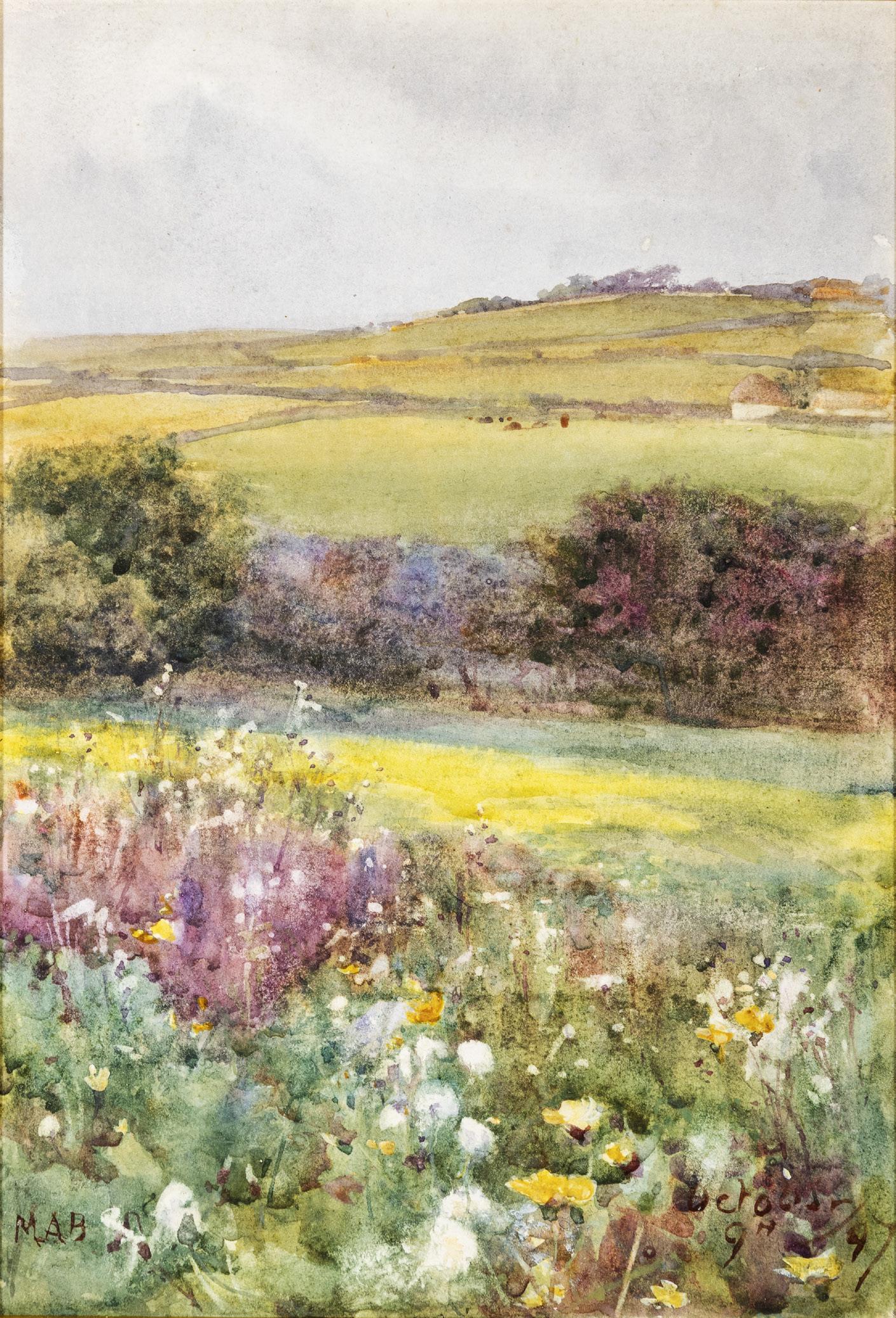
Across the Fields (1897)
Watercolour, 25 x 17cm (10 x 7”)
Signed with initials lower left and dated ‘October 9th (18)’97’ lower right
€ 2,000 - 4,000
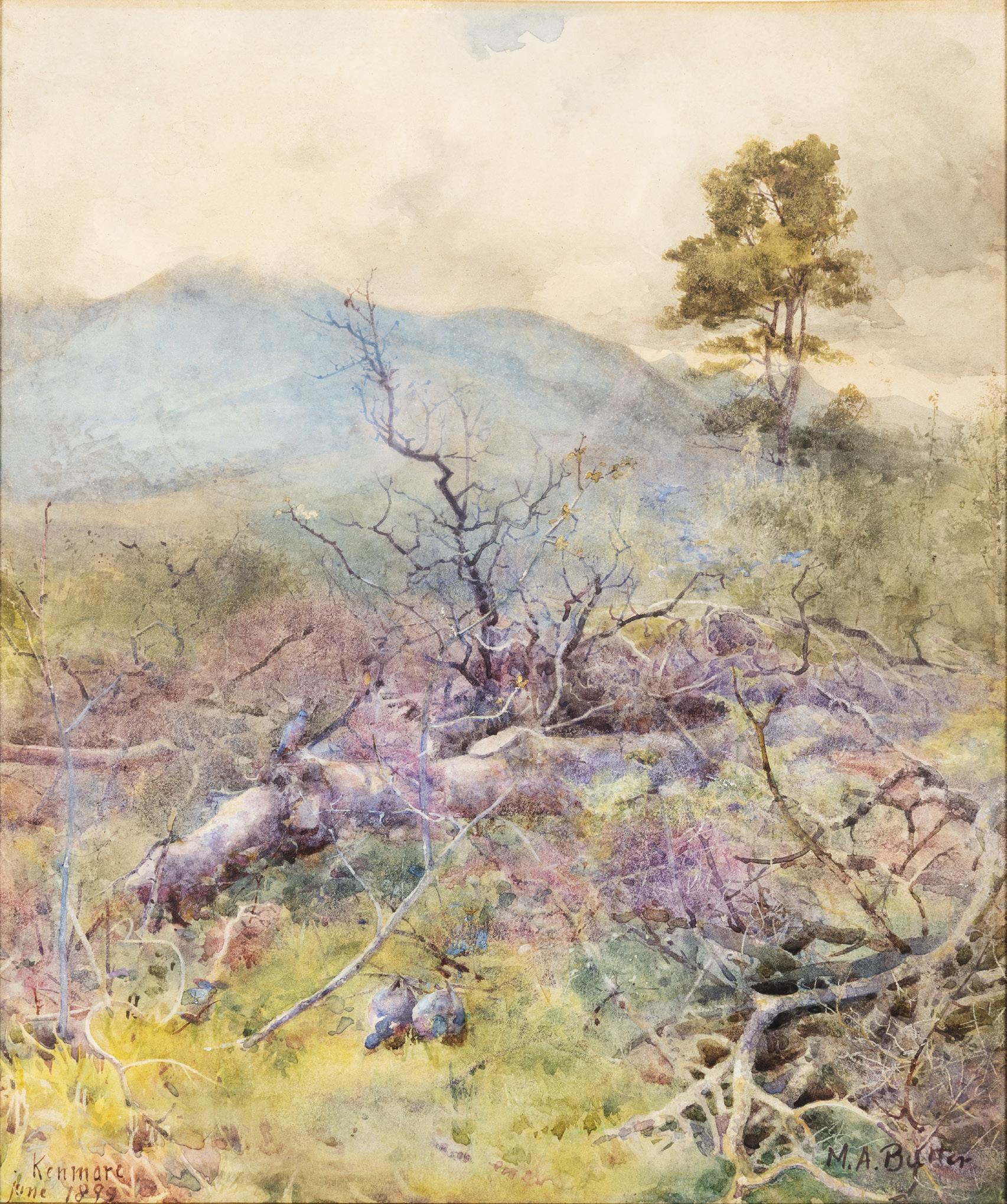
The Back of the Storm (1895)
Watercolour, 30 x 25cm (12 x 10”)
Signed, inscribed ‘Kenmare’ and dated 1895 lower left
€ 3,000 - 5,000
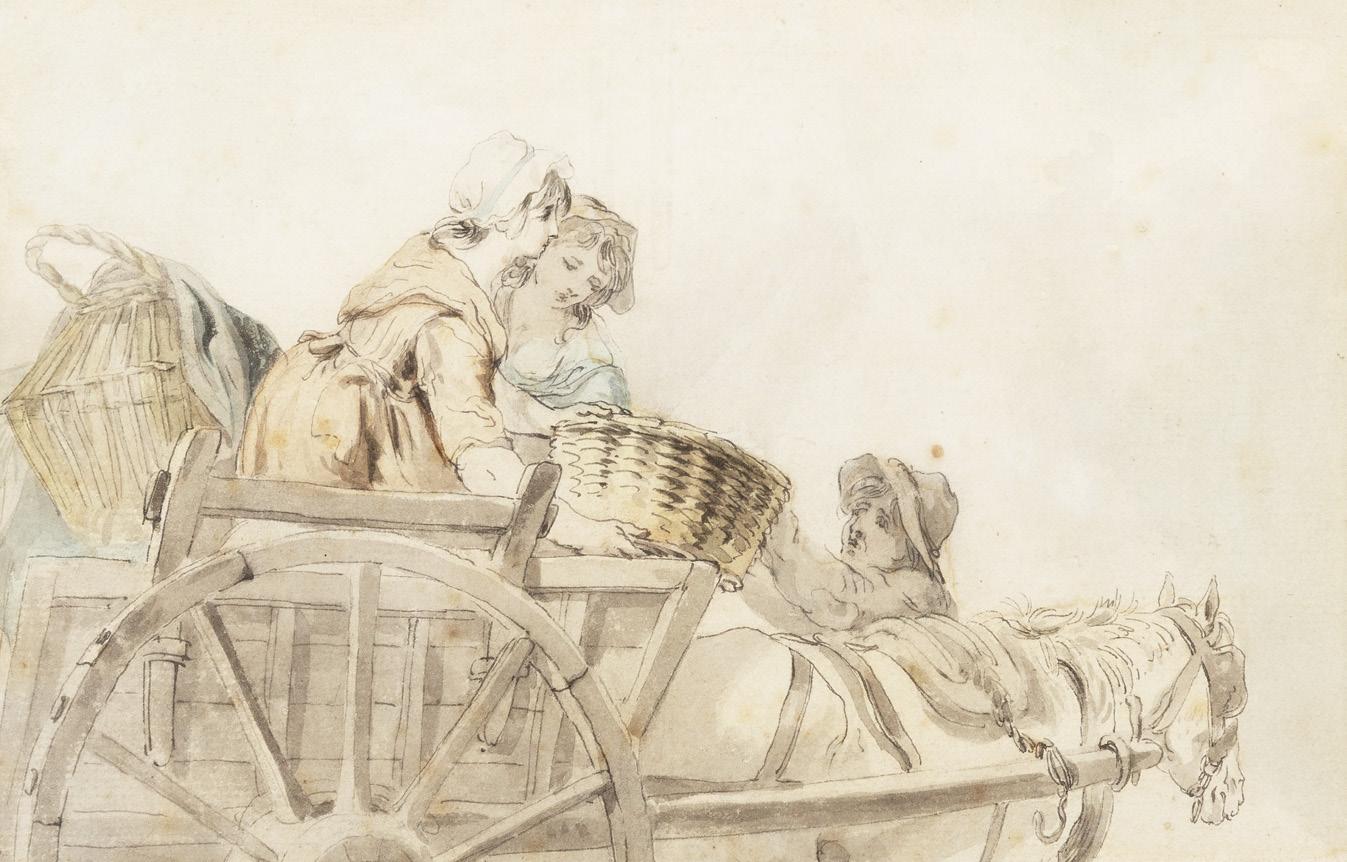

70
FRANCIS WHEATLEY RA (1747-1801)
The Market Cart
Watercolour, pen and ink, 14.6 x 22.2cm (5¾ x 8¾”)
Provenance: Collection of the Hon. Francis D. Murnaghan Jr. thence by descent.
€ 300 - 400
71 DANIEL MACLISE RA (1806-1870)
A Shakespearean Scene
Watercolour and body colour, 20 x 18cm (8 x 7”)
Signed with monogram bottom left
Provenance: Collection of the Hon. Francis D. Murnaghan Jr. thence by descent.
€ 300 - 500
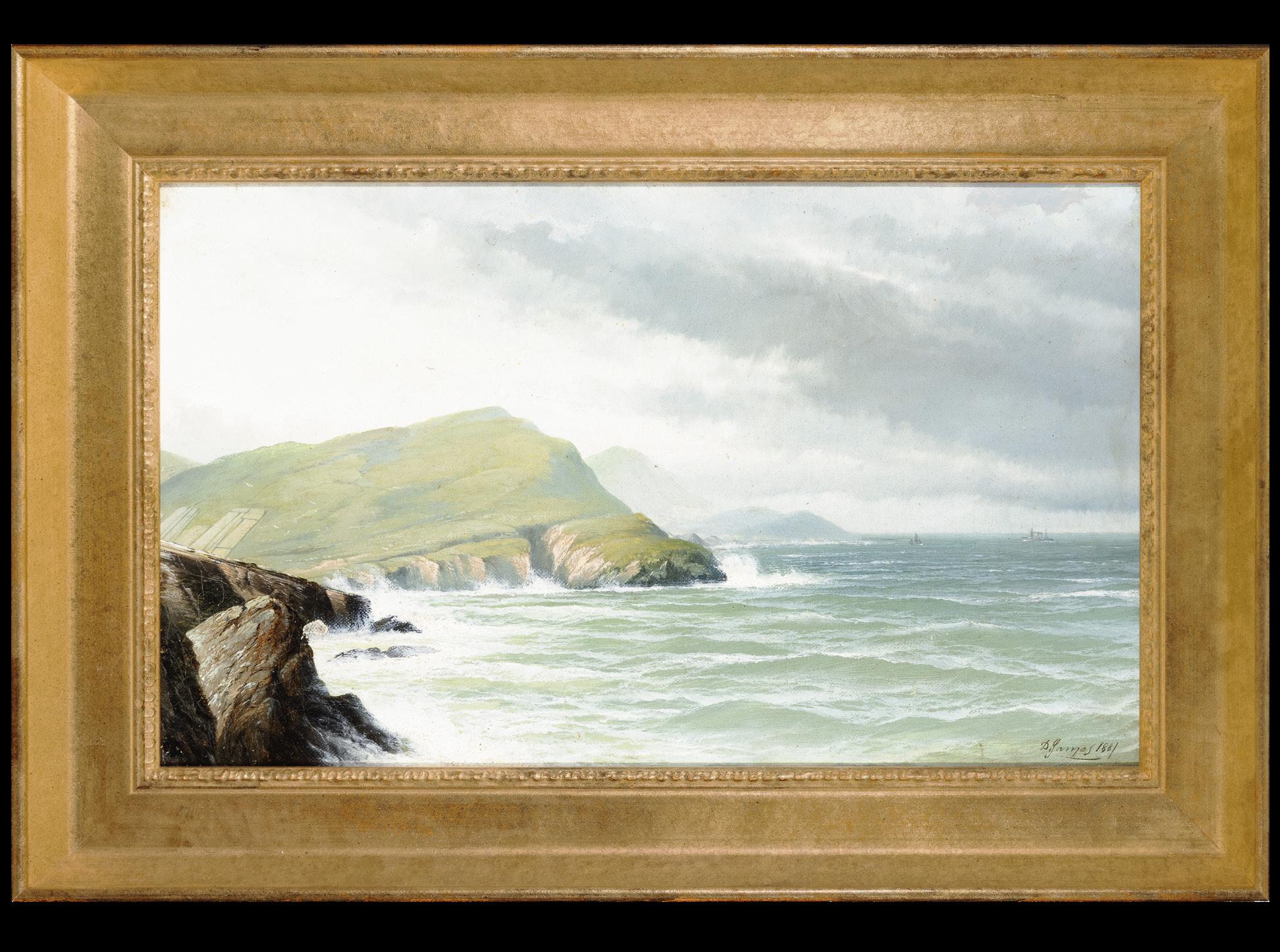
(1853-1904)
The Irish Sea off Cornwall (1881)
Oil on canvas, 31 x 51cm (12¼ x 20”)
Signed and dated 1881
€ 1,000 - 1,500
Born Joseph Donahue in Ireland in 1853, the artist later known as David James adopted his pseudonym upon relocating to Dalston, Cumbria in his twenties. The fourth child of a London porter and an Irish mother, James came from humble beginnings and received little formal education. He began his career as a pavement artist on the streets of London, where his innate talent soon drew the attention of a German-born picture dealer who would become his patron and provide both training and a home for much of his life.
James found his artistic voice in the study of the sea. While in Yorkshire, he developed a profound and lifelong fascination with seascapes—most notably the depiction of crashing waves, which would become the hallmark of his oeuvre. By the 1880s, he had settled in Plymouth and began producing a series of highly detailed and evocative maritime works, capturing the wild beauty of England’s southwestern and southern coastlines, from Cornwall to the Thames estuary. These works, typically large-scale oils, eschew topographical specificity in favor of a more universal, elemental expression of the sea’s power and motion.
David James exhibited widely in London, including at the Royal Academy in 1886 (while residing in Dalston), 1888 (by then in Maida Vale), 1892, and 1897. Like his contemporary Henry Moore, James was not concerned with coastal landmarks, but rather with the sea itself—its rhythms, its energy, its grandeur. Today, he is celebrated for his dramatic and masterful renderings of breaking waves, works which continue to captivate collectors and connoisseurs of British marine painting.
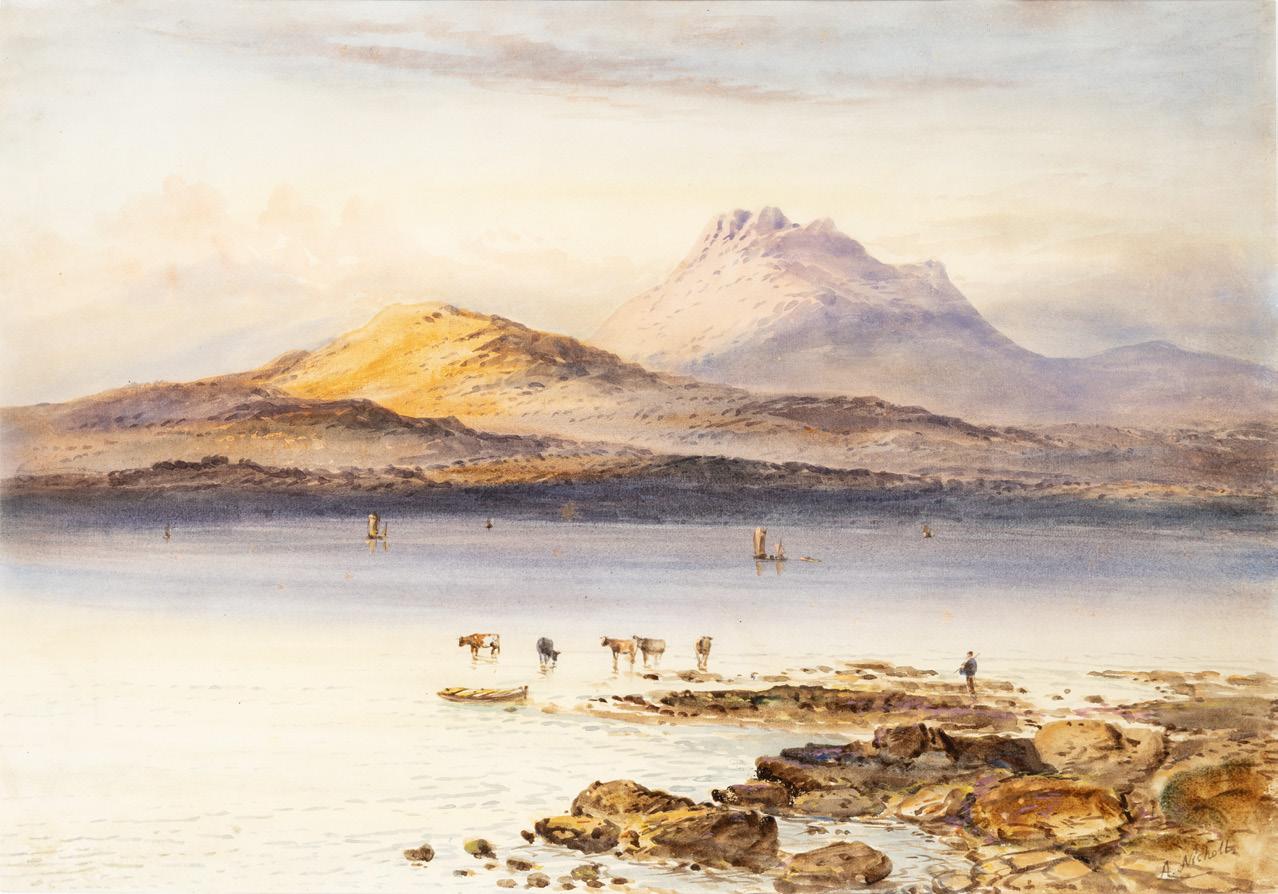
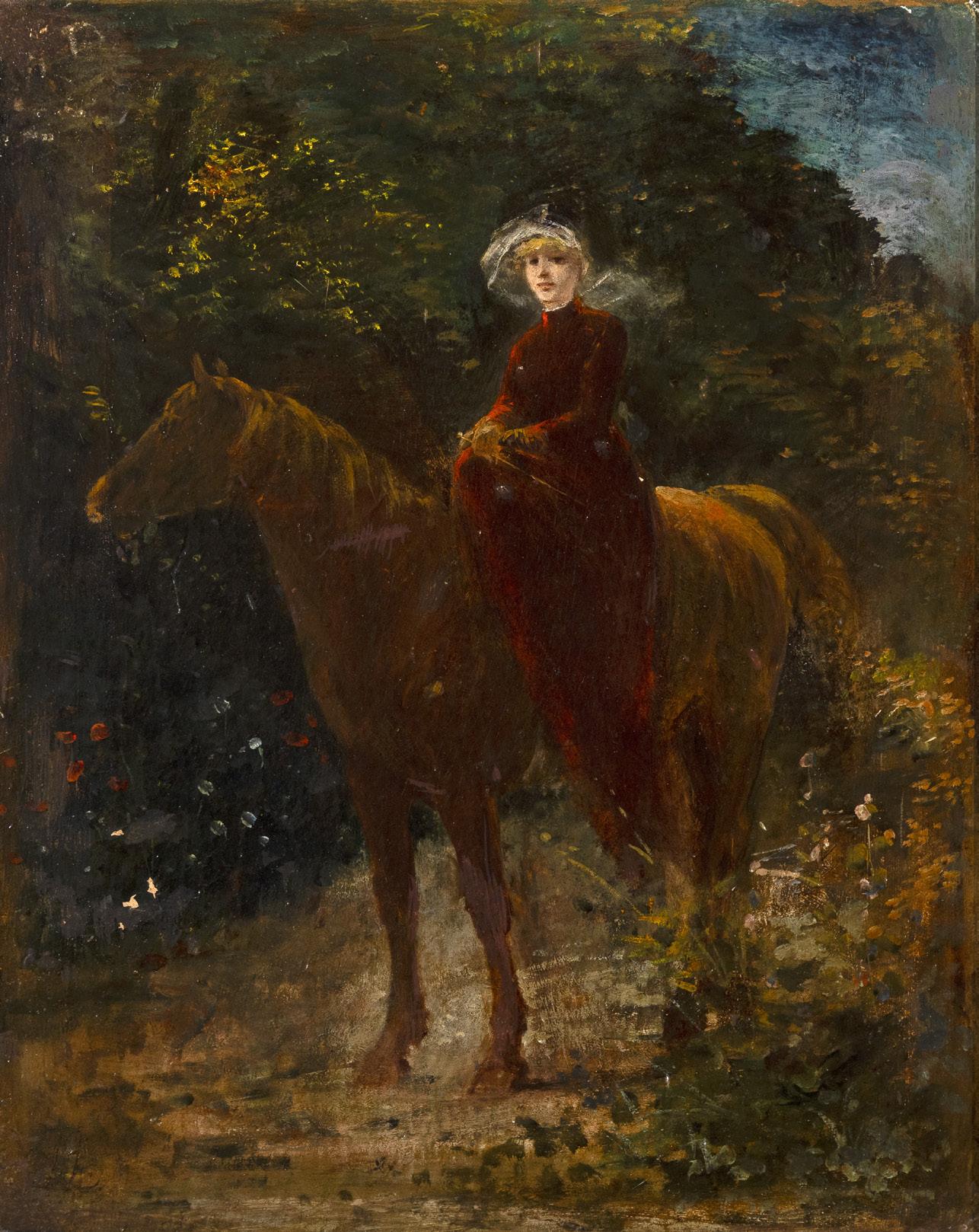
73
ANDREW NICHOLL RHA (1804-1886)
Cattle Watering in a Lake and Mountain Landscape
Watercolour, 38 x 55cm (14¾ x 21½’’)
Signed
€ 1,000 - 1,500
74
ATTRIBUTED TO SIR ROBERT PONSONBY STAPLES RBA (1853-1943)
A Morning Ride
Oil on board, 39.4 x 30.5cm (15½ x 12”)
Bearing initials J.L. (lower left)
Provenance: Collection of the Hon. Francis D. Murnaghan Jr., thence by descent
€ 1,000 - 1,500
75
KATHLEEN FOX RHA (1880-1963)
Flower study with Poppies in a Glass Vase
Oil on canvas, 75 x 50cm (29½ x 19½”)
Signed lower right
Provenance: Collection of the Hon. Francis D. Murnaghan Jr., thence by descent
€ 2,000 - 3,000
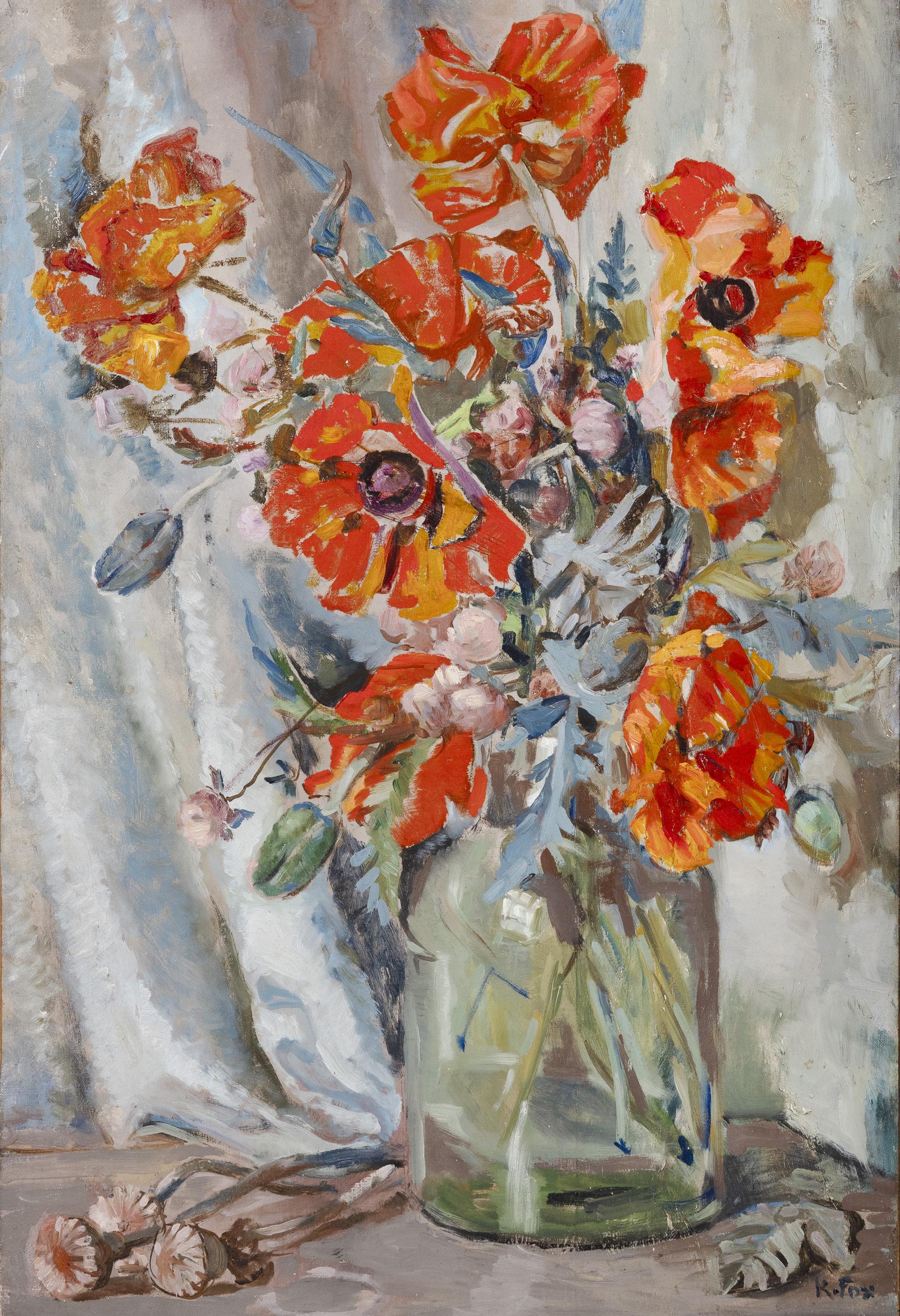
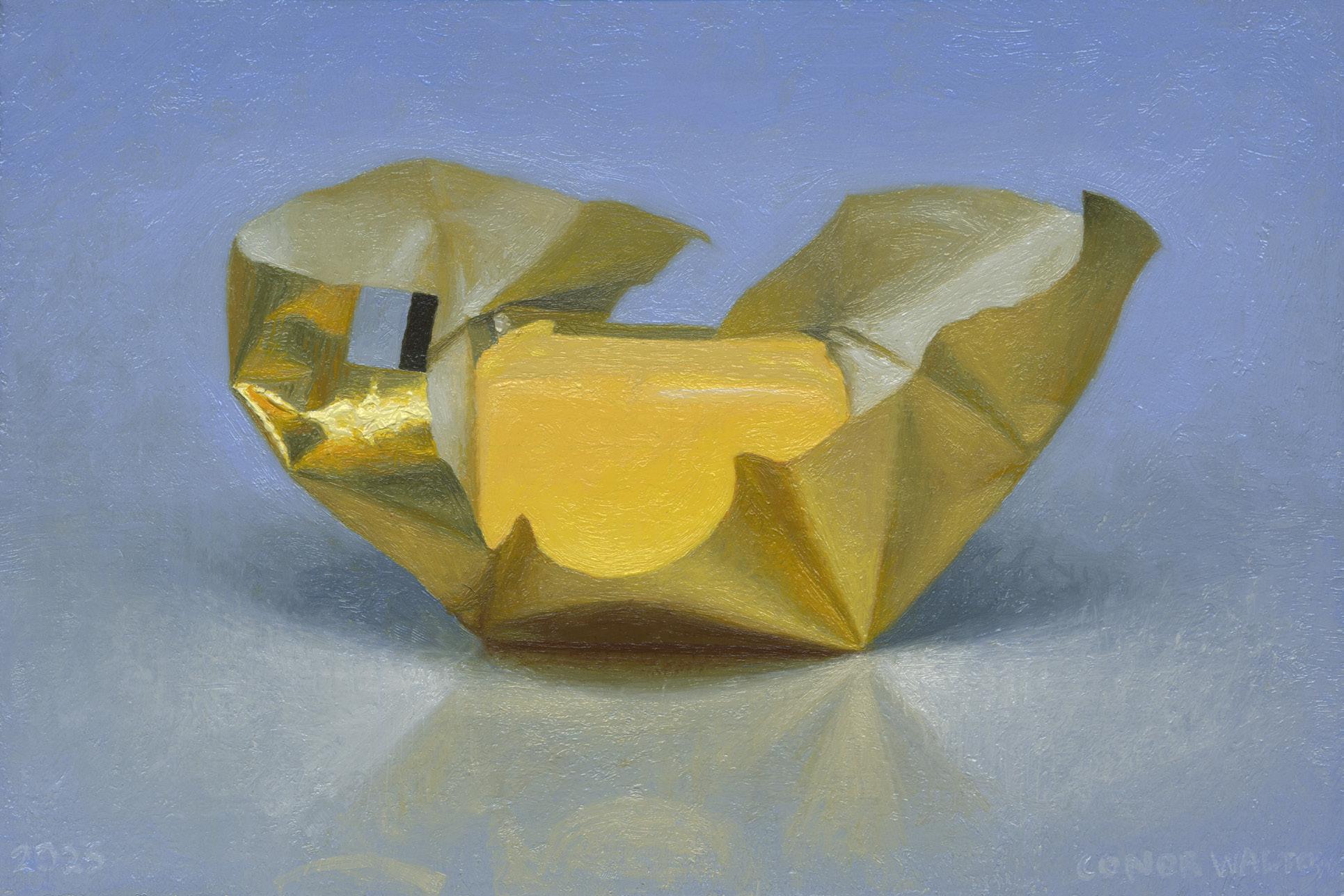
76
CONOR WALTON (B.1970)
Butter (2025)
Oil on linen, 20 x 30cm (7¾ x 11¾’’)
Signed and dated 2025
€ 1,400 - 1,800
77
CONOR WALTON (B.1970)
Still Life with Lillies and Orange (1999)
Oil on canvas, 61 x 40.5cm (25 x 16”)
Signed and dated 1999
Provenance: With Jorgensen Fine Art, Dublin, from whom purchased by the present owners
€ 2,000 - 3,000
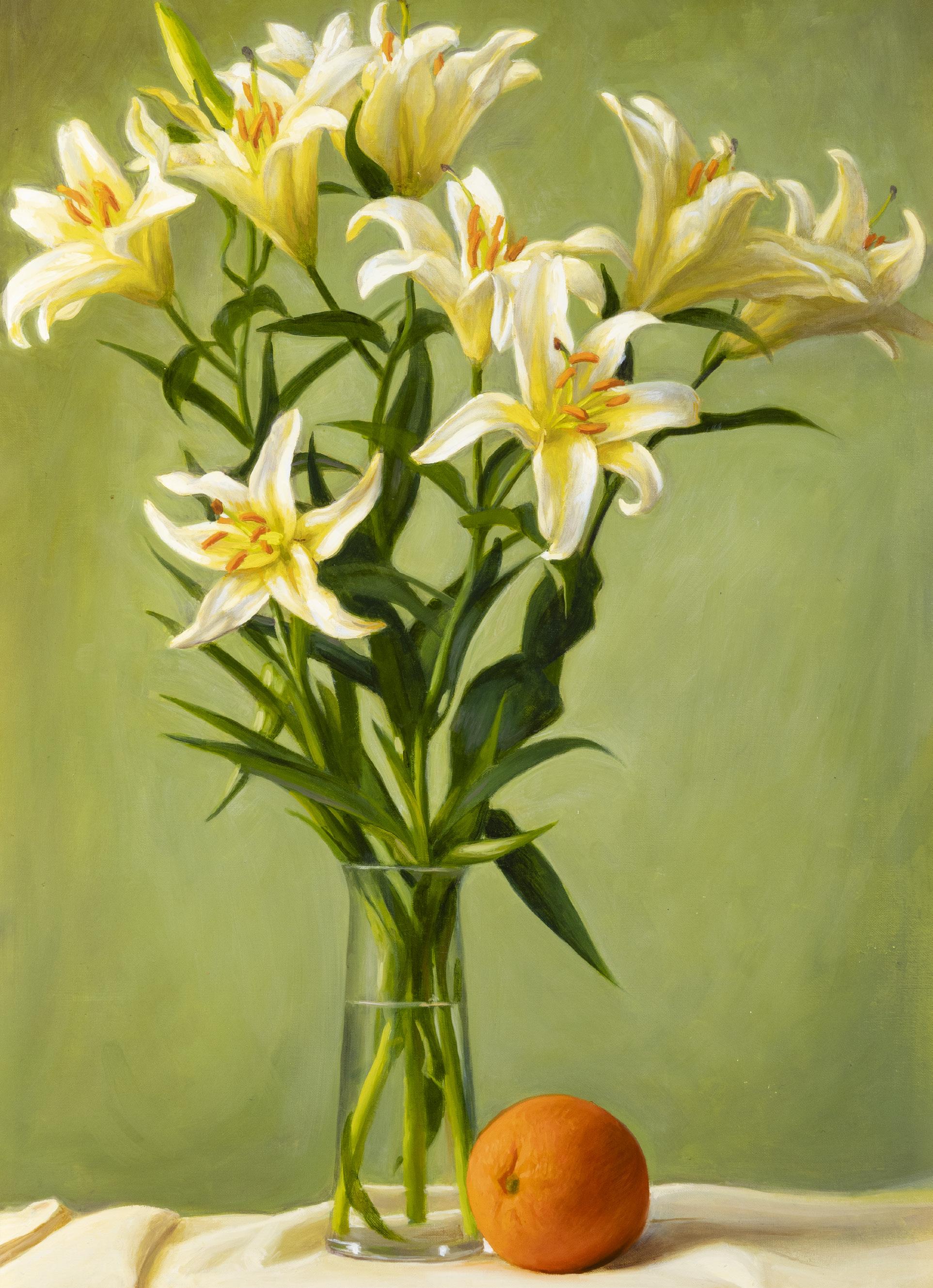
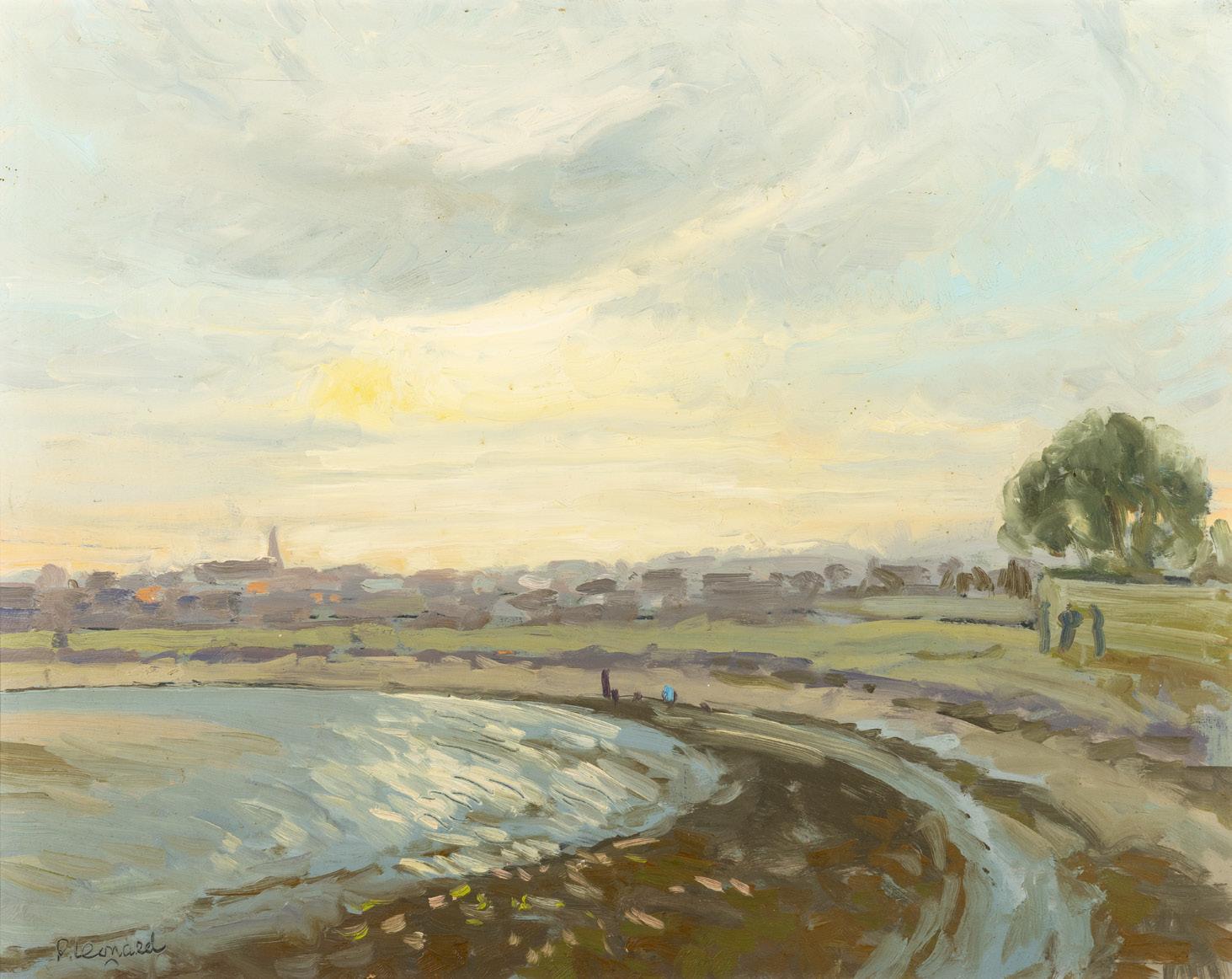
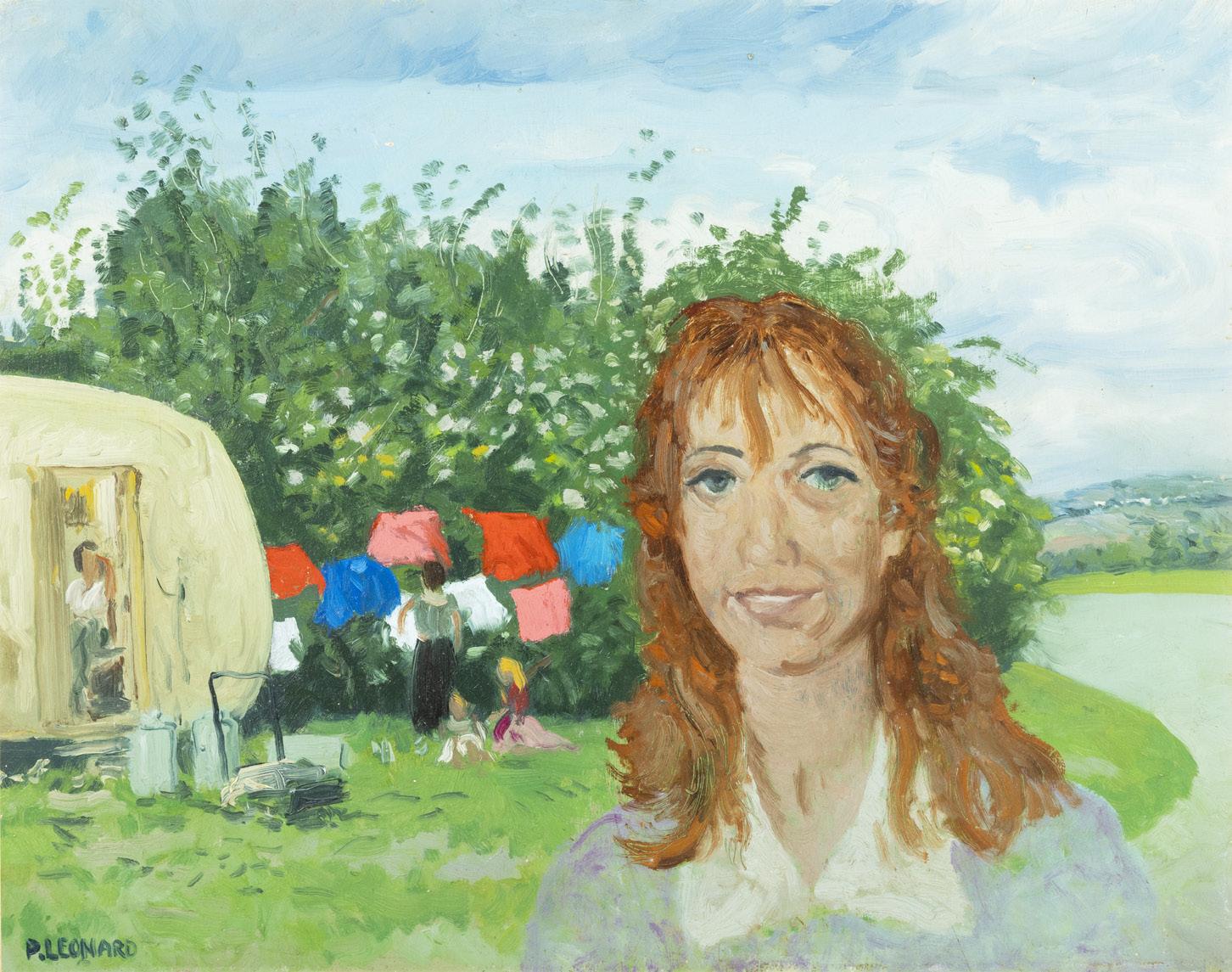
78
PATRICK LEONARD
HRHA (1918-2005)
The South Strand - Skerries, Co. Dublin
Oil on artist’s board, 40 x 50cm (15¾ x 19½”)
Signed; also inscribed verso
€ 1,500 - 2,000
79
PATRICK LEONARD
HRHA (1918-2005)
Tinker Woman
Oil on artist’s board, 40 x 50cm (15¾ x 19½”)
Signed
€ 1,500 - 2,000
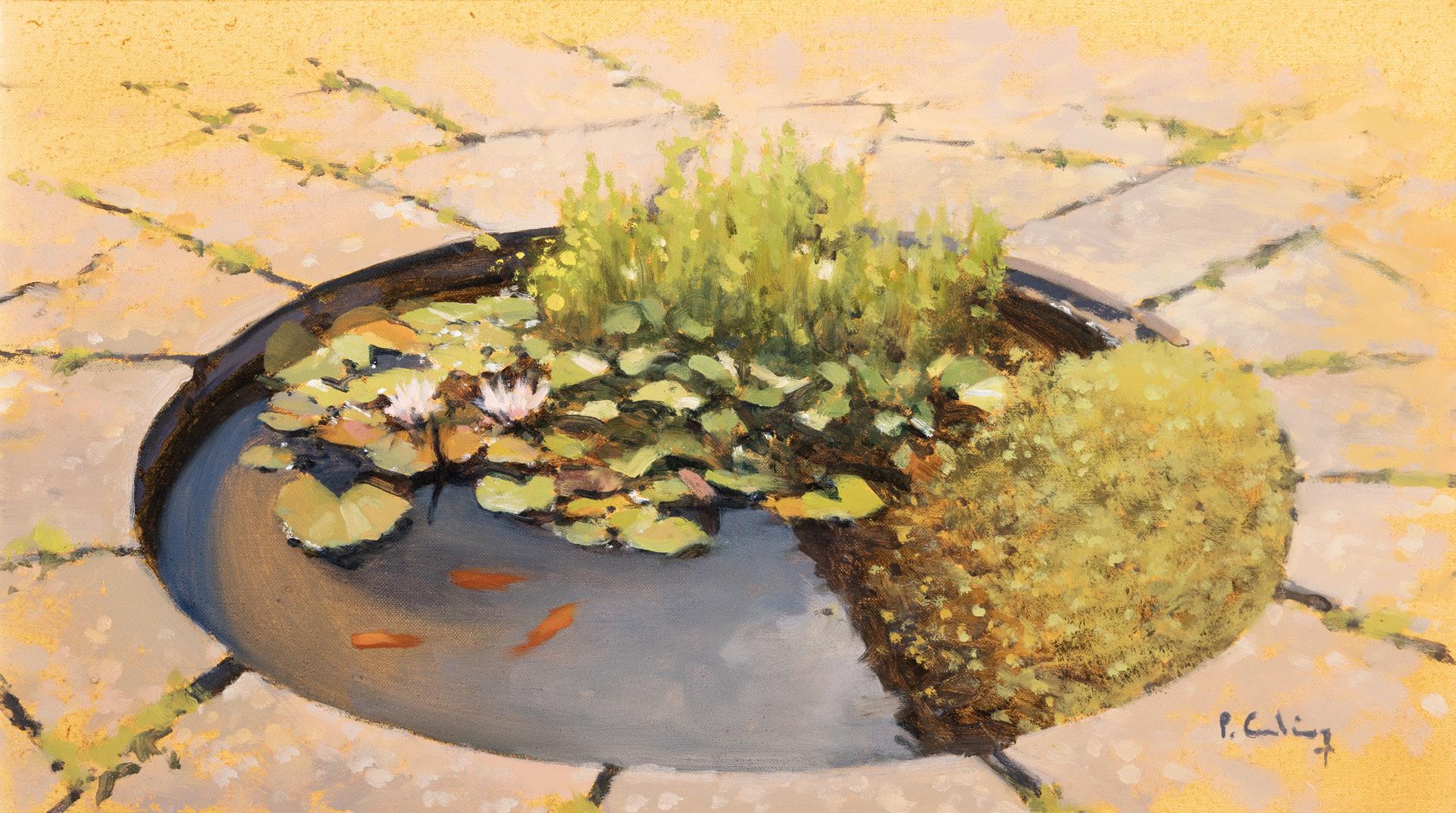
PETER CURLING (B.1955)
Tom, Dick and Harry
Oil on canvas, 26.5 x 47cm (10½ x 18½”)
Signed; inscribed verso
€ 2,000 - 3,000
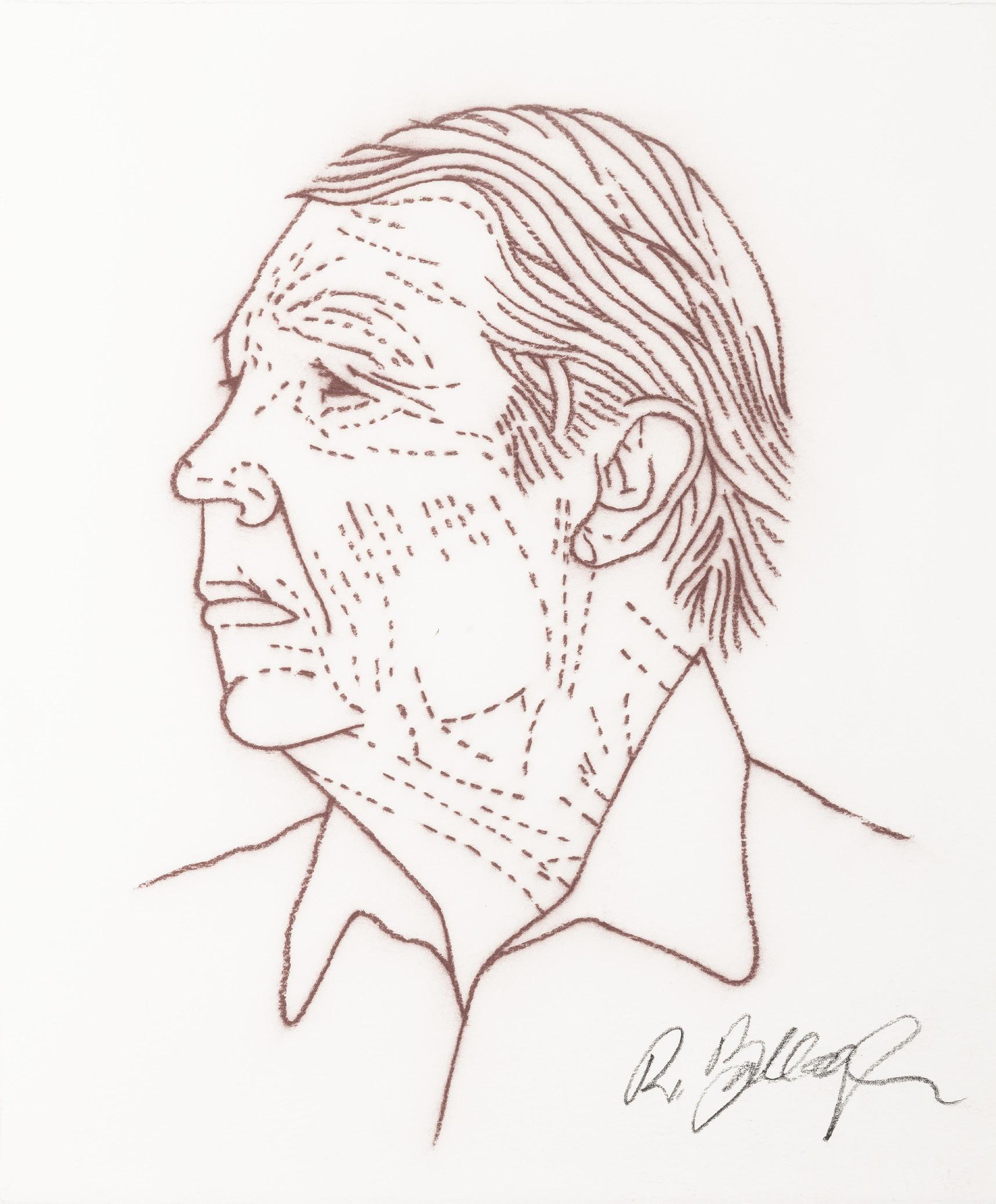
Conte on paper, 36 x 30cm (14¼ x 11¾”)
Signed; inscribed verso
€ 1,500 - 2,000
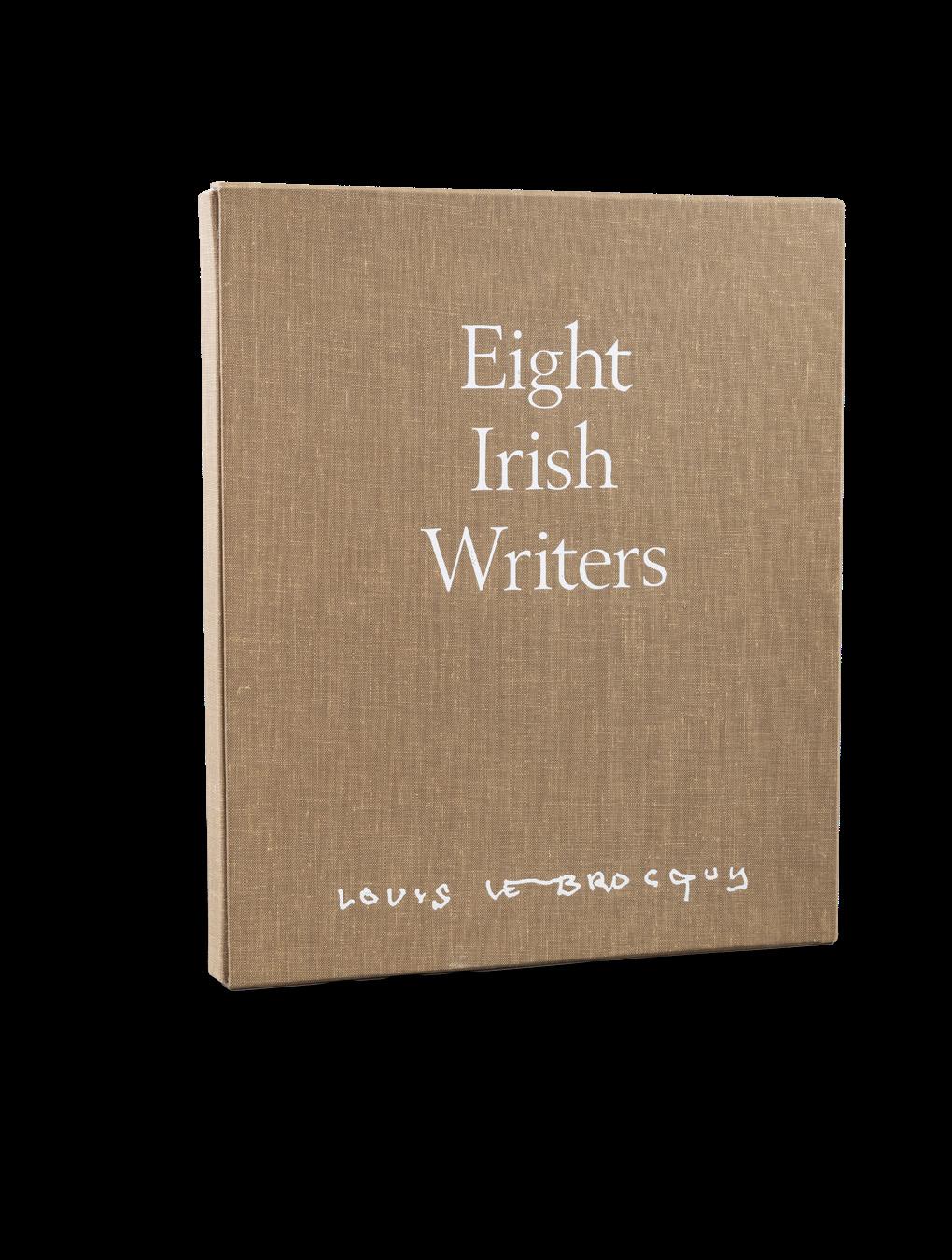
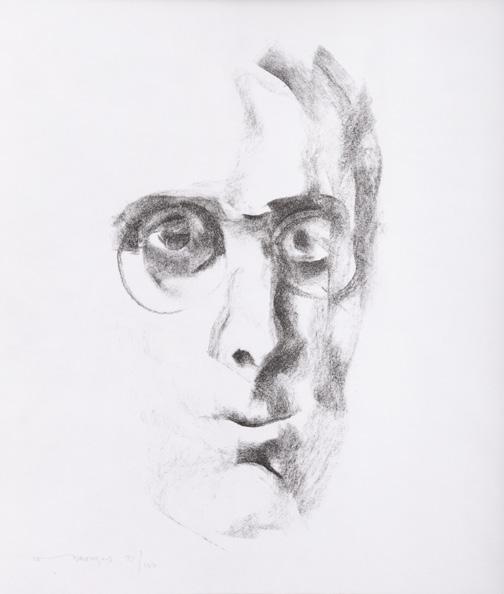

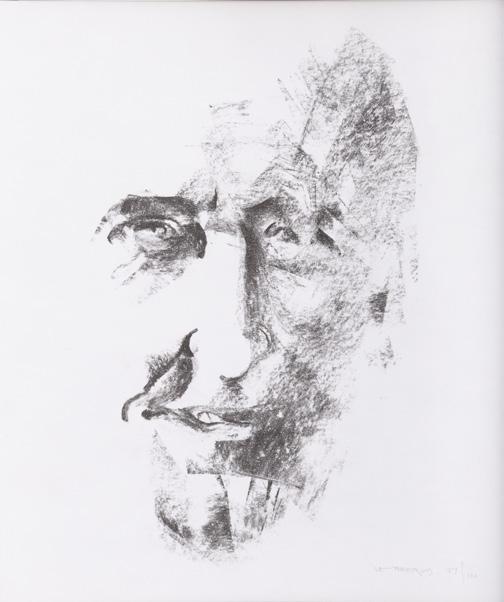
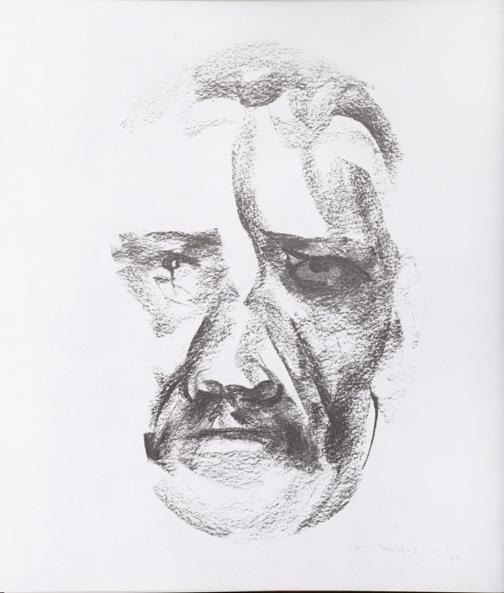
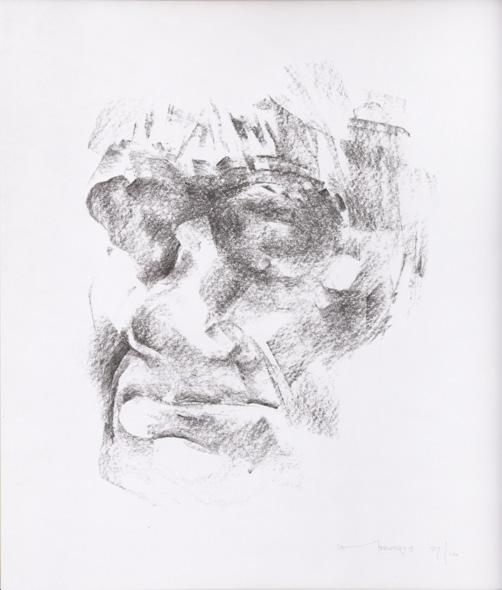
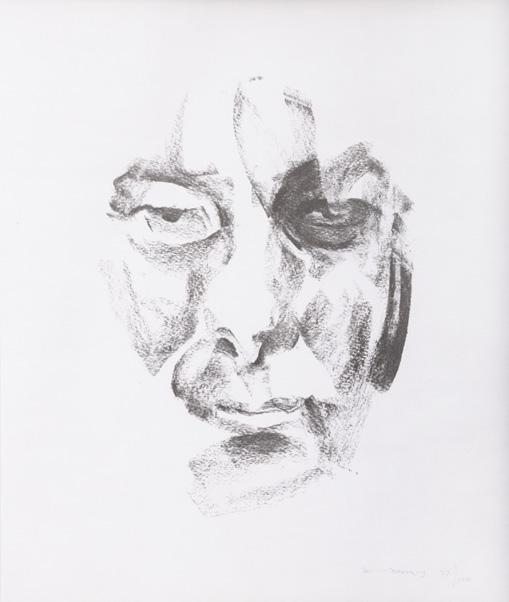
Eight Irish Writers
Collotype lithographs, Each 35 x 28cm (13¾ x 11”)
Signed
Edition no. 27/100, complete set
€ 4,000 - 6,000
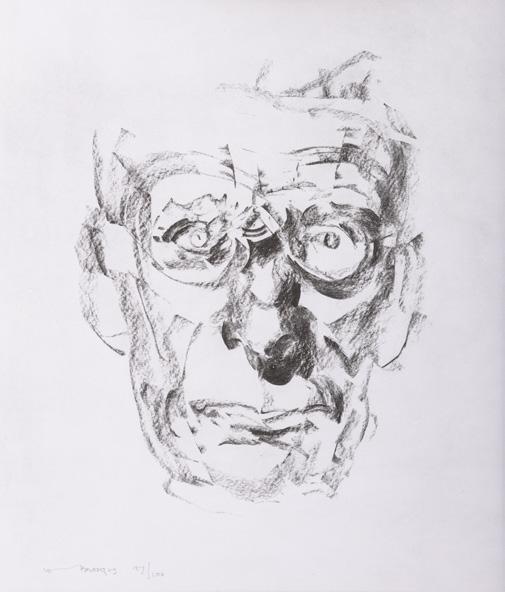
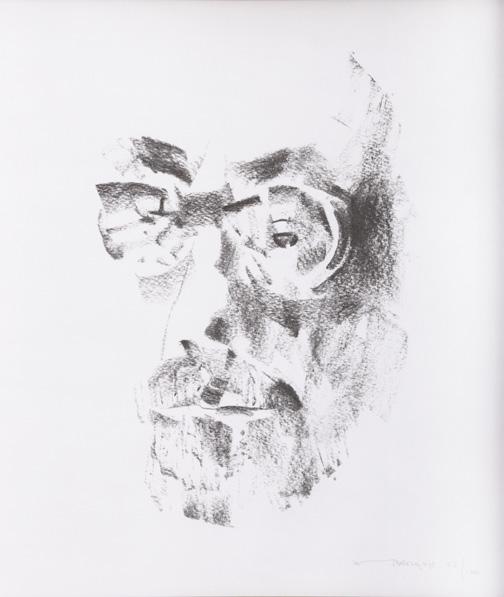
The Somerset Mask
Bronze, 43 x 25 x 65cm (h) (17 x 9¾ x 25½”)
Edition no. 2/5
€ 4,000 - 6,000
The Somerset Mask is an interpretation of the River-God keystone on the South Wing of Somerset House on the Victoria Embankment. Vigorously modelled, the face reveals an interesting fusion of baroque energy and classical control. Apples, berries, damsons and waterweed festoon the ribbed and fluted cornucopia on either side of an august yet slightly portentous visage. Appropriately, the contents of the cornucopia, given its position, have an extra wear and fluidity that the weather and the rain have exerted on the sculpture over the centuries. This liquidity is further manifested in the beard, redolent of a flowing brook that ends in the aquatic whirls and eddies at the base of the mask.
This depiction is of Achelous, which in Greek mythology was the god of all fresh water, is appositely placed as a counter-point to the depiction of the saline keystone of Ocean centred on the Northern facade of Somerset House. Defeated by Heracles as a suitor for Deianeira, Achelous, when he transformed himself into a bull, had one of his horns torn off which forced his surrender. Heracles gave it to the Naiads, who transformed it into the cornucopia.
Somerset House was designed by Sir William Chambers in 1776. The riverside wing was finished in 1786. At the time of construction, the Thames was not embanked and the river lapped the South Wing, where the great arch allowed boats and barges to pass under the river-god to landing places within the building. Originally carved by either Joseph Wilton or Agostino Carlini, founding members of the Royal Academy; according to Joseph Baretti in his Guide through the Royal Academy (1780), “the whole of the carvings in the various fronts of Somerset Place — excepting Bacon’s bronze figures — were carved from finished drawings made by [Giovanni Battista] Cipriani.”
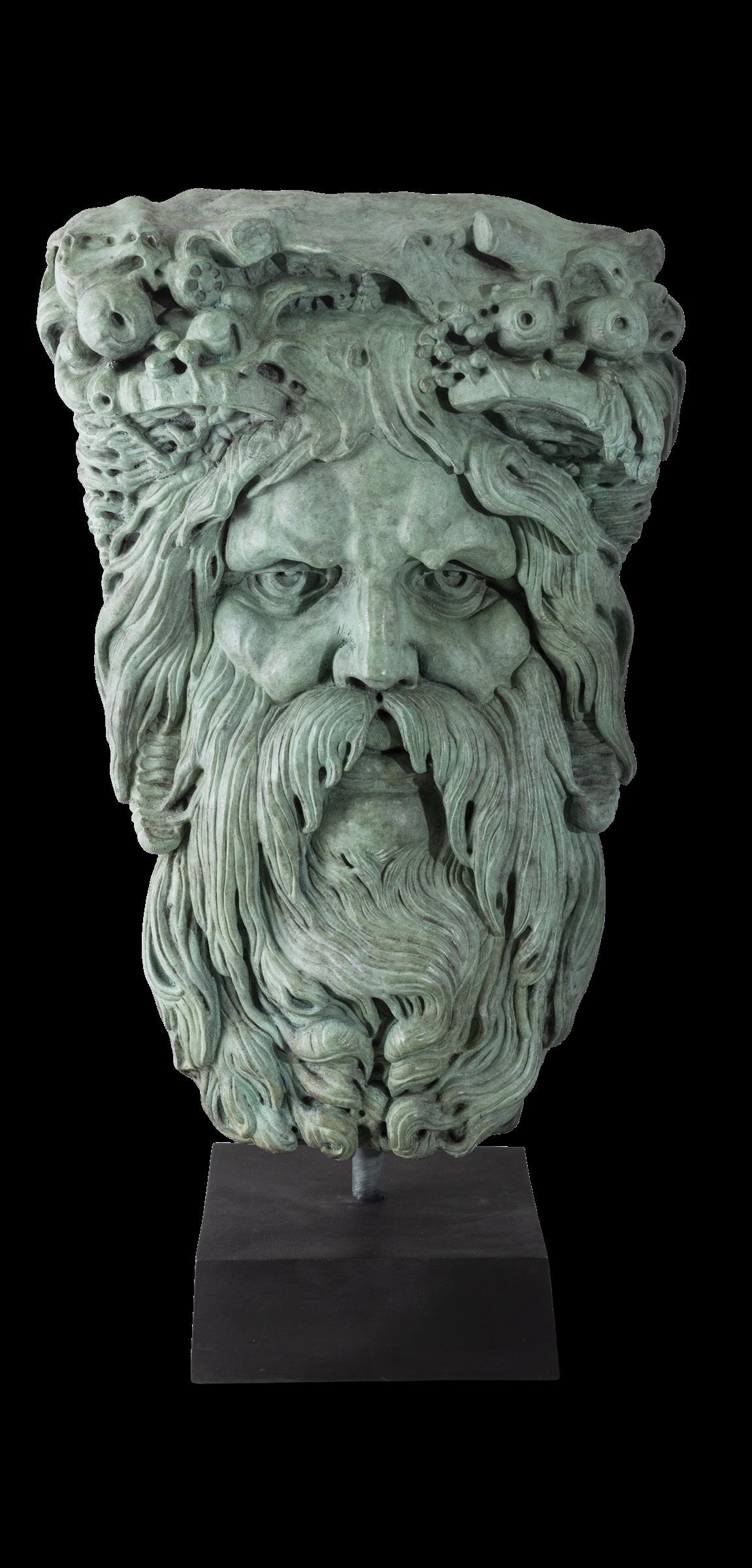
Deirdre and the Sons of Uisneach
Painted steel, 107cm (h) (42’’)
Unique
€ 4,000 - 6,000
Among the most evocative narratives in the Irish mythological canon, The Tale of Deirdre and the Sons of Uisneach is a haunting chronicle of beauty, love, and betrayal, suffused with fatal prophecy and political ambition. This ancient Ulster Cycle legend endures as both a national treasure and a timeless exploration of the destructive tension between personal desire and sovereign power.
Foretold at birth to bring ruin upon kings and warriors, Deirdre—renowned for a beauty likened to snow and raven’s wing—was secreted away in woodland seclusion in an attempt to thwart fate. Yet the prophecy would prove inexorable. Upon encountering Naoise, the son of Uisneach, whose countenance precisely matches her dreamt-of ideal, Deirdre falls irreversibly in love. Their union, however, defies the will of King Conchobar mac Nessa, who had intended to claim Deirdre for himself. In fear and defiance, Deirdre flees with Naoise and his brothers, Ardan and Ainnle, across the sea to Scotland. There, they live in exile, attempting to preserve both love and life away from Conchobar’s reach.
But beauty such as Deirdre’s cannot remain hidden, and soon her renown spreads even to the Scottish court. Jealousies stir. Sensing his opportunity, Conchobar cunningly lures the exiles back to Ireland under false assurances of peace. His promises, however, are treacherous. The sons of Uisneach are betrayed and slaughtered upon their return. Consumed by sorrow and stripped of all she holds dear, Deirdre’s fate reaches its tragic fulfilment as she chooses death over life without love.
This enduring tale, at once lyrical and brutal, serves as a sublime embodiment of Ireland’s rich mythopoetic heritage. It speaks not only to the cost of passion and the relentlessness of destiny but also to the tragic human cost of political ambition and broken oaths.
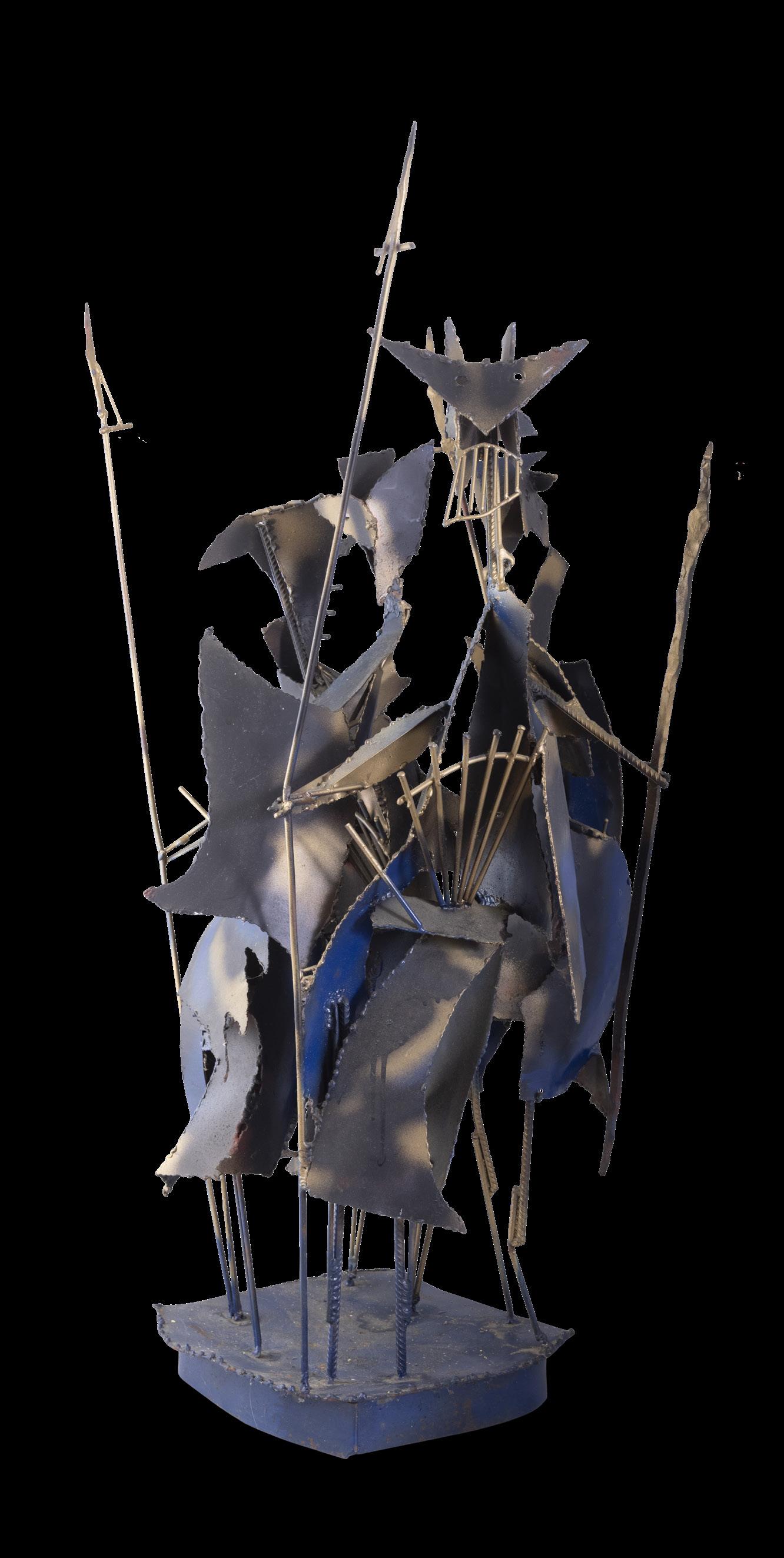

85
JAMES MCKENNA (1933-2000)
Study of a Horse
Bronze, 36 x 12 x 35cm (h) (14 x 4¾ x 13¾’’)
Edition no. 3/3
Signed € 1,500 - 2,000
A seminal figure in the Irish cultural landscape, James McKenna was celebrated both as a sculptor of distinction and as a literary voice of depth and originality. Born in Dublin in 1933, McKenna studied at the National College of Art and Design, laying the foundation for a career that would bridge the visual and literary arts with remarkable fluency.
A founding member of both the Independent Artists Group and the Sculptors’ Society of Ireland, McKenna played a pivotal role in shaping the direction of contemporary Irish art in the latter half of the 20th century. He exhibited regularly with the Irish Exhibition of Living Art and, in recognition of his contribution to sculpture, was awarded the prestigious
Macaulay Fellowship in 1960. In 1983, he was elected to Aosdána, the affiliation of creative artists in Ireland, in honour of his artistic achievements.
Throughout the 1980s and ’90s, McKenna’s work featured in numerous international exhibitions, establishing his reputation beyond Ireland’s borders. A major retrospective was held at the Riverbank Arts Centre, Co. Kildare, in 2002; its principal space, the McKenna Gallery, now bears his name in tribute. A major retrospective of his work was held at IMMA in 2007.
Among his most acclaimed public works are Resurgence, a commanding limestone monument at the University of Limerick; Female Figure and Tree (1979) at the Central Bank in Sandyford, Dublin; and the evocative Gerard Manley Hopkins Monument in Monasterevin, Co. Kildare. These works embody a deeply rooted sense of place and a timeless engagement with the human form.
In parallel with his sculptural practice, McKenna was a playwright and poet of considerable note. His dramatic works—including The Scatterin’, At Bantry, Citizens’ Tree, The Battering Ram, and People Without Fame—as well as his published poetry, underscore a lifelong devotion to the expressive power of language.

€ 4,000 - 6,000
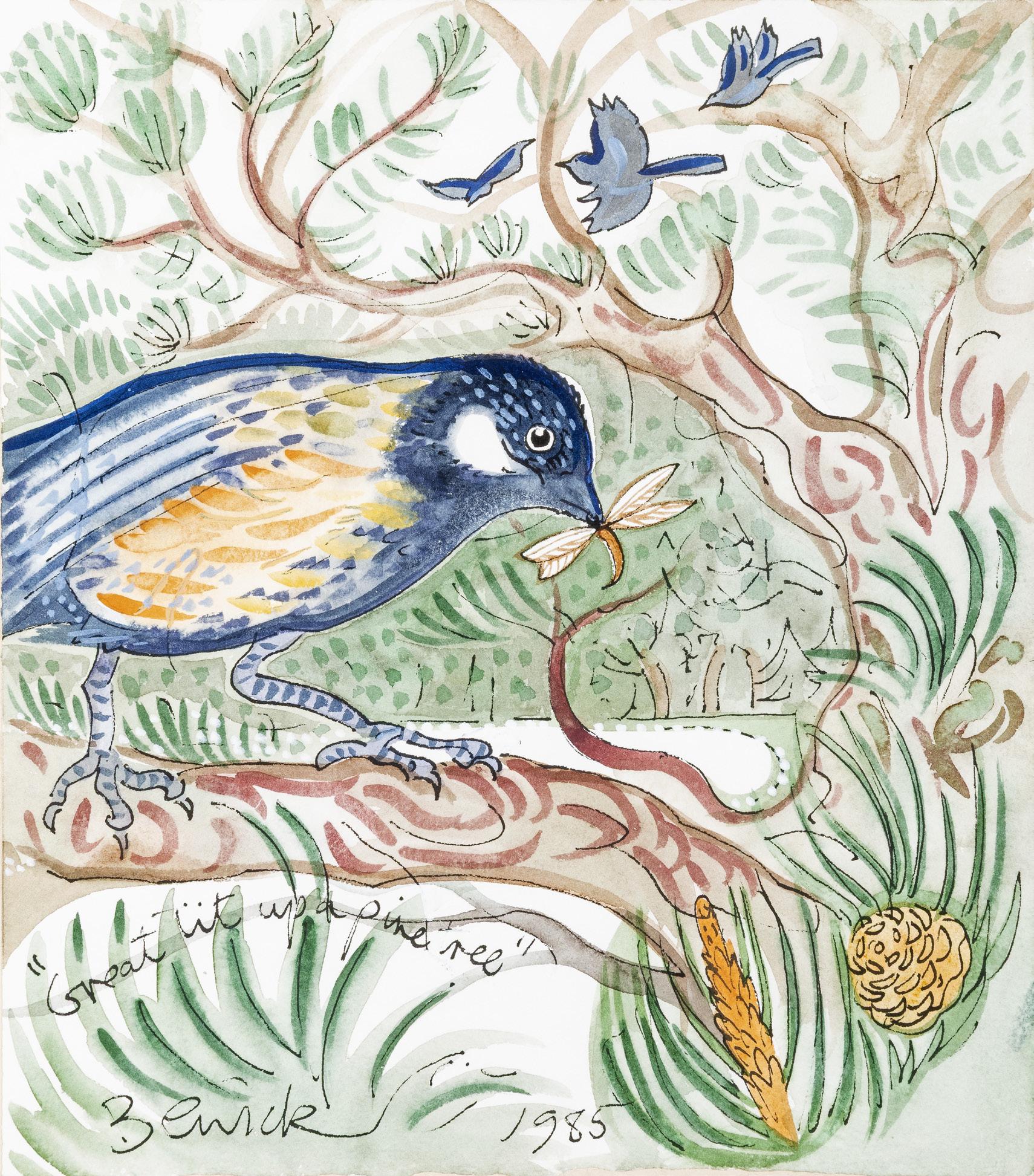
Great Tit up a Pine Tree (1985)
Watercolour, 28 x 25cm (11 x 9¾’’)
Signed, inscribed and dated 1985
€ 800 - 1,200
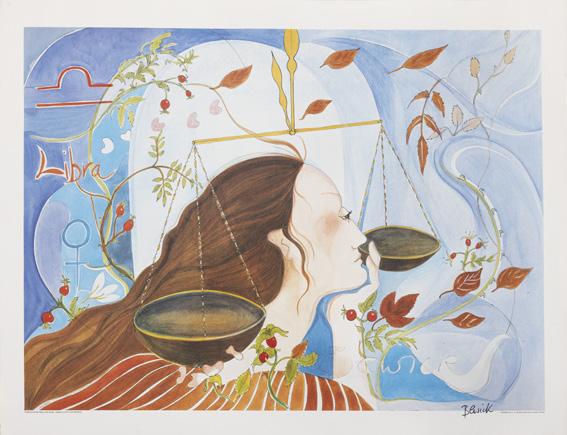
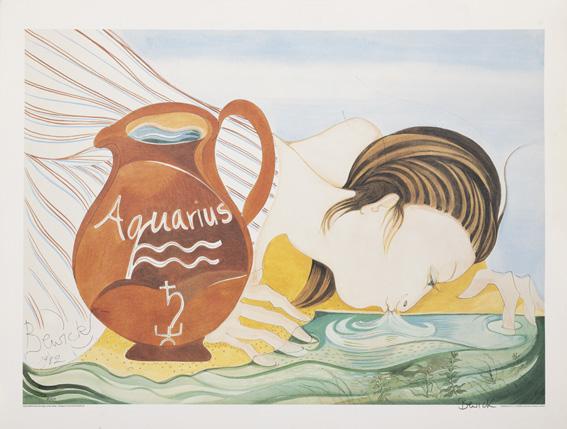
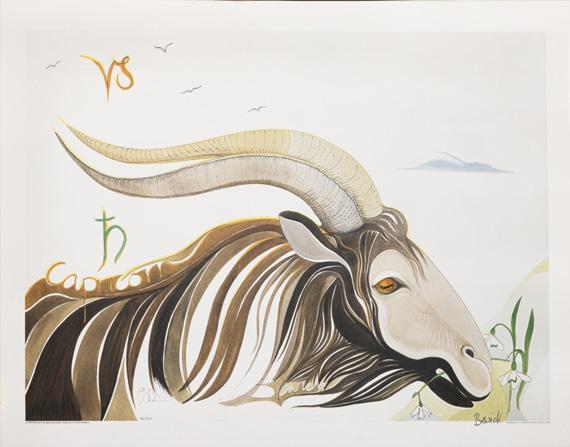

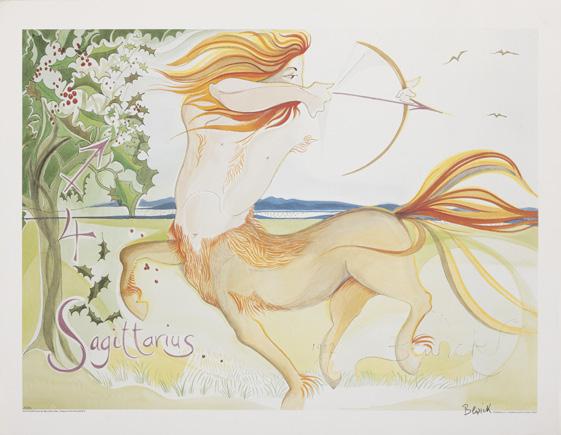
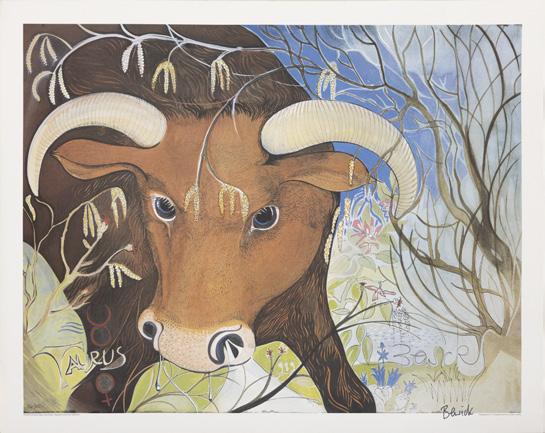
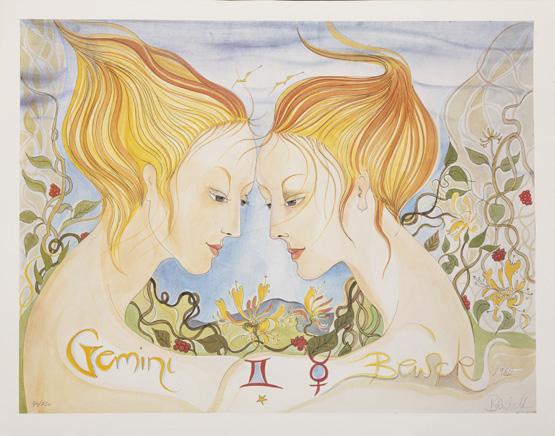
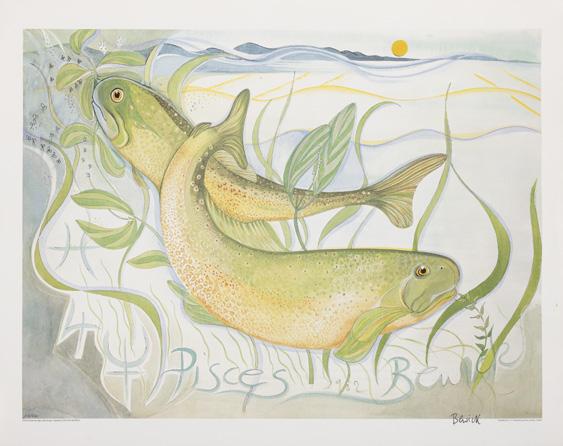
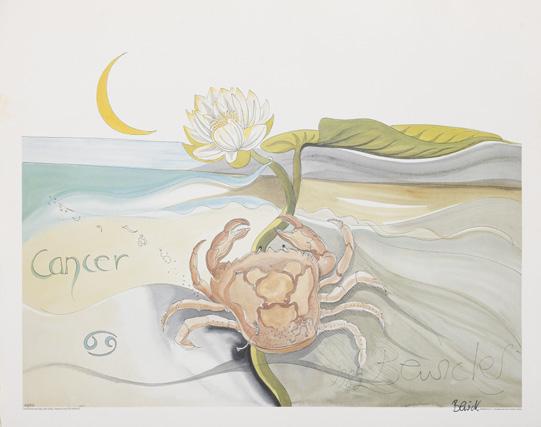

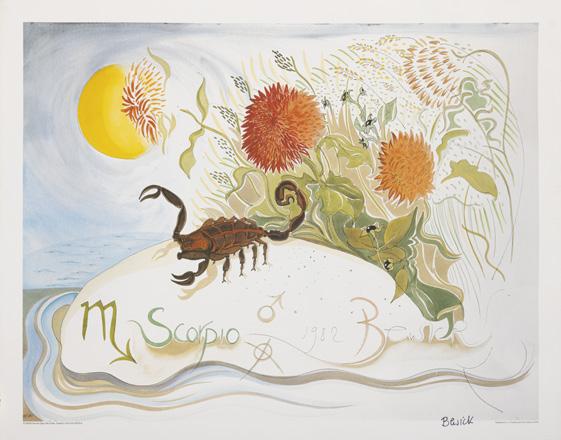
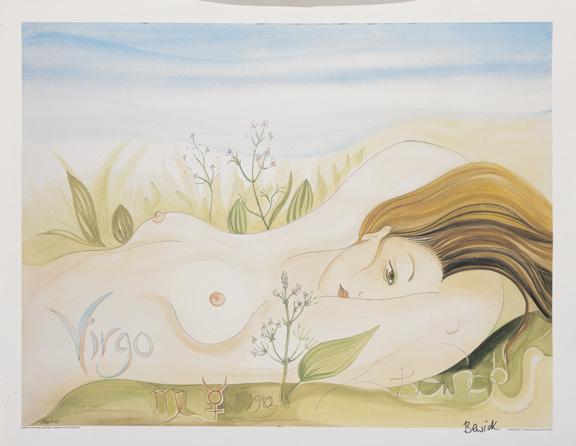
Signs of the Zodiac
A set of 12 offset lithographs, 55 x 77.5cm (21½ x 30½”)
Signed From an edition of 750 Unframed
€ 2,000 - 3,000
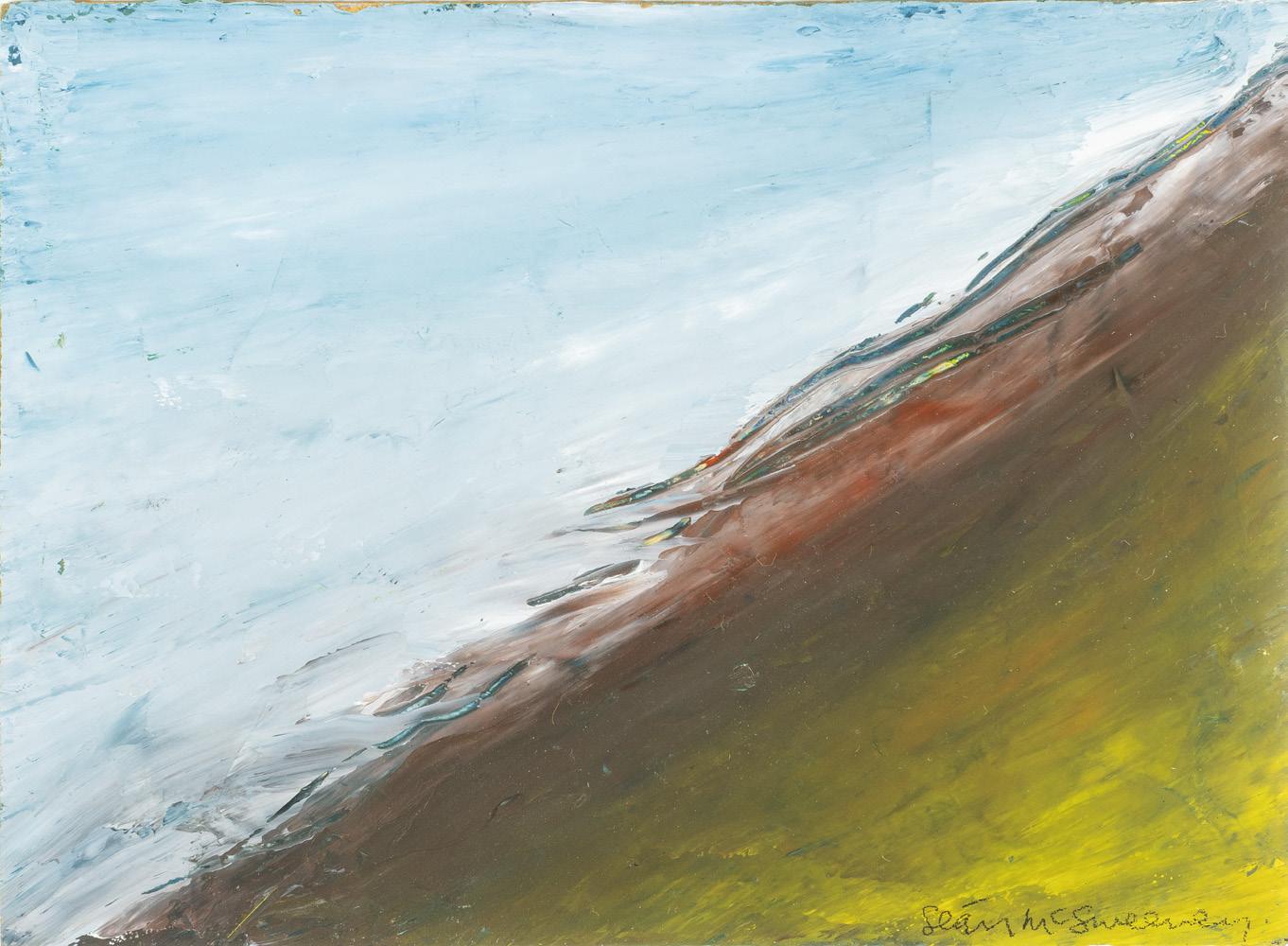
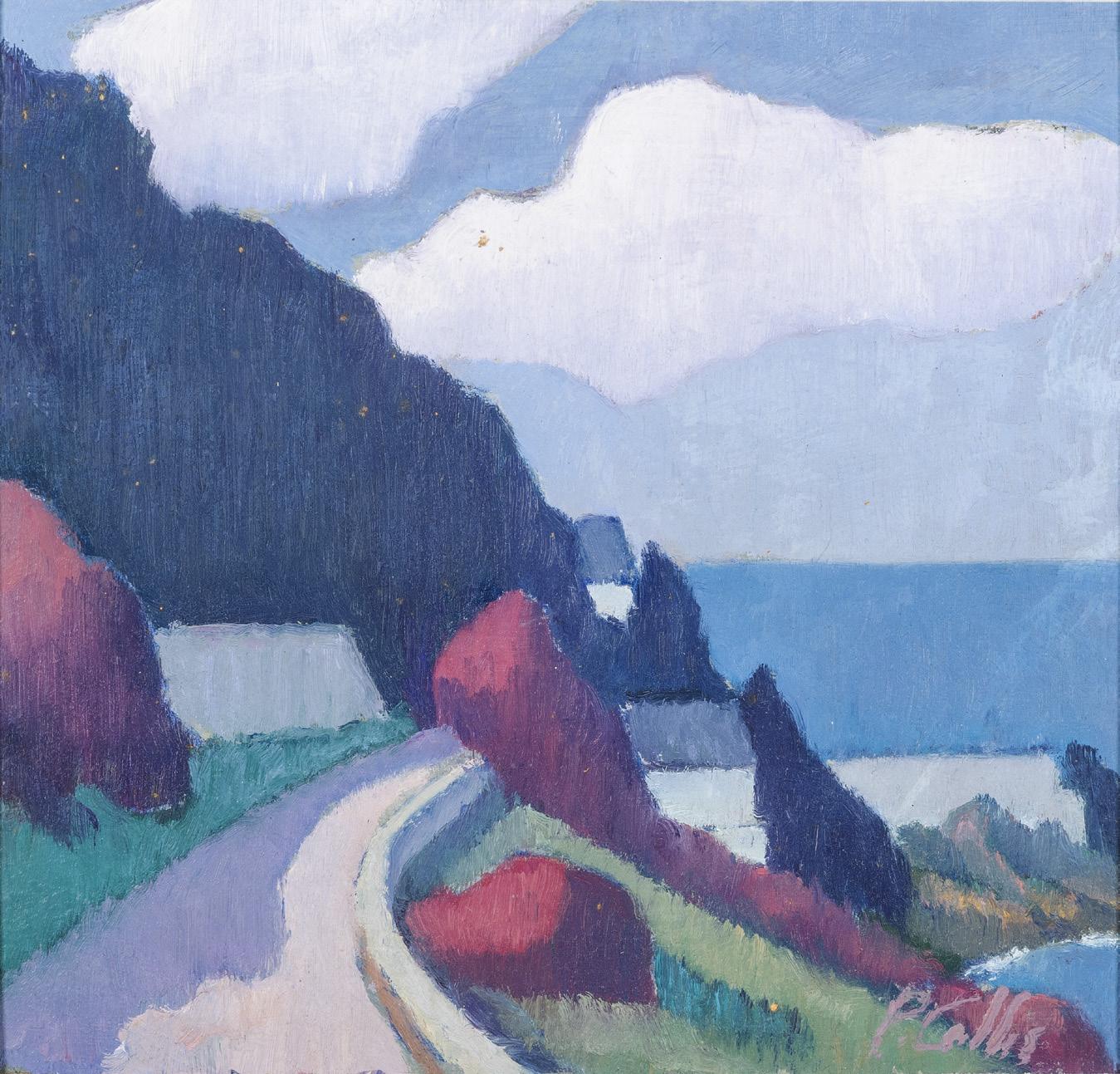
89 SEAN MCSWEENEY (1935-2018)
Land and Sea
Oil on artist’s board, 16 x 22cm (6¼ x 8¾’’)
Signed; also signed and inscribed with title verso
Provenance: With the Fenderesky Gallery, Belfast
€ 1,000 - 1,500
90 PETER COLLIS RHA (1929-2012)
The Vico Road
Oil on board, 16 x 17.5cm (6¼ x 6¾’’)
Signed
€ 800 - 1,200
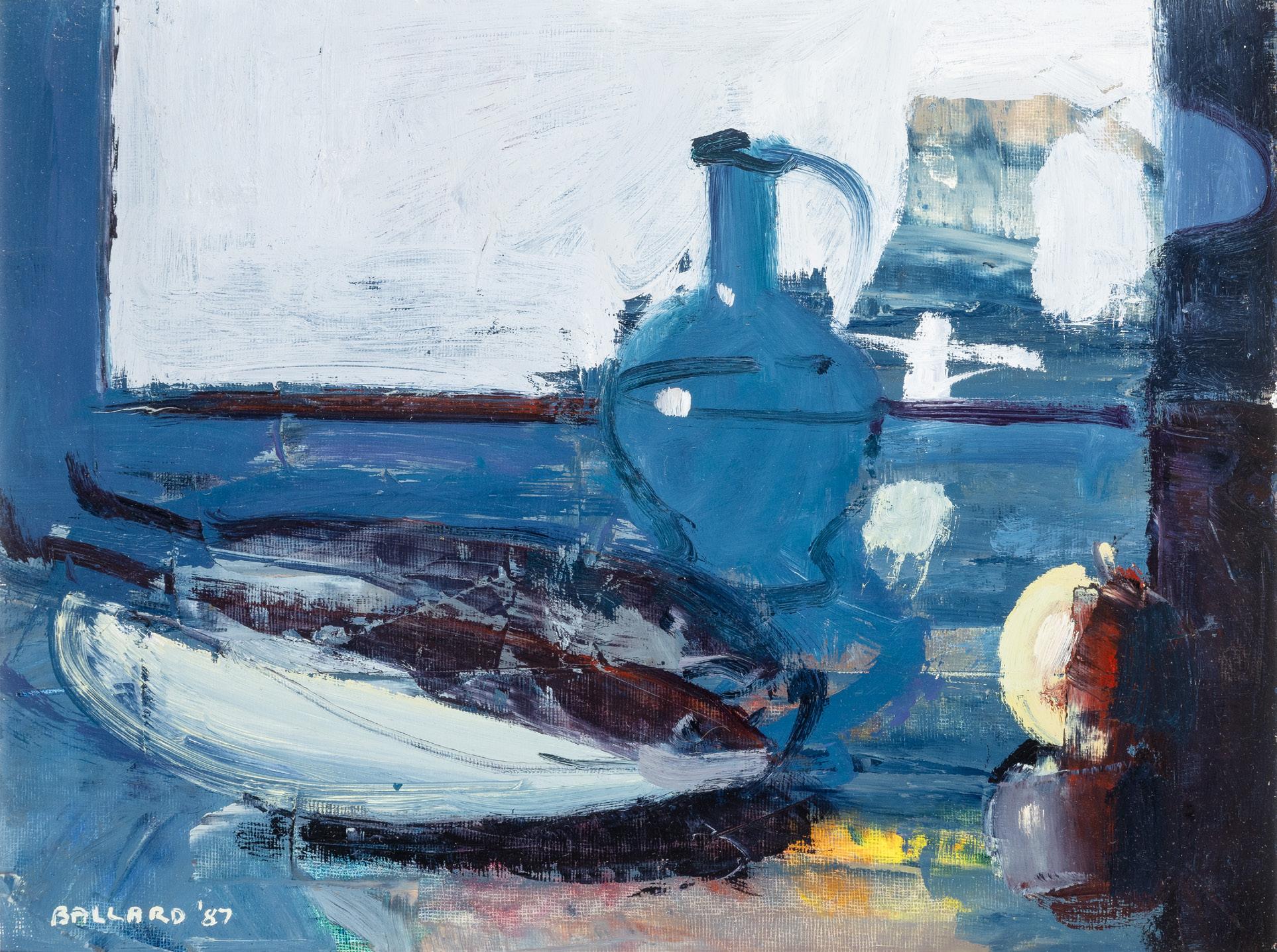
Apple and Fish (1987)
Oil on board, 30 x 40cm (11¾ x 15¾”)
Signed and dated (19)’87
Provenance: With The Solomon Gallery, London, label verso
€ 1,000 - 1,500
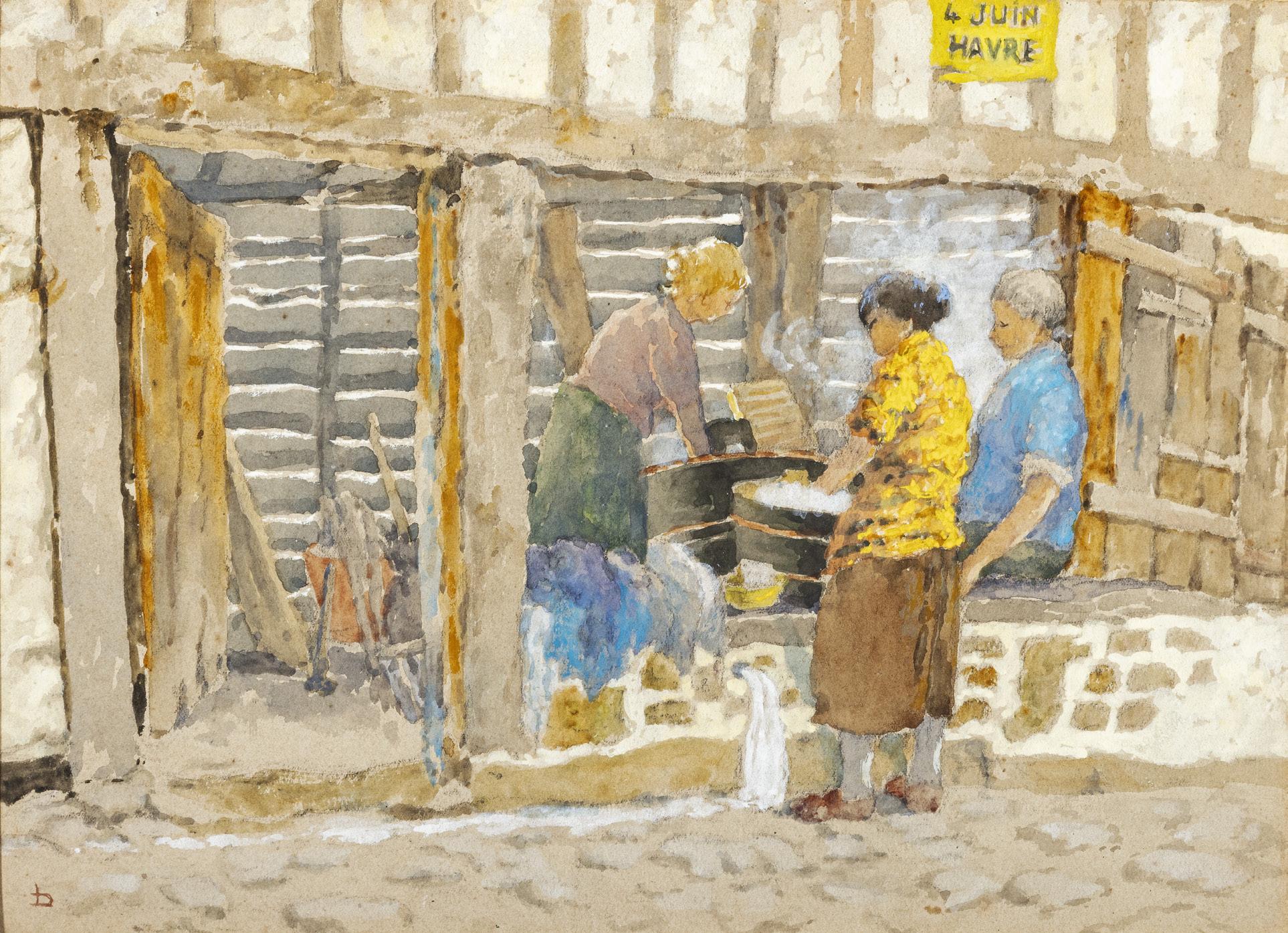
92
LILIAN LUCY DAVIDSON ARHA (1879-1954)
French Washer Women
Watercolour and conte, 26.5 x 36cm (10½ x 14¼’’)
Signed with monogram
€ 1,000 - 1,500
93
GRETTA BOWEN (1880-1981)
Sunday Afternoon
Oil on board, 51.5 x 41.5cm (20¼ x 16¼’’)
Signed
€ 3,000 - 4,000
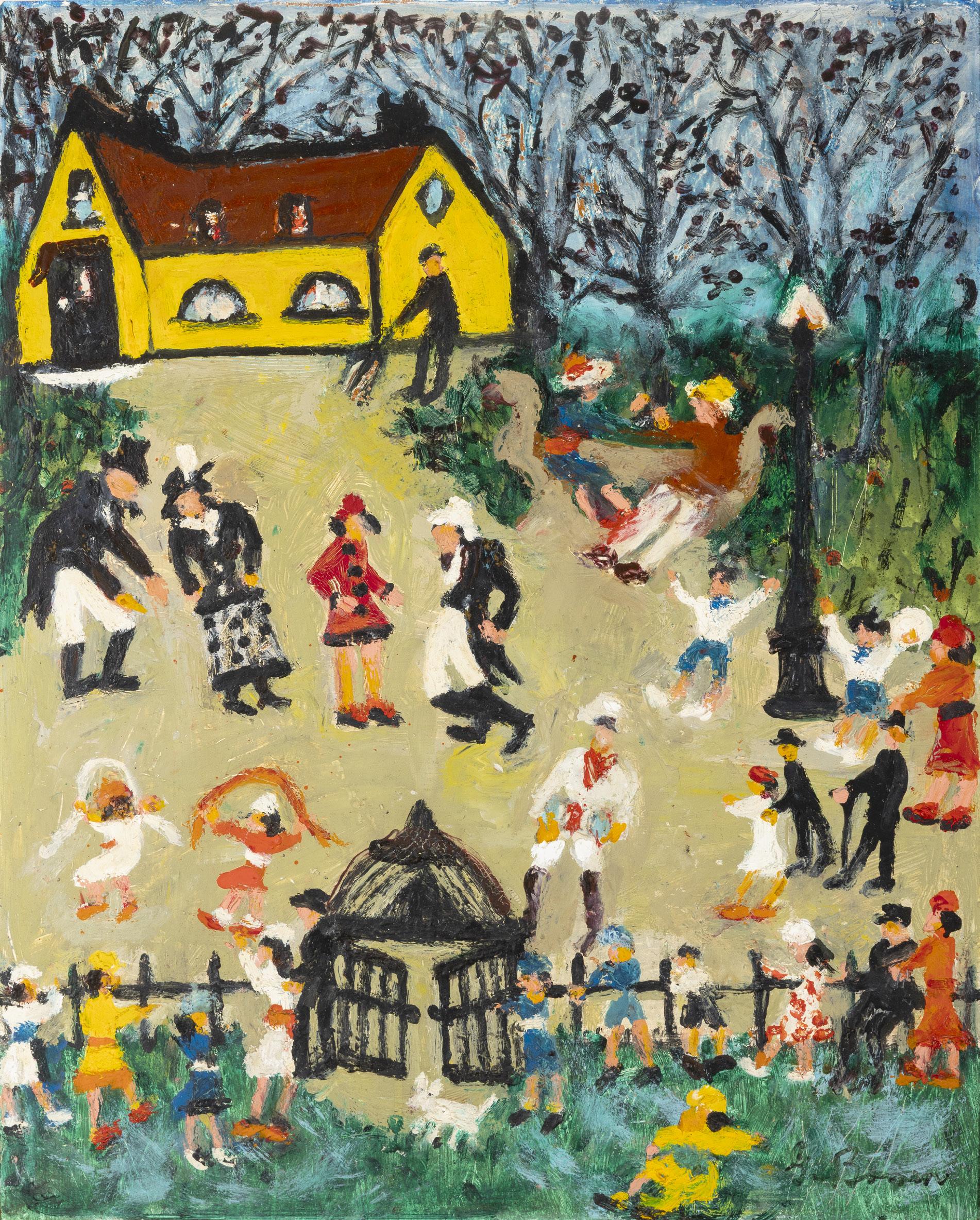
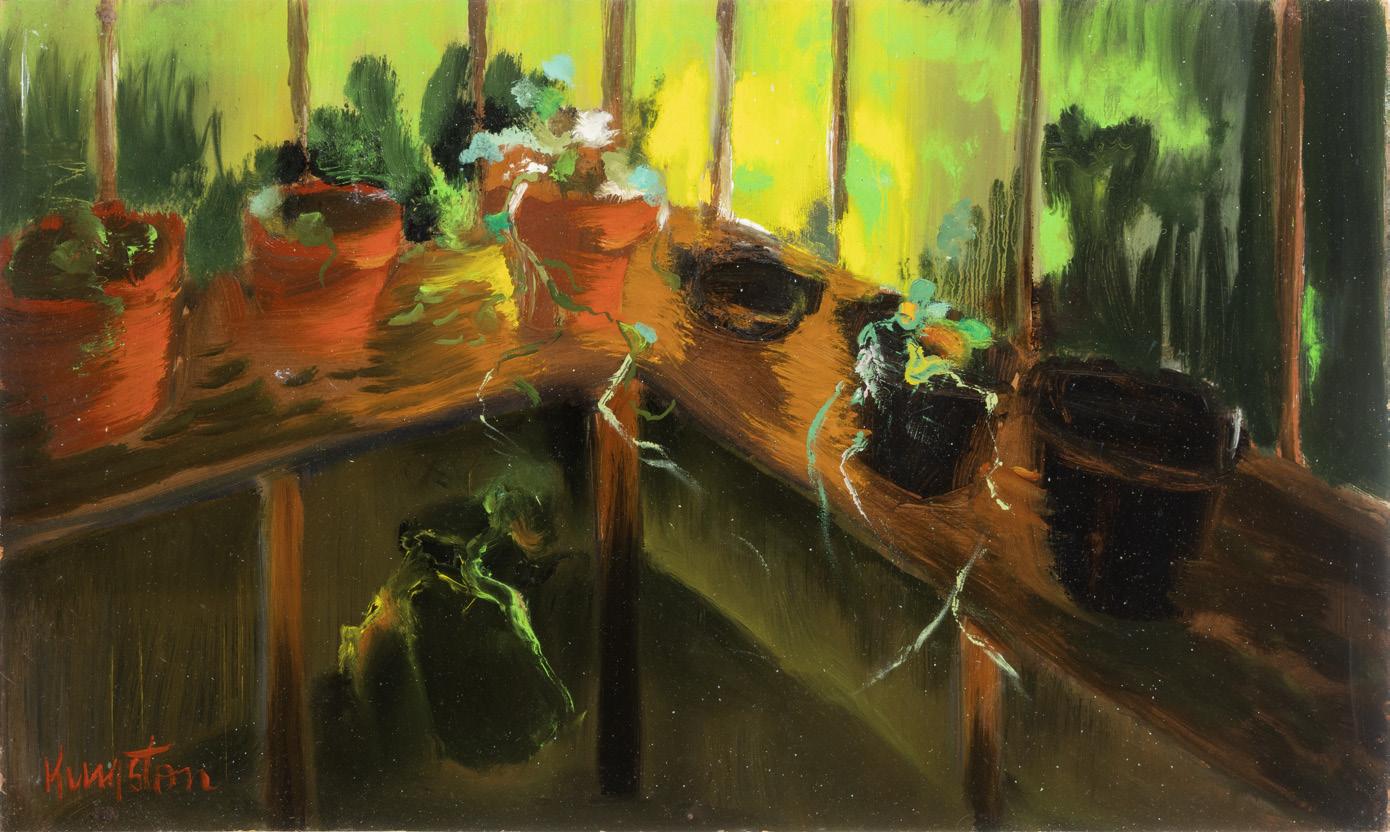
94
RICHARD KINGSTON RHA (1922-2003)
Garden Shed
Oil on board, 27 x 45.4cm (10½ x 17¾’’)
Signed € 800 - 1,200
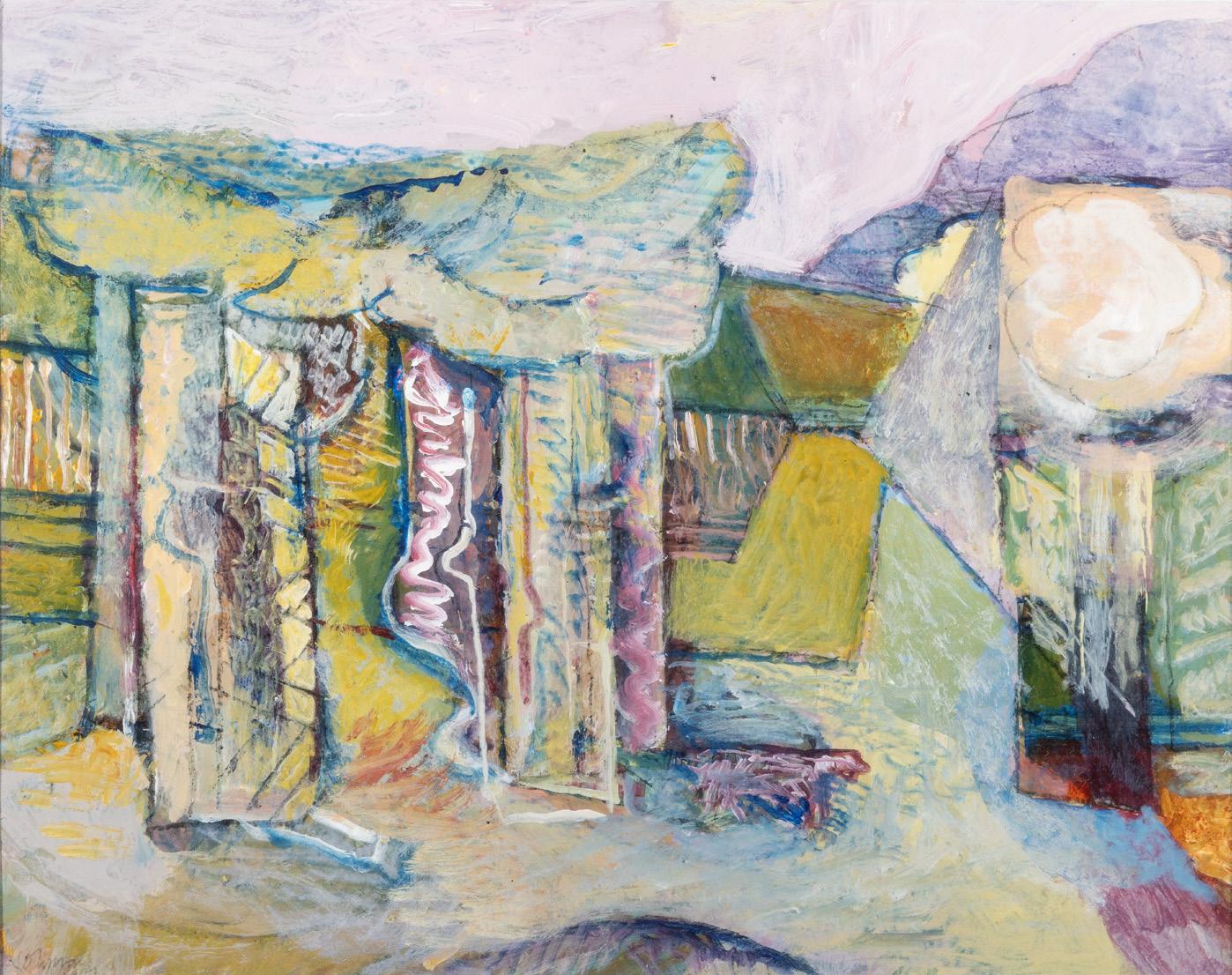
95
NEVILL JOHNSON (1911-1999)
Holland Park
Mixed media on board, 30 x 38cm (11¾ x 15’’)
Signed
€ 800 - 1,200
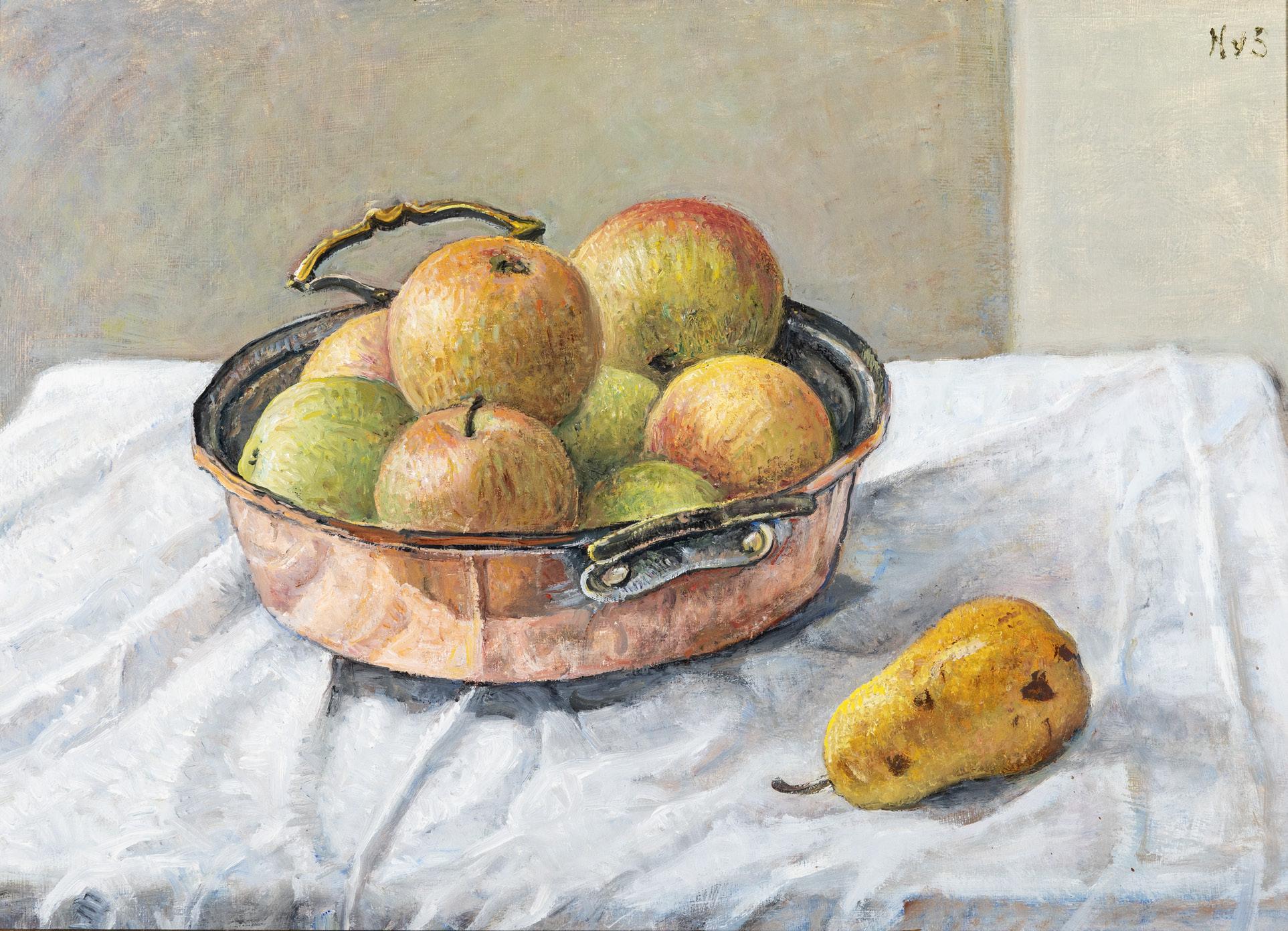
96
HILDA VAN STOCKUM HRHA (1908-2006)
Apples in a Copper Pan (1993)
Oil on board, 34 x 46cm (13¼ x 18’’)
Signed; inscribed and dated 1993 verso
€ 1,000 - 1,500
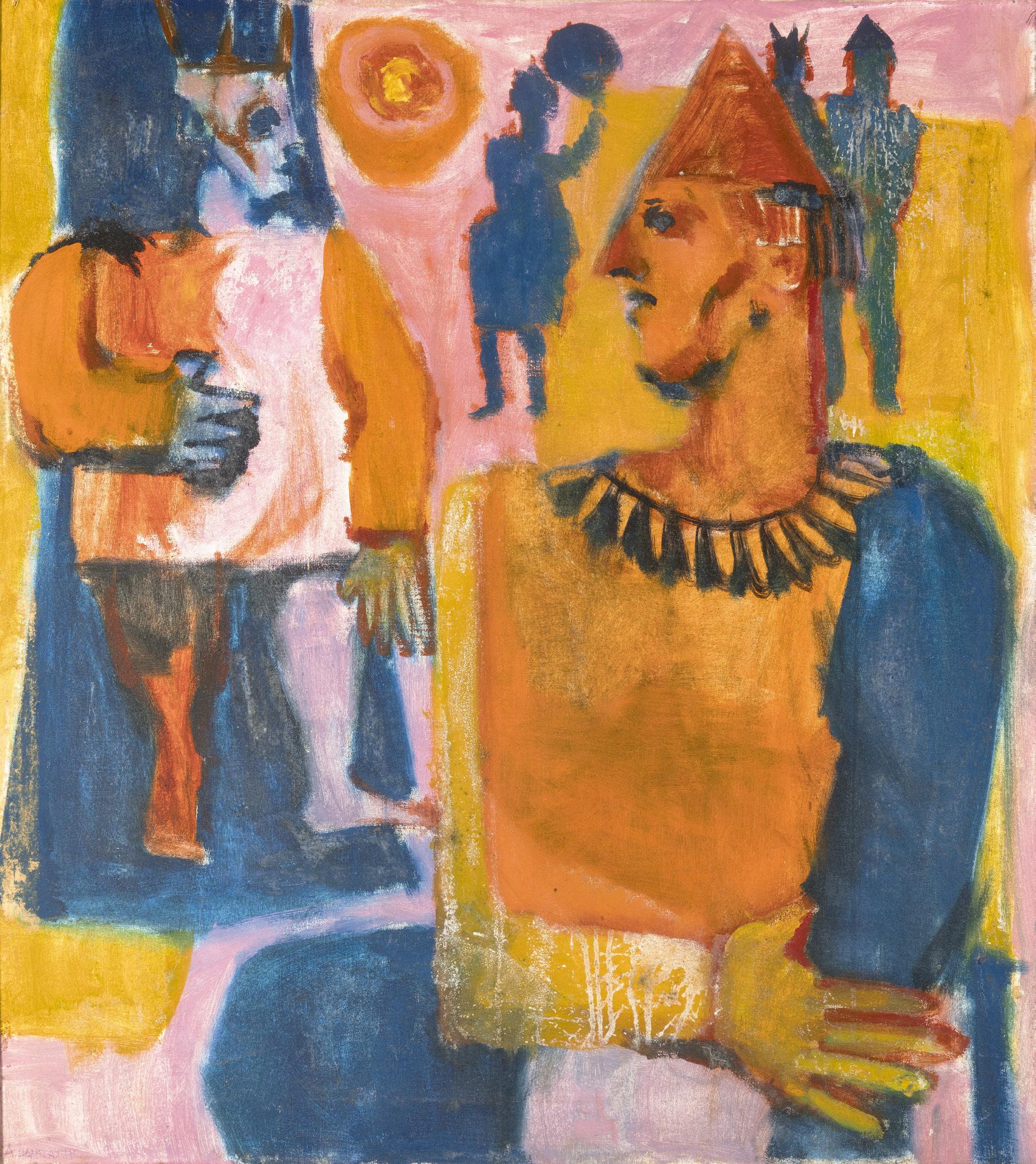
Alice Hanratty was born in Dublin and studied painting and printmaking at the National College of Art and Design (NCAD), Dublin, and Hornsey College of Art, London. In the late 1960s, she spent time working in East Africa, an experience that influenced her artistic practice. She is a member of Aosdána and has served on its governing body, the Toscaireacht.
Oil on canvas, 70 x 63cm (27½ x 23¾’’)
Signed, lower left; also signed on remnant of artist’s label verso
€ 800 - 1,200
Hanratty has exhibited widely, both in Ireland and internationally. She represented Ireland at major exhibitions including the International Impact Exhibition in Kyoto (1989), the Works on Paper Group Exhibition at the Armory, New York (1992), the London Original Print Fair at the Royal Academy of Arts (1995), the International Biennale of Print in Belgrade (1998), and the Estampe International Print Exchange in Paris (2001). Her work has featured in numerous group exhibitions at home and abroad, such as The Delighted Eye in London (1979), Irish Artists in Chicago (1980), and Irish Women Artists from the Eighteenth Century to the Present Day in Dublin (1987).
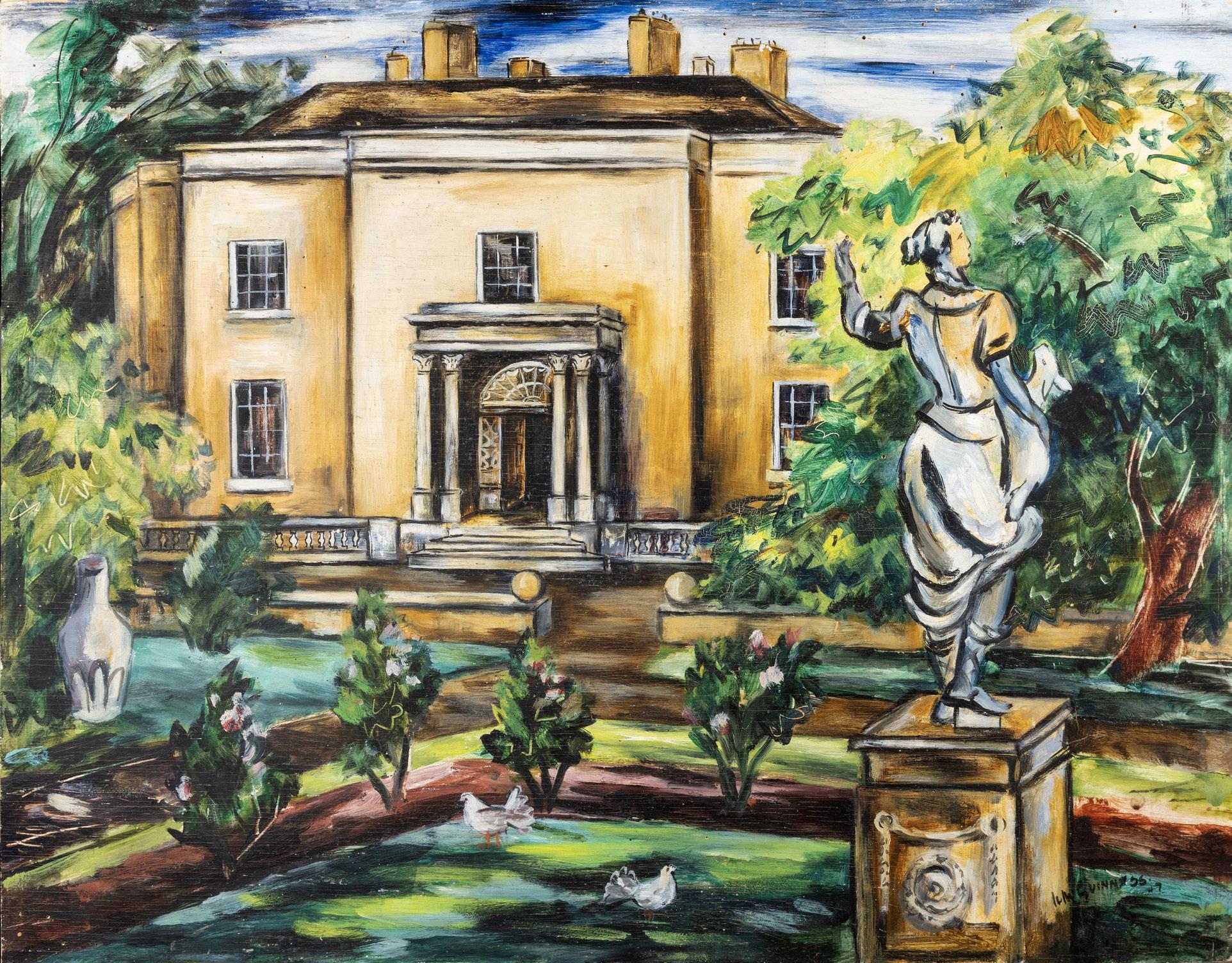
NORAH
A View of Newtown Park House
Oil on board, 57 x 72.5cm (22½ x 28½”)
Signed and dated (19)’49
Provenance: Collection of Senator Edward McGuire, Newtown Park House, Blackrock, thence by descent
€ 3,000 - 5,000
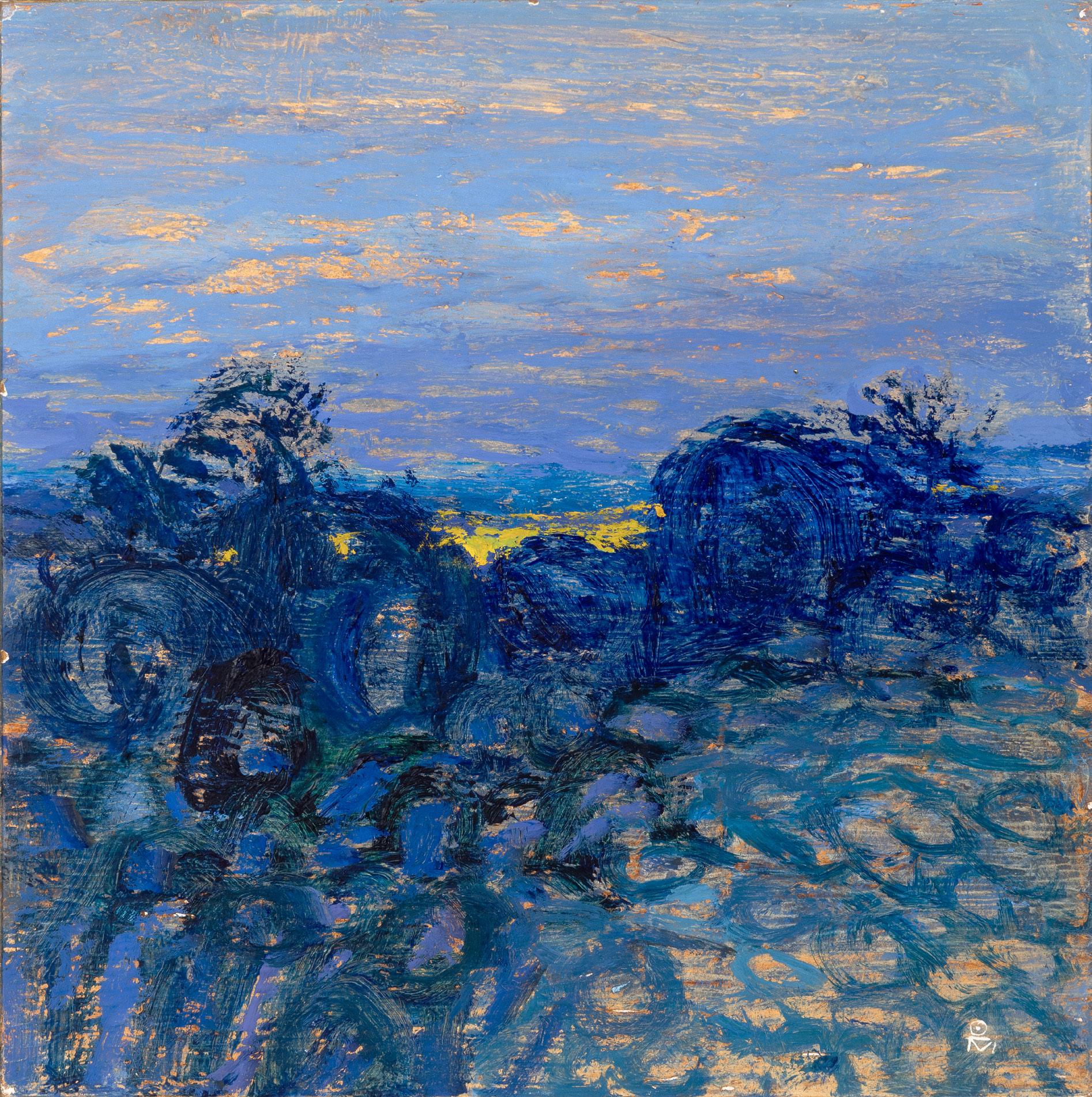
Freckled
Oil on board, 20 x 20cm (8 x 8”)
Signed with monogram
Provenance: With the Hendriks Gallery, Dublin, label verso
€ 2,000 - 3,000

Signed
€ 800 - 1,200
Armstrong, Arthur 24, 25
Ballagh, Robert 81
Ballard, Brian 91
Behan, John 18, 84, 62, 63
Bewick, Pauline 87, 88
Bowen, Gretta 93
Boyd, John 46
Blackshaw, Basil 23, 50
Breslin, Rory 83
Butler, Mildred Anne 4, 5, 67-69
Casey, Michael 60
Collis, Peter 90
Cooke, Barrie 15
Curling, Peter 80
Davidson, Lilian Lucy 92
Dillon, Gerard 8, 9, 11
Egan, Felim 44
Ffrench Salkeld, Cecil 27
Fox, Kathleen 75
Francis, Mark 42
Gale, Martin 12
Gillespie, Rowan 19
Gorman, Richard 43
Hamilton, Letitia Marion 2, 3
Hanratty, Alice 97
Hone, Evie 6
Hone, Nathaniel 35
James, David 72
Johnson, Neville 95
Kelly, Gerald Festus 36
Kelly, Oisín 16, 17
Kelly, Paul 21
King, Cecil 100
Kingston, Richard 94
Le Brocquy, Louis 38 – 41, 82
Leonard, Patrick 78, 79
Maclise, Daniel 71
Maguire, Cecil 30
McGuinness, Bingham 65
McGuinness, Norah 98
McKelvey, Frank 29
McKenna, James 85
McSweeney, Sean 89
Mooney, Martin 22
Middleton, Colin 10, 99
Nicholl, Andrew 73
O’Brien, Dermod 37
O’Conor, Roderic 31, 64
O’Donoghue, Hughie 20
O’Kelly, Aloysius 34
O’Malley, Tony 56 - 59
O’Neill, Mark 1, 47, 48
Orpen, Bea 66
Ponsoby Staples, Robert 74
Power, Albert
Pye, Patrick 49
Rákóczi, Basil Ivan 26
Russell, George William 32
Scott, Patrick 86
Scott, William 51 - 54
Scully, Seán 55
Shinnors, John 14
Simmonds-Gooding, Maria 13
Stockum, Hilda van 96
Stuart, Imogen 61
Swanzy, Mary 28
Walton, Conor 45, 76, 77
Warren, Barbara 7
West, Robert Lucius 33
Wheatley, Francis 70
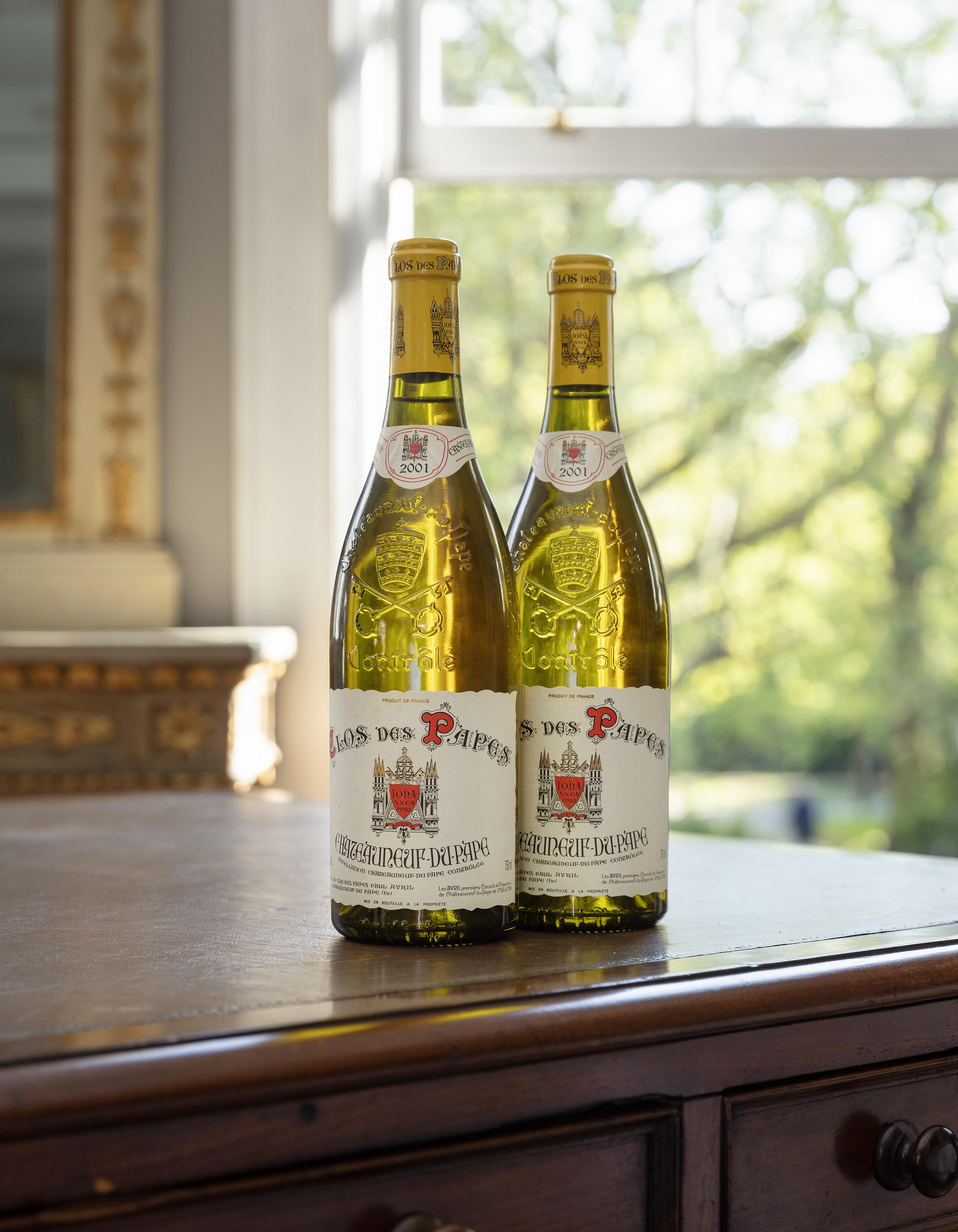
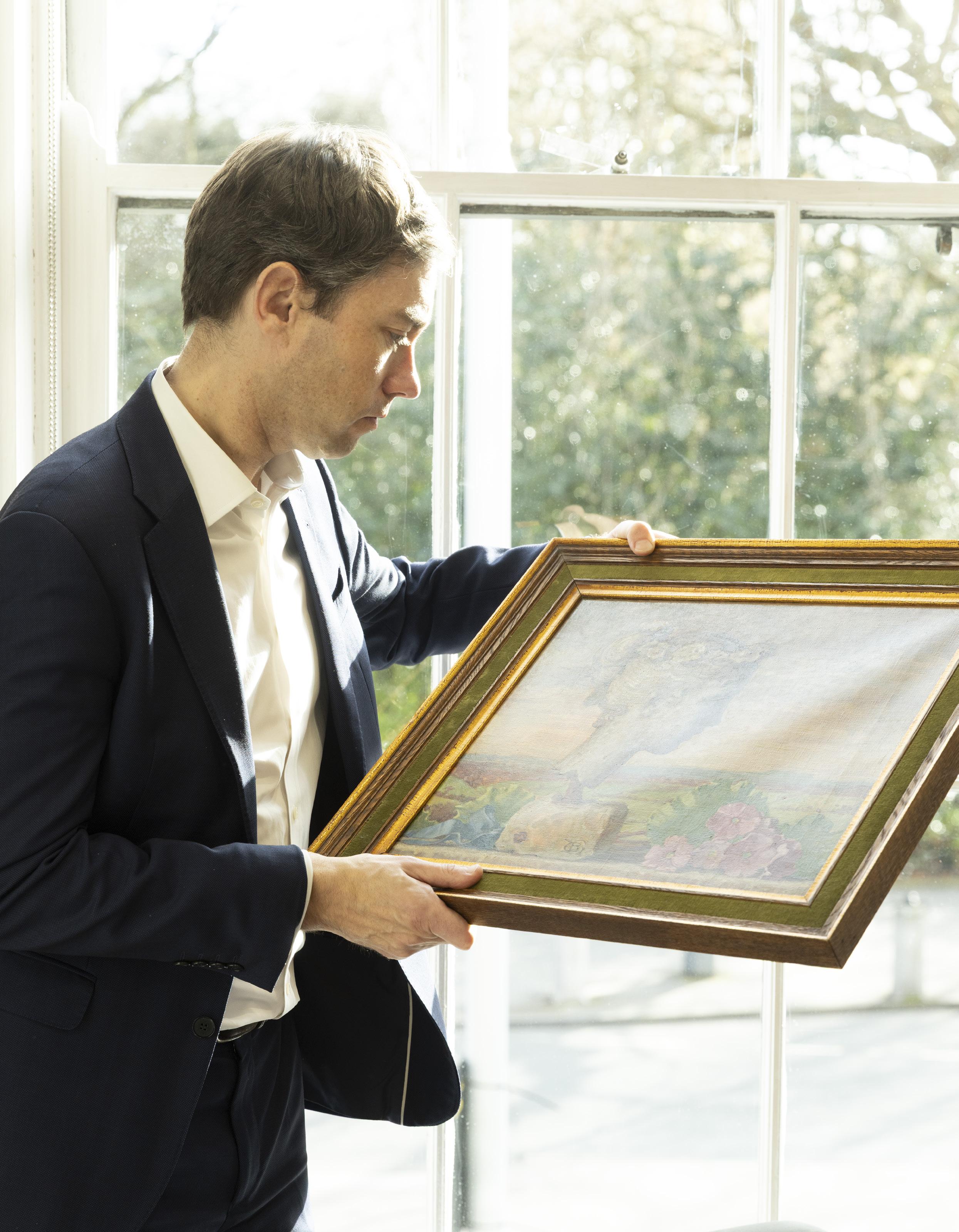

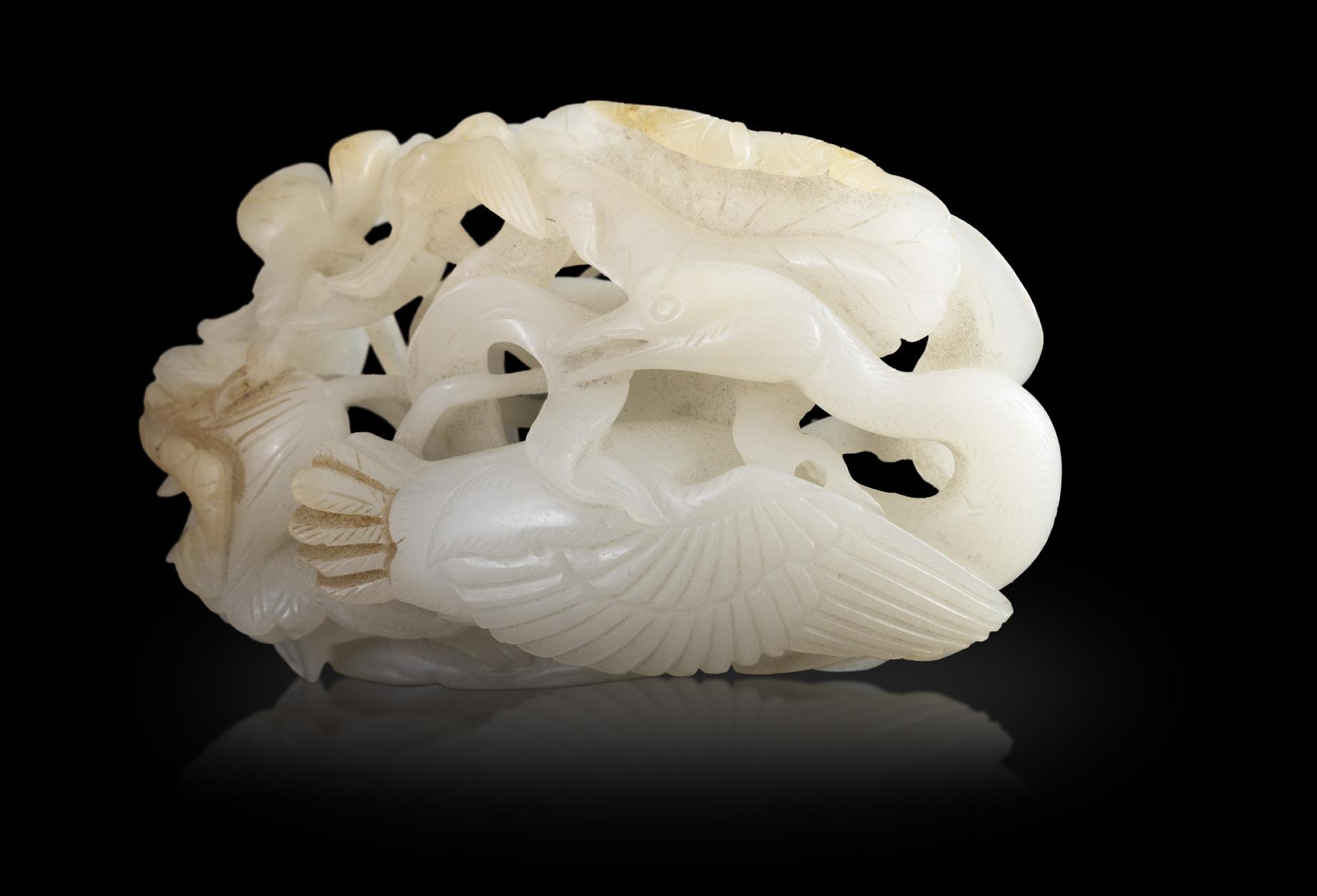
Auction Wednesday 25th June 2025 A RETICULATED WHITE JADE ‘EGRETS AND LOTUS’ GROUP 明代 青白玉透雕 ‘一路连科‘ China, Ming dynasty
Price realised: €42,500
For informed, professional and friendly advice contact Dr. Wei Wang wei.wang@adams.ie

26 St. Stephen’s Green, Dublin 2. Ireland +353 1 676 0261
info@adams.ie | www.adams.ie
Invitation to Consign Auction Tuesday 9 th September 2025
“An
Irish Connection to an International Market”
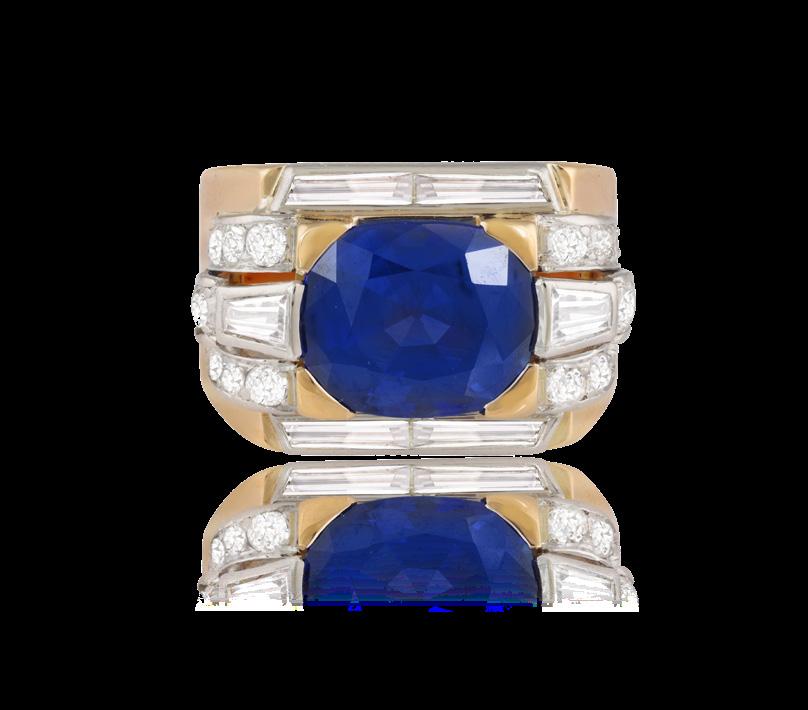
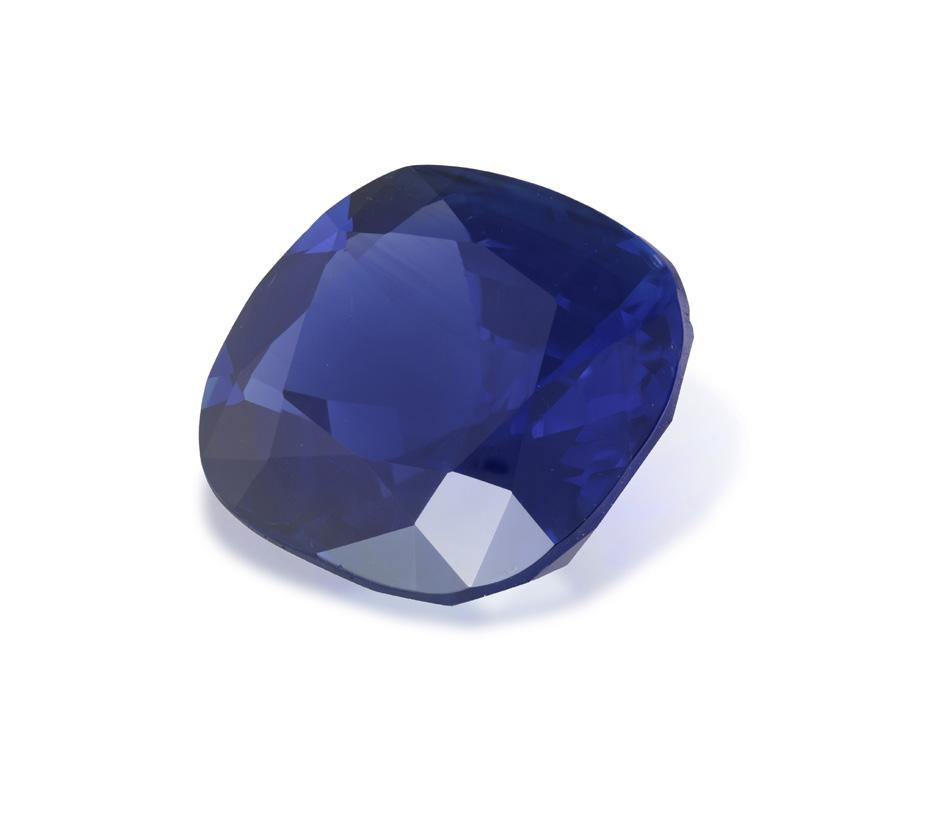
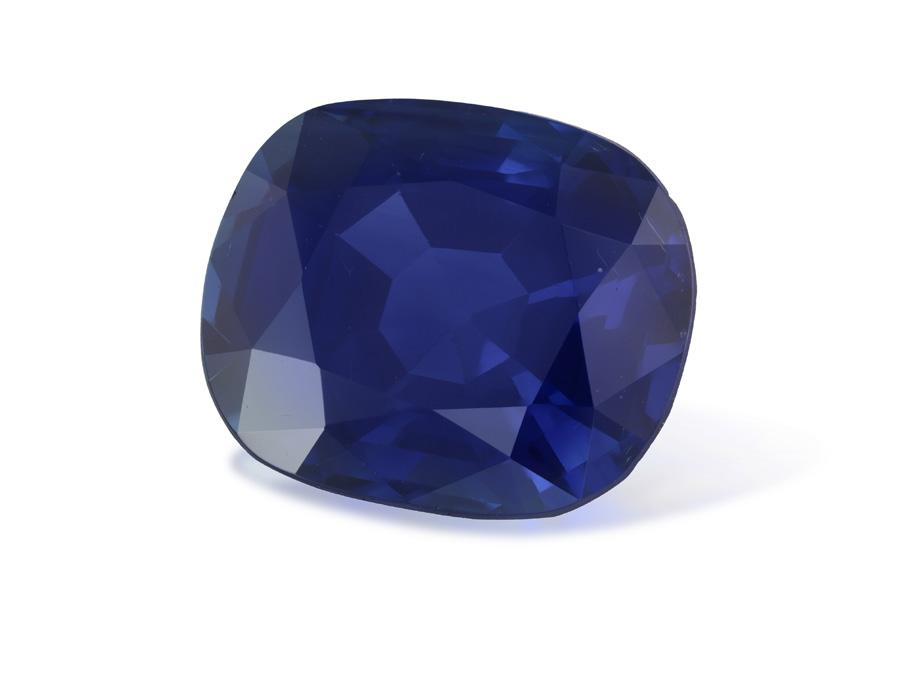
From the Private Collection of a Continental Lady
An Exceptional and Rare Kashmir Sapphire of 6.22cts set on a 1940’s diamond ring mount
Estimate €150,000 - 250,000
To be auctioned on Tuesday 13th May 2025 View results on www.adams.ie
Enquiries
Claire-Laurence Mestrallet: jewellery@adams.ie
Ken Israel: watches@adams.ie

The Auctioneer carries on business on the following terms and conditions and on such other terms or conditions as may be expressly agreed with the Auctioneer or set out in any relevant Catalogue. Conditions 17-22 relate mainly to buyers and conditions 24-40 relate mainly to sellers. Words and phrases with special meanings are defined in condition 1. Buyers and sellers are requested to read carefully the Cataloguing Practice and Catalogue Explanations contained in conditions 2 and 8.
Definitions
1. In these conditions the following words and expressions shall have the following meanings:
‘Auctioneer’ – James Adam and Sons trading as Adam’s ‘Auctioneer’s Commission’ – The commission payable to the Auctioneer by the buyer and seller as specified in conditions 22 and 26.
‘Catalogue’ – Any advertisement, brochure, estimate, price list or other publication.
‘Forgery’ – A Lot which was made with the intention of deceiving with regard to authorship, culture, source, origin, date, age or period and which is not shown to be such in the description therefore in the Catalogue and the market value for which at the date of the auction was substantially less than it would have been had the Lot been in accordance with the Catalogue description.
‘Hammer Price’ – The price at which a Lot is knocked down by the Auctioneer to the buyer.
‘Lot’ – Any item which is deposited with the Auctioneer with a view to its sale at auction and, in particular, the item or items described against any Lot number in any Catalogue.
‘Proceeds of Sale’ – The net amount due to the seller being the Hammer Price of the Lot after deducting the Auctioneer’s Commission thereon under condition 26 the seller’s contribution towards insurance under condition 28, such VAT as is chargeable and any other amounts due by the seller to the Auctioneer in whatever capacity howsoever arising.
‘Registration Form or Register’ – The registration form (or, in the case of persons who have previously attended at auctions held by the Auctioneer and completed registration forms, the register maintained by the Auctioneer which is compiled from such registration forms) to be completed and signed by each prospective buyer or, where the Auctioneer has acknowledged that a bidder is acting as agent on behalf of a named principal, each such bidder prior to the commencement of an auction.
‘Sale Agreement Form’ – The sale agreement form to be completed and signed by each seller prior to the commencement of an auction.
‘Total Amount Due’ – The Hammer Price of the Lot sold, the Auctioneer’s Commission due thereon under condition 22, such VAT as is chargeable and any additional interest, expenses or charges due hereunder.
‘V.A.T.’ – Value Added Tax.
Cataloguing Practice and Catalogue Explanations
2.Terms regarding cataloguing practice used in catalogues have specific meanings, and attention is drawn to these explanations in each published catalogue.
Auctioneer Acting as Agent
3. The Auctioneer is selling as agent for the seller unless it is specifically stated to the contrary. The Auctioneer as agent for the seller is not responsible for any default by the seller or the buyer. The Auctioneer reserves the right to bid on behalf of the seller.
Auctioneer Bidding on behalf of Buyer
4. It is suggested that the interests of prospective buyers are best protected and served by the buyers attending at an auction. However, the Auctioneer will, if instructed, execute bids on behalf of a prospective buyer. Neither the Auctioneer nor its employees, servants or agents shall be responsible for any neglect or default in executing bids or failing to execute bids.
Admission to Auctions
5. The Auctioneer shall have the right exercisable in its absolute discretion to refuse admission to its premises or attendance at its auctions by any person.
Acceptance of Bids
6. The Auctioneers shall have the right exercisable in its absolute discretion to refuse any bids, advance the bidding in any manner it may decide, withdraw or divide any Lot, combine any two or more Lots and, in the case of a dispute, to put any Lot up for auction again.
Indemnities
7. Any indemnity given under these conditions shall extend to all actions, proceedings, claims, demands, costs and expenses whatever and howsoever incurred or suffered by the person entitled to the benefit of the indemnity and the Auctioneer declares itself to be a trustee of the benefit of every such indemnity for its employees, servants or agents to the extent that such indemnity is expressed to be for their benefit.
Representations in Catalogues
8. Representations or statements made by the Auctioneer in any Catalogue as to attribution, authorship, genuineness, source, origin, date, age, provenance, condition or estimated selling price or value is a statement of opinion only. Neither the Auctioneer nor its employees, servants or agents shall be responsible for the accuracy of any such opinions. Every person interested in a Lot must exercise and rely on their own judgement and opinion as to such matters.
Governing Law
9. These conditions shall be governed by and construed in accordance with Irish Law.
Notices
10. Any notice or other communication required to be given by the Auctioneer hereunder to a buyer or a seller shall, where required, be in writing and shall be sufficiently given if delivered by hand or sent by post to, in the case of the buyer, the address of the buyer specified in the Registration Form or Register, and in the case of the seller, the address of the seller specified in the Sale Agreement Form or to such other address as the buyer or seller (as appropriate) may notify the Auctioneer in writing. Every notice or communication given in accordance with this condition shall be deemed to have been received if delivered by hand on the day and time of delivery and if delivered by post three (3) business days after posting.
Conflict of Interest
11. The Auctioneer affirms that no conflict of interest exists that prevents him/her providing the property service for the Client.
Records
12. The Auctioneer will keep a record of the services provided on foot of any Agreement for 6 years. All financial records must be kept for 7 years.
Bank Account
13. The Auctioneer’s “Client Account” is held at: Bank of Ireland 39 St. Stephen’s Green Dublin 2
Client Monies
14. Any interest credited to the Client Account in respect of monies held by the Auctioneer will be dispersed in accordance with the Property Services (Regulation) Act 2011 (Client Moneys) Regulations 2012.
Complaints
15. Any complaint which the Client may have arising under this Agreement may be dealt with by Eamon O’Connor - email: e.oconnor@adams.ie - tel: +353 1 6760261. A response will issue within 10 working days of receipt of the complaint.
Where the Client is dissatisfied with the response to the complaint received from the Auctioneer, the Client may make a complaint to: Property Services Regulatory Authority, Abbey Buildings, Abbey Road, Navan, Co Meath, C15 K7PY.
Statement of obligations on the Auctioneer pursuant to section 42 and 43 of the Criminal Justice (Money Laundering and Terrorist Financing) Act 2010
16. The Auctioneer is obliged under sections 42 and 43 of the Criminal Justice (Money Laundering and Terrorist Financing) Act 2010 to report to An Garda Síochána and the Revenue Commissioners suspicious transactions and transactions involving places designated under section 32 of that Act. The maximum cash accepted per transaction is €8,000. For any cash payments in excess of €500, a PSRA cash origin form will have to completed.
Non-Payment or Failure to Collect Purchased Lots
17. If a buyer fails to pay for and/or collect any purchased Lot by the dates herein specified for payment and collection the Auctioneer shall, in its absolute discretion and without prejudice to any other rights or remedies it may have, be entitled to exercise one or more of the following rights or remedies without further notice to the buyer:
(a) To issue court proceedings for damages for breach of contract.
(b) To rescind the sale of that Lot or any other Lots sold to the buyer whether at that or any other auction.
(c) To resell the Lot or cause it to be resold whether by public auction or private sale. In the event that there is a deficiency between the Total Amount Due by the buyer and the amount received by the Auctioneer on such resale after the deduction of any necessary expenses the difference shall be paid to the Auctioneer by the buyer. Any surplus arising shall belong to the seller.
(d) To store (whether at the Auctioneer’s premises or elsewhere) and insure the purchased Lot at the expense of the buyer.
(e) To charge interest on the Total Amount Due at the rate of 2% over and above the base interest rate from time to time of Bank of Ireland or if there be no such rate, the nearest equivalent thereto as determined by the Auctioneer in its absolute discretion from the date on which the payment is due hereunder to the date of actual payment.
(f) To retain that Lot or any other Lot purchased by the buyer whether at the same or any other auction and release same to the buyer only after payment to the Auctioneer of the Total Amount Due.
(g) To apply sums which the Auctioneer received in respect of Lots being sold by the buyer towards settlement of the Total Amount Due.
(h) To exercise a lien on any property of the buyer in the possession of the Auctioneer for whatever reason.
Liability of Auctioneer and Seller
18. Prior to auction ample opportunity is given for the inspection of the Lots on sale and each buyer by making a bid acknowledges that he has, by exercising and relying on his own judgement, satisfied himself as to the physical condition, age and Catalogue description of each Lot (including but not restricted to whether the Lot is damaged or has been repaired or restored). All Lots are sold with all faults and imperfections and errors of description. None of the seller, the Auctioneer nor any of their employees, servants or agents shall be responsible for any error of description or for the condition or authenticity of any Lot. No warranty whatsoever is given by the seller or Auctioneer or by any of their employees, servants or agents in respect of any Lot and any condition or warranty express or implied by statute or otherwise is hereby specifically excluded.
19. Any amount paid by a buyer in respect of a Lot which, if it is proved within 3 years of the date of the auction at which it was purchased, to have been a Forgery shall be refunded by the seller subject to the provisions hereof, provided that:
(a) The Lot has been returned by the buyer to the Auctioneer within 3 years of the date of the auction in the same condition in which it was at the time of the auction together with evidence proving that it is a Forgery, the number of the Lot and the date of the auction at which it was purchased;
(b) The Auctioneer is satisfied that the Lot is a Forgery and that the buyer has and is able to transfer good and marketable title to the Lot free form any third party claims;
FURTHER PROVIDED THAT the buyer shall have no rights here under if:
(i) The description of the Lot in the Catalogue at the time of the auction was in accordance with the then generally accepted opinion of the scholars or experts or fairly indicated that there was a conflict of such opinion;
(ii) The only method of establishing at the time of the auction in question that the Lot was a Forgery would have been by means of scientific processes which were not generally accepted for use until after the date of the auction or which were unresonably expensive or impratical.
The buyer’s sole entitlement under this condition is to a refund of the actual amount paid by him in respect of the Lot. Under no circumstances shall the Auctioneer be liable for any damage, loss (including consequential, indirect or economic loss) or expense suffered or incurred by the buyer by reason of the Lot being a Forgery. The benefit of this condition shall be solely and exclusively for the buyer and shall not be assignable. The buyer shall for the purpose of this condition be the person to whom the original invoice in respect of the sale of the Lot is made.
Photographs
20. The buyer authorises the Auctioneer at any time to make use of any photographs or illustrations of the Lot purchased by the buyer for such purposes as the Auctioneer may require.
New VAT Regulations
21. All lots are sold within the Auctioneer’s VAT margin scheme. Revenue Regulations require that the buyer’s premium must be invoiced at a rate which is inclusive of VAT. This VAT is not recoverable by any VAT registered buyer.
Buyer’s Premium
22. The Auctioneer may also charge a fee to the purchaser “the buyer’s premium”. The buyer’s premium is a commission paid by the buyer to the Agent in addition to the sale price. The standard buyer’s premium shall be 25% inclusive of VAT, and may be subject to change.
Internet Bidding
23. These terms and conditions apply to all internet bidding at sales conducted by, or in conjunction with, Adam’s, covering both live auctions and online-only timed auctions. Internet bidding conditions are in conjunction to those which are covered in our General Terms and Conditions of Business.
Registration
Before you can bid via Internet Bidding, you must register to bid online by signing up for a ‘My Adam’s’ account. Bidders must be registered at least 24 hours prior to the start of any Sale or you may not be able to bid online in that Sale. You will be liable for any and all bids made via your account.
Internet Bidding Process
Each bid made online shall be final and binding as soon as you click the Bid button. The bidder holds sole responsibility for any bid submitted, including those made in error, and will be held liable for the full payment and collection of the lot if named the winning bidder.
In the event of a tie between a bid placed by you online and any other identical bid(s) (including bids made in person at the Sale, telephone bids, absentee bids, and other internet bids), it will be at the auctioneer’s discretion as to which bid shall be accepted.
Adam’s reserves the right to reject a registration to bid online, withdraw its permission for you to use Internet Bidding, or terminate an Internet Bidding account, for any reason at any time prior to, during or after a Sale without prior notice.
If you choose to use the Internet Bidding service, you do so entirely at your own risk. Adam’s does not take responsibility for any issues regarding internet bidding functionality or delays which may occur due to software or hardware complications.
Auctioneer’s Discretion
24. With regard to the sale of any Lot the Auctioneer shall have the following powers exercisable solely in the discretion of the Auctioneer.
(i) To decide whether to offer any Lot for sale or not.
(ii) To decide whether a particular Lot is suitable for sale by the Auctioneer and, if so, to determine which auction, the place and date of sale, the conditions of sale and the manner in which such sale should be conducted.
(iii) To determine the description of any Lot in a Catalogue.
(iv) To decide whether the views of any expert shall be obtained and to submit Lots for examination by any such experts.
(v) To determine what illustration of a Lot (if any) is to be included in the Catalogue.
Seller’s Warranty and Indemnity
25. The seller warrants to the Auctioneer and to the buyer that he is the true owner of the Lot or is legally authorised to sell the Lot on behalf of the true owner and can transfer good and marketable title to the Lot free from any third party claims. As regards Lots not held by the Auctioneer on its premises or under its control the seller warrants and undertakes to the Auctioneer and the buyer that the Lot will be available and in a deliverable state on demand by the Auctioneer or buyer. The seller shall indemnify the Auctioneer and the buyer or any of their respective employees, servants or agents against any loss or damage suffered by any of them in consequence of any breach of the above warranties or undertakings by the seller.
Commission
26. The Seller shall pay the Auctioneer commission at the rate of 10% on the Hammer Price of all Lots sold on behalf of the seller at Irish Art Sales and 17.5% on all other sales together with VAT thereon at the applicable rate. Minimum charges are detailed below. The seller authorises the Auctioneer to deduct from the Hammer Price, paid by the buyer, the Auctioneer’s Commission under this condition; VAT payable at the applicable rates and any other amounts due by the seller to the Auctioneer in whatever capacity howsoever arising. The seller agrees that the Auctioneer may also receive commission from the buyer pursuant to condition 22.
Minimum Charges: Each individual lot is subject to a minimum fee of €25.00 plus VAT.
27. Subject to the Auctioneer’s discretion, the seller shall be entitled prior to the auction to place a reserve on any Lot. All reserves must be agreed in advance by the Auctioneer and entered on the Sale Agreement Form or subsequently be confirmed in writing to the Auctioneer prior to auction. This also applies to changes in reserves. A reserve may not be placed upon any Lot under €500 in value. The reserve shall be the minimum Hammer Price at which the Lot may be sold by the Auctioneer. A reserve once in place may only be changed with the consent of the Auctioneer. A commission shall be charged on the ‘knock-down’ bid for Lots which fail to reach the reserve price. Such commission shall be 5% of the ‘knockdown’ bid (Buying In Fee). This commission and any VAT payable thereon must be paid before removal of the Lot after the auction. The minimum commission hereunder shall be €25 per lot. The Auctioneer may in its sole discretion sell a Lot at a Hammer Price below the reserve but in such case the Proceeds of Sale to which the seller shall be entitled shall be the same as they would have been had the sale been at the reserve.Unless a reserve has been placed on a Lot in accordance with the provisions set out above such Lot shall be put up for sale without reserve. In the event that any reserve price is not reached at auction then for so long as the Lot remains with the Auctioneer and to the extent that the Lot has not been re-entered in another auction pursuant to condition 36 the seller authorises the Auctioneer to sell the Lot by private treaty at not less than the reserve price. The Auctioneer shall ensure that in such a case those conditions herein which concern mainly the buyer shall, with any necessary modifications, apply to such sale.
Reserve Instructions
Fixed - sell at a pre-determined value, no higher than the low estimate Discretion - sell up to 10% below the low estimate
Wide Discretion - sell up to 30% below the low estimate
No Reserve - sell to the highest bidder
Sell - sell to the highest bidder at any amount irrespective of the Lot value
Loss Warranty
28. Unless otherwise instructed by the seller, all Lots deposited with the Auctioneer or put under its control for sale shall automatically be insured by the Auctioneer under the Auctioneer’s own fine arts policy for the median estimate, as determined solely at the Auctioneer’s discretion.The seller shall pay the Auctioneer a contribution towards such insurance at the rate of 1.5% of the Hammer Price plus VAT. If the seller instructs the Auctioneer not to insure a Lot then the Lot shall at all times remain at the risk of the seller who undertakes to indemnify the Auctioneer and hold the Auctioneer harmless against any and all claims made or proceedings brought against the Auctioneer of whatever nature and howsoever and wheresoever occurring for loss or damage to the Lot. The sum for which a Lot is covered for insurance under this condition shall not constitute and shall not be relied upon by the seller as a representation, warranty or guarantee as to the value of the Lot or that the Lot will, if sold by the Auctioneer, be sold for such amount. Such insurance shall subsist until
such time as the Lot is paid for and collected by the buyer or, in the case of Lots sold which are not paid for or collected by the buyer by the due date hereunder for payment or collection such due date or, in the case of Lots which are not sold, on the expiry of 7 days from the date on which the Auctioneer has notified the seller to collect the Lots.
Professional Indemnity Insurance
29. The Auctioneer holds PI Insurance with:
Insurer’s Name: Hiscox Insurance PLC
Address: The Hiscox Building, Peasholme Green, York, YO1 7PR, UK.
Duration of Agreement
30. Duration of this agreement shall commence from the the date of consignment, as recorded on the sale agreement/receipt, and shall continue in force until the property is either sold or collected (The Contract Period). If terminated before the end of the contract period, 30 days notice shall be given.
Termination of Agreement
31. The Agreement can be terminated at the complete discretion of the Auctioneer at any time, subject to the 30 days notice, as outlined in condition 30. A vendor is able to end an agreement at any point up to the sale of the Lot but will be held subject to charges for withdrawn Lots, as outlined in Article 35.
Recision of Sale
32. If before the Auctioneer has paid the Proceeds of Sale to the seller the buyer proves to the satisfaction of the Auctioneer that the Lot is a Forgery and the requirements of condition 19 are satisfied the Auctioneer shall rescind the sale and refund to the buyer any amount paid to the Auctioneer by the buyer in respect of the Lot.
Payment of Proceeds of Sale
33. It is a condition of sale that payment to the seller cannot be made unless the buyer has paid, and their funds cleared through our bank. The Auctioneer shall remit the Proceeds of Sale to the seller not later than 30 days after the date of the auction, provided however that, if by that date, the Auctioneer has not received the Total Amount Due from the buyer then the Auctioneer shall remit the Proceeds of Sale within 7 working days after the date on which the Total Amount Due is received from the buyer. If credit terms have been agreed between the Auctioneer and the buyer the Auctioneer shall remit to the seller the Proceeds of Sale not later than 30 days after the date of the auction unless otherwise agreed by the seller. If before the Total Amount Due is paid by the buyer the Auctioneer pays the seller an amount equal to the Proceeds of Sale then title to the Lot shall pass to the Auctioneer. If the buyer fails to pay the Auctioneer the Total Amount Due within 14 days after the date of the auction, the Auctioneer shall endeavour to notify the seller and take opinion of the Auctioneer feasible, shall endeavour to assist the seller to recover the Total Amount Due from the buyer provided that nothing herein shall oblige the Auctioneer to issue proceedings against the buyer in the Auctioneer’s own name. If circumstances do not permit the Auctioneer to take instructions from the seller or, if after notifying the seller, it does not receive instructions within 7 days, the Auctioneer reserves the right, and is hereby authorised by the seller at the seller’s expense, to agree special terms for payments of the Total Amount Due, to remove, store and insure the lot sold, to settle claims made by or against the buyer on such terms as the Auctioneers shall in its absolute discretion think fit, to take such steps are necessary to collect monies due by the buyer.
34. If the seller resides outside Ireland the Proceeds of Sale shall be paid to such seller in Euros unless it was agreed with the seller prior to the auction that the Proceeds of Sale would be paid in a currency (other than Euros) specified by the seller in which case the Proceeds of Sale shall be paid by the Auctioneer to the seller in such specified currency (provided that the currency is legally available to the Auctioneer in the amount required) calculated at the rate of exchange quoted to the Auctioneer by its bankers on the date of payment.
35. Once catalogued, Lots withdrawn from sale before proofing/publication of Catalogue will be subject to commission of 5% of the Auctioneer’s latest estimate of the auction price of the Lot withdrawn together with VAT thereon and any expenses incurred by the Auctioneer in relation to the Lot. If Lots are withdrawn after proofing or publication of Catalogue they will be subject to a commission of 10% of the Auctioneer’s latest
estimate of the auction price of the Lot withdrawn together with VAT thereon and any expenses incurred by the Auctioneer in relation to the Lot. All commission hereunder must be paid for before Lots withdrawn may be removed.
36. Where any Lot fails to sell at auction the Auctioneer shall notify the seller accordingly and (in the absence of agreement between the seller and the Auctioneer to the contrary) such Lot may, in the absolute discretion of the Auctioneer, be re-entered in the next suitable auction unless instructions are received from the seller to the contrary, otherwise such Lots must be collected at the seller’s expense within the period of 30 days of such notification from the Auctioneer. Upon the expiry of such period the Auctioneer shall have the right to sell such Lots by public auction or private sale and on such terms as the Auctioneer in its sole discretion may think fit. The Auctioneer shall be entitled to deduct from the price received for such Lots any sums owing to the Auctioneer in respect of such Lots including without limitation removal, storage and insurance expenses, any commission and expenses due in respect of the prior auction and commission and expenses in respect of the subsequent auction together with all reasonable expenses before remitting the balance to the seller. If the seller cannot be traced the balance shall be placed in a bank account in the name of the Auctioneer for the seller. Any deficit arising shall be due from the seller to the Auctioneer. Any Lots returned at the seller’s request shall be returned at the seller’s risk and expense and will not be insured in transit unless the Auctioneer is so instructed by the seller.
Photographs and Illustrations/Marketing Charges
37. The seller authorises the Auctioneer to photograph and illustrate any Lot placed with it for sale and further authorises the Auctioneer to use such photographs and illustrations and any photographs and illustrations provided by the seller at any time in its absolute discretion (whether or not in connection with the auction).
Catalogue illustrations are included at the discretion of the Auctioneer. Marketing charges will be calculated as a scaled fee, working off the hammer price as per the table below. All prices are subject to VAT at the standard rate.
€0-€500 hammer price
€501-€2999 hammer price
€3000 and above hammer price
Outlay Charges
€25
€50
€100
38. Where additional costs from third parties have acrued from the handling and selling of a Lot, the seller authorises the Auctioneer to deduct these charges from the Total Amount Due. These charges include, but are not limited to, charges concerning carriage, restoration, framing and repair and are set by the third party. Where the Lot is not sold, these charges will be billed directly to the client. VAT
39. It is presumed, unless stated to the contrary, that the items listed herein are auction scheme goods as defined in the Finance Act 1995.
Artist’s Resale Rights (Droit de Suite)
40. Government Regulations (S.1. 312/2006)
Under this legislation a royalty (droit de suite) is payable to living or deceased (up to 70 years from date of death) artists of E.U. Nationality on all works resold for €3,000 or more, other than those sold by the artist or the artist’s agent.
The resale royalty payable is calculated as follows:
From €3,000 to €50,000 4%
From €50,000.01 to €200,000 3%
From €200,000.01 to €350,000 1%
From €350,000.01 to €500,000 0.5%
Exceeding €500,000 0.25%
The total amount of royalty payable on any individual sale shall not exceed €12,500.
The seller is liable for payment (paragraph 7.1 of Government Regulations (S.1. 312/2006)) of this royalty on completion of the sale. The artist may request from the Auctioneer any information necessary to secure payment.
Unless otherwise directed by the vendor, the Auctioneer will automatically deduct the amount due from the proceeds of sale and will hold in trust for the artist or their representative the said sum.
Introduction
This guide outlines the Value Added Tax (VAT) treatment of lot(s) sold at auction through Adam’s. It covers the most common types of transactions, although other situations may arise. As every buyer’s situation is different, we cannot offer specific tax advice. In all cases the relevant tax legislation takes precedence. You are advised to, and are responsible for, obtaining independent tax advice where necessary.
Depending on the status of the lot, and your status as a buyer, VAT may be charged on the hammer price, the buyer’s premium or both. Any such taxes will be identified at lot level, therefore it is important to familiarize yourself with the key symbols below.
Most lot(s) are sold in accordance with the Irish Auctioneer’s Margin Scheme and accordingly VAT will not normally be charged on the hammer price. Adam’s must bear VAT on the Buyer’s Premium and hence will charge an amount in lieu of VAT at the standard rate on these premiums i.e., the invoiced buyer’s premium of 25% will therefore include the VAT. Said lots are identified with no symbol denoted beside the lot number.
A limited range of goods, including most books, are subject to a 0% rate of VAT and therefore no amount in lieu of VAT will be added to the Buyer’s Premium. Ɵ
Where Lots have been imported from outside the European Union, and are under a Temporary Admission Authorisation, they will be denoted by the symbol * shown beside the lot number in the catalogue. They may be subject to additional charges on the hammer price which should be the relevant prevailing rate in the jurisdiction of import on the date of importation.
No symbol This is an Irish Auctioneers Margin Scheme lot. 23% Irish VAT will be charged on the ‘buyers’ premium’ only and invoiced on an inclusive basis. Total payable 25%
* Lot imported under Temporary Admission. 13.5% Irish import VAT will be charged on the ‘hammer’ price and 23% Irish VAT will be charged on the ‘buyer’s premium’ and invoiced on an inclusive basis under Irish Auctioneer’s Margin Scheme rules. Total payable 38.5% (See below for more information)
0 VAT Zero-rated items (Ireland only) Total payable 20.325%
General
Exporting Lots from the European Union
Where a Lot is exported from the European Union in accordance with the conditions detailed below the VAT may be cancelled or refunded by Adam’s as follows: 1. Lots sold under the Auctioneers Margin Scheme – the amount charged in lieu of VAT on the buyer’s premium. 2. Lots under the Temporary Admission Authorisation - the amount charged in lieu of VAT on the buyer’s premium PLUS the prevailing Irish import VAT.
Original correct export document is required from the Irish Revenue Commissioners showing that the lot has been exported from the European Union.
A. Cancellation of VAT charges
Where a buyer instructs an Adam’s authorised carrier to facilitate the transportation of the lot then a zero-rated invoice can be issued. The proof of export in the form of an export declaration to the Irish Revenue Commissioners will be facilitated by Adam’s customs agent.
B. Refund of VAT Charges
Where a buyer makes their own arrangements for transportation of the lot(s), the buyer must pay for the lot(s) in full including all elements of the Irish VAT. ONLY upon receipt of satisfactory proof of export (i.e. a copy of the export declaration to the Irish Revenue Commissioners showing that the lot has been exported from the European Union) will Adams then refund to the Buyer the amount of VAT initially paid.
1. VAT TO BE REFUNDED MUST BE €50 OR MORE PER SHIPMENT
2. A PROCESSING FEE OF €20 (PLUS ANY APPLICABLE VAT) WILL APPLY.
Adam’s, upon request and for an administrative fee, may apply for a license to export your lot(s) outside of the EU.
Miscellaneous
1. Buyers from outside the European Union should note that upon importing lots to their final destination outside the European Union, local import VAT, import duties, sales taxes and/or use taxes may be payable. Please consult your local tax advisor.
2. If you purchase a lot which is under a Temporary Admission Authorisation (indicated by a * symbol and intend to export it from the European Union for repair, restoration or alteration, please contact Adams before collection. Failure to do so may result in the import VAT becoming payable immediately and Adam’s being unable to refund the VAT charged on deposit.
3. If you collect the Lot from Adams in Ireland with a view to “hand-carrying” it back to its final destination, you must pay the Irish VAT in full. Adams cannot cancel or refund the Irish tax in these circumstances.
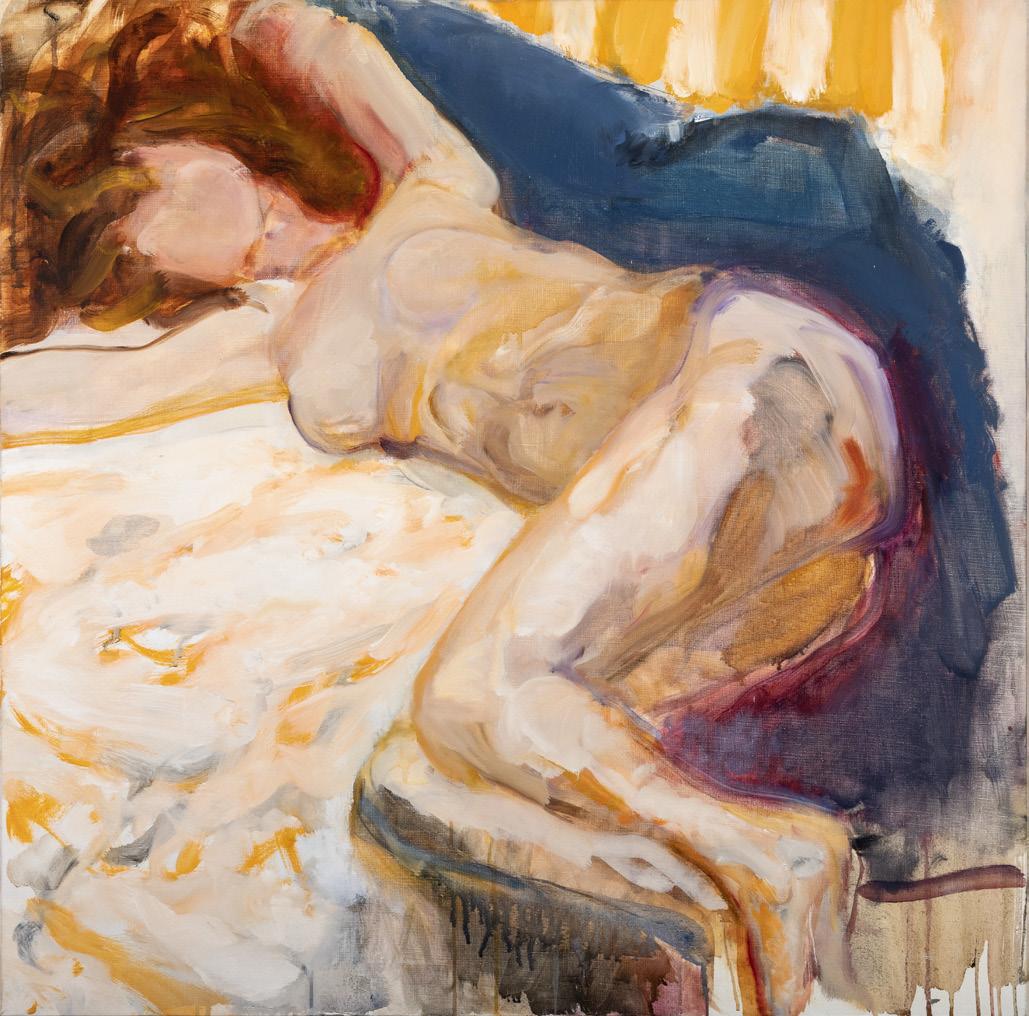
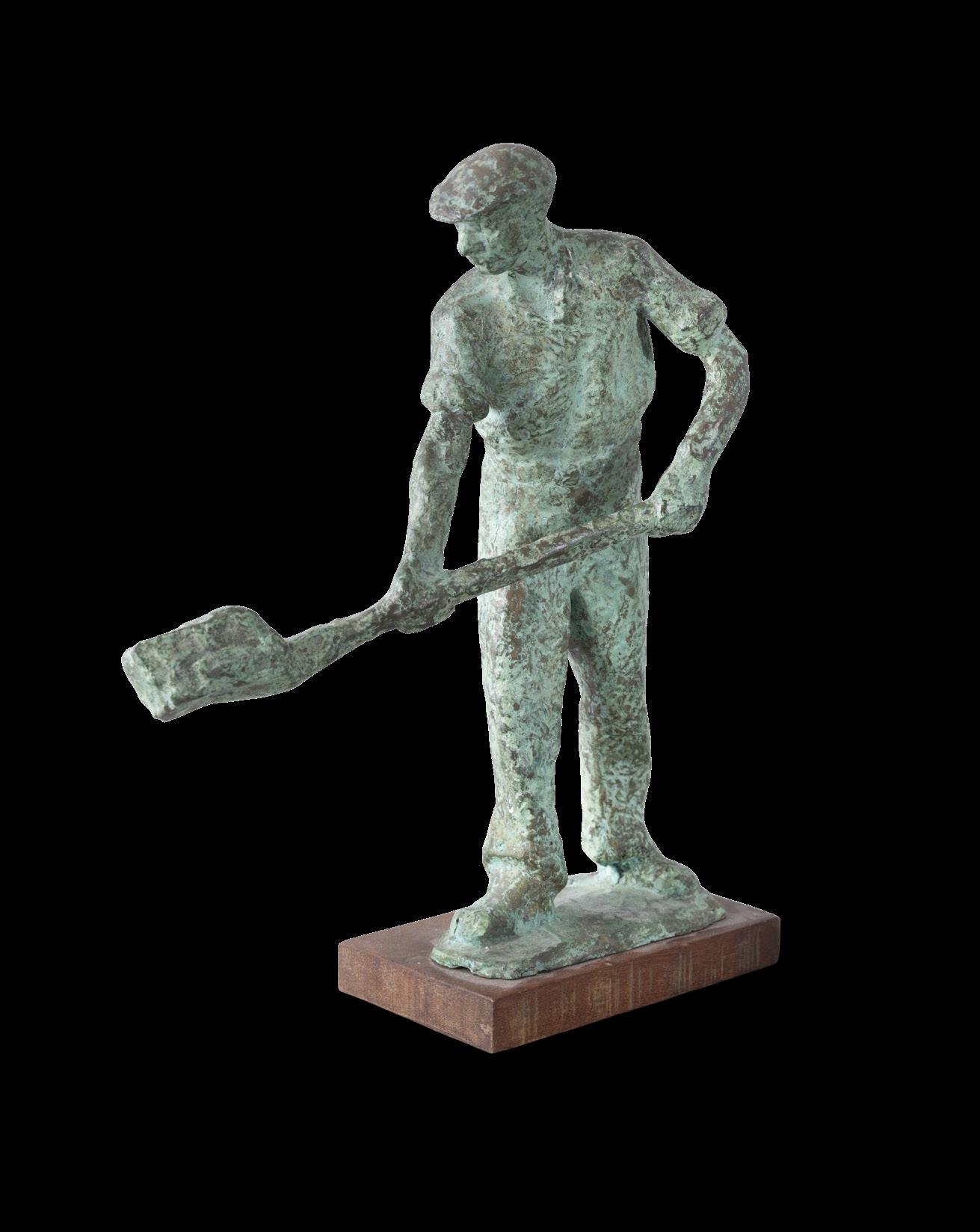
Est 1887